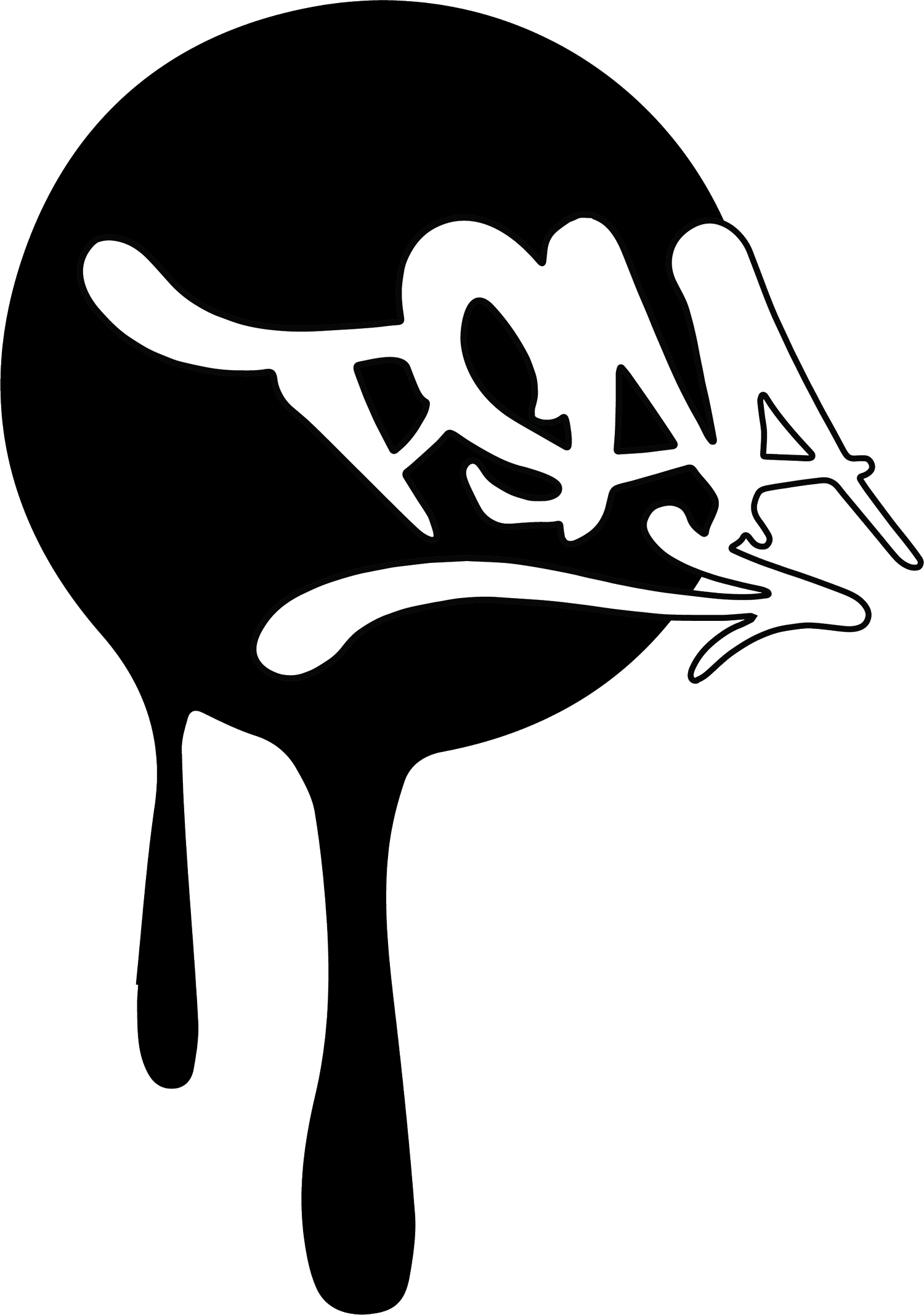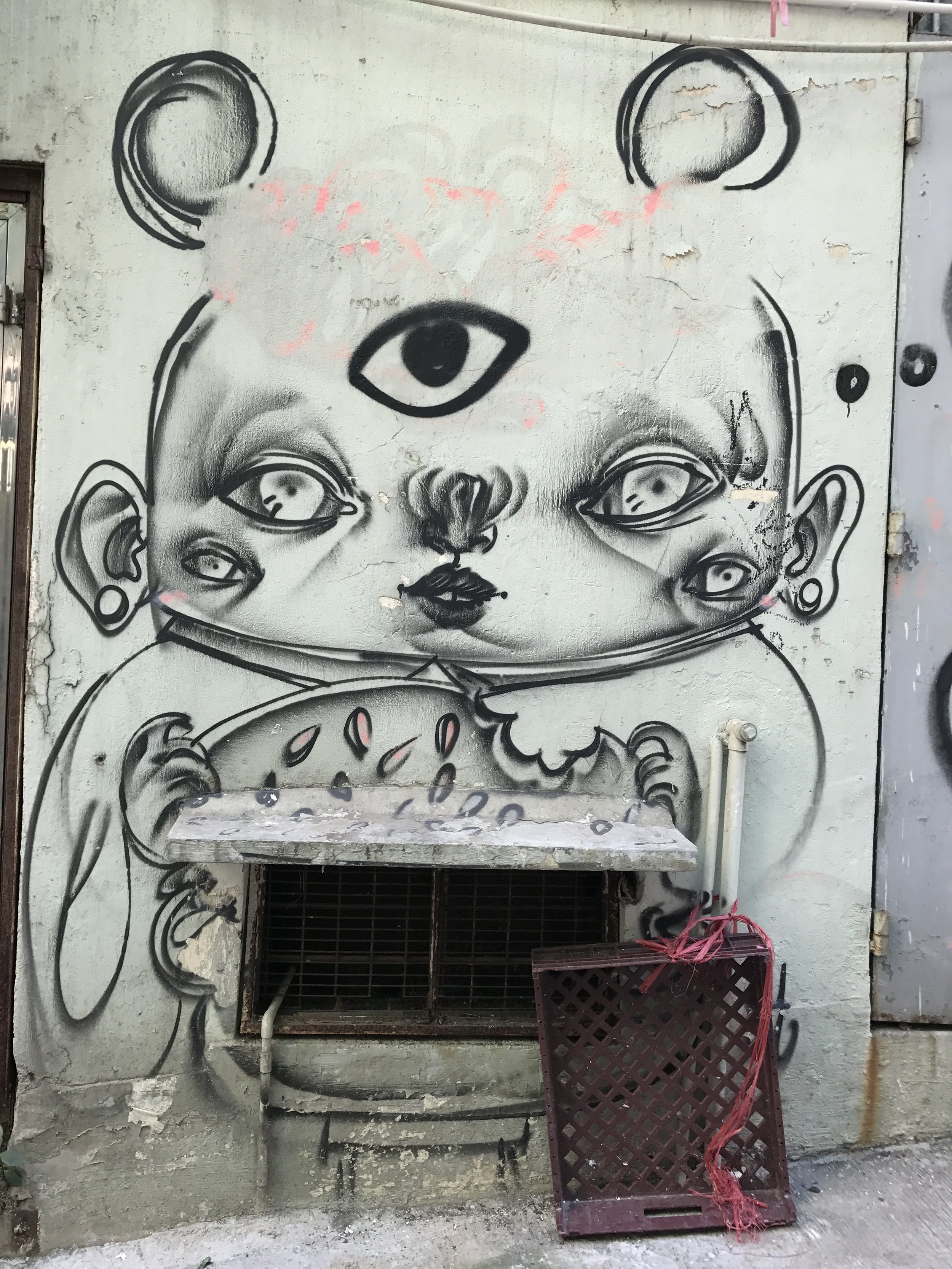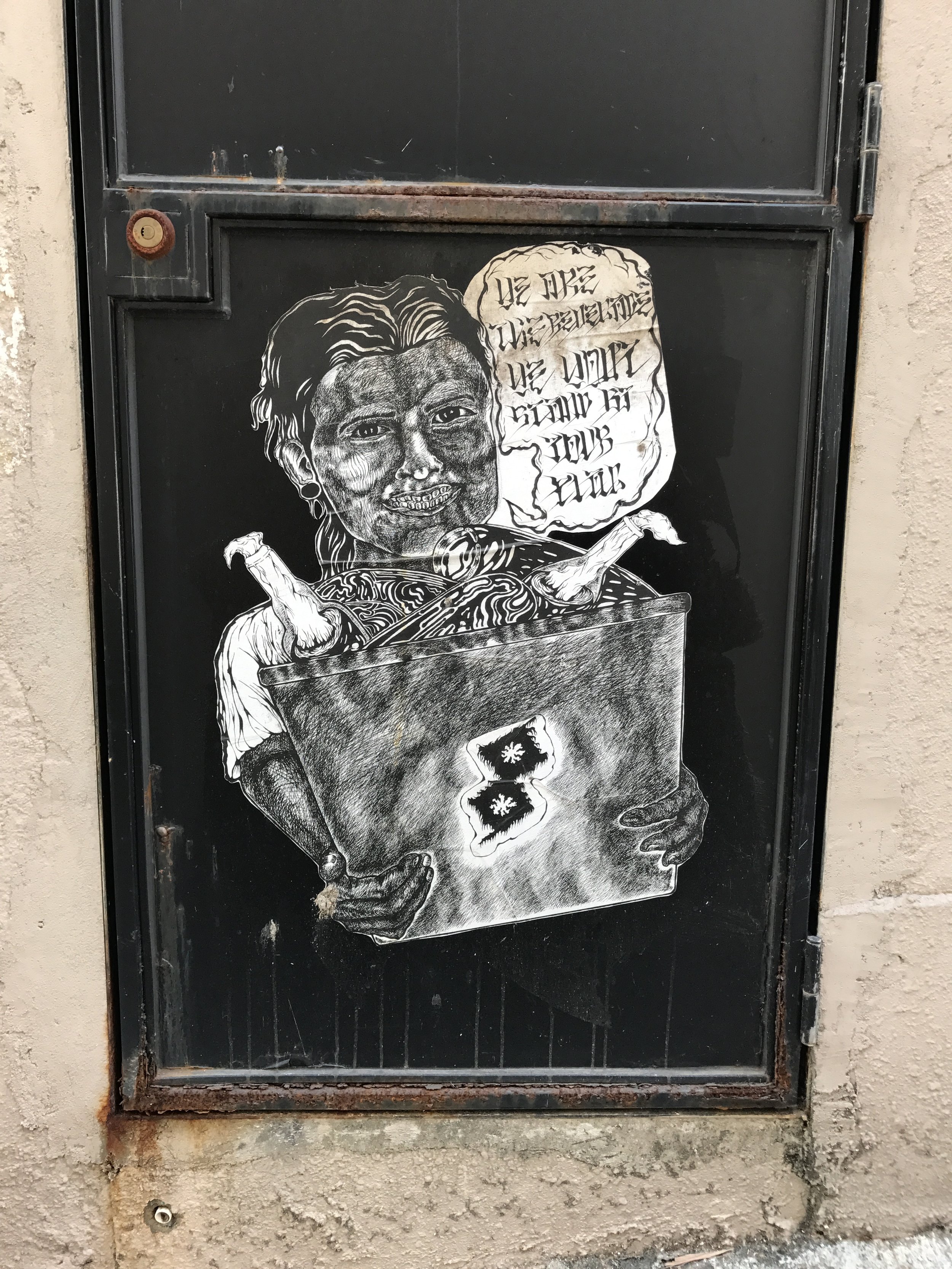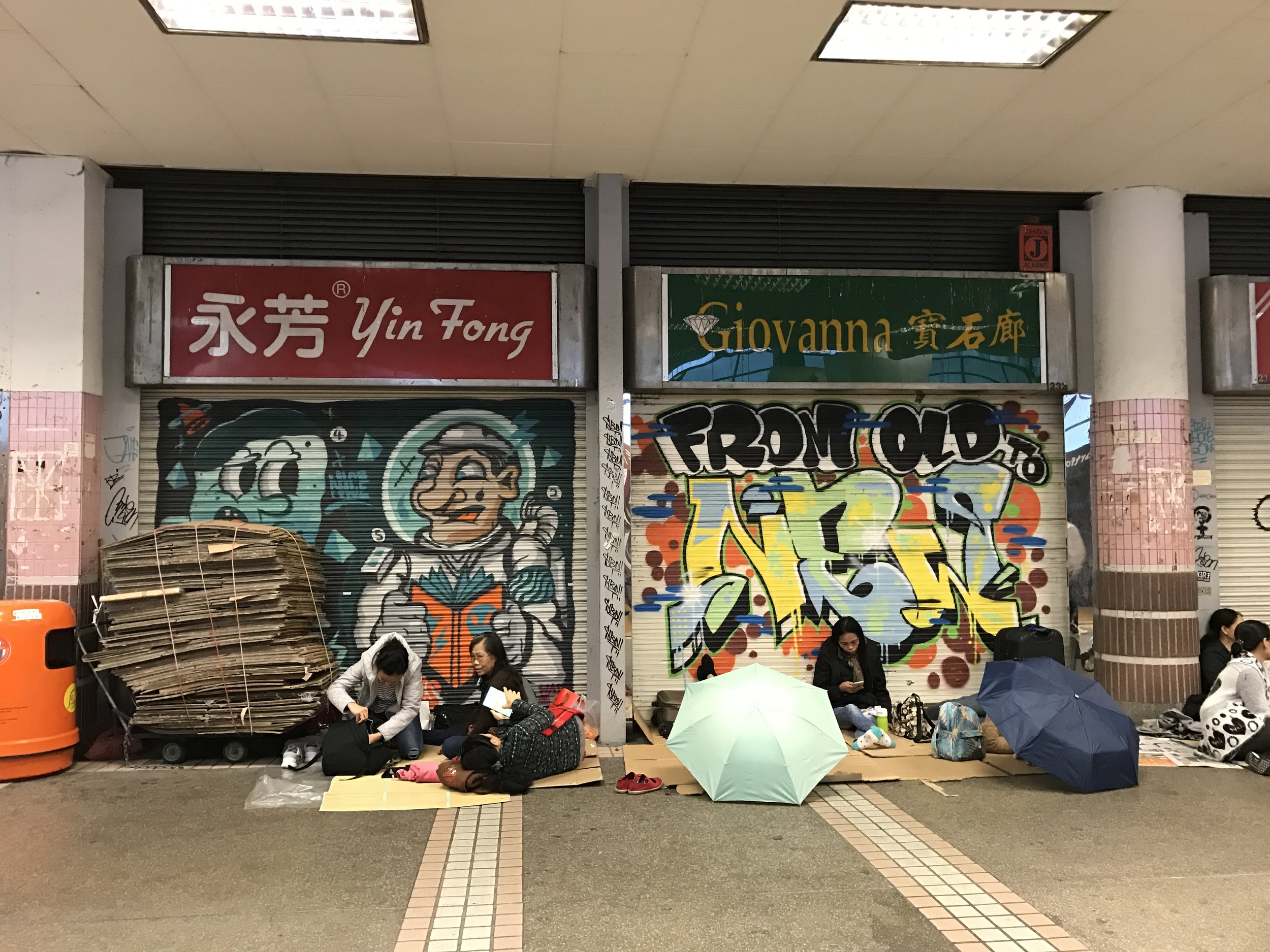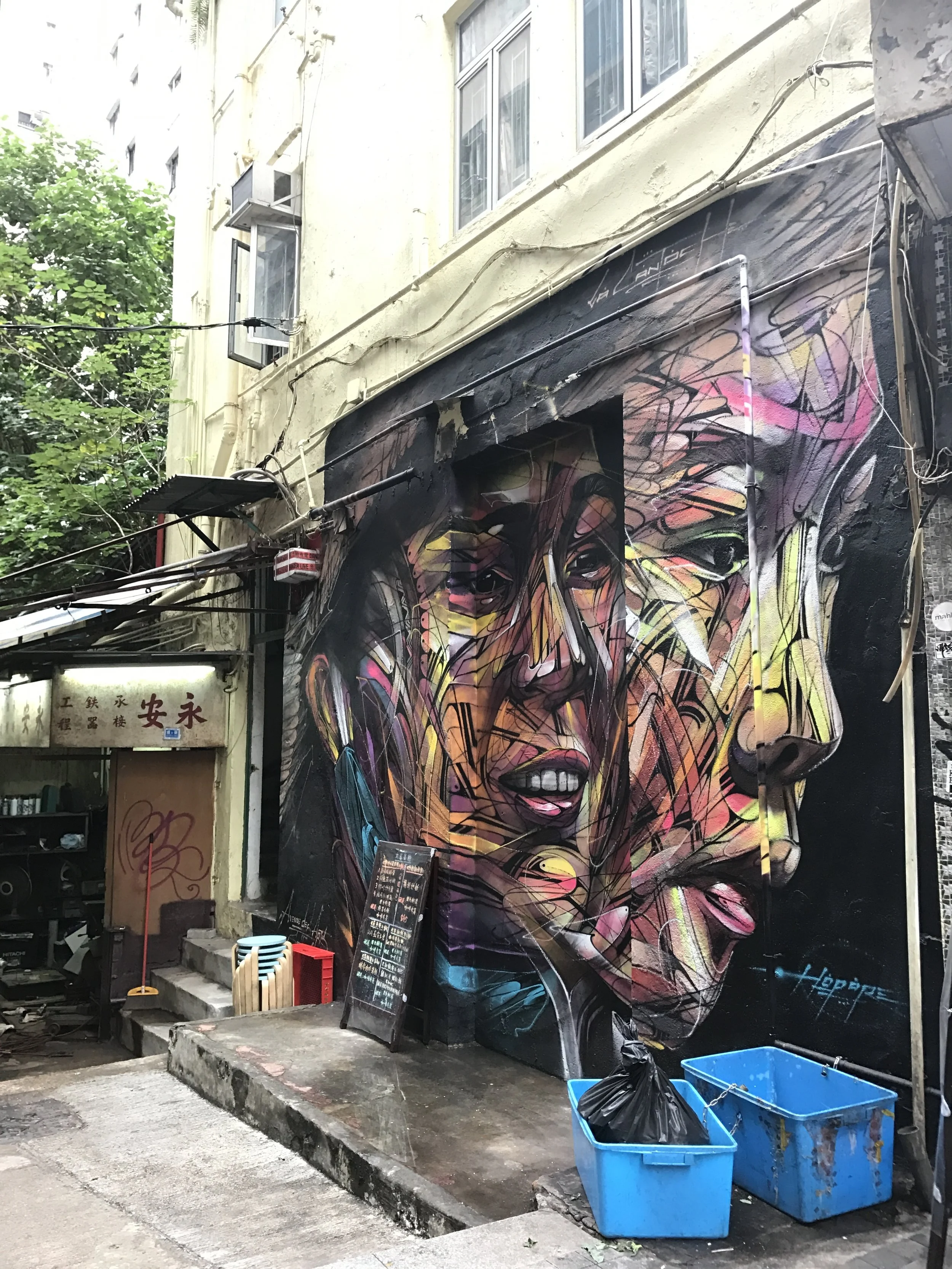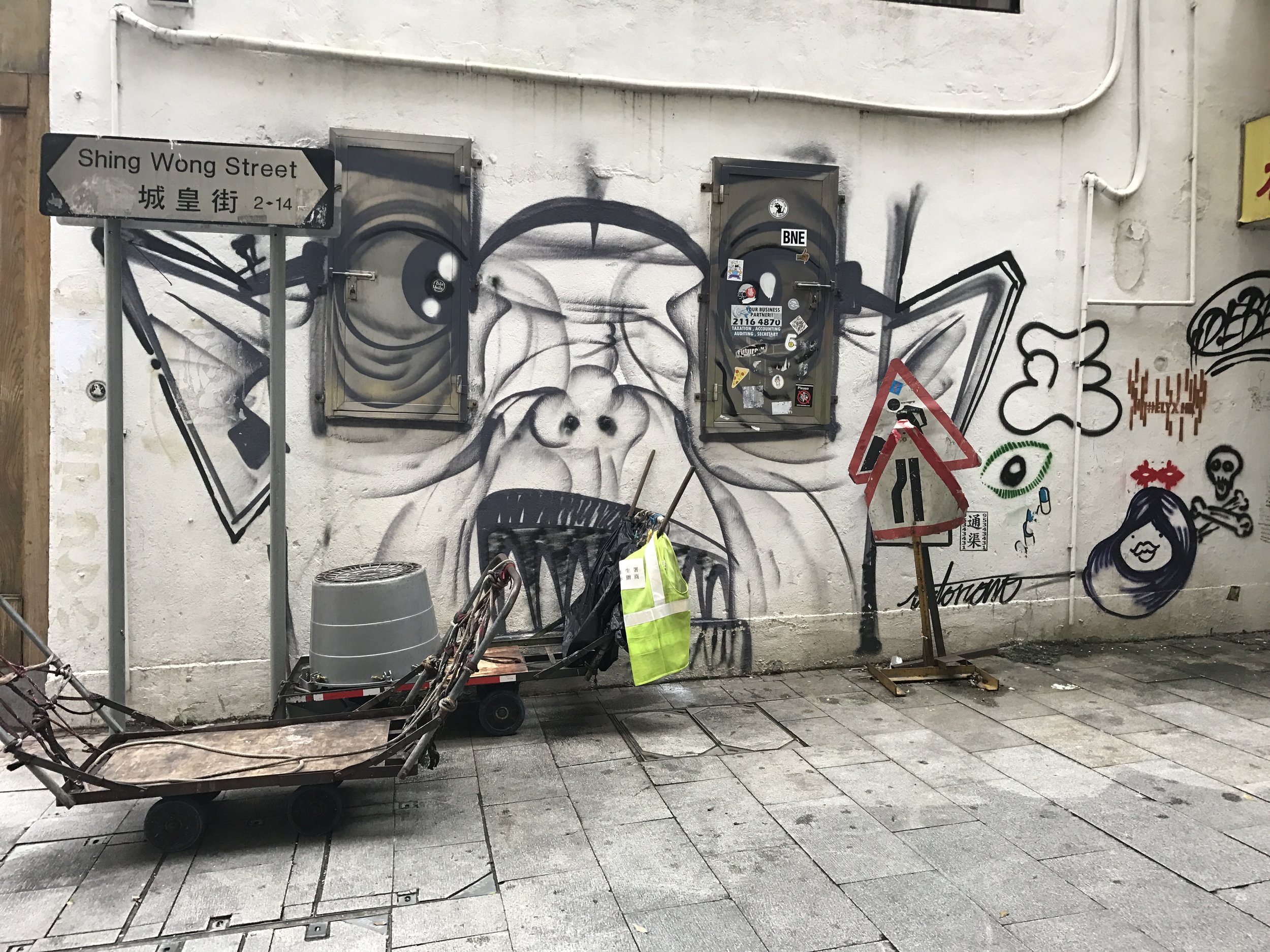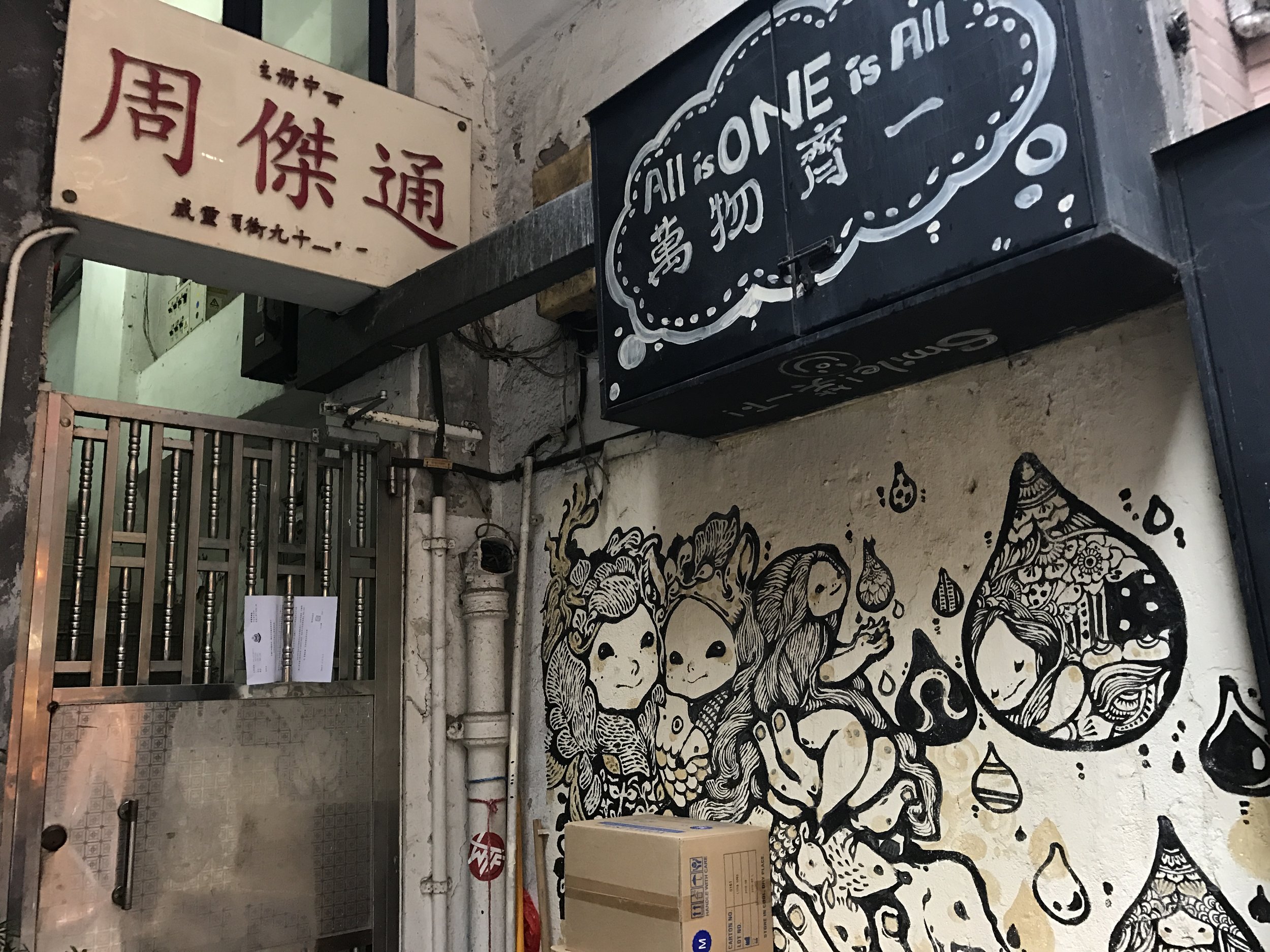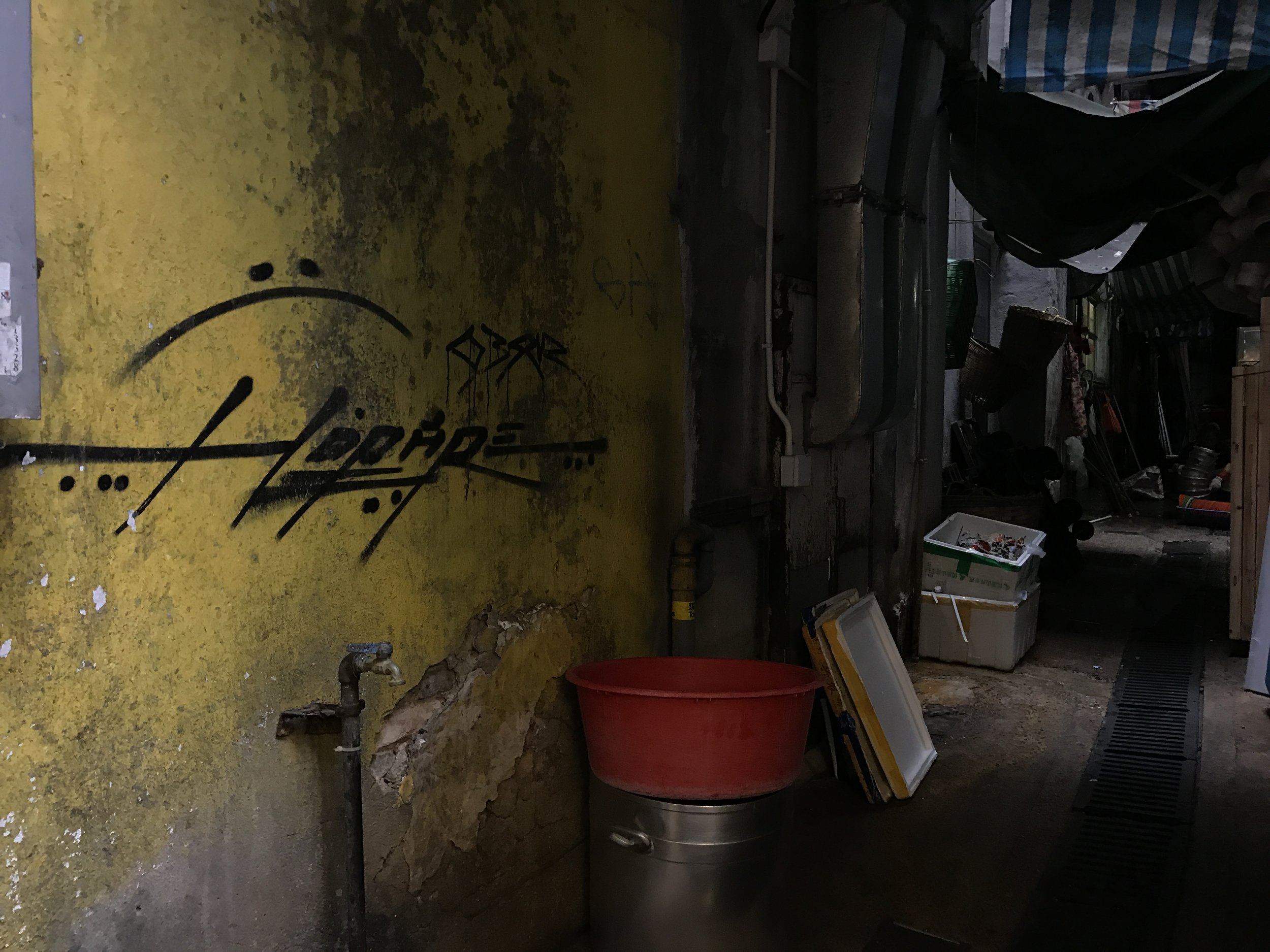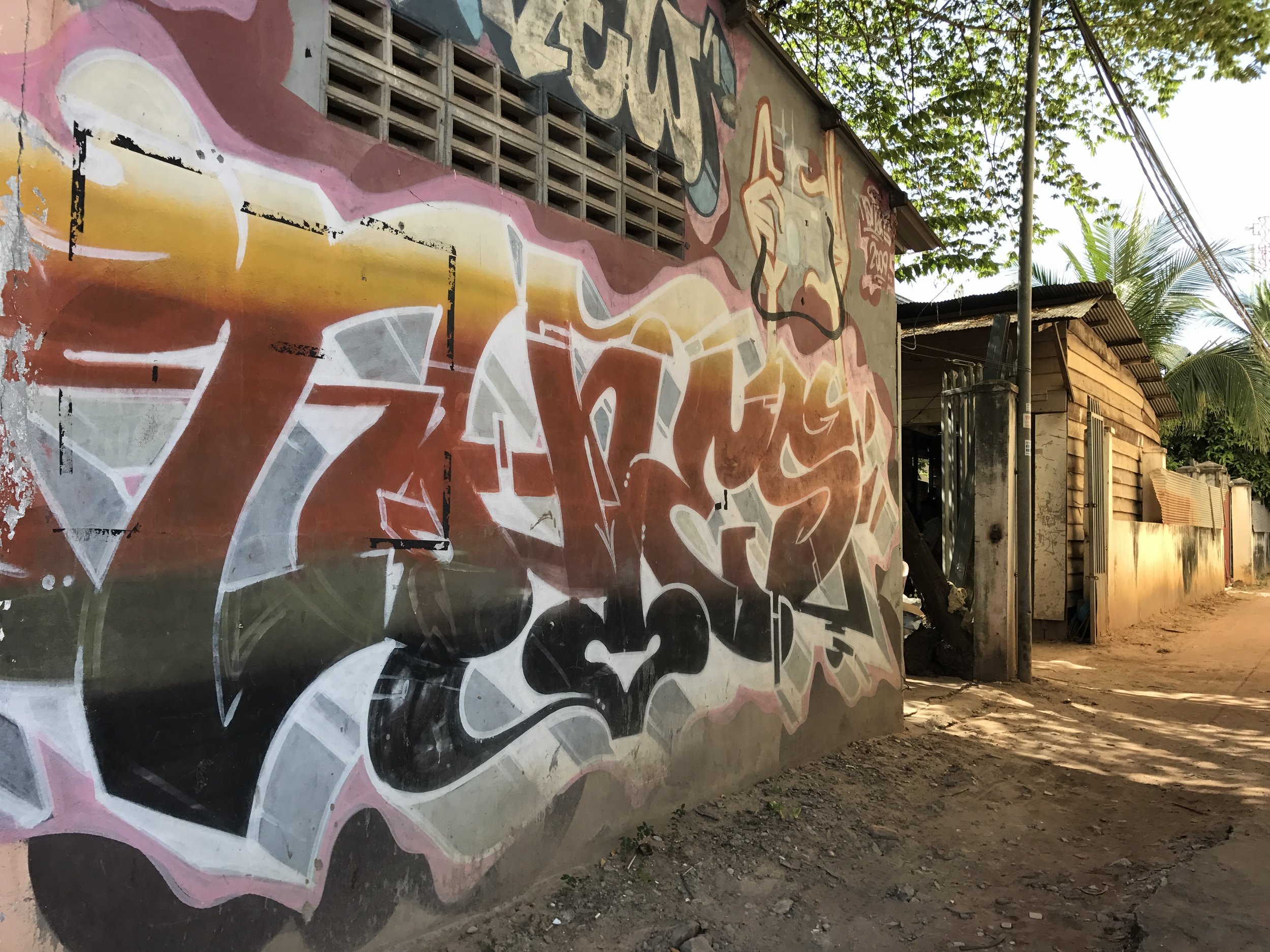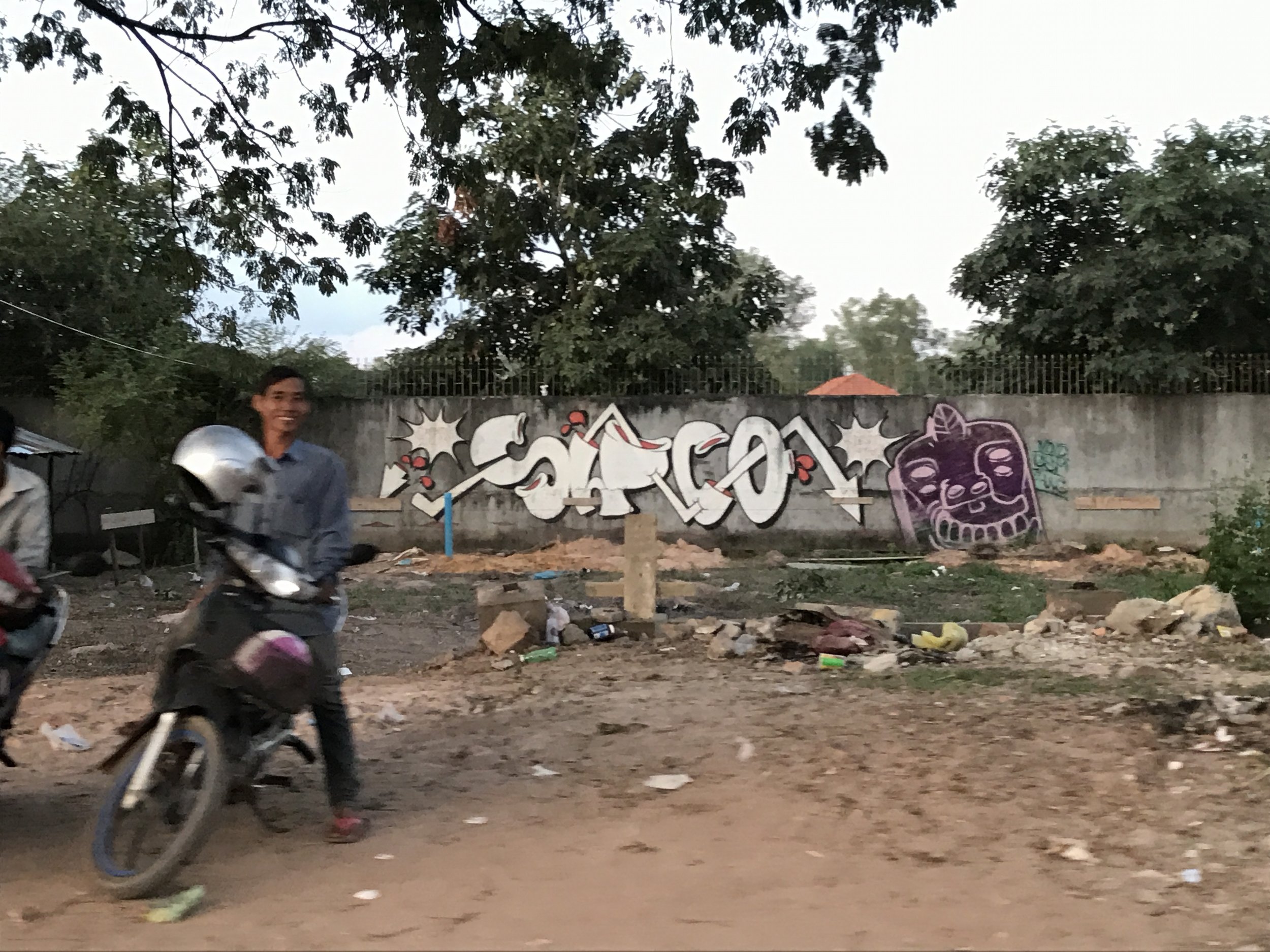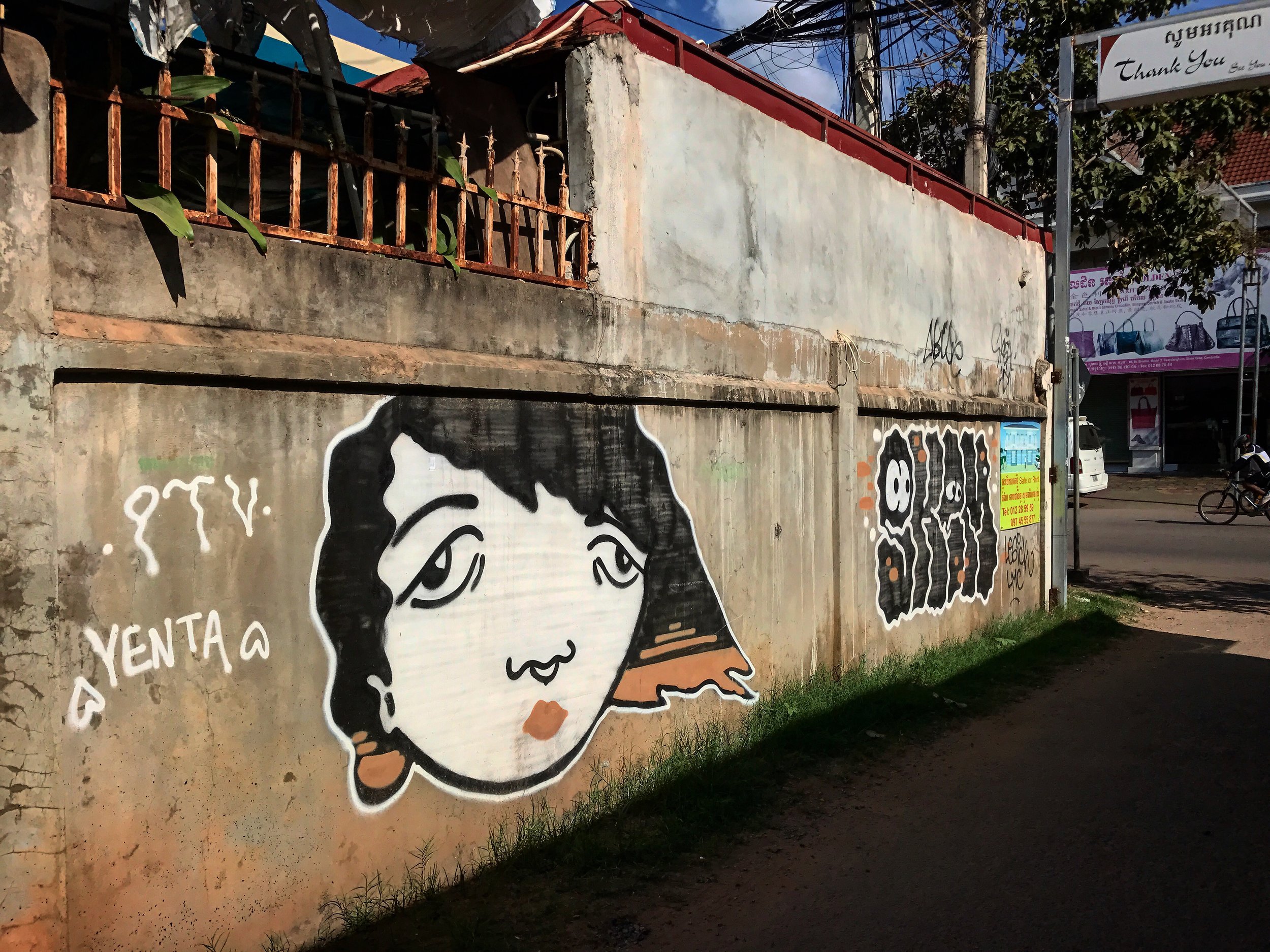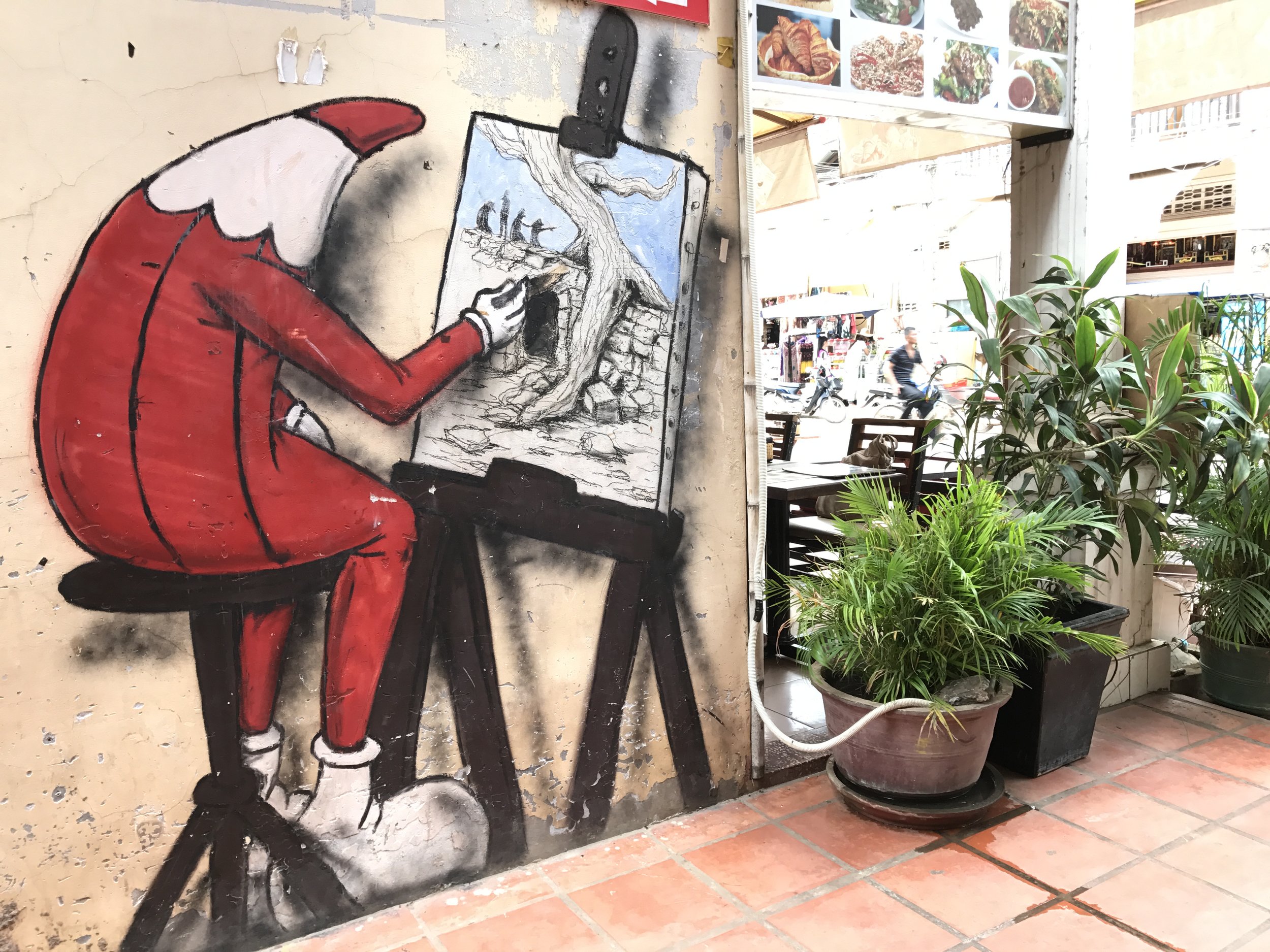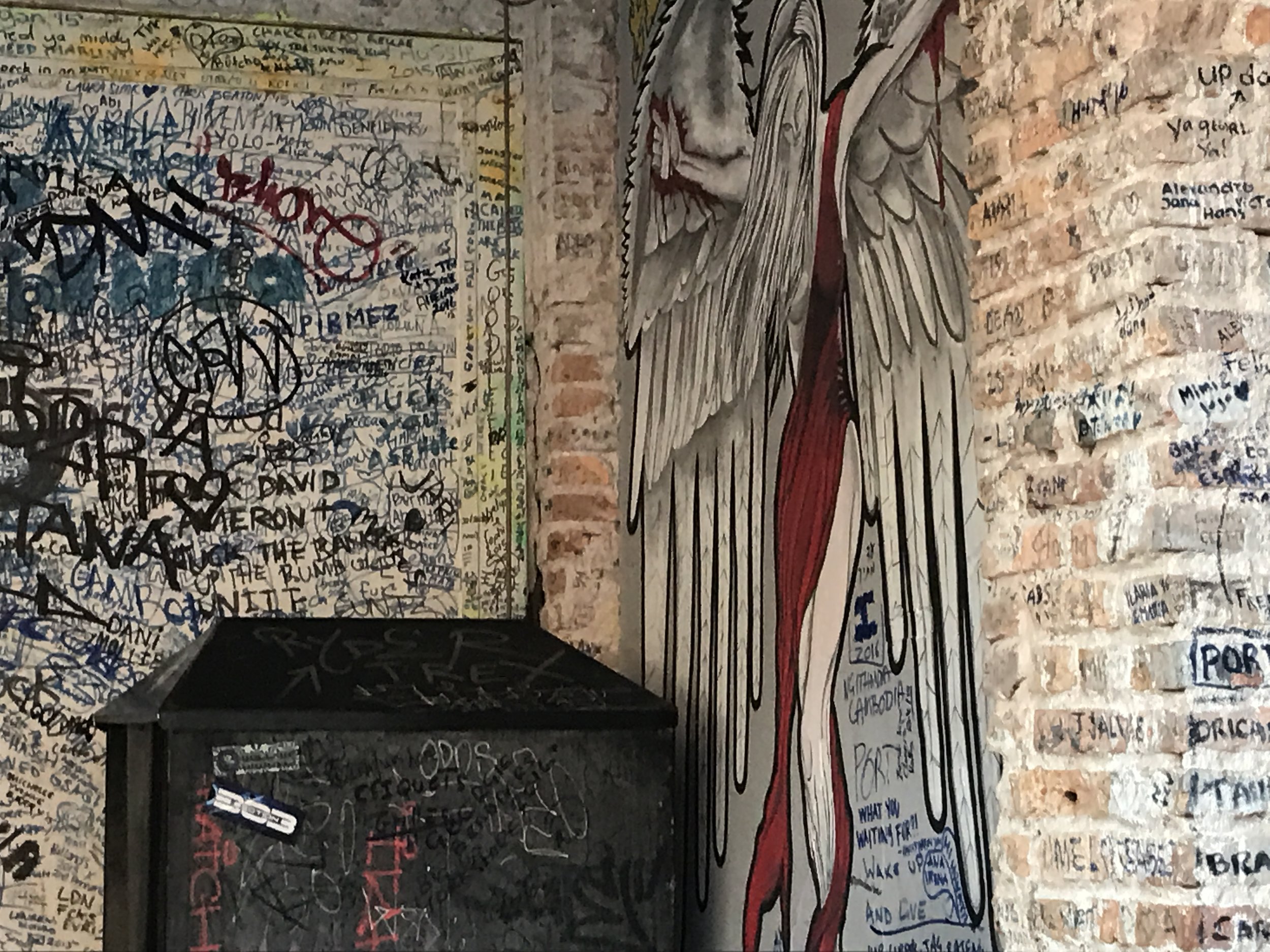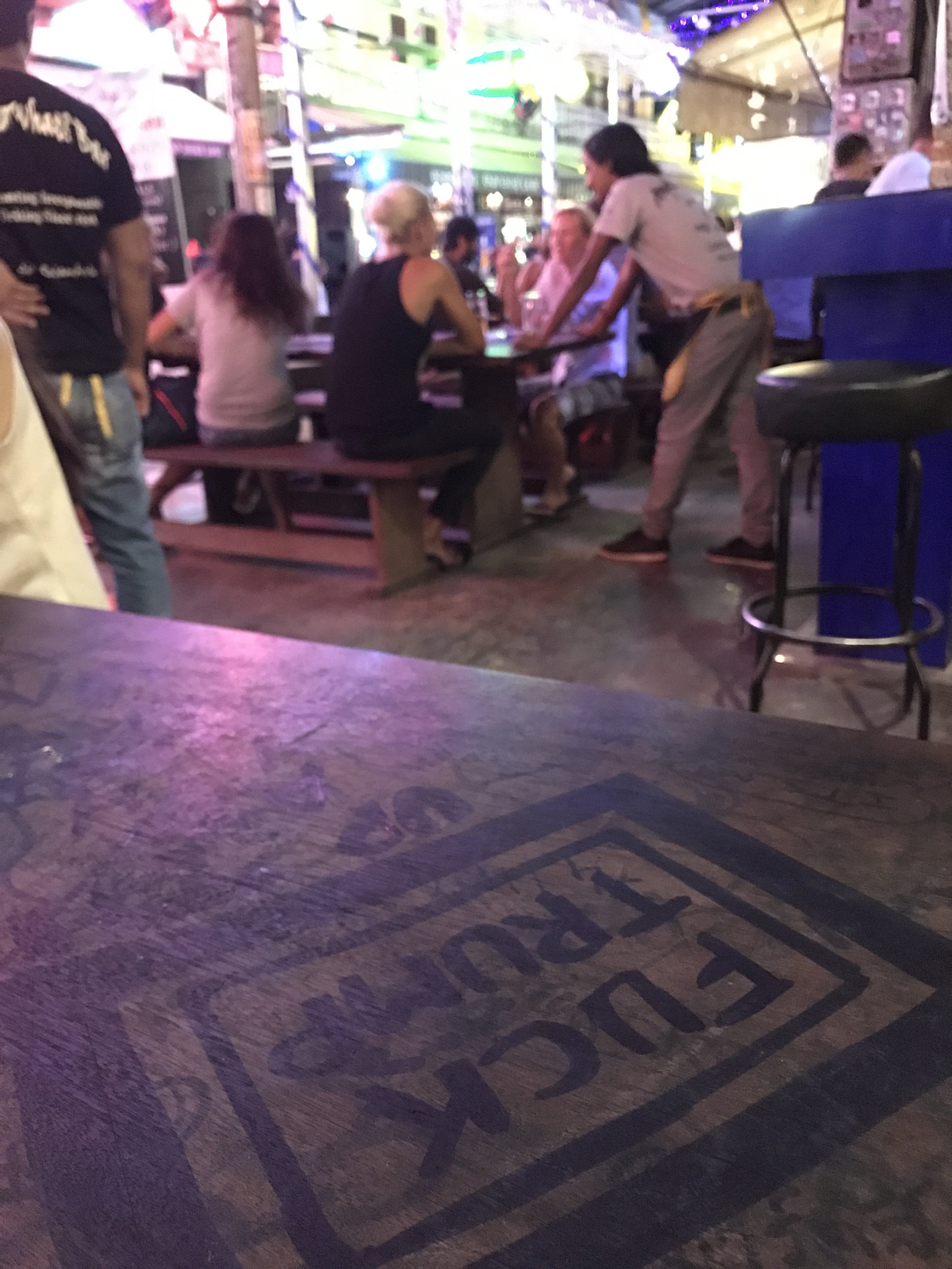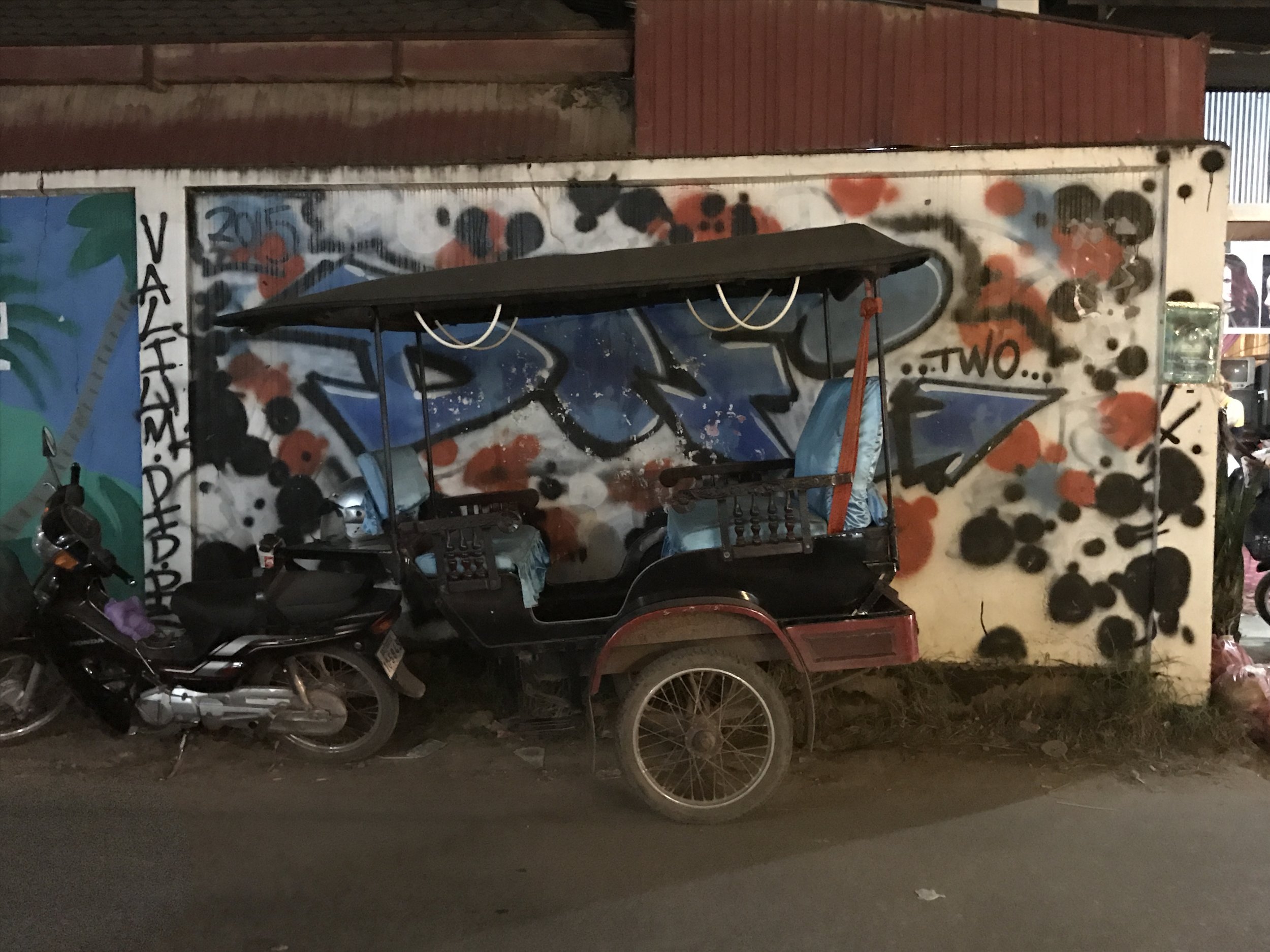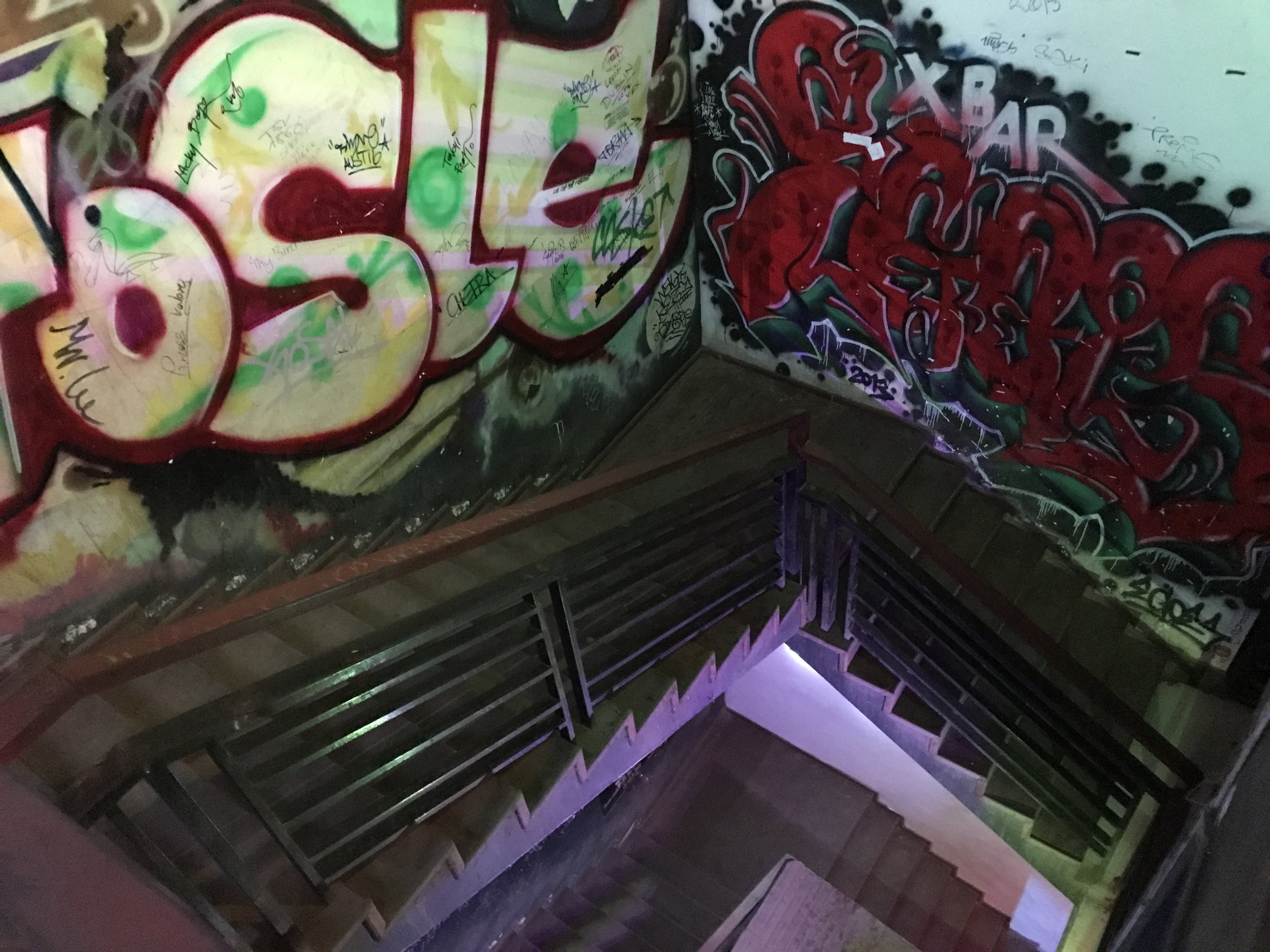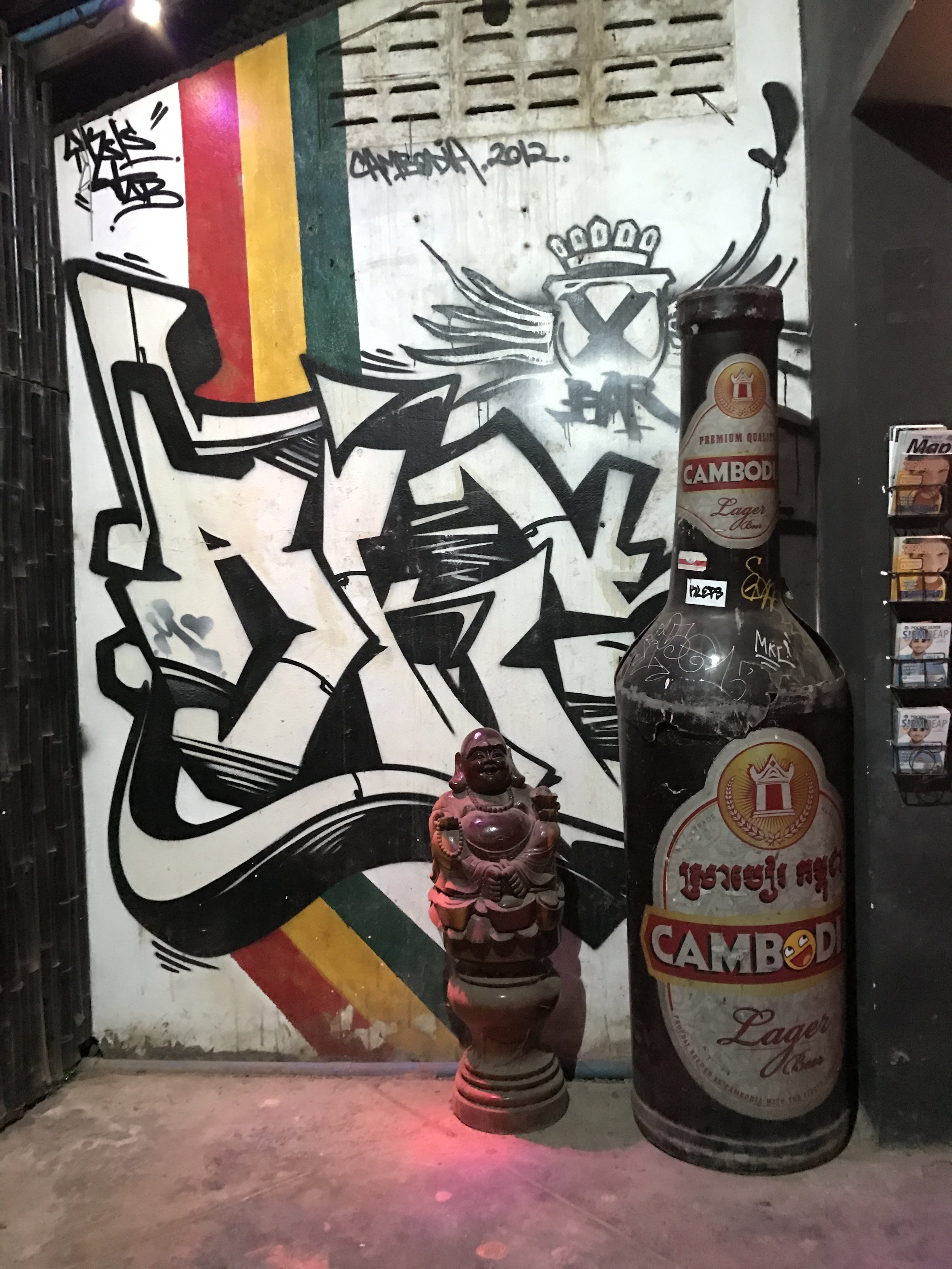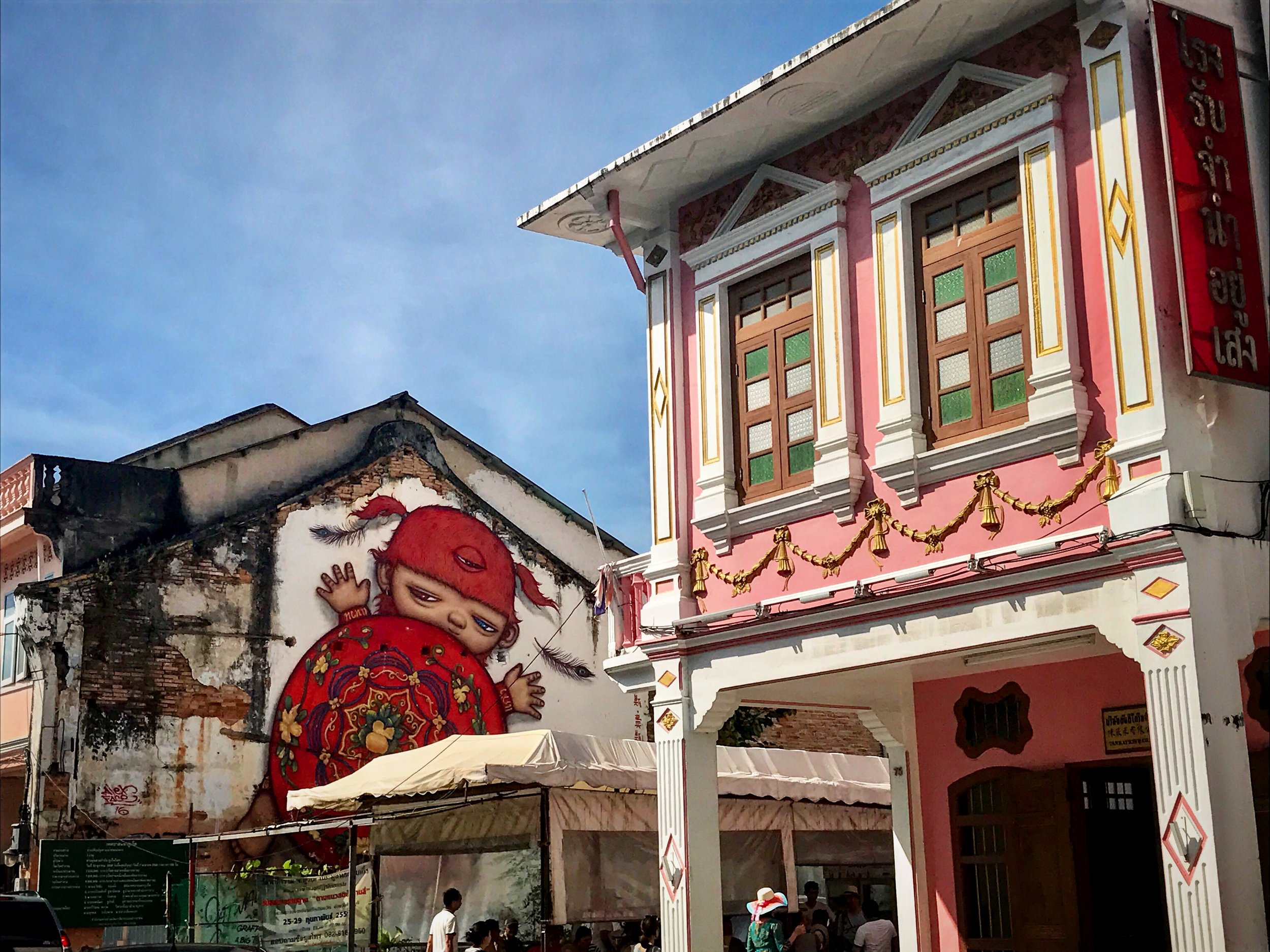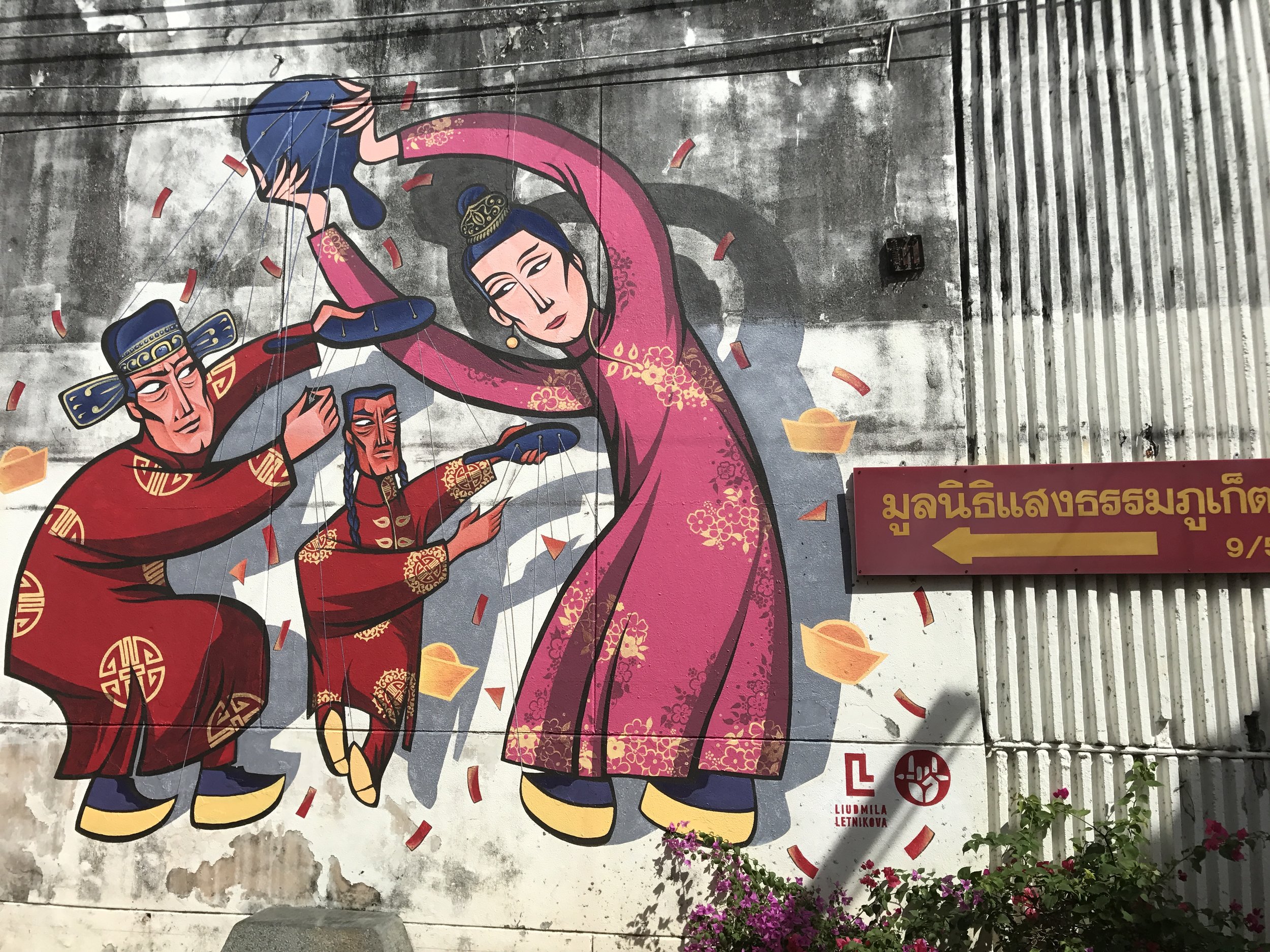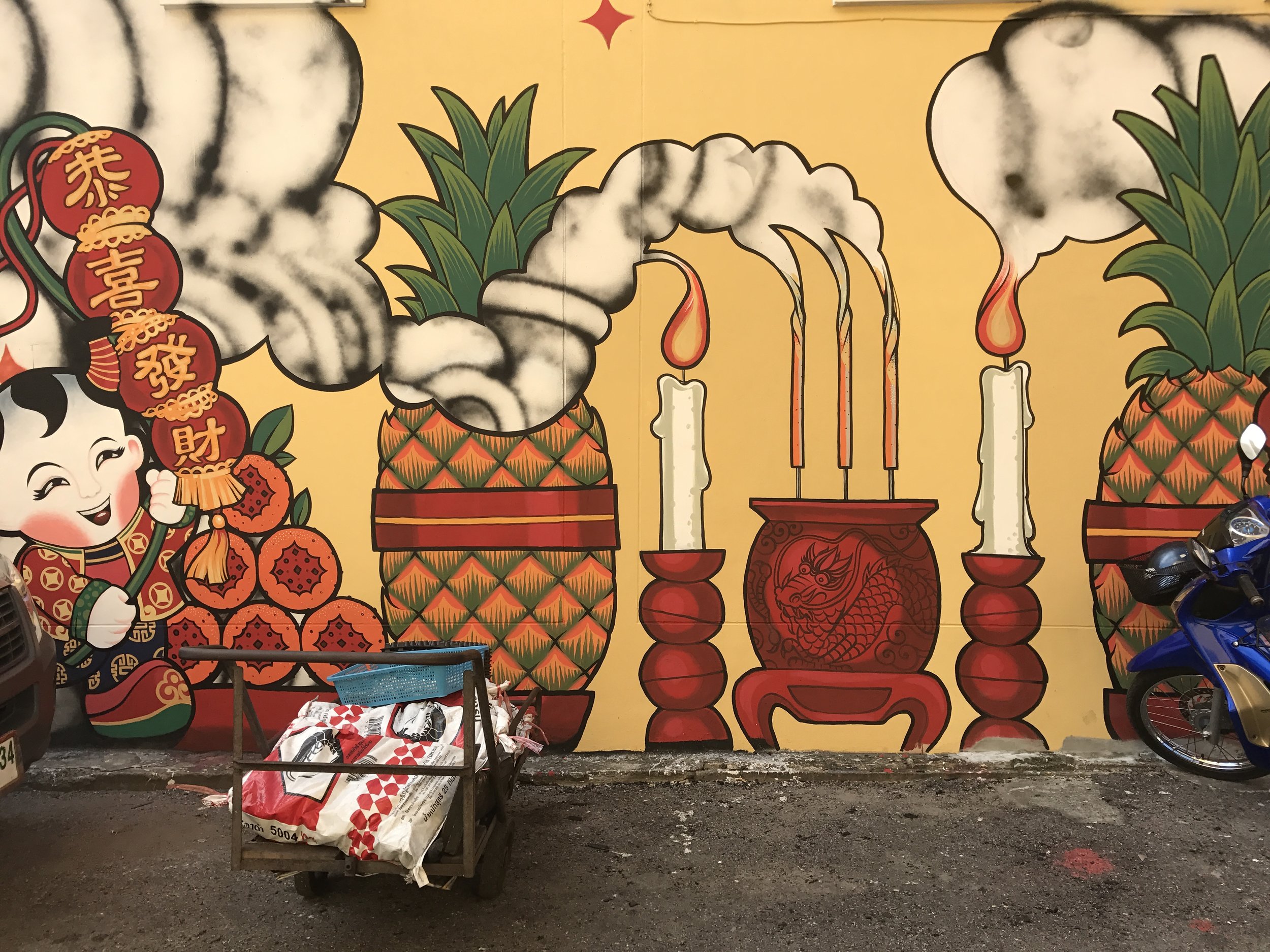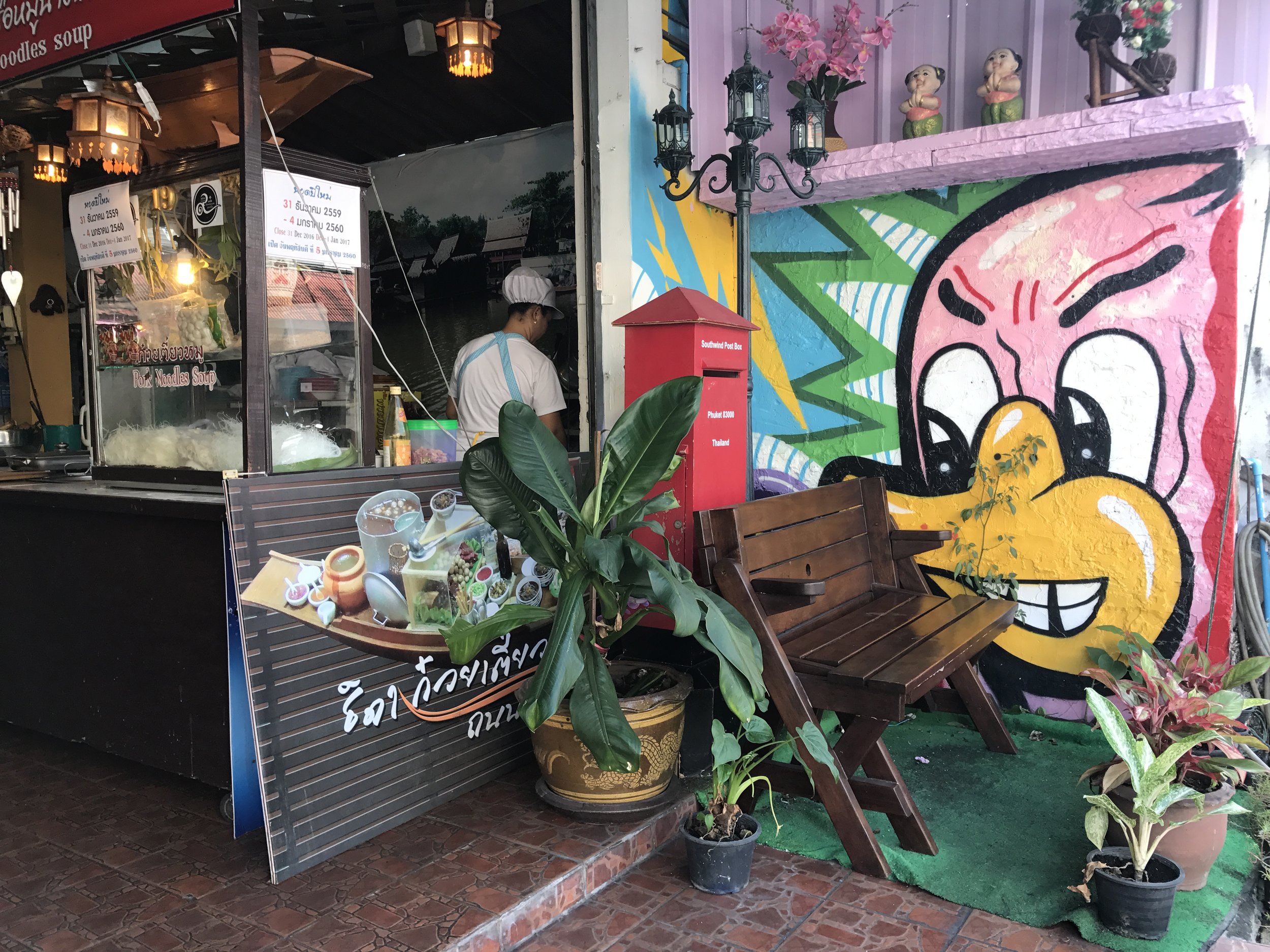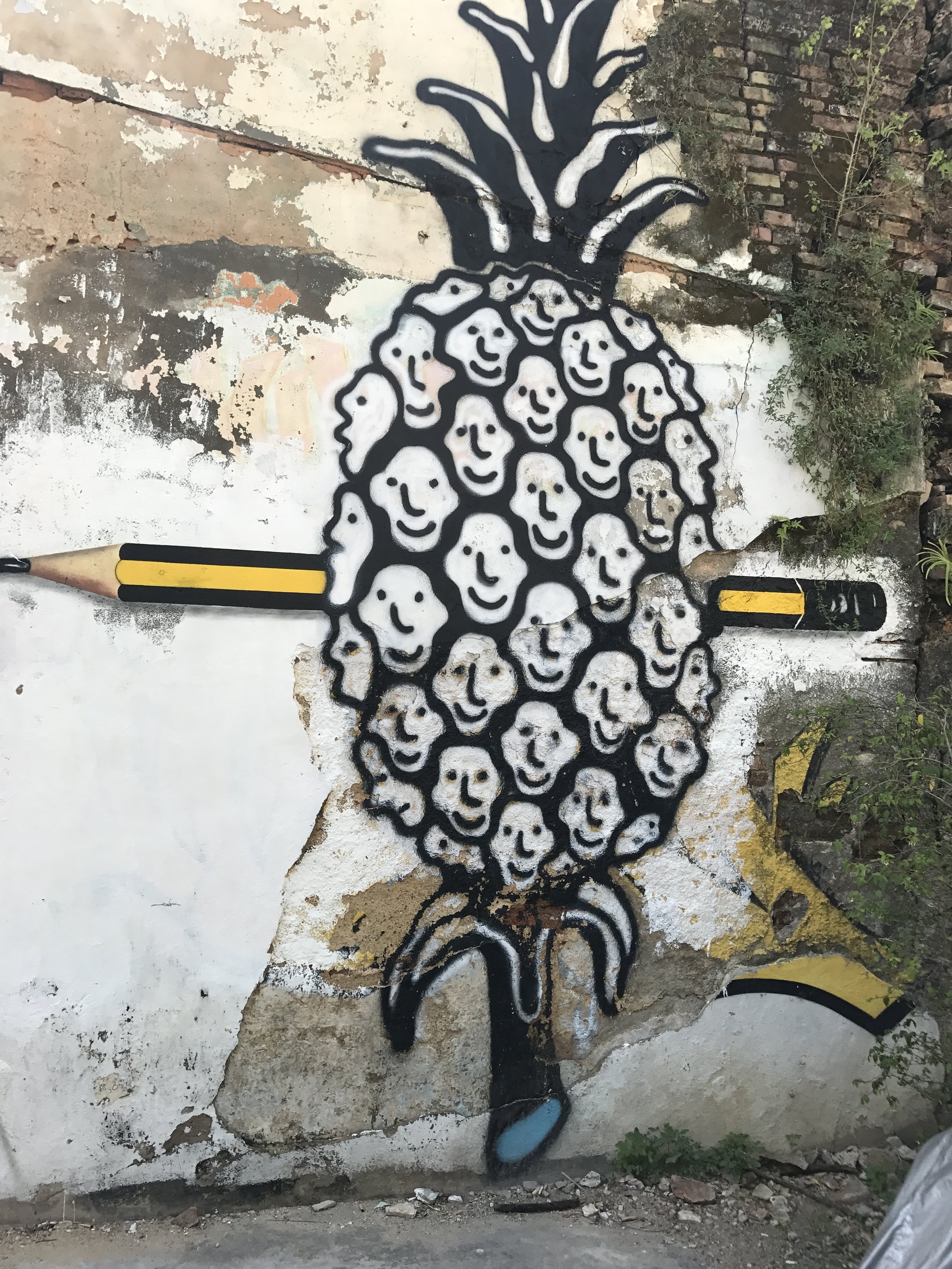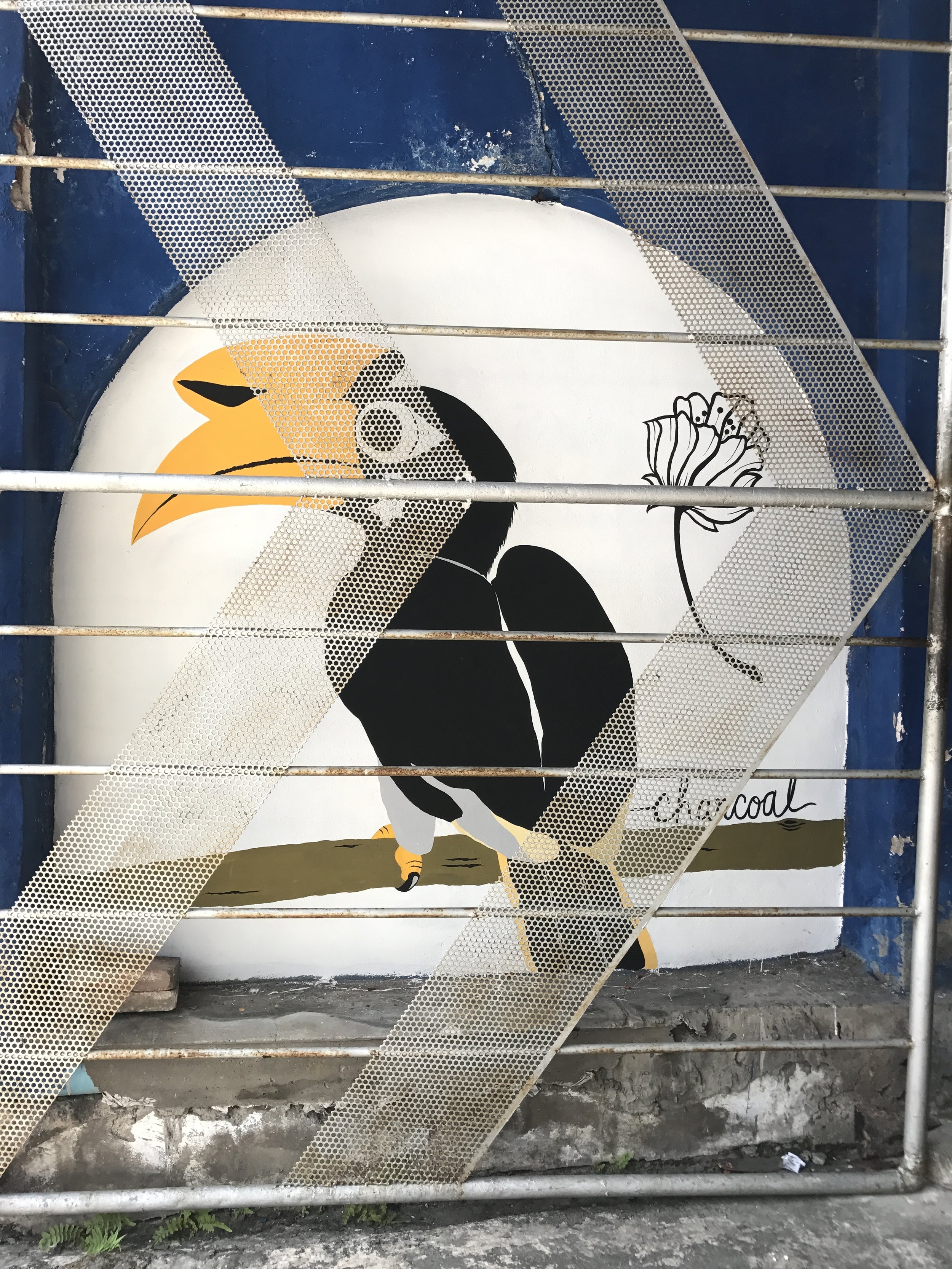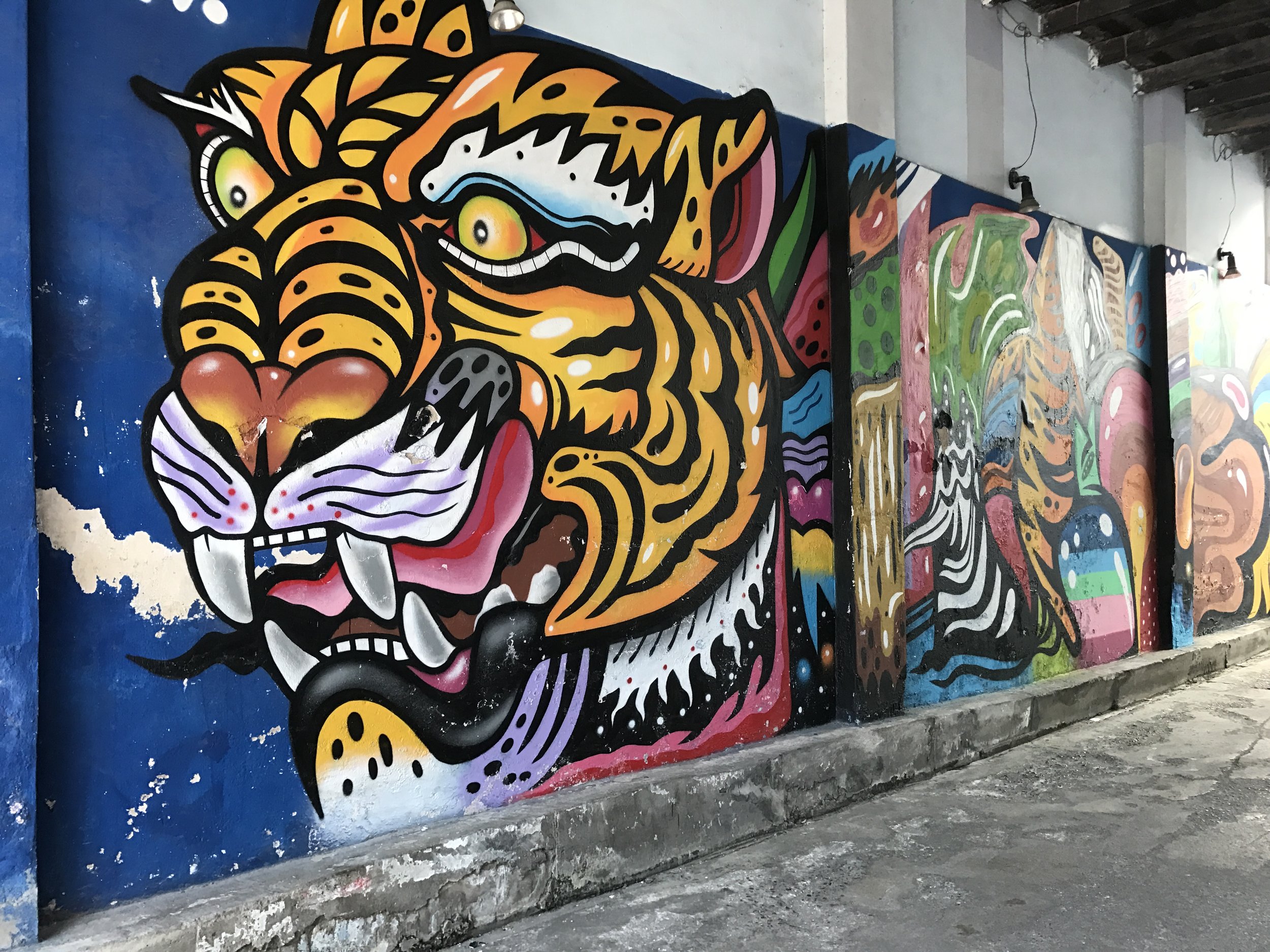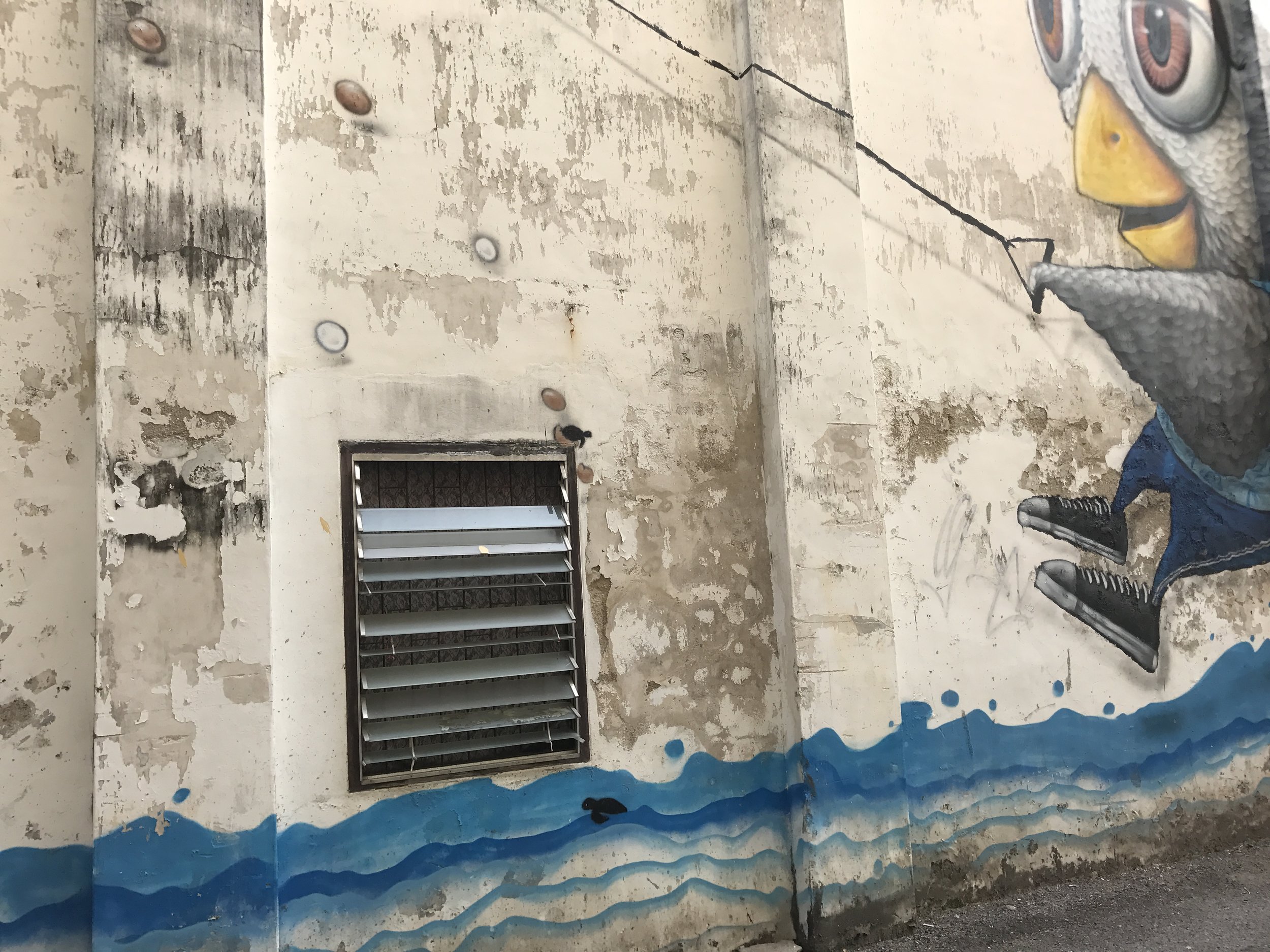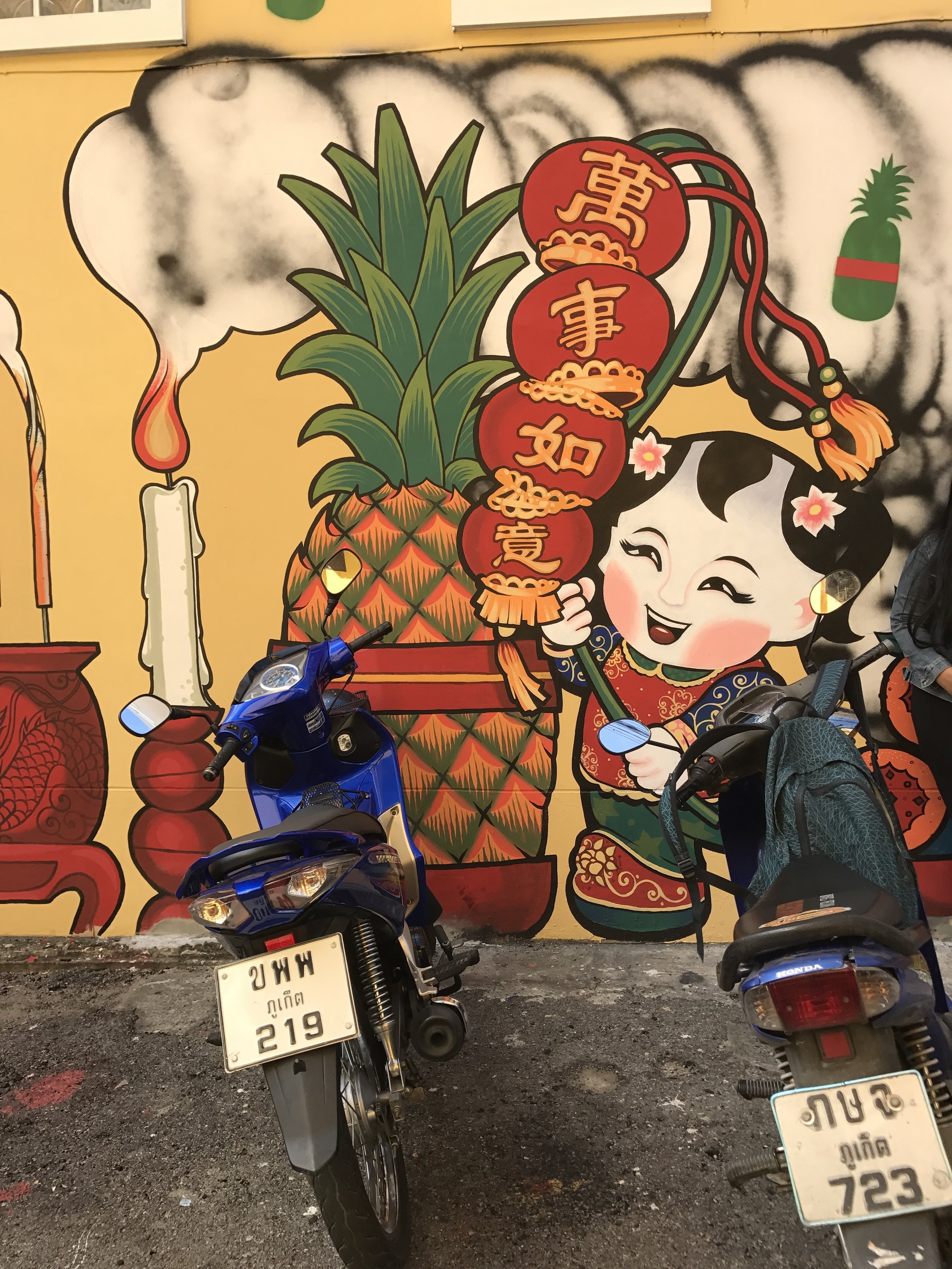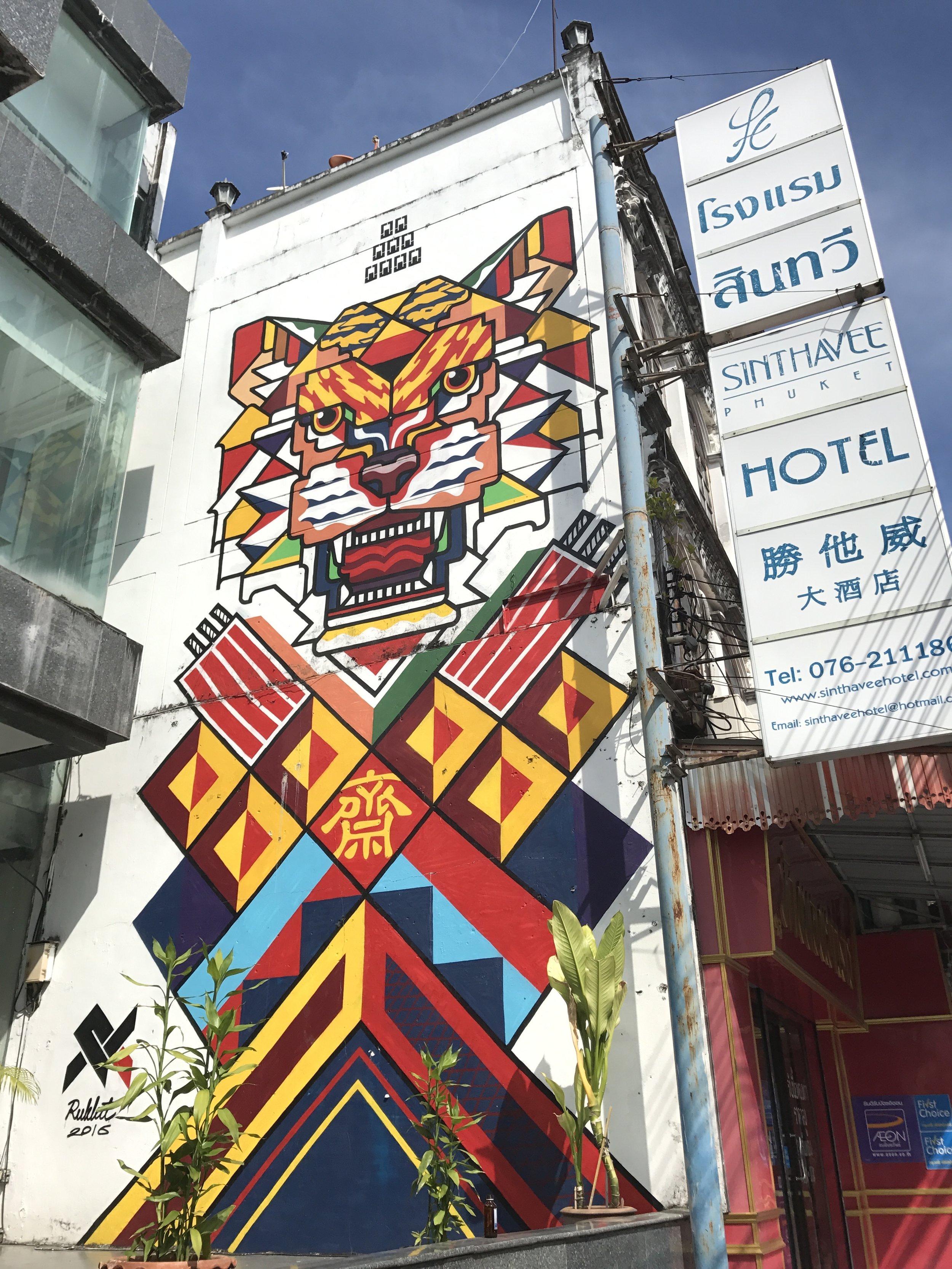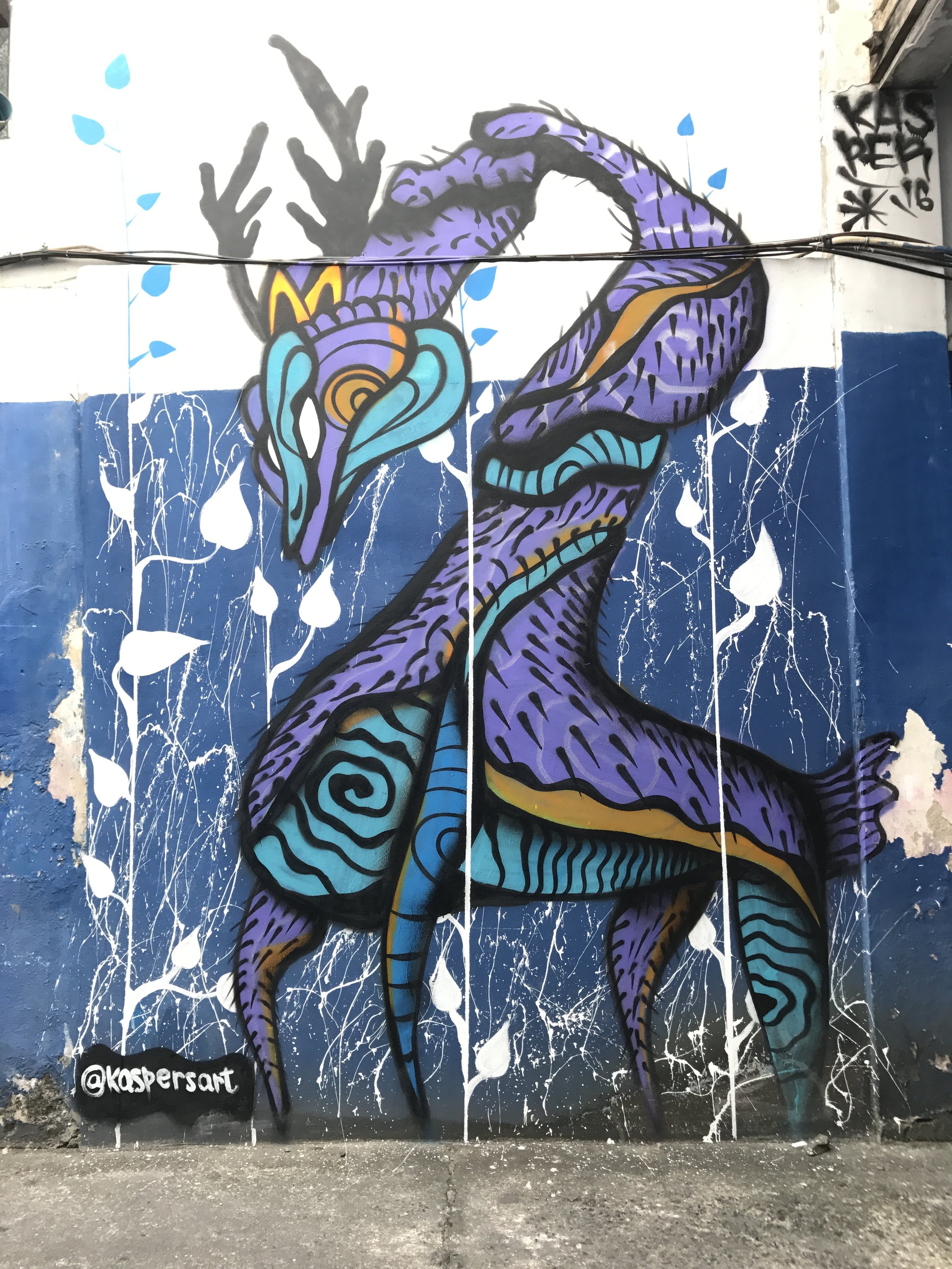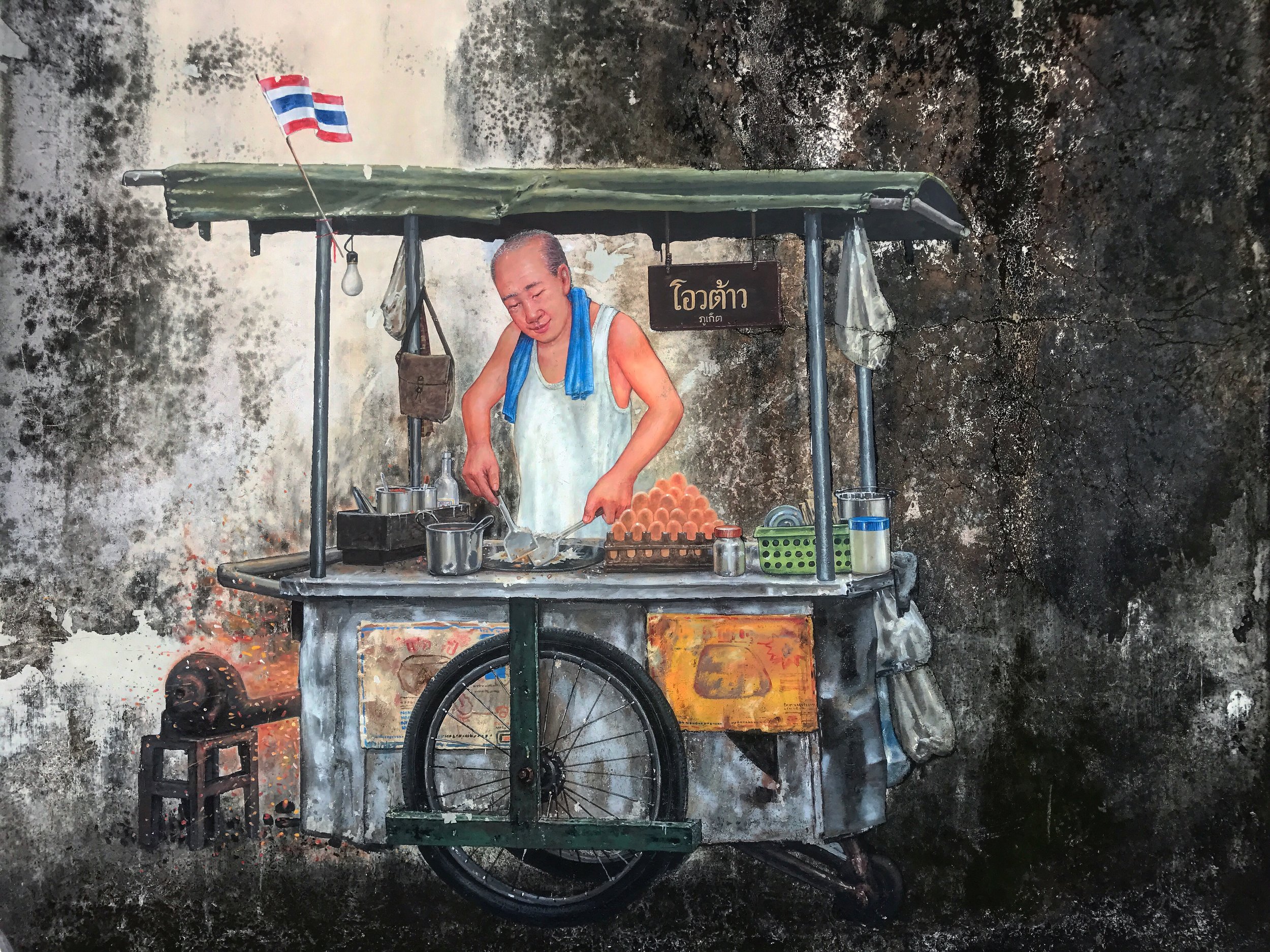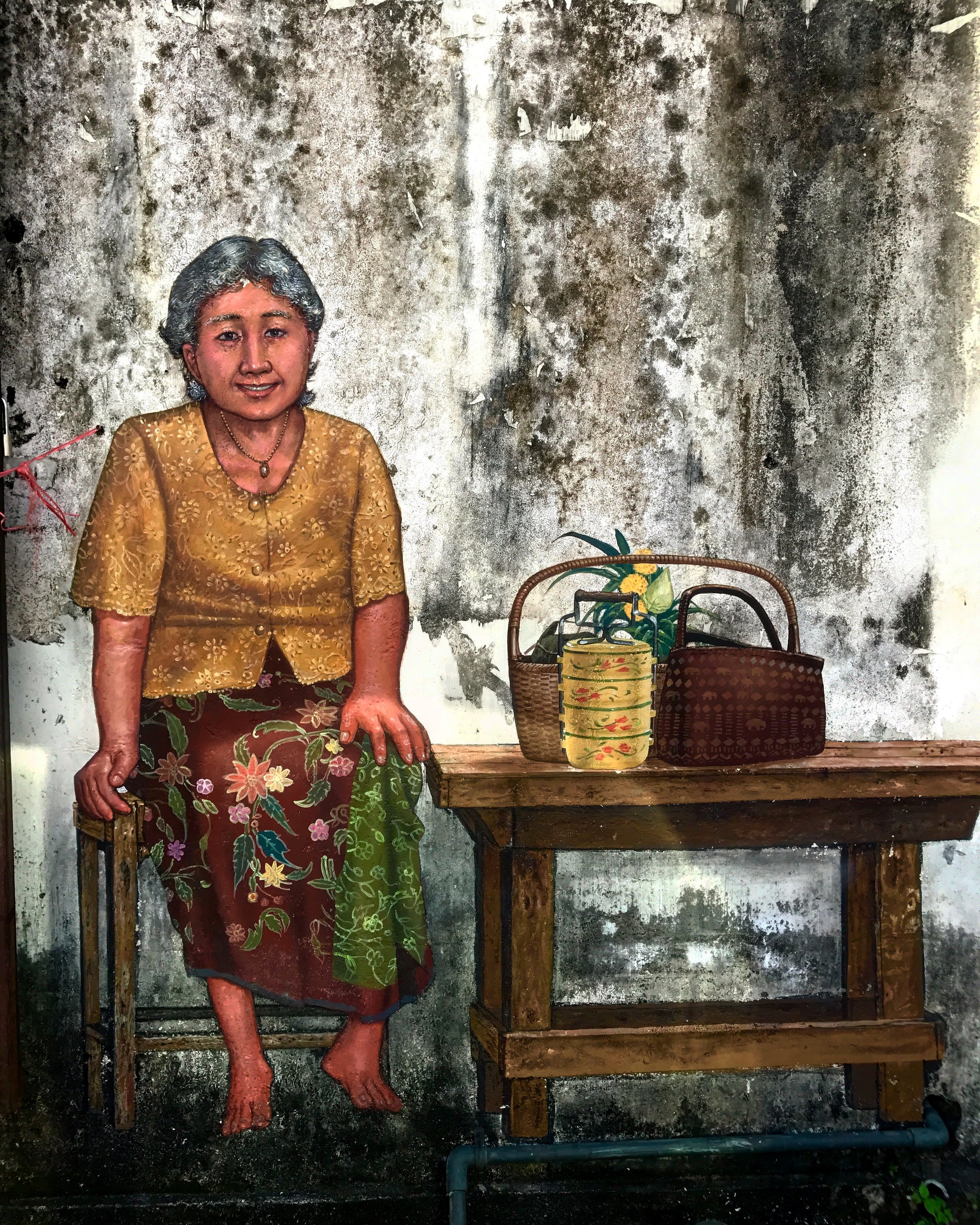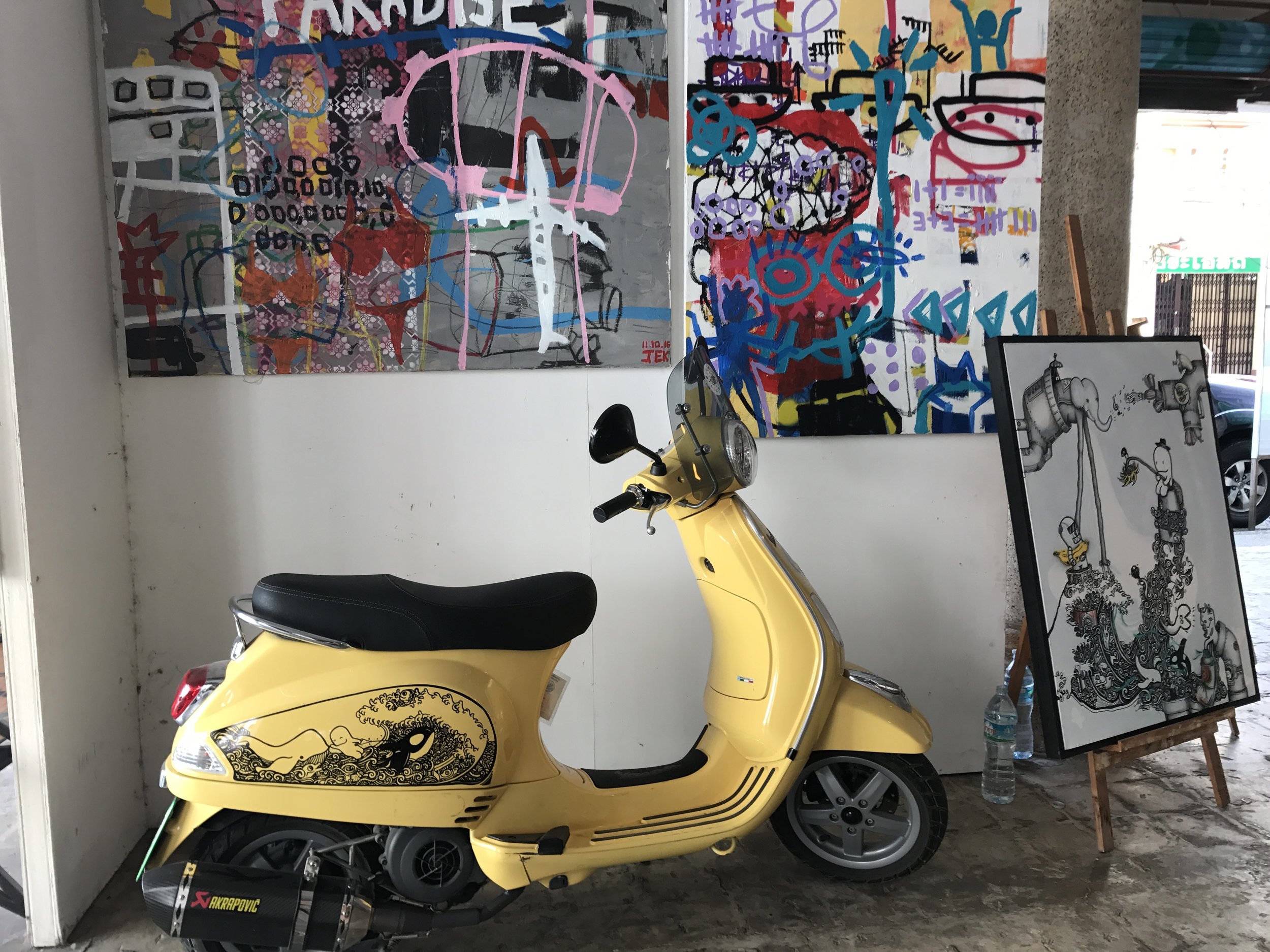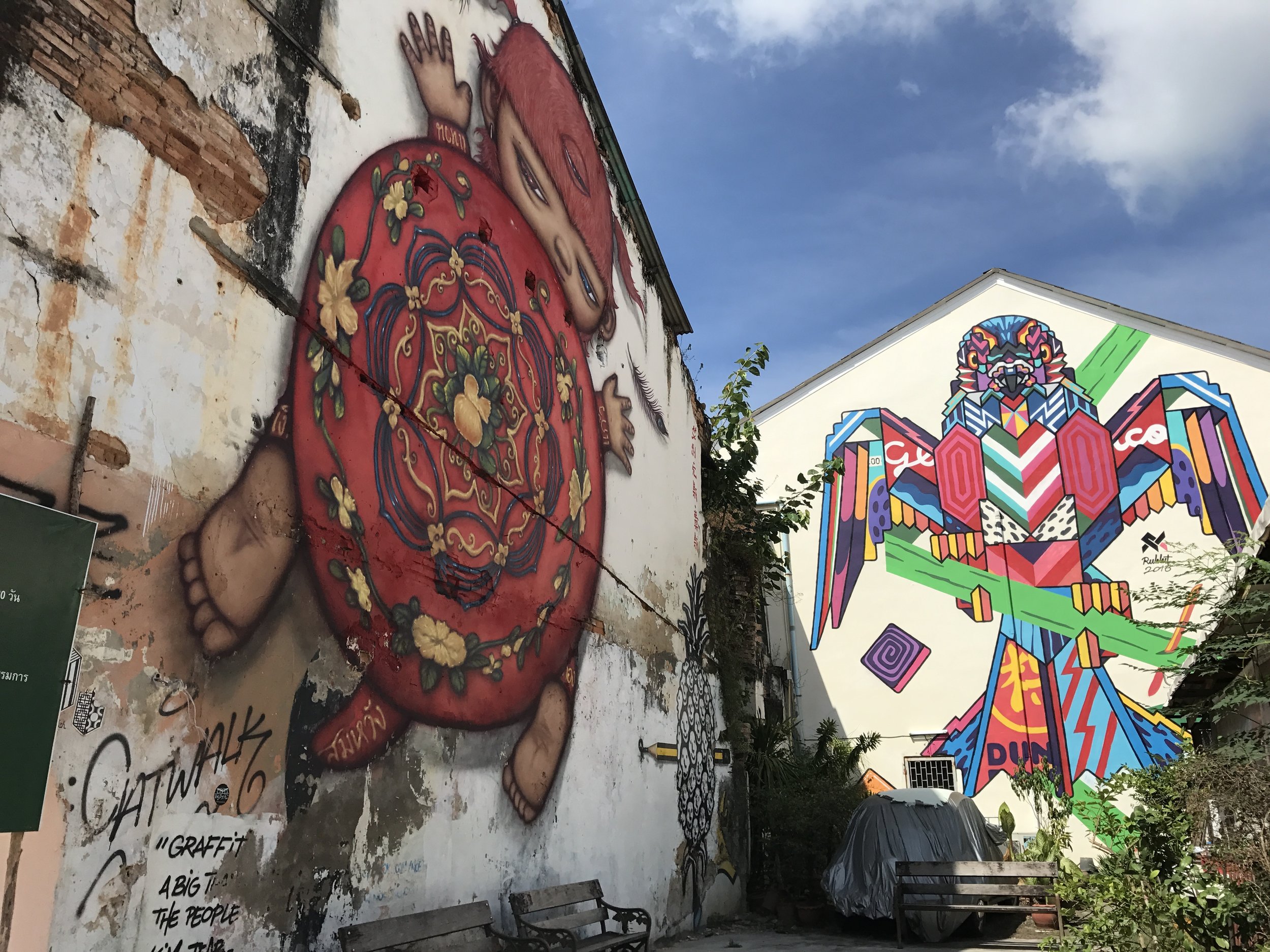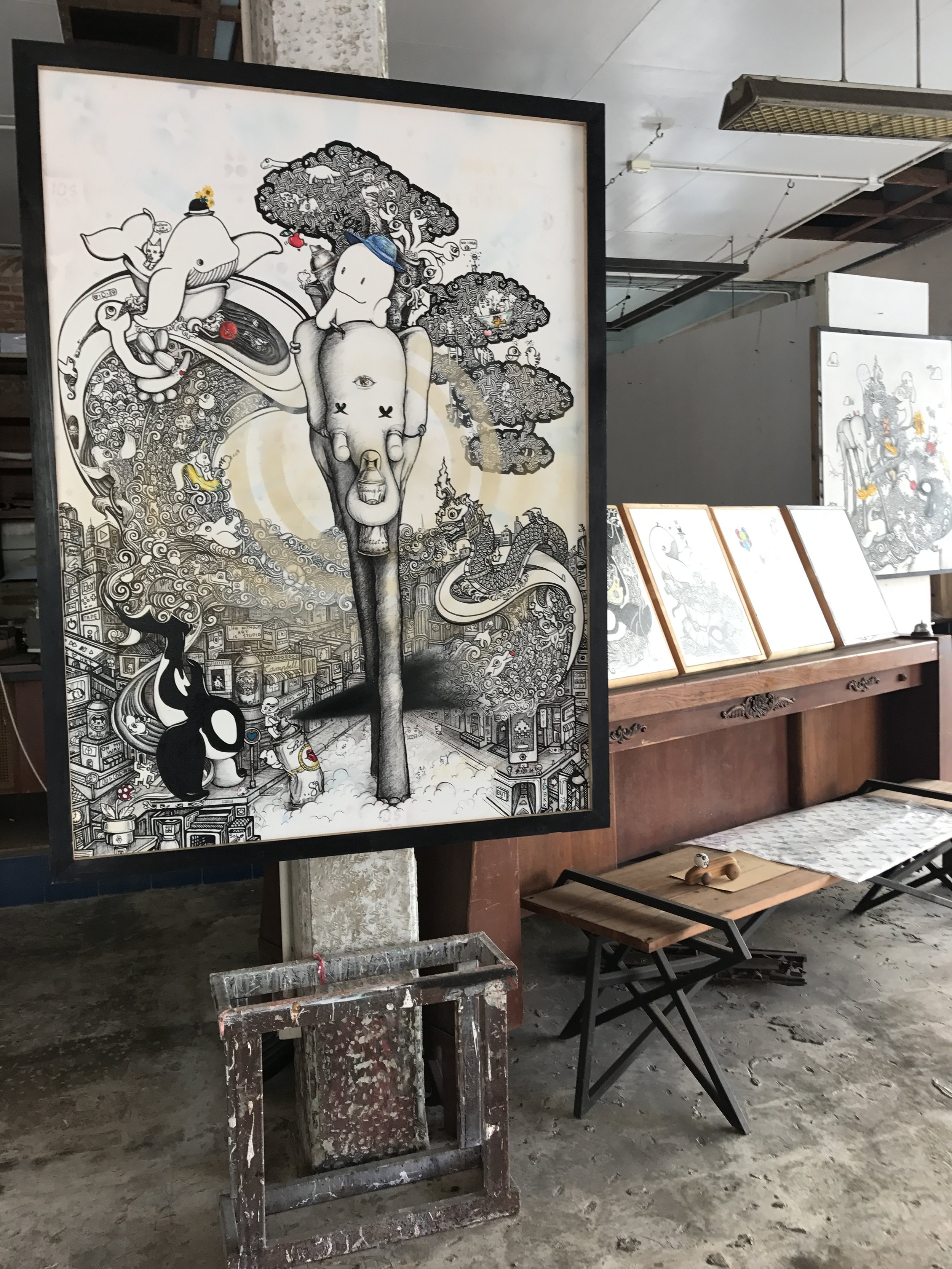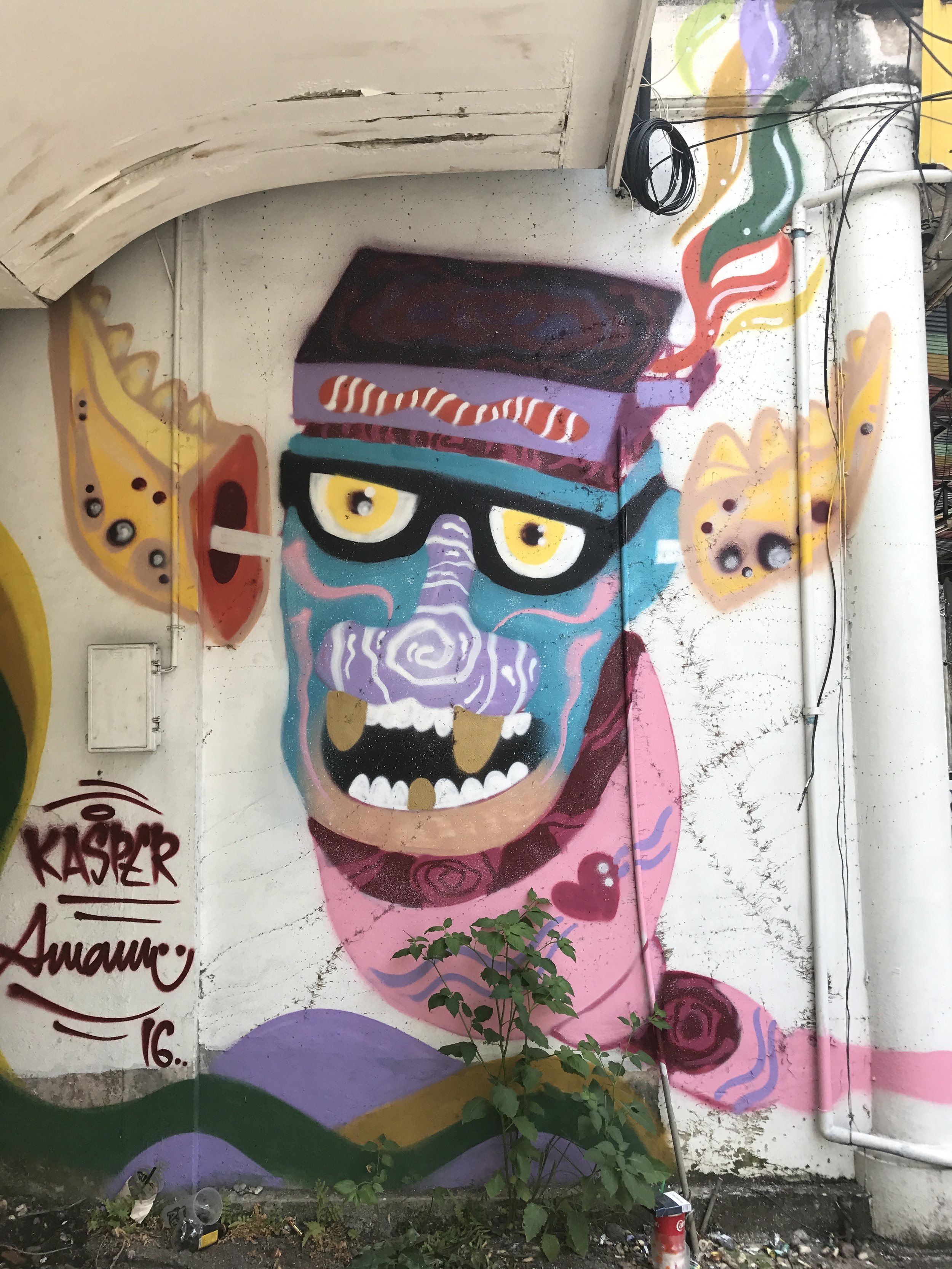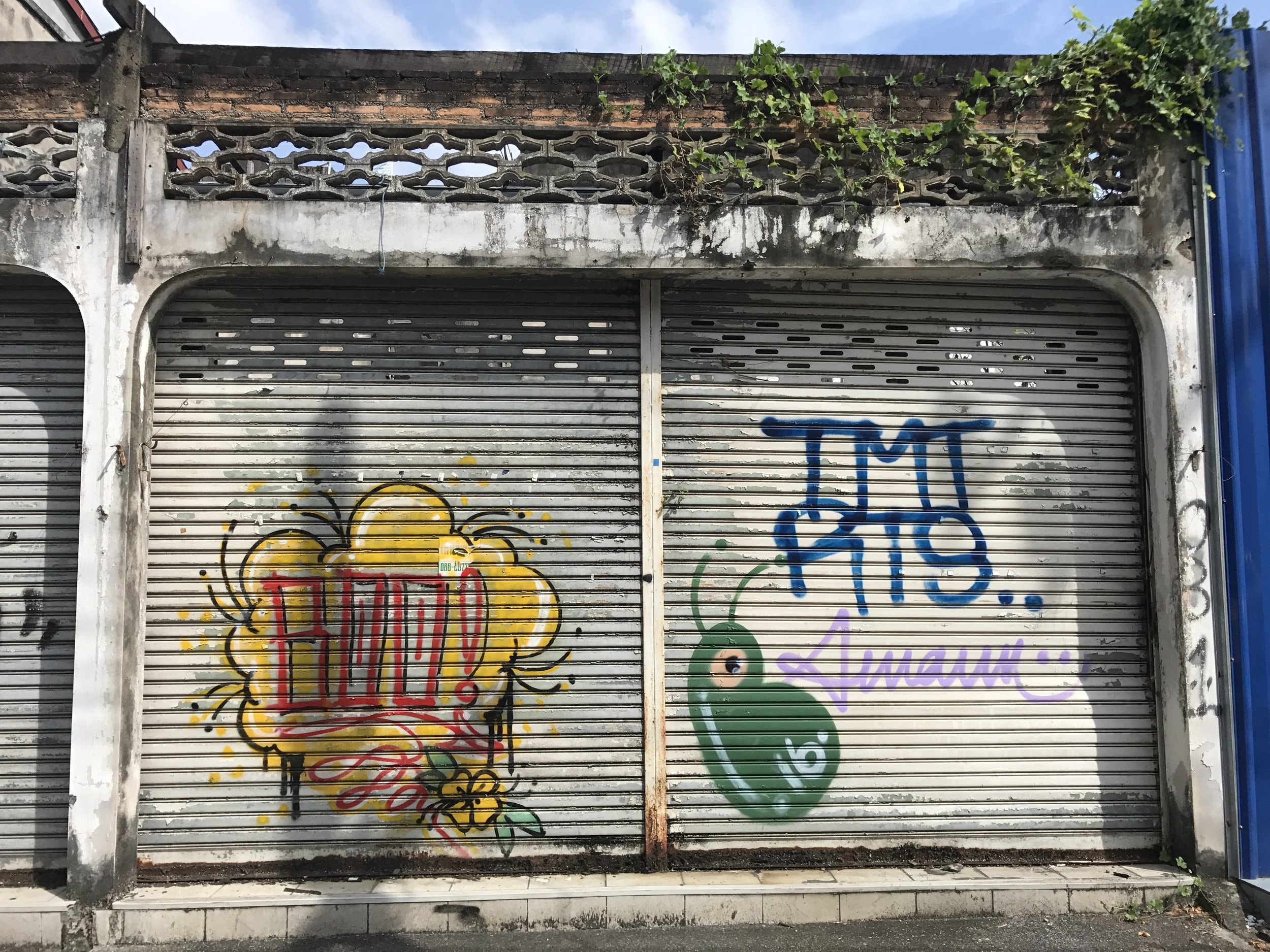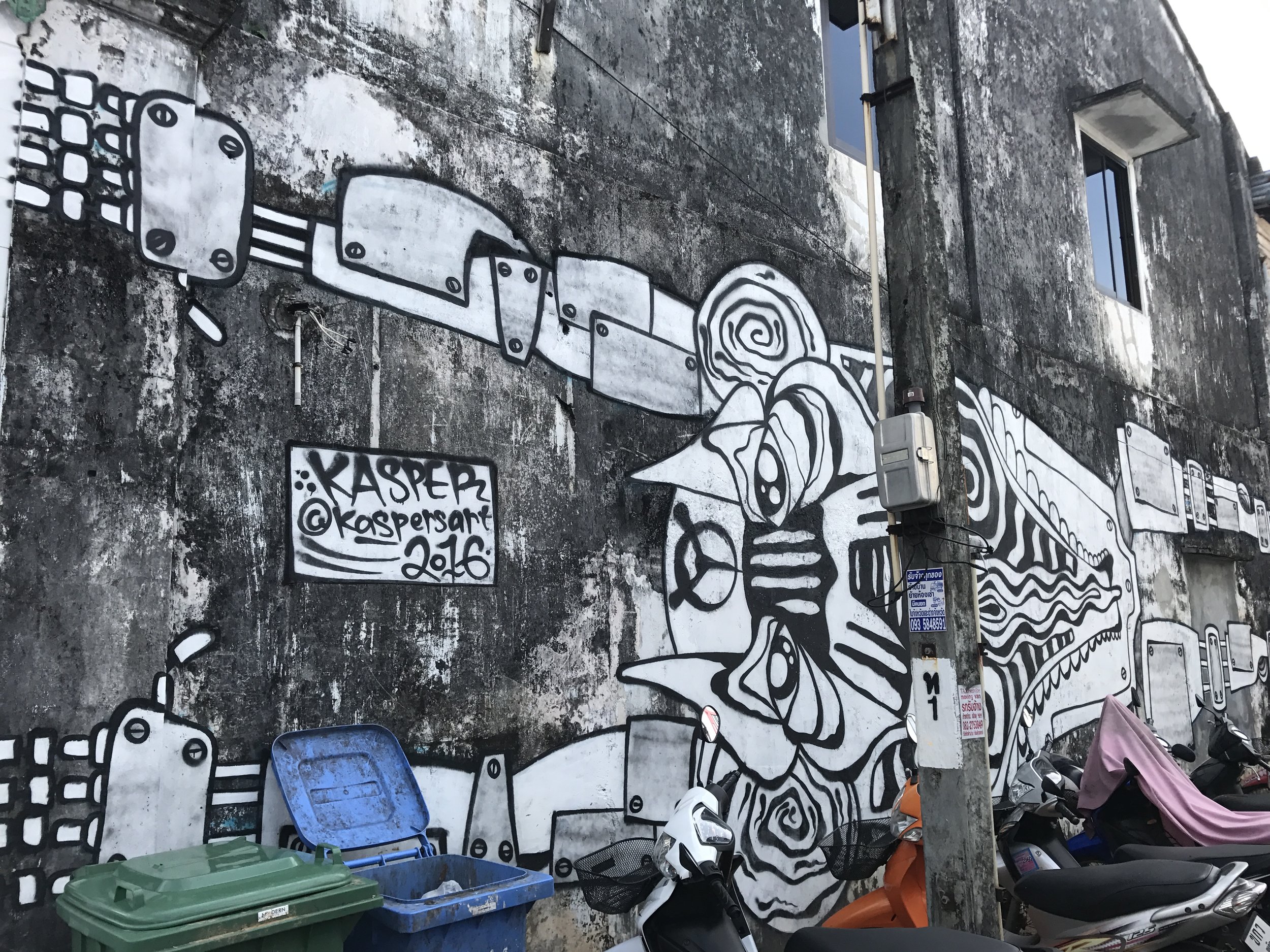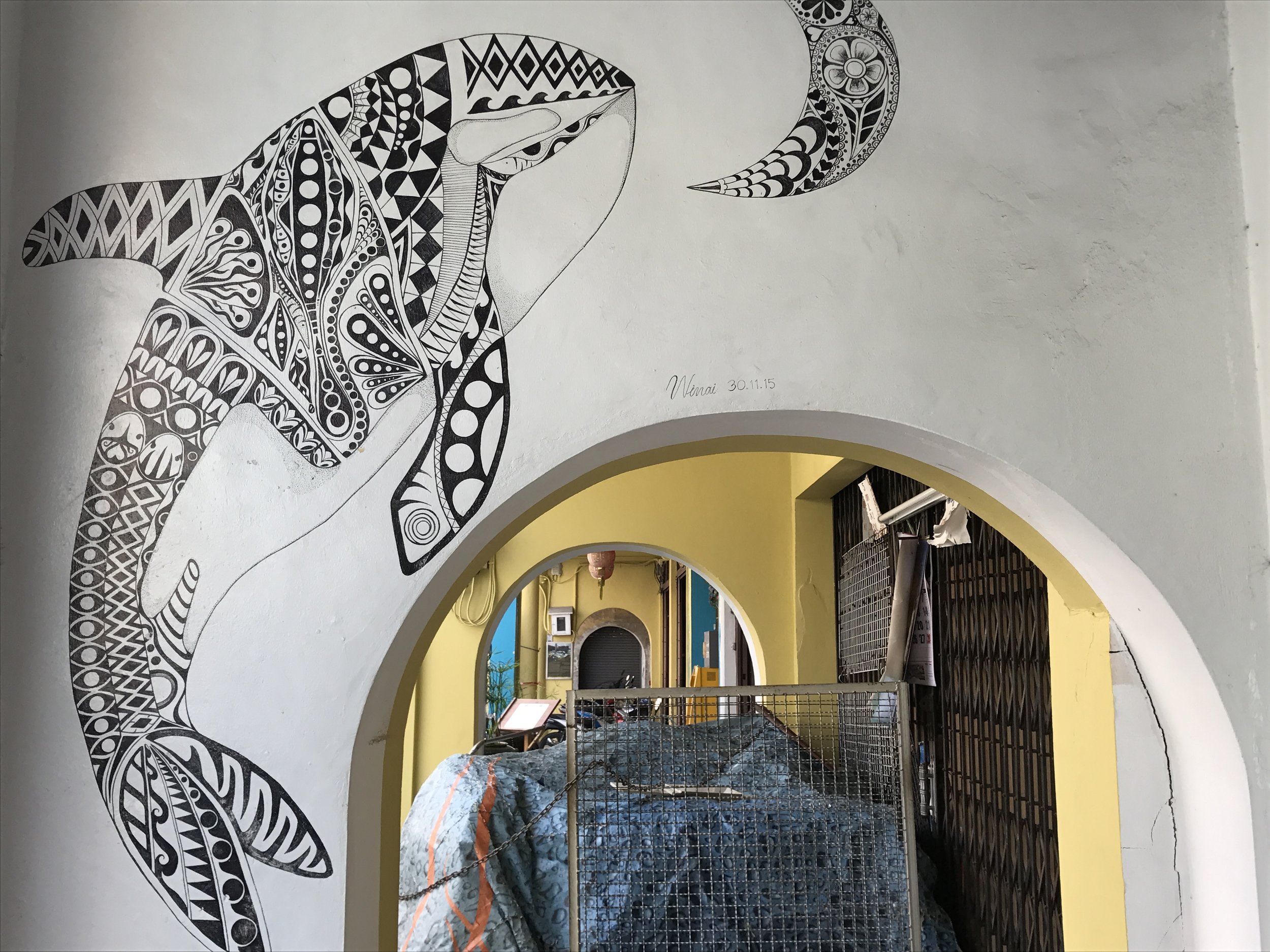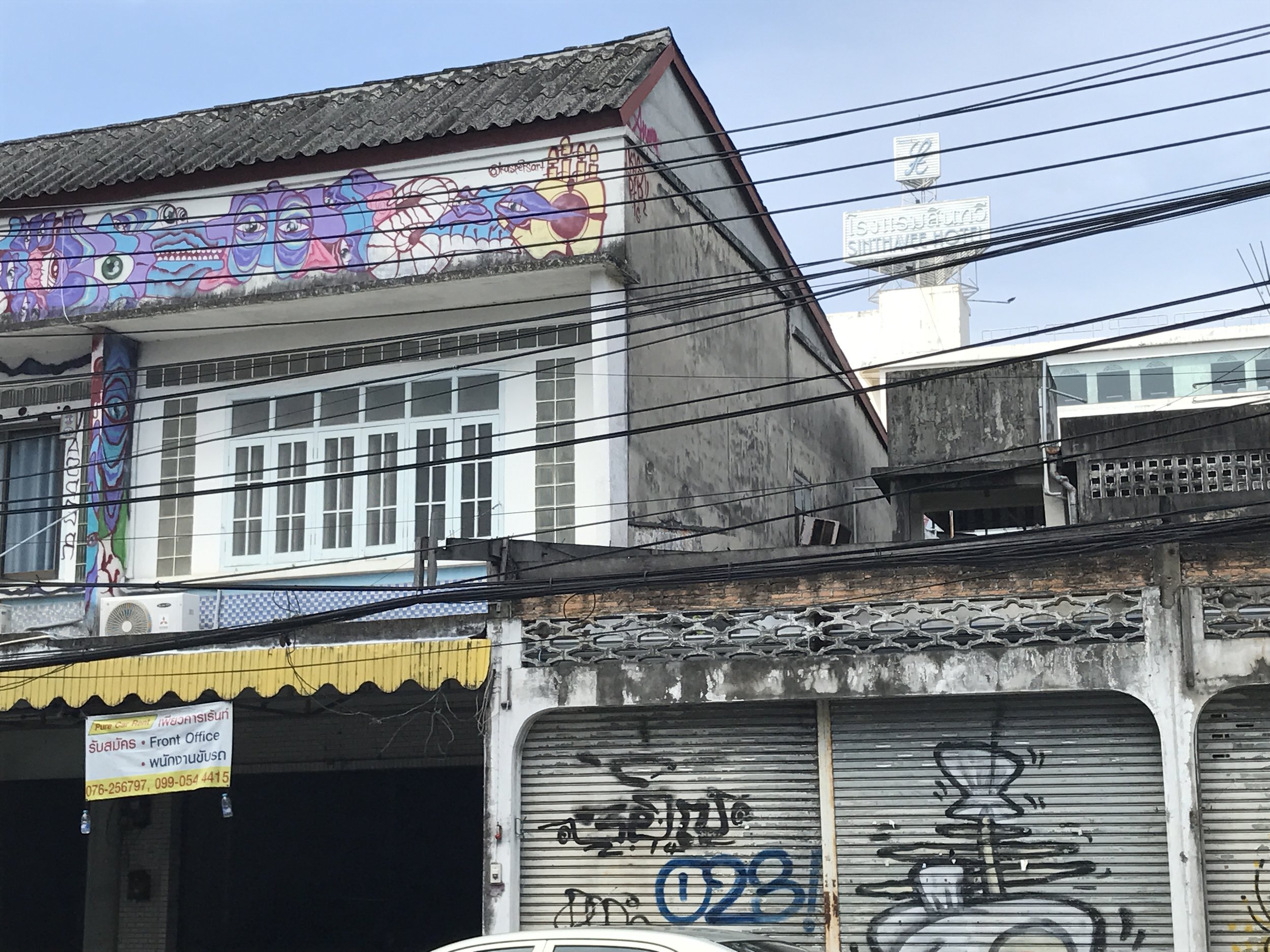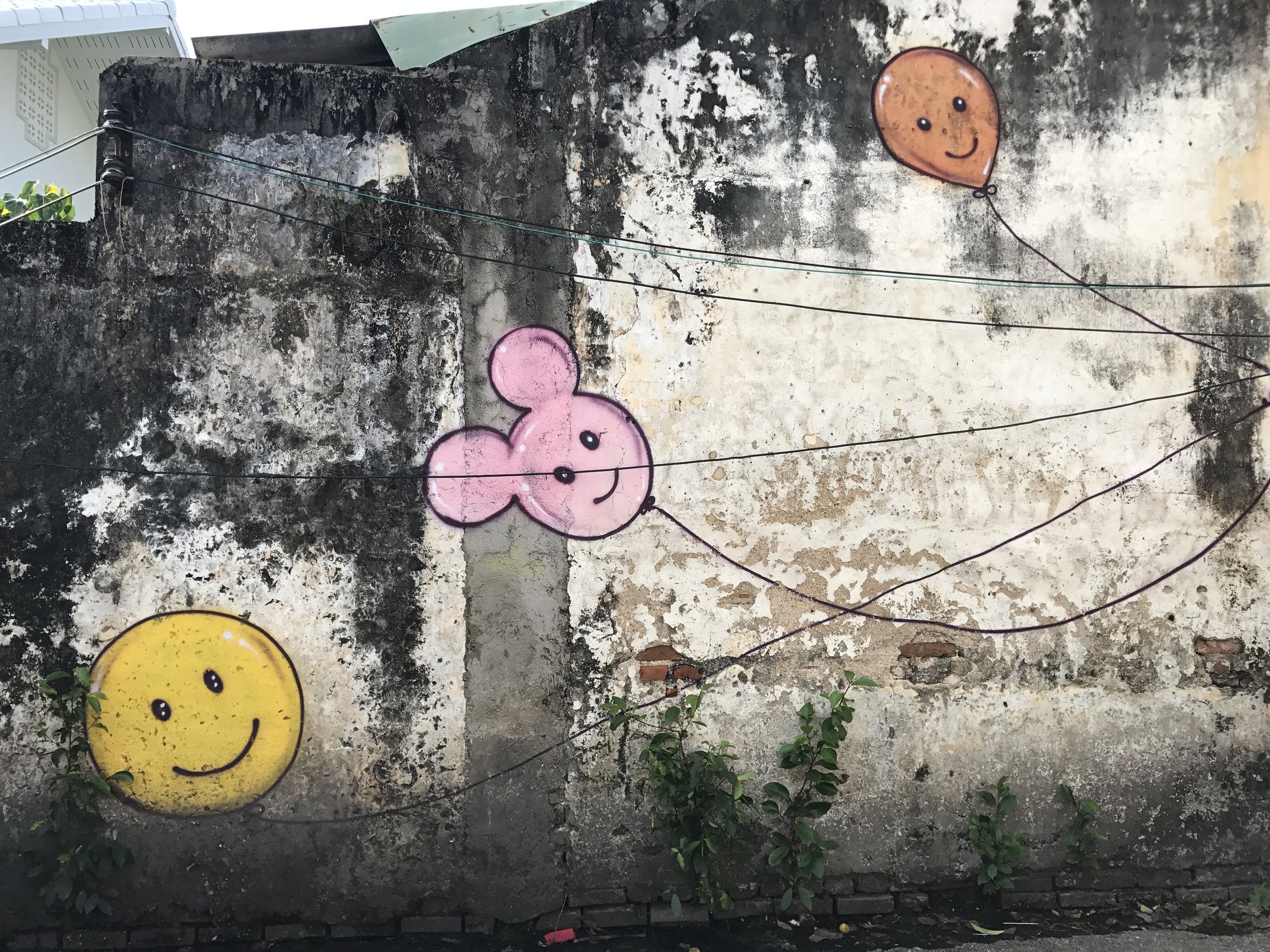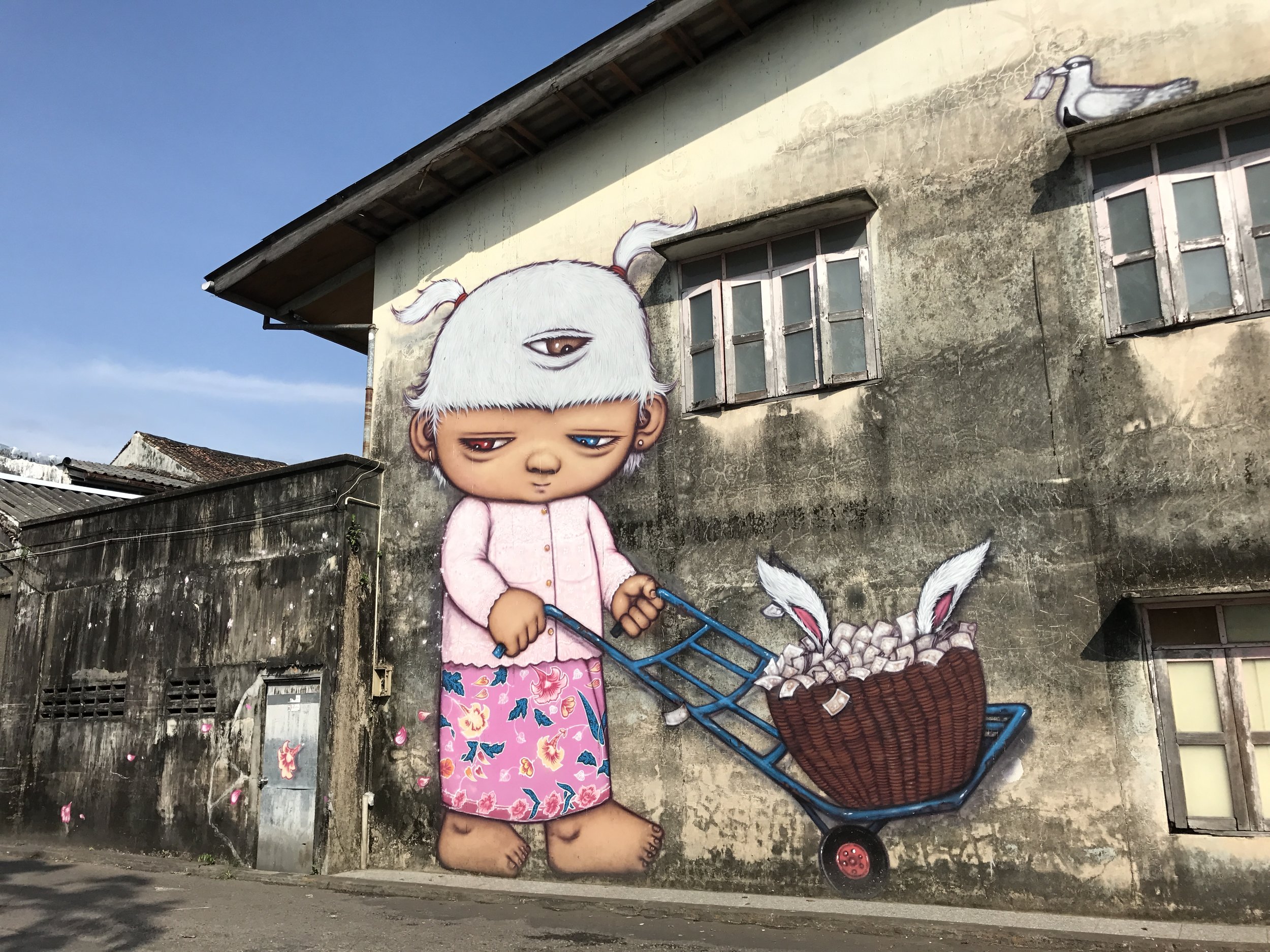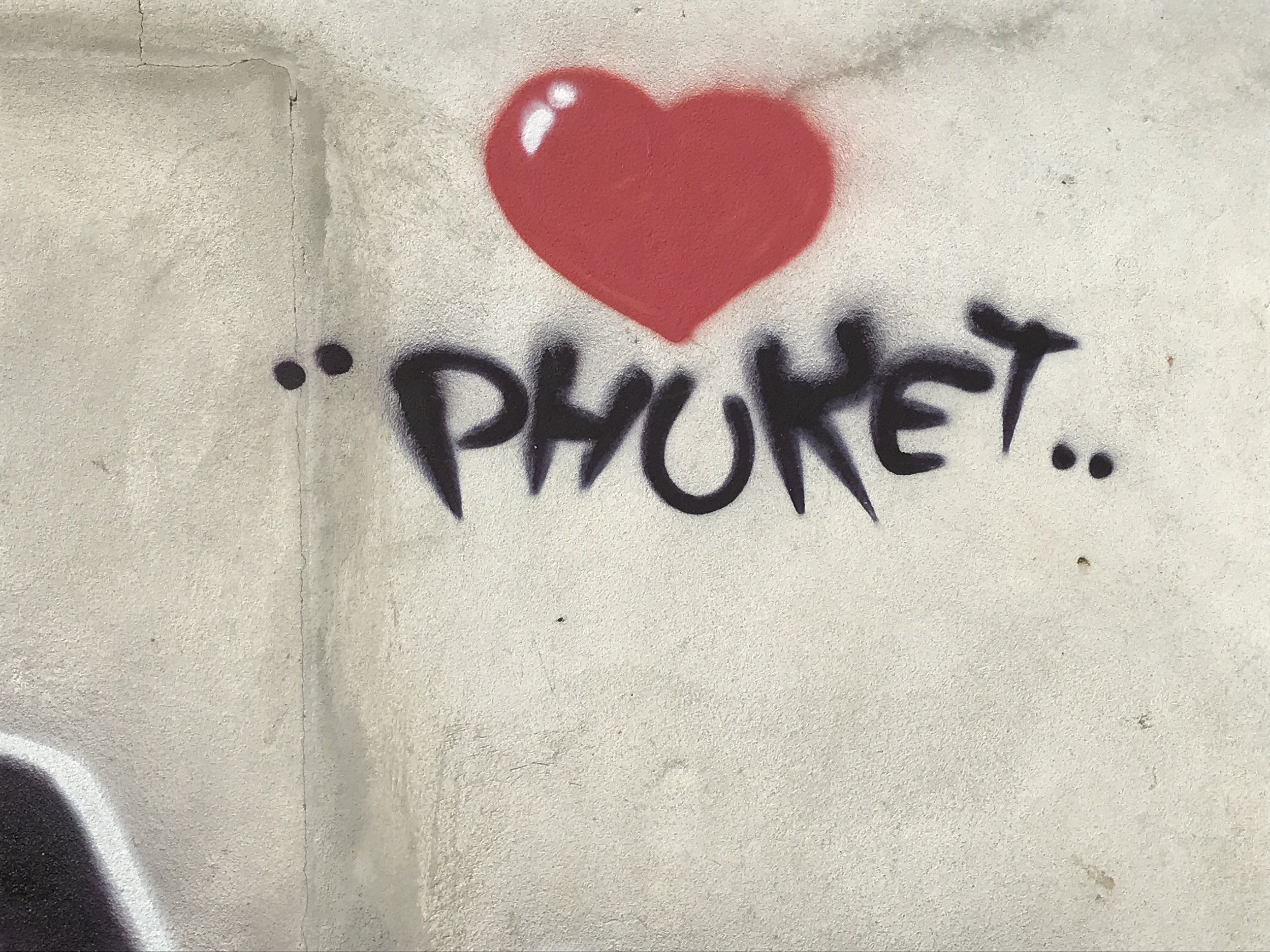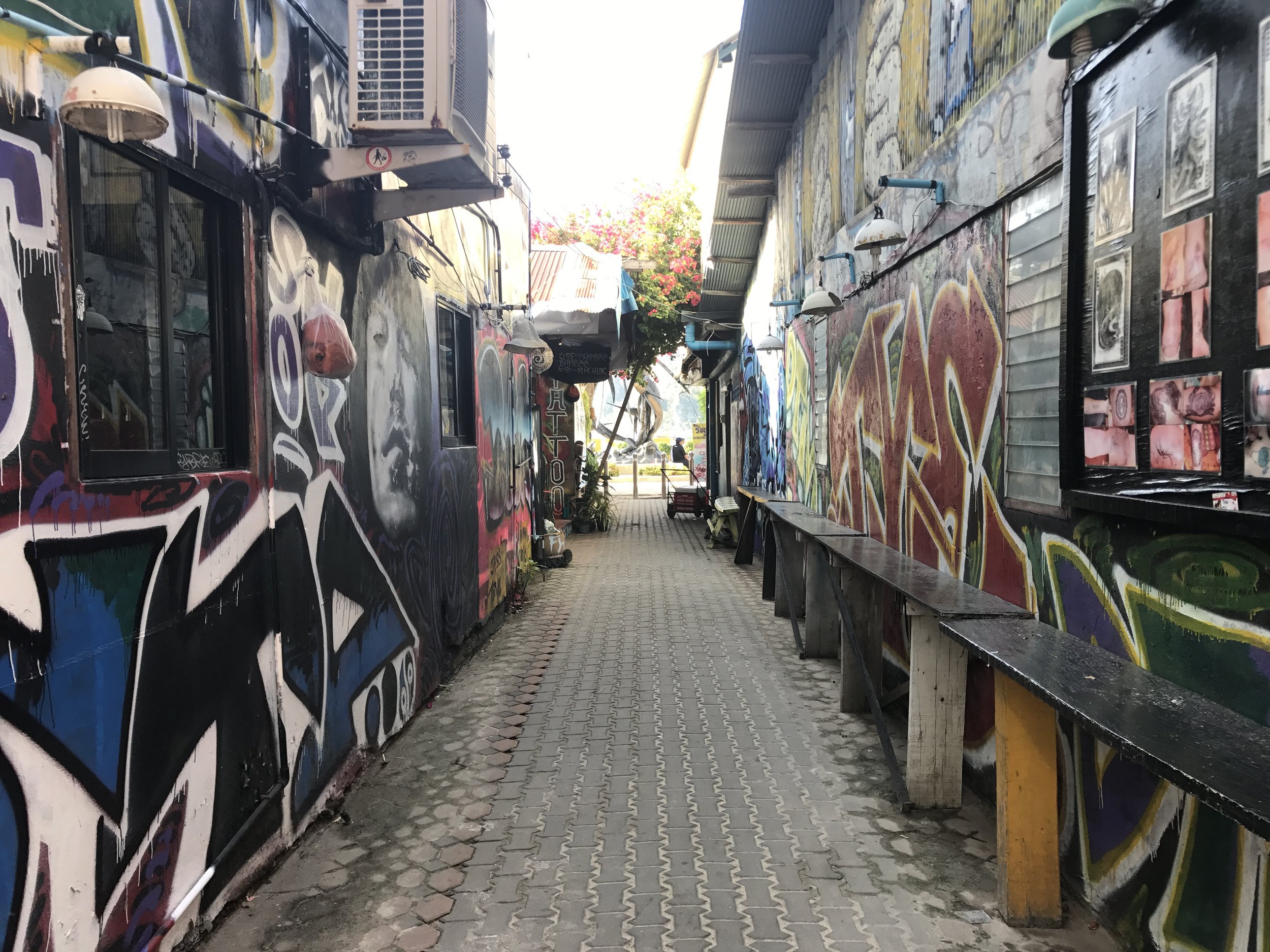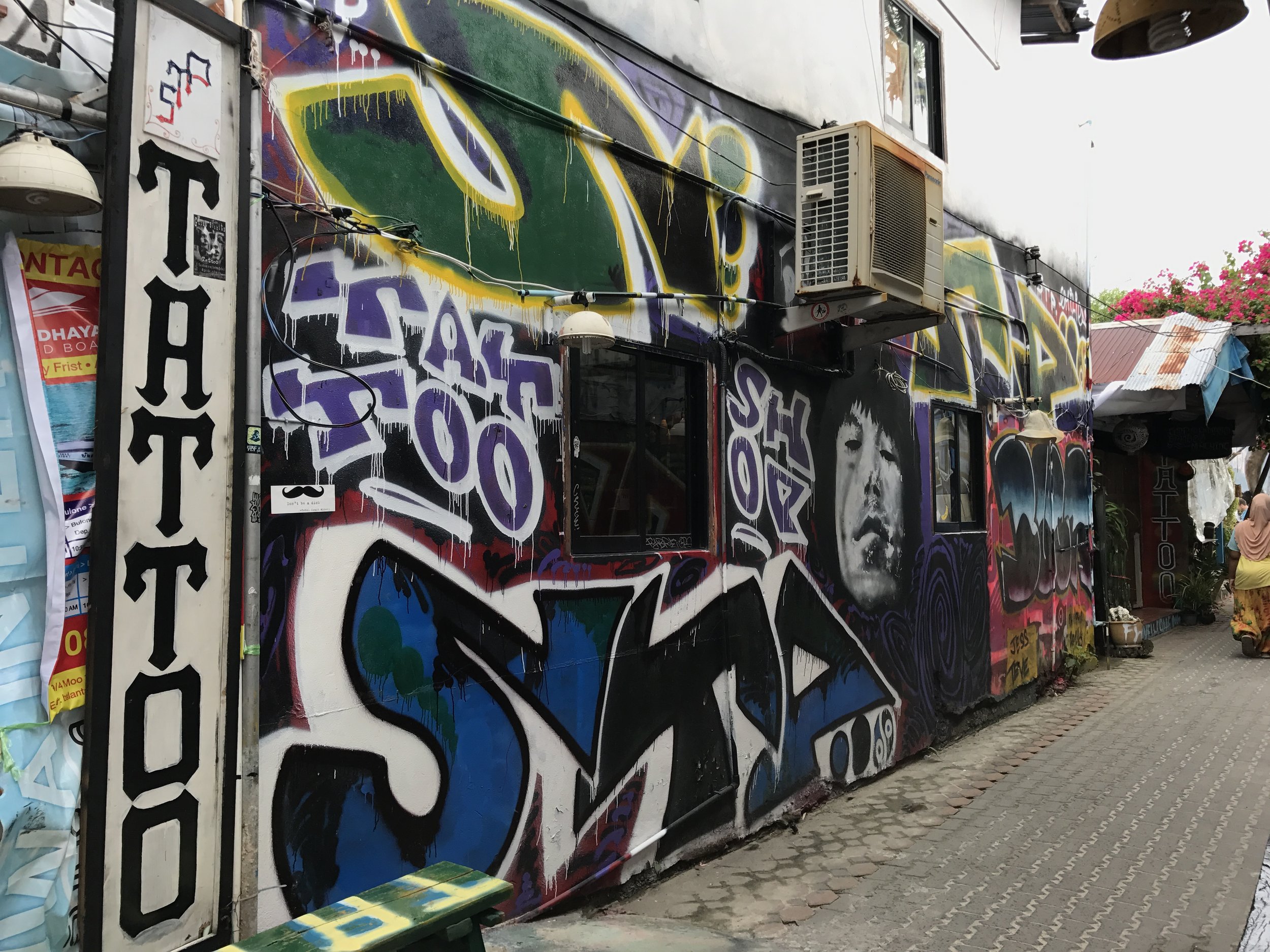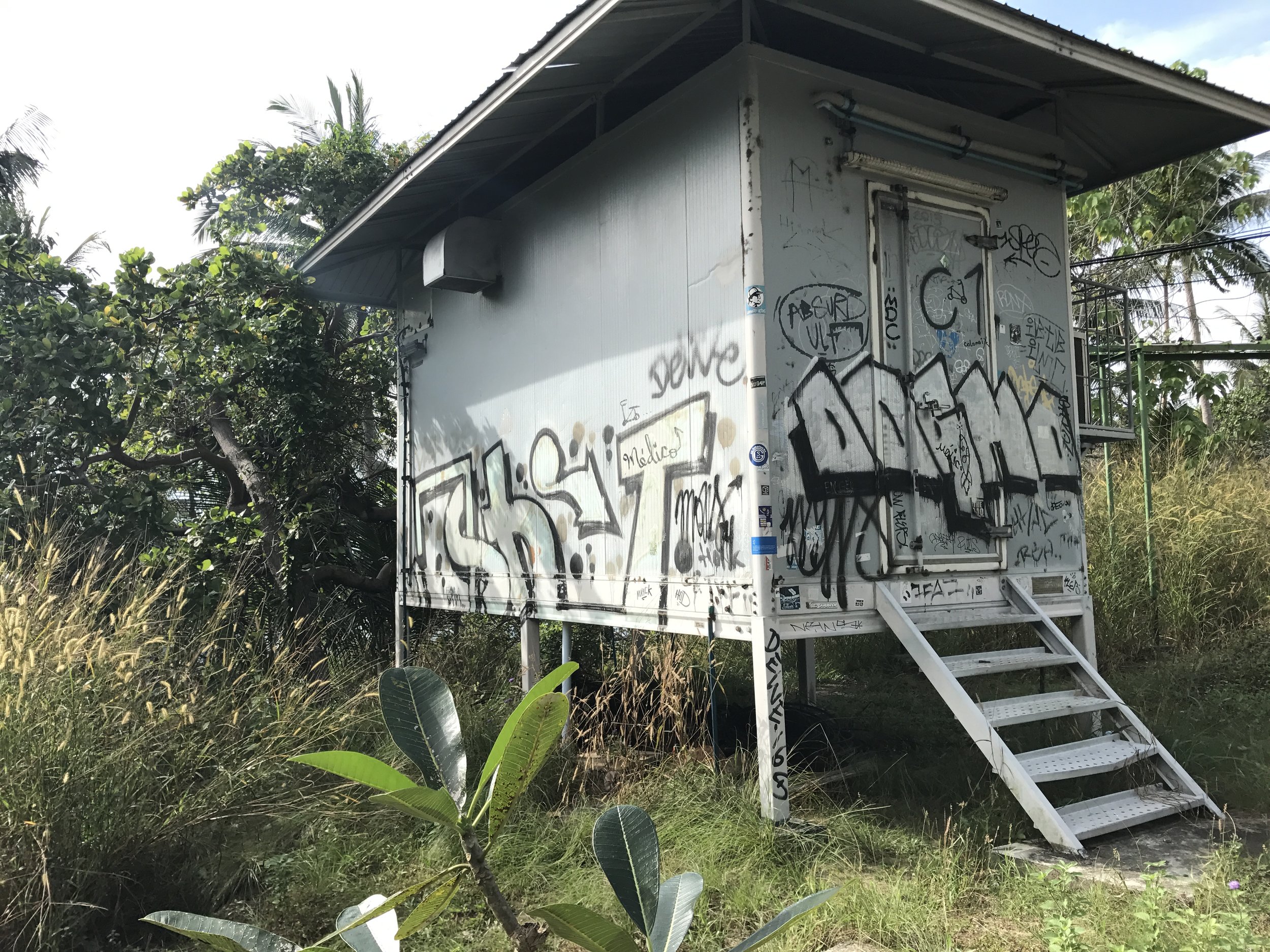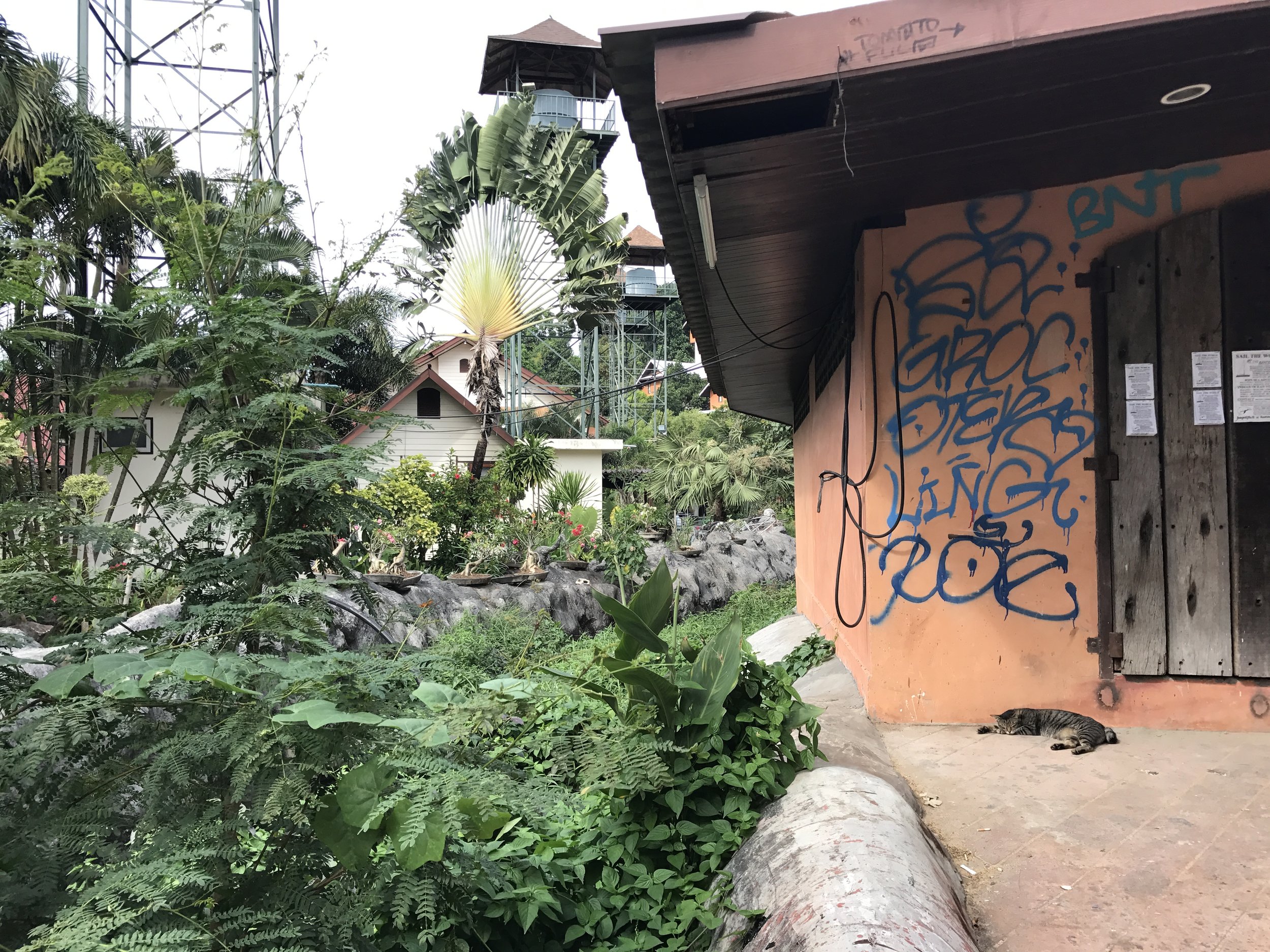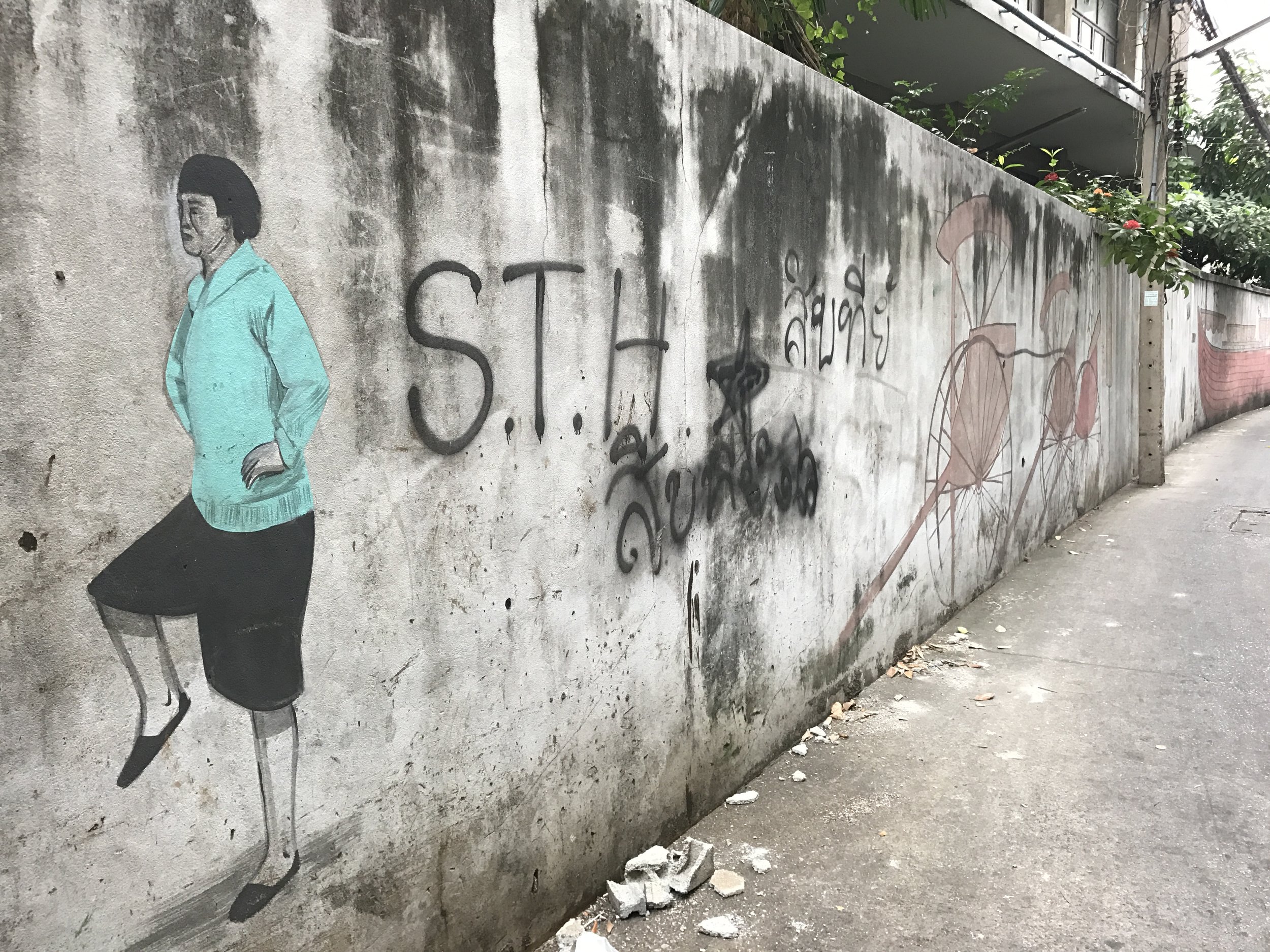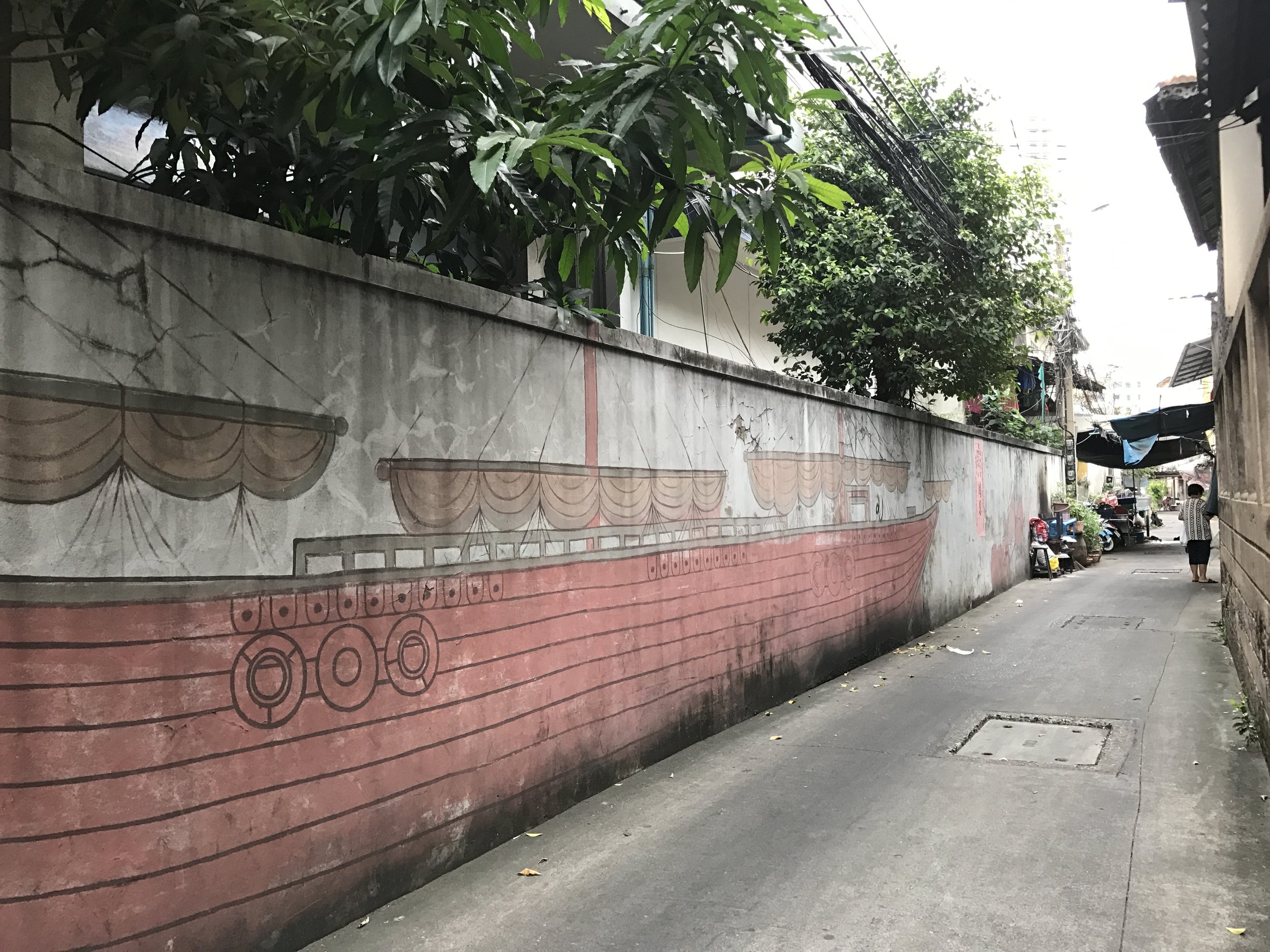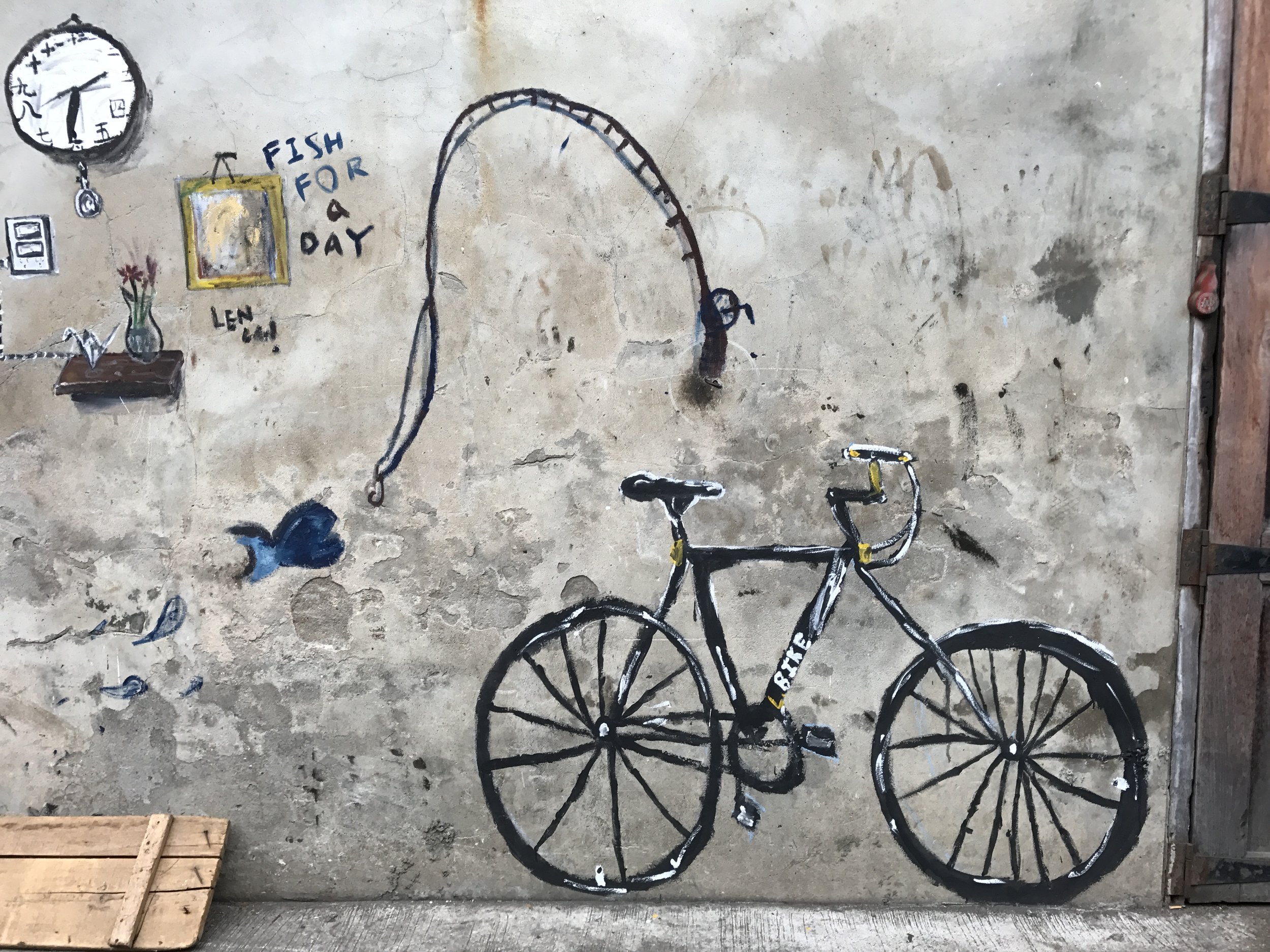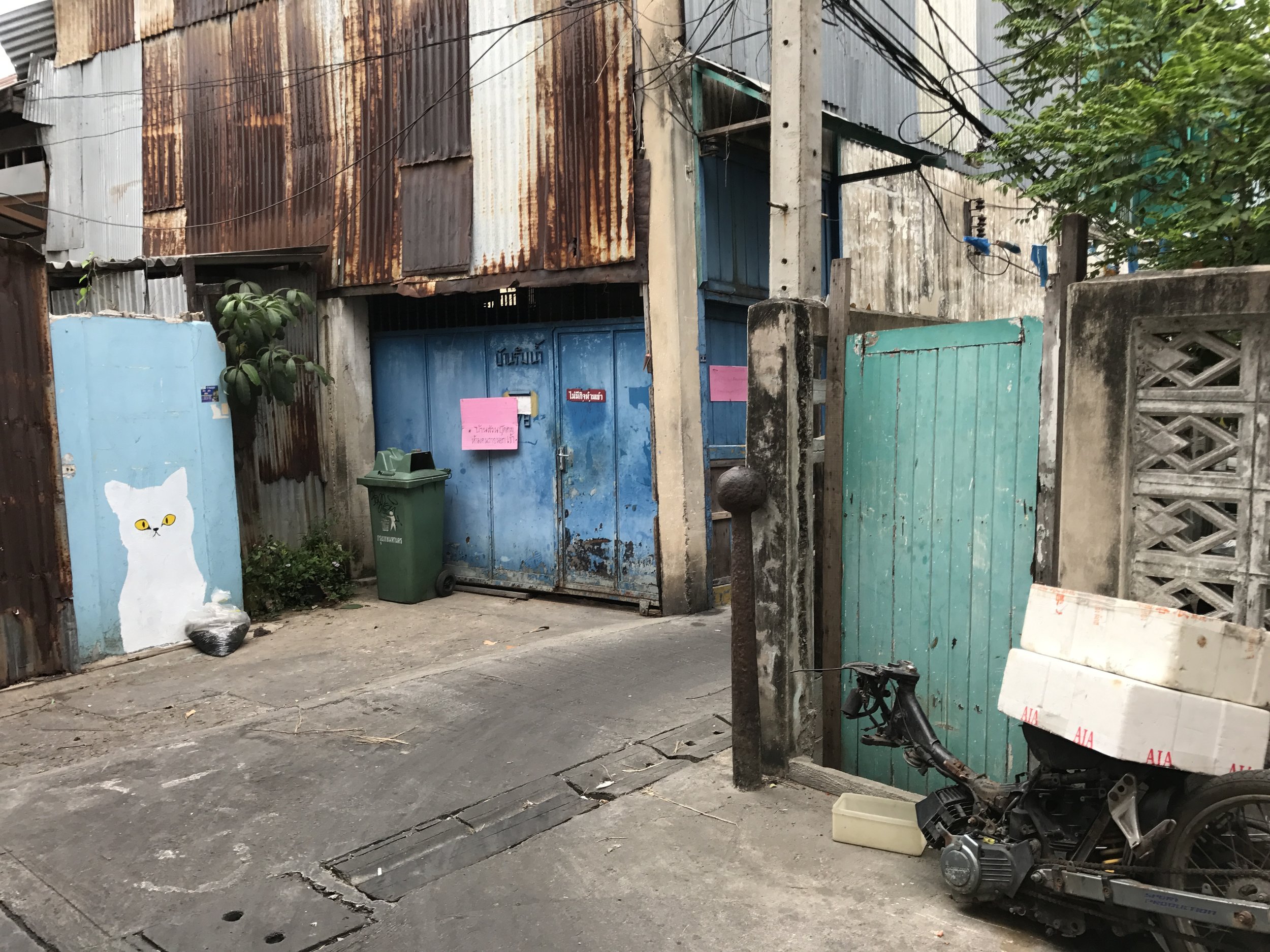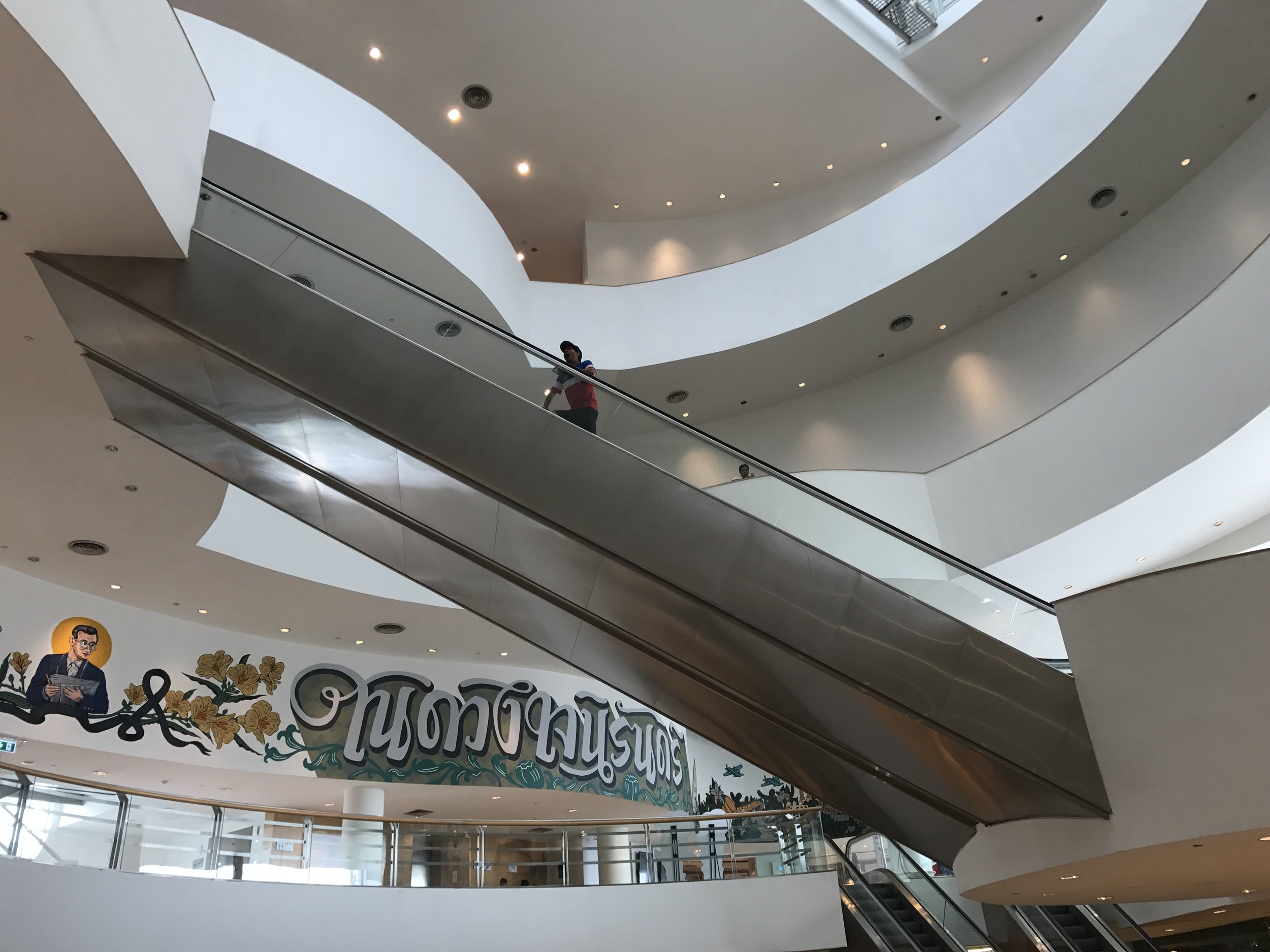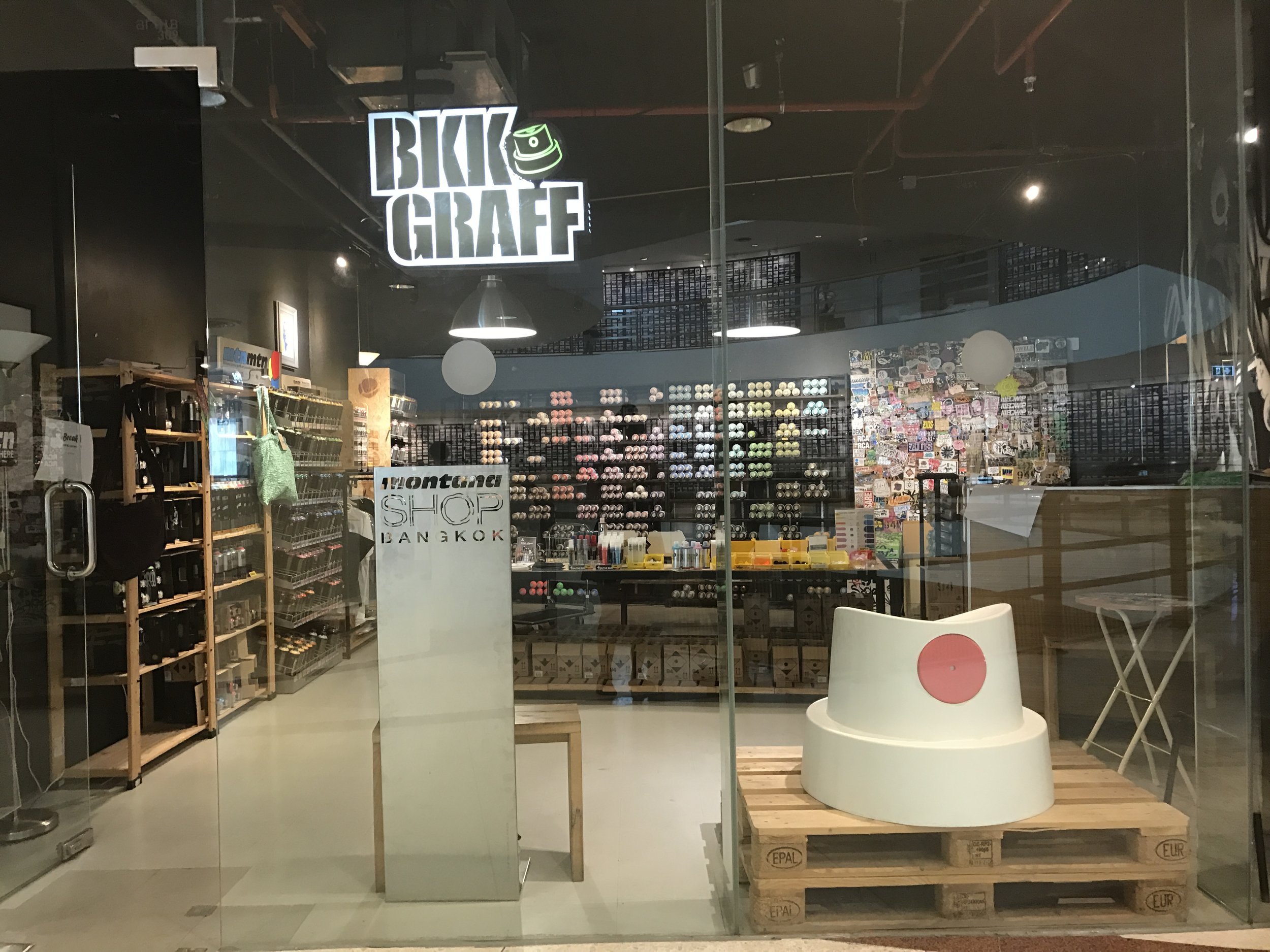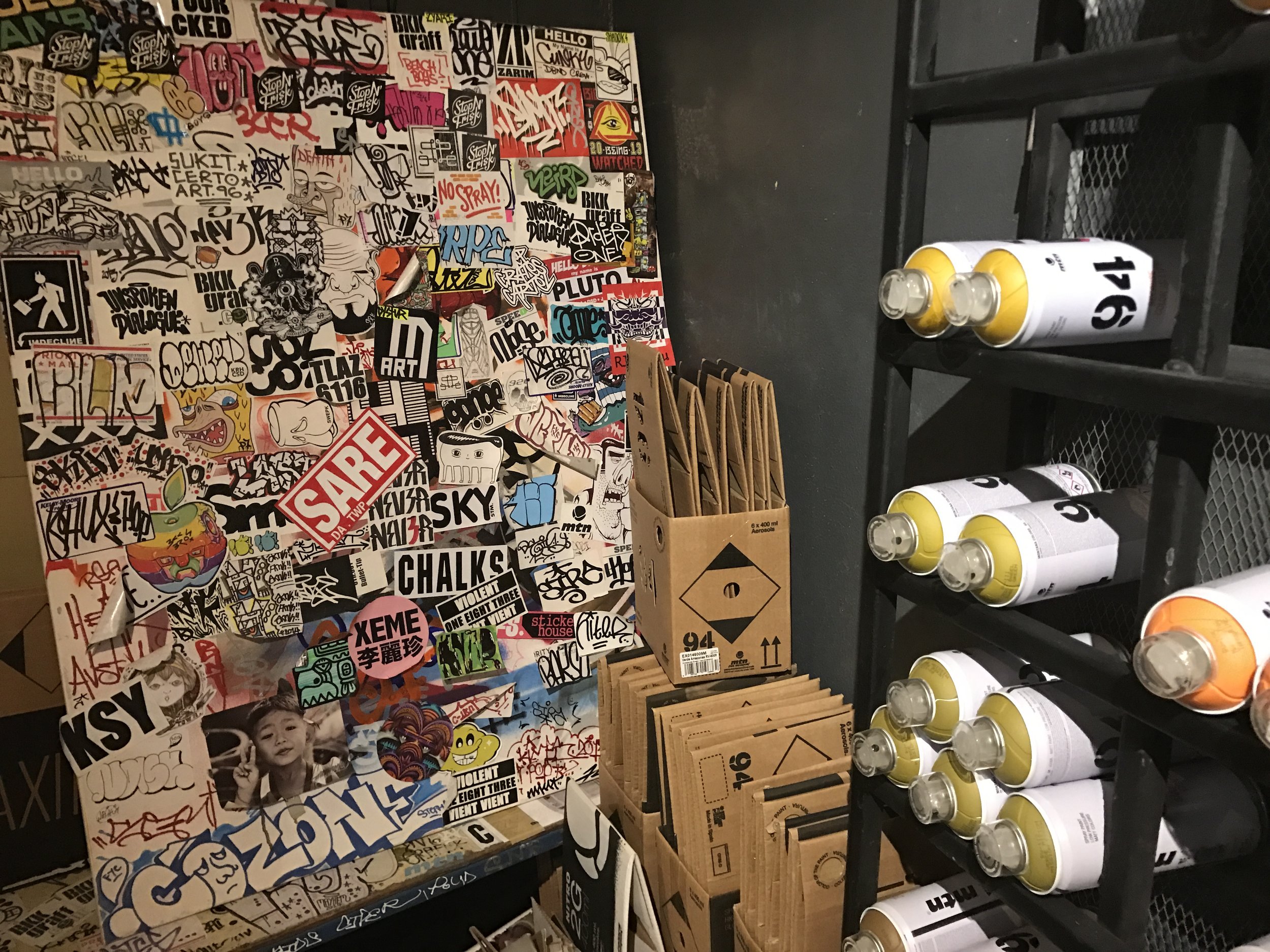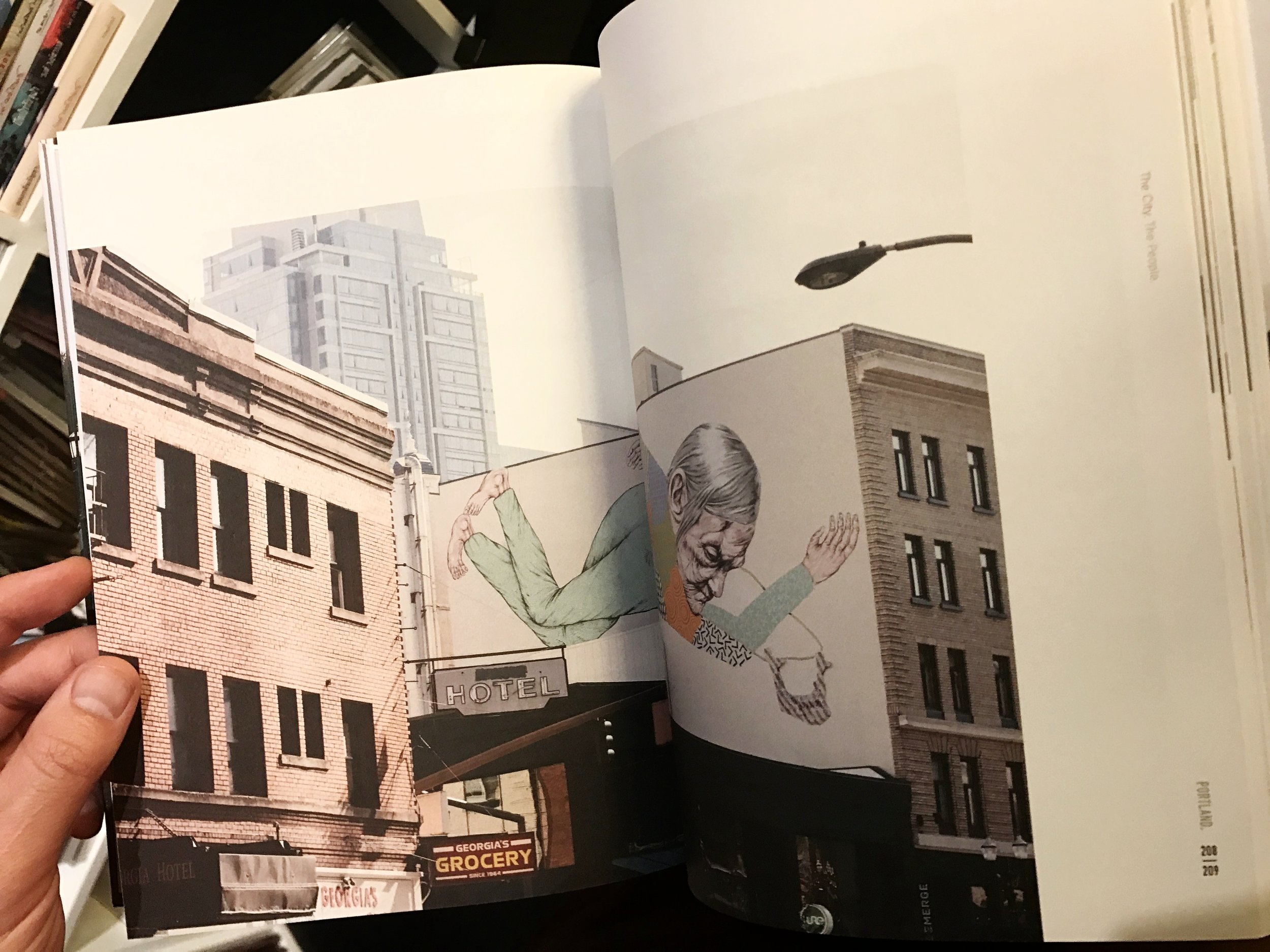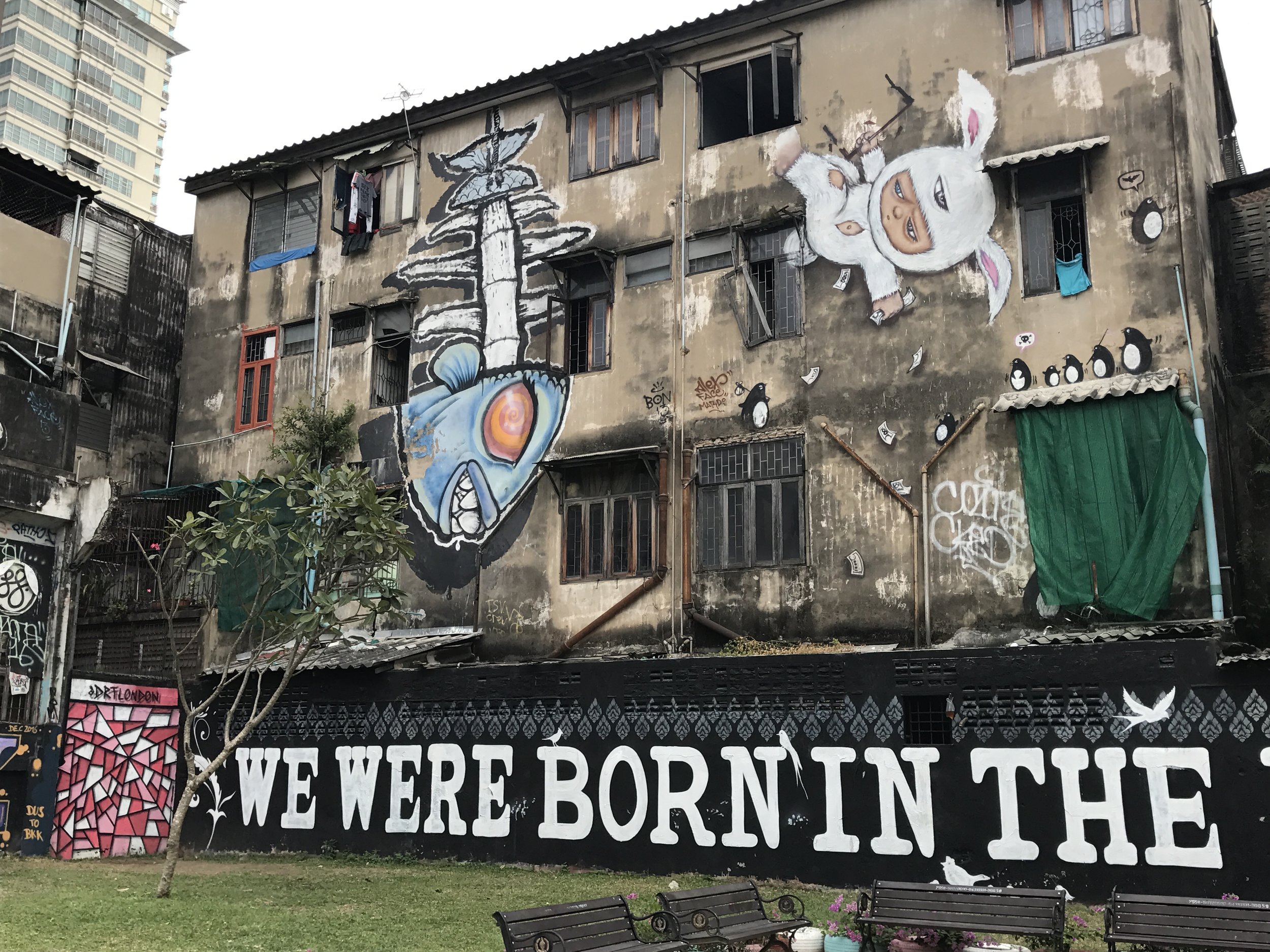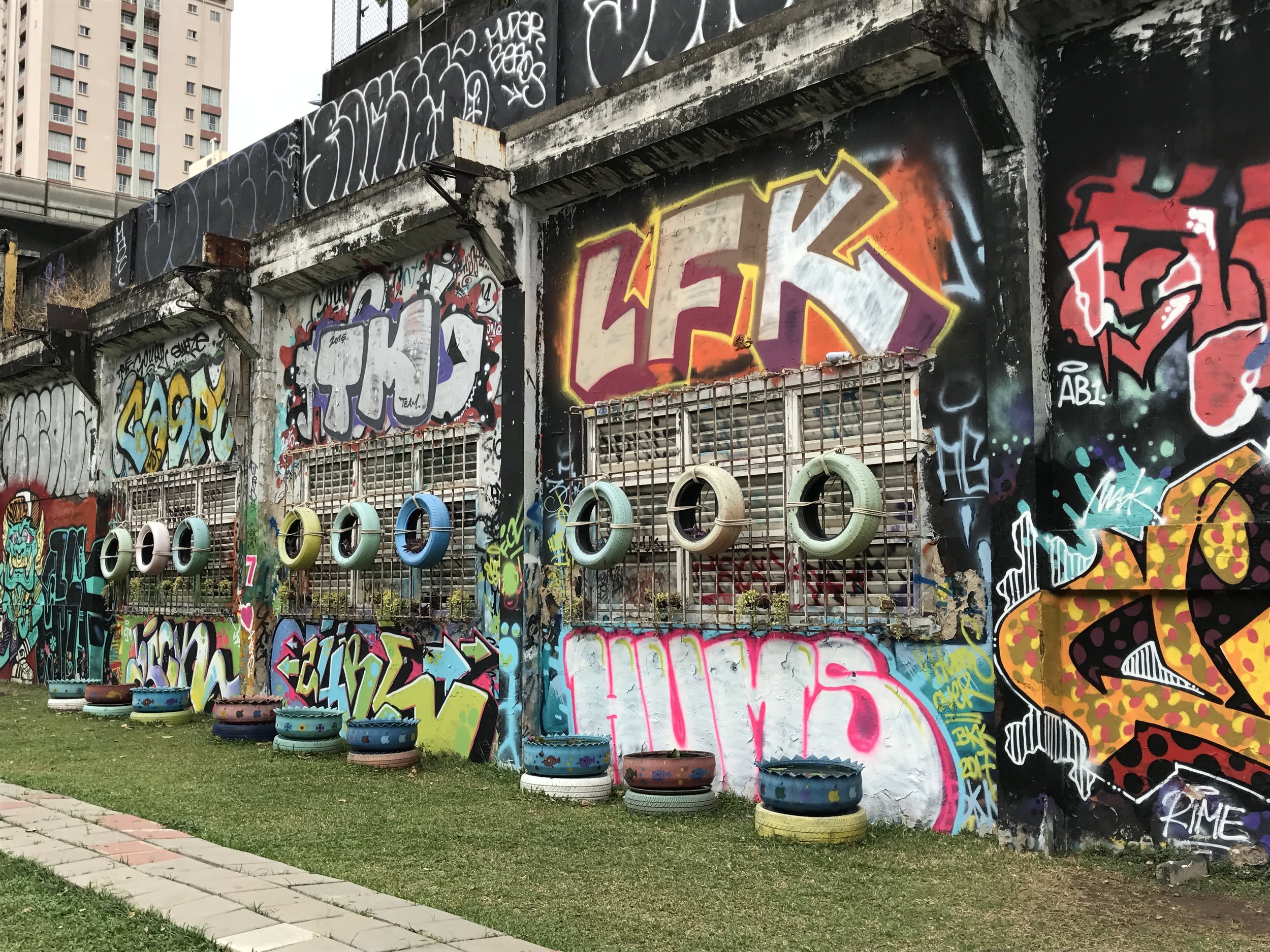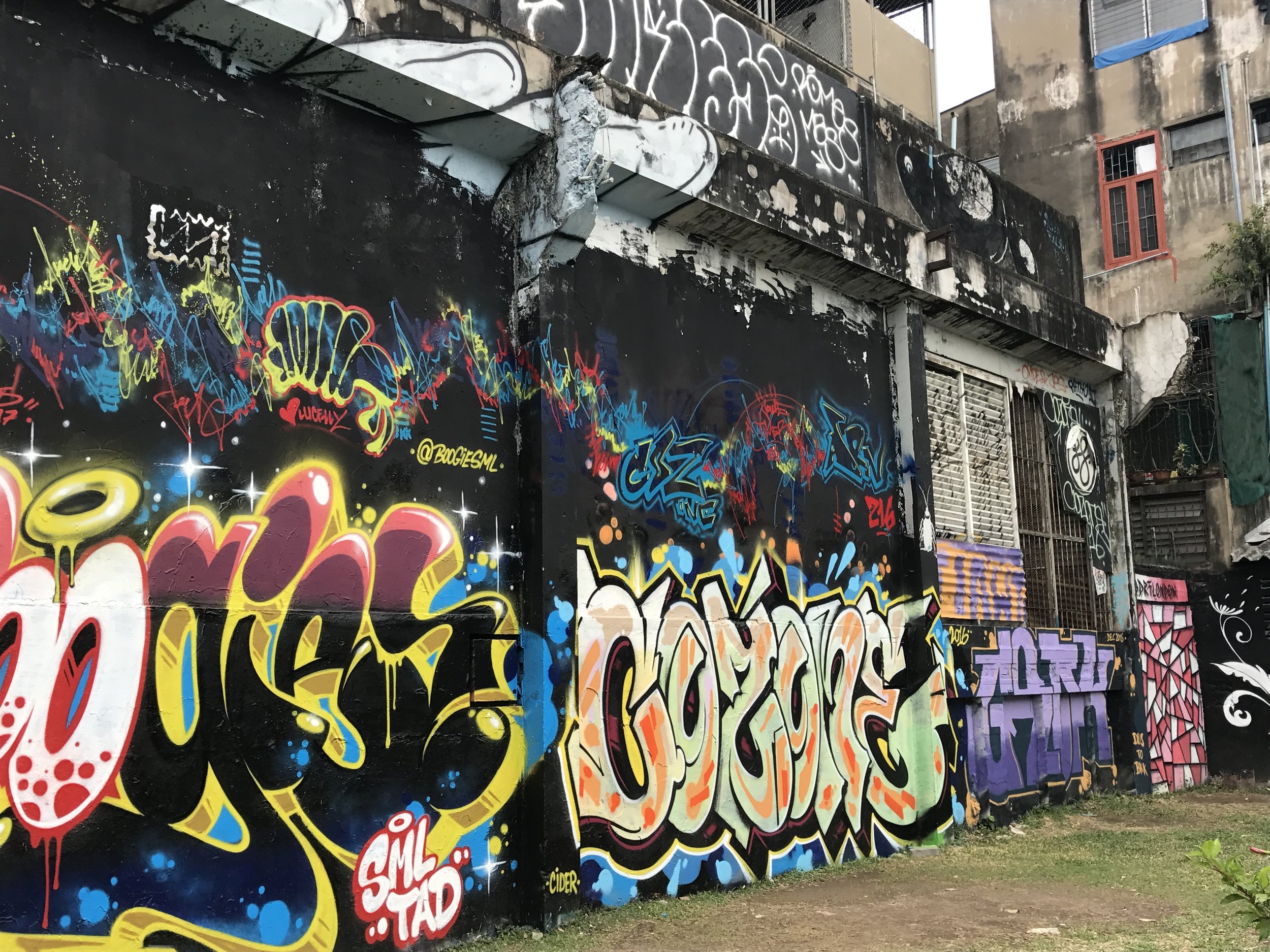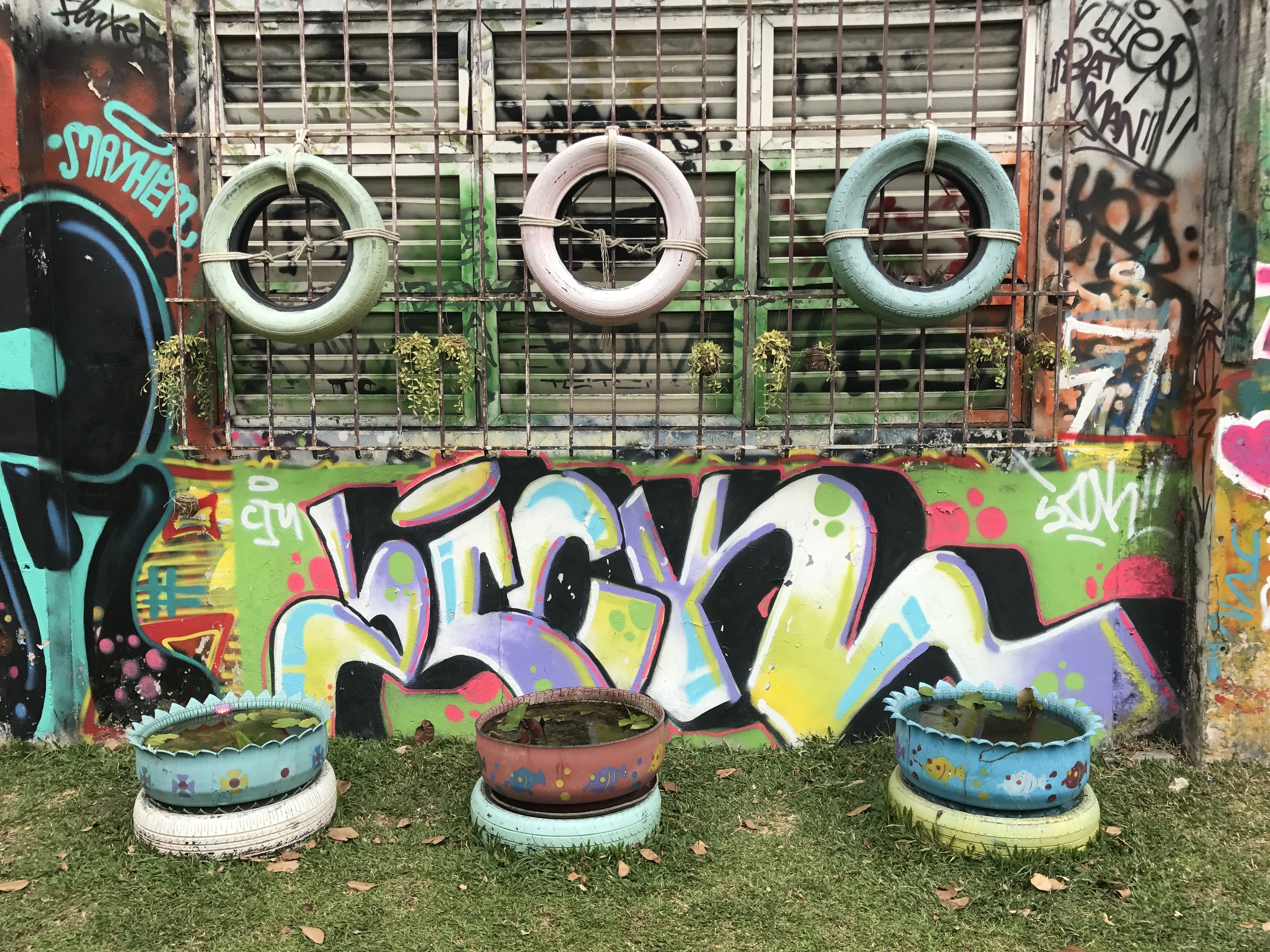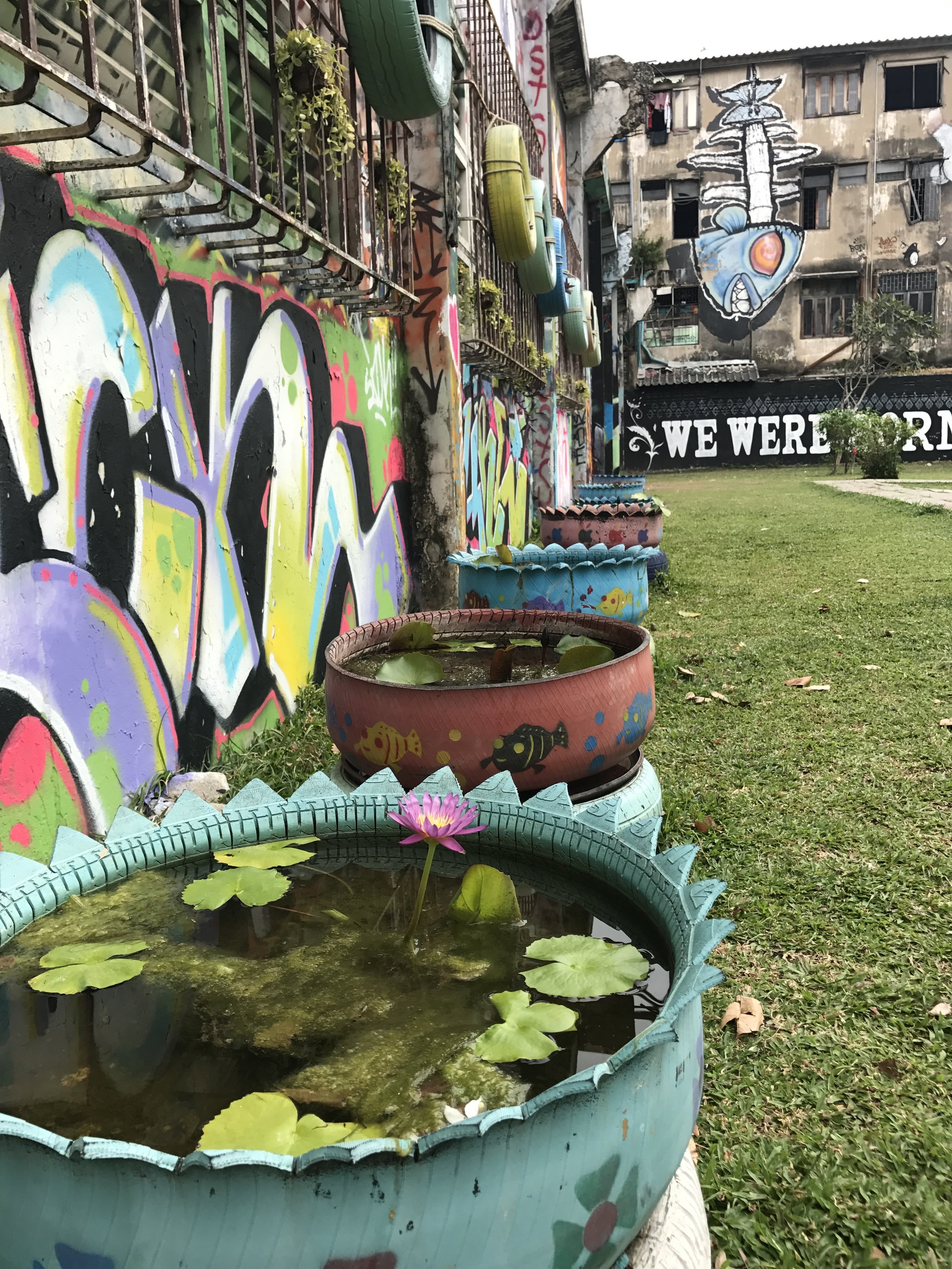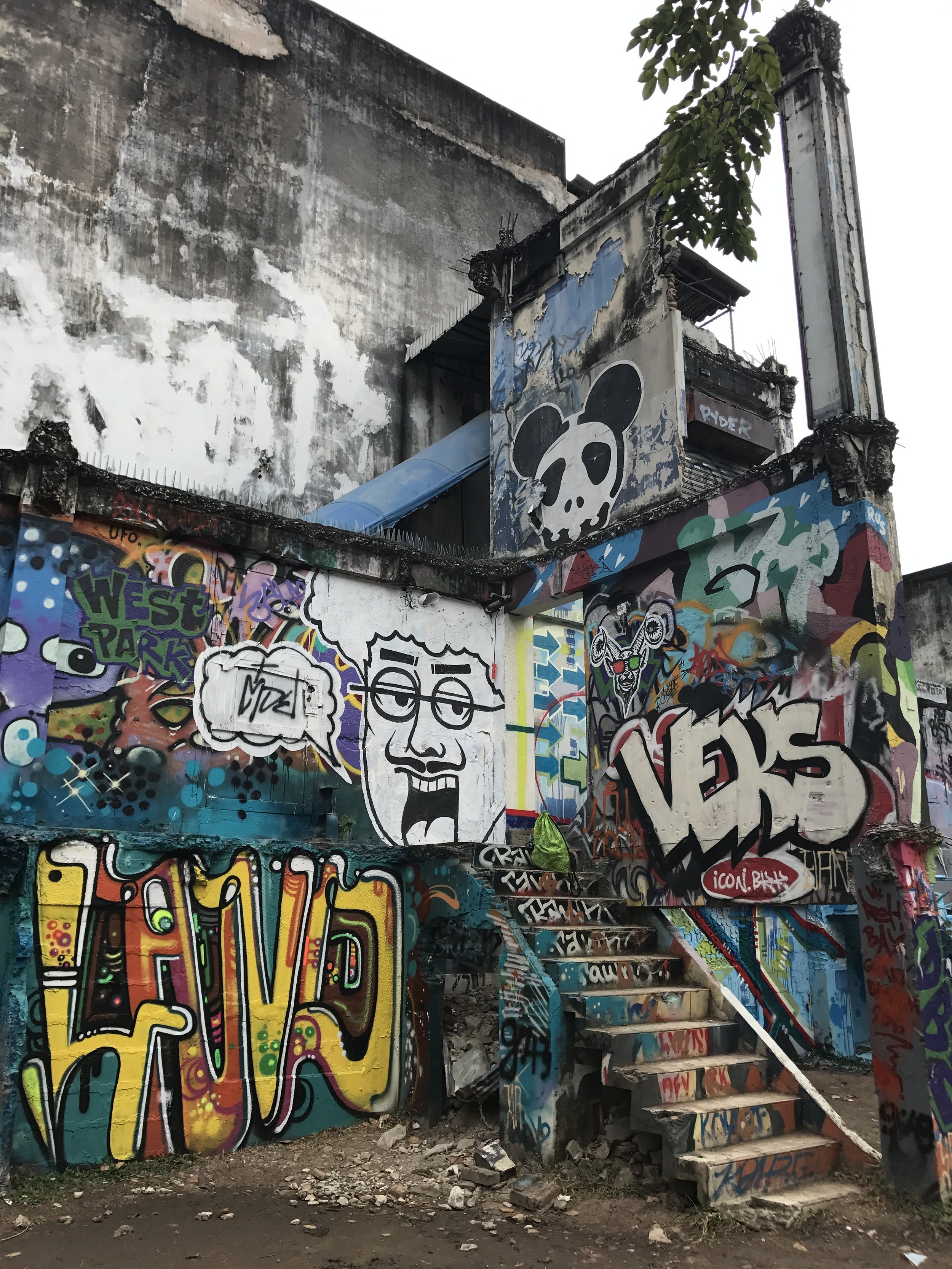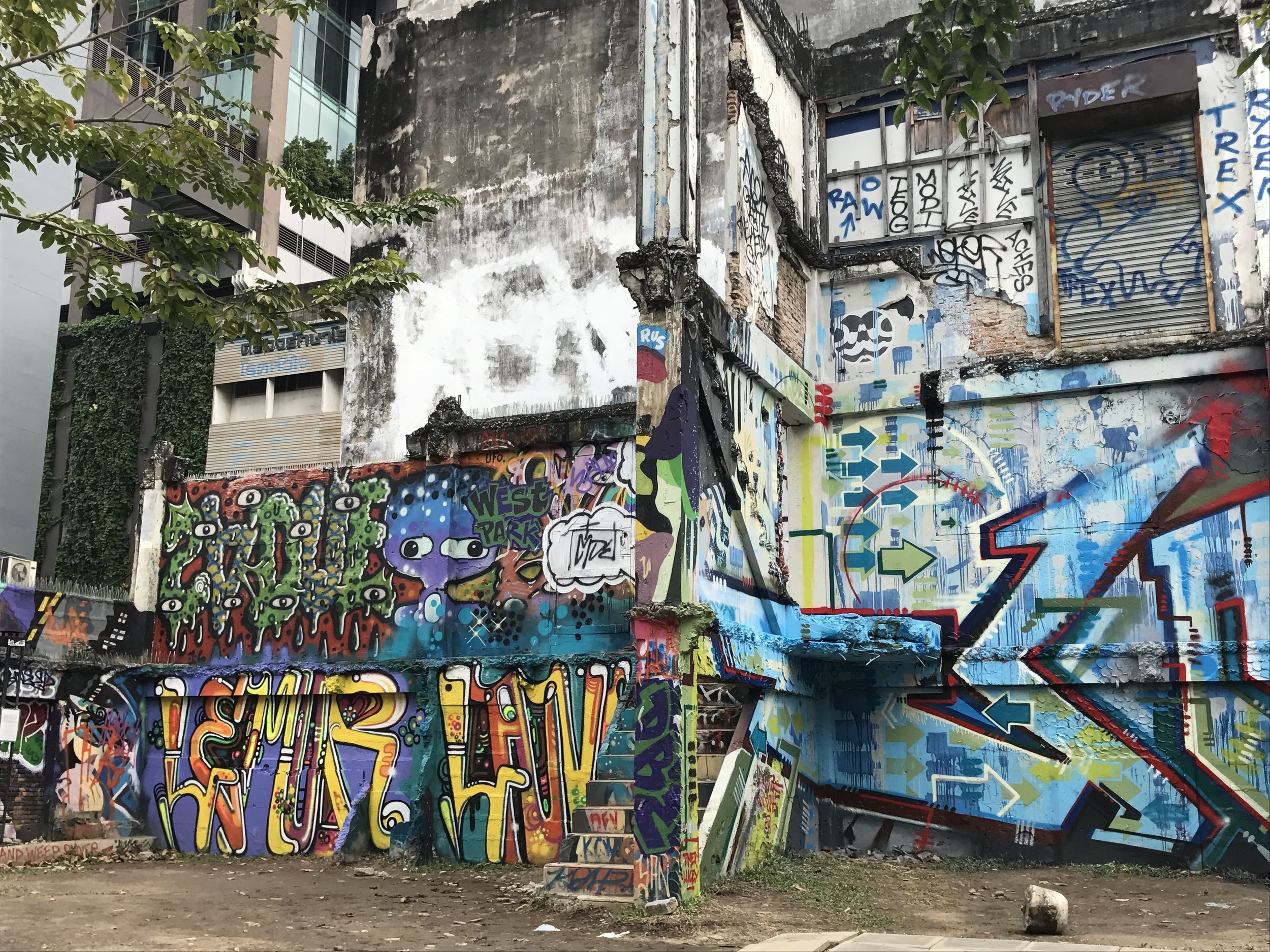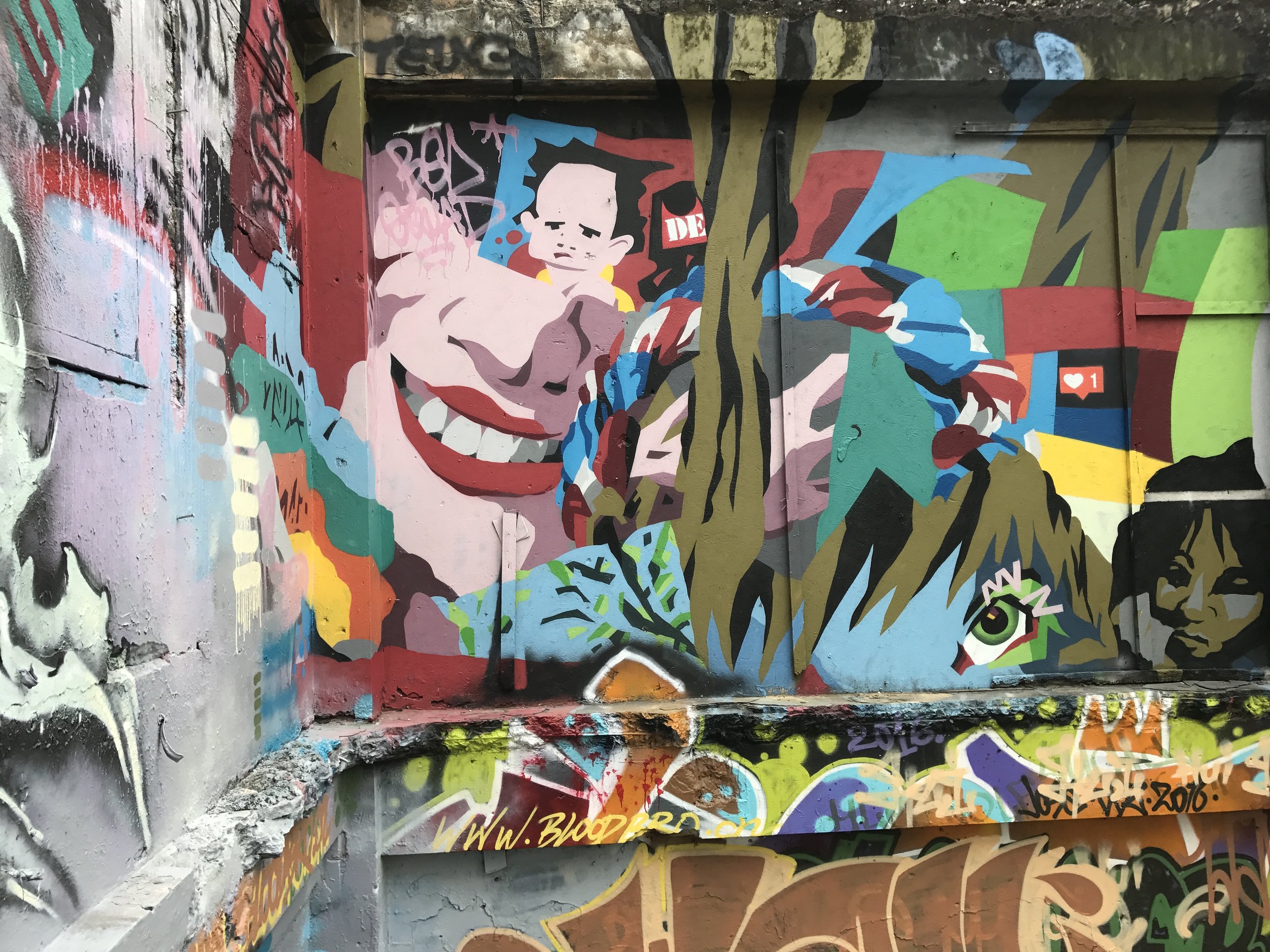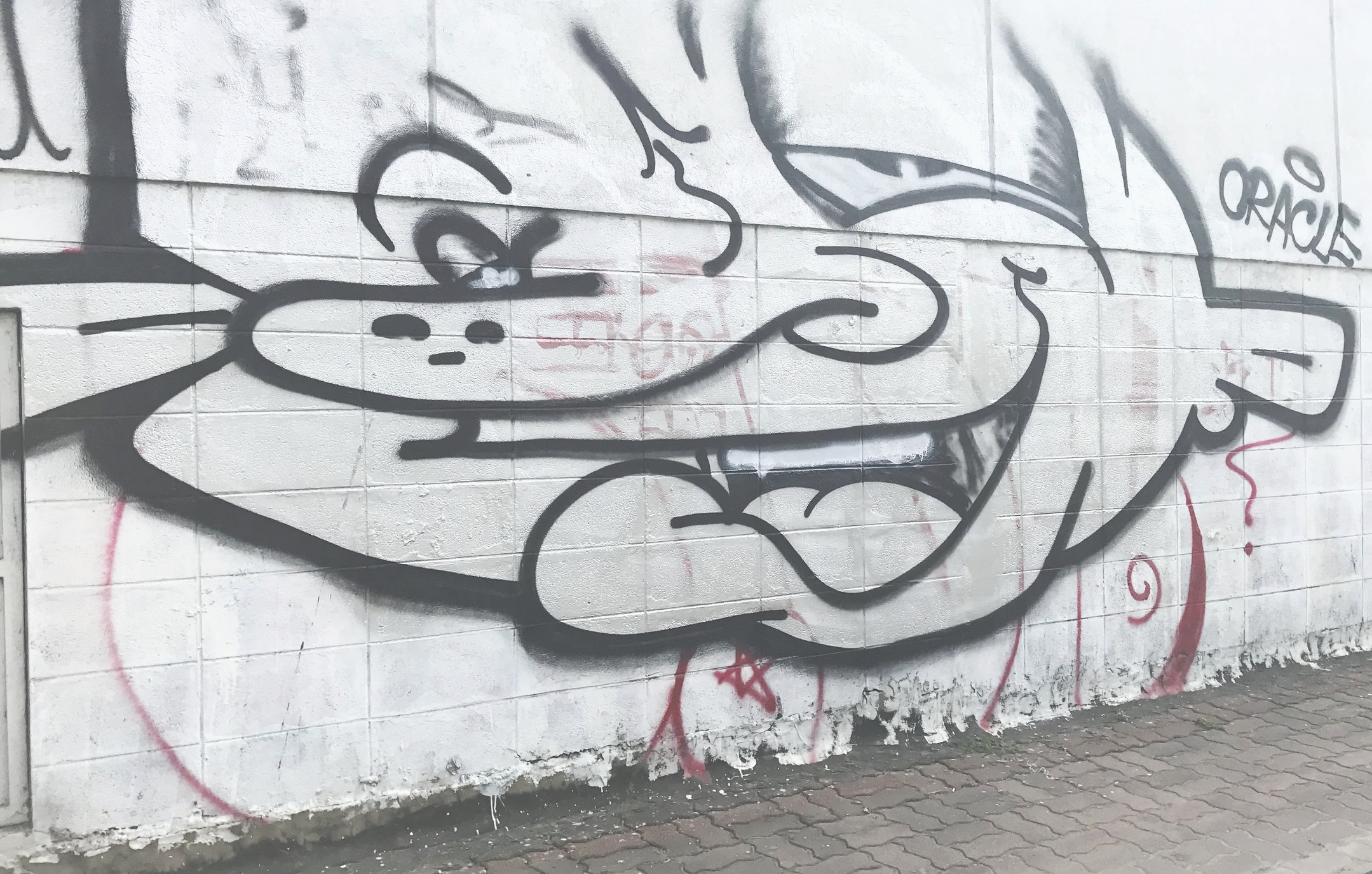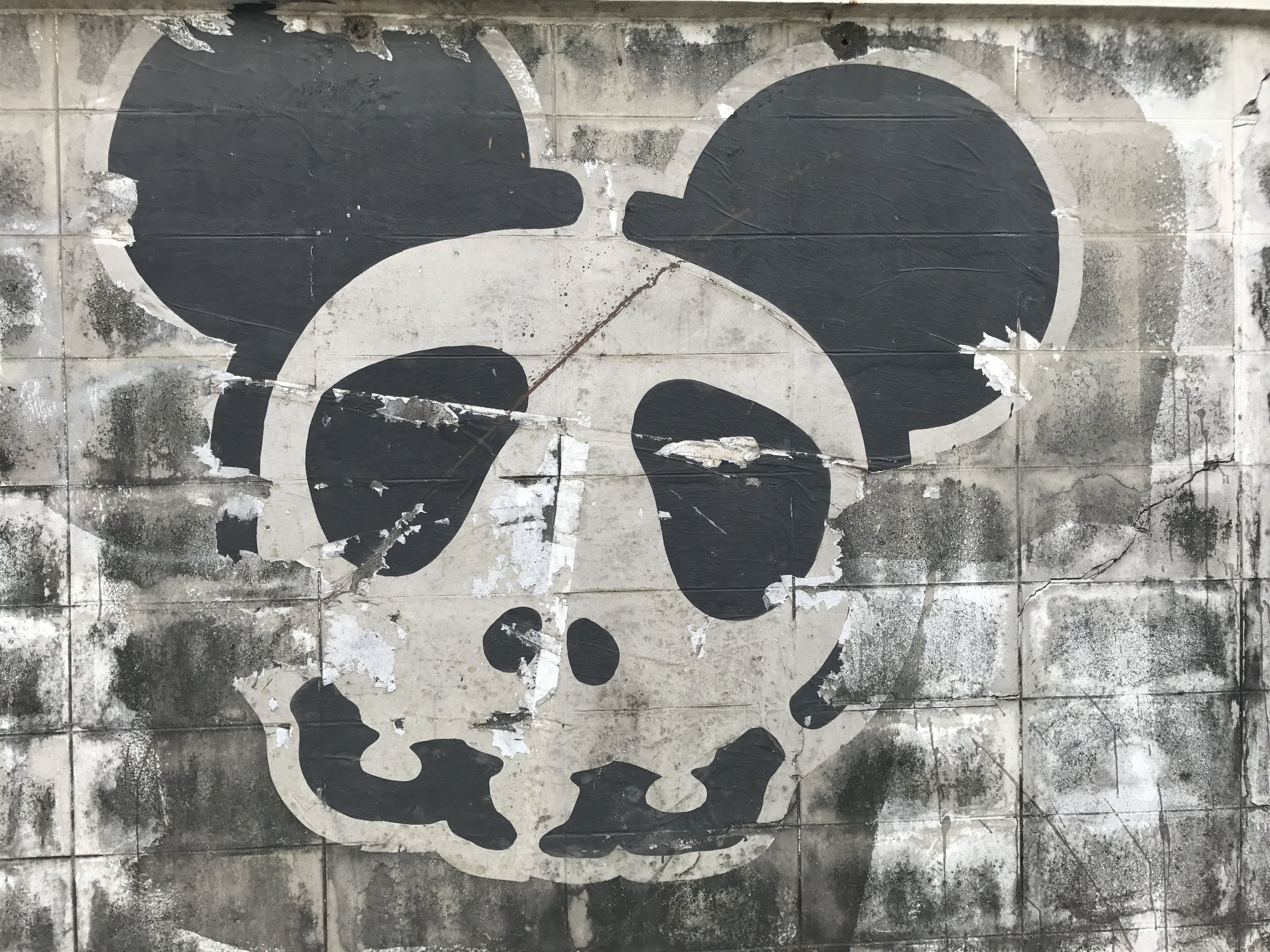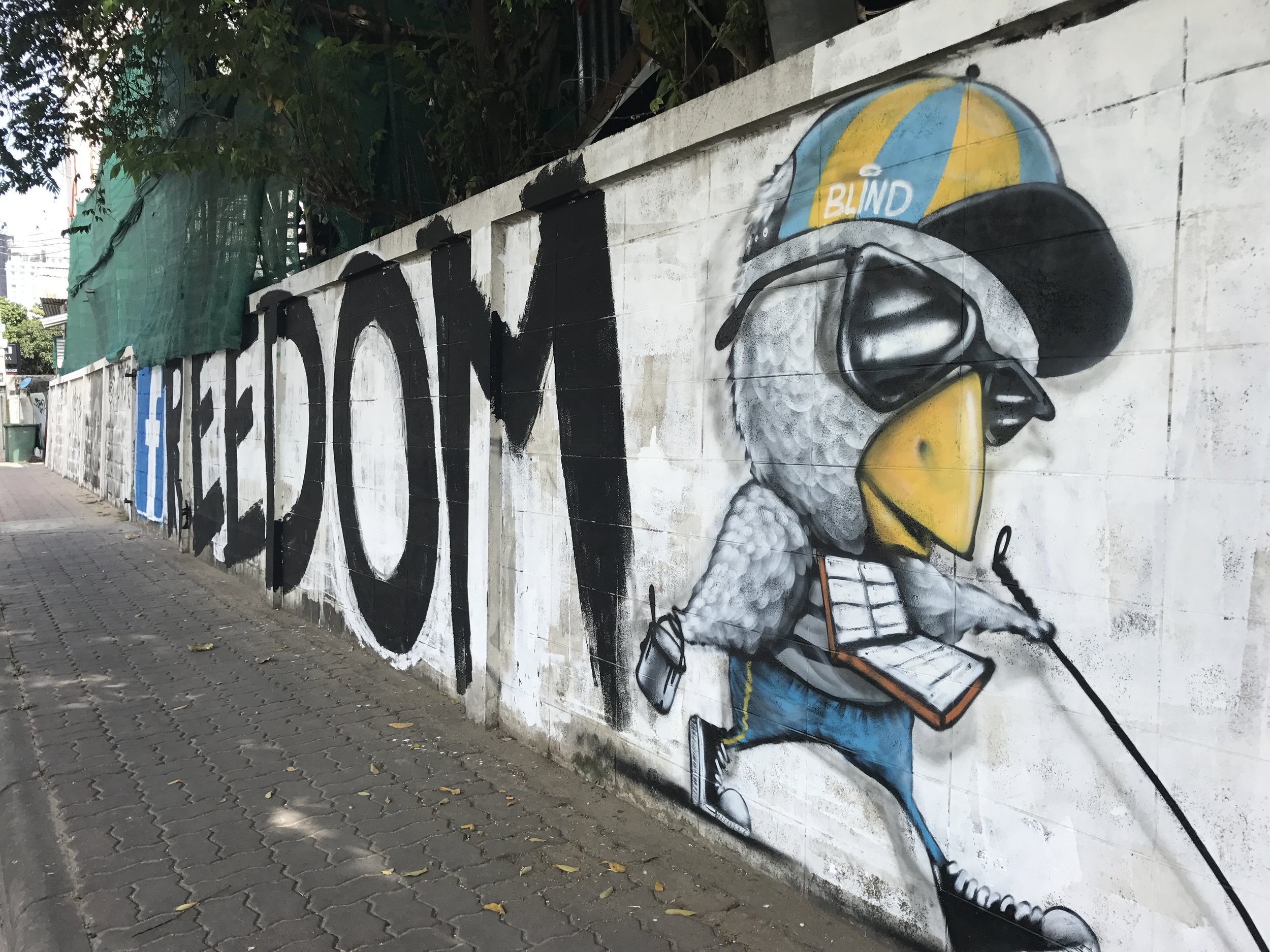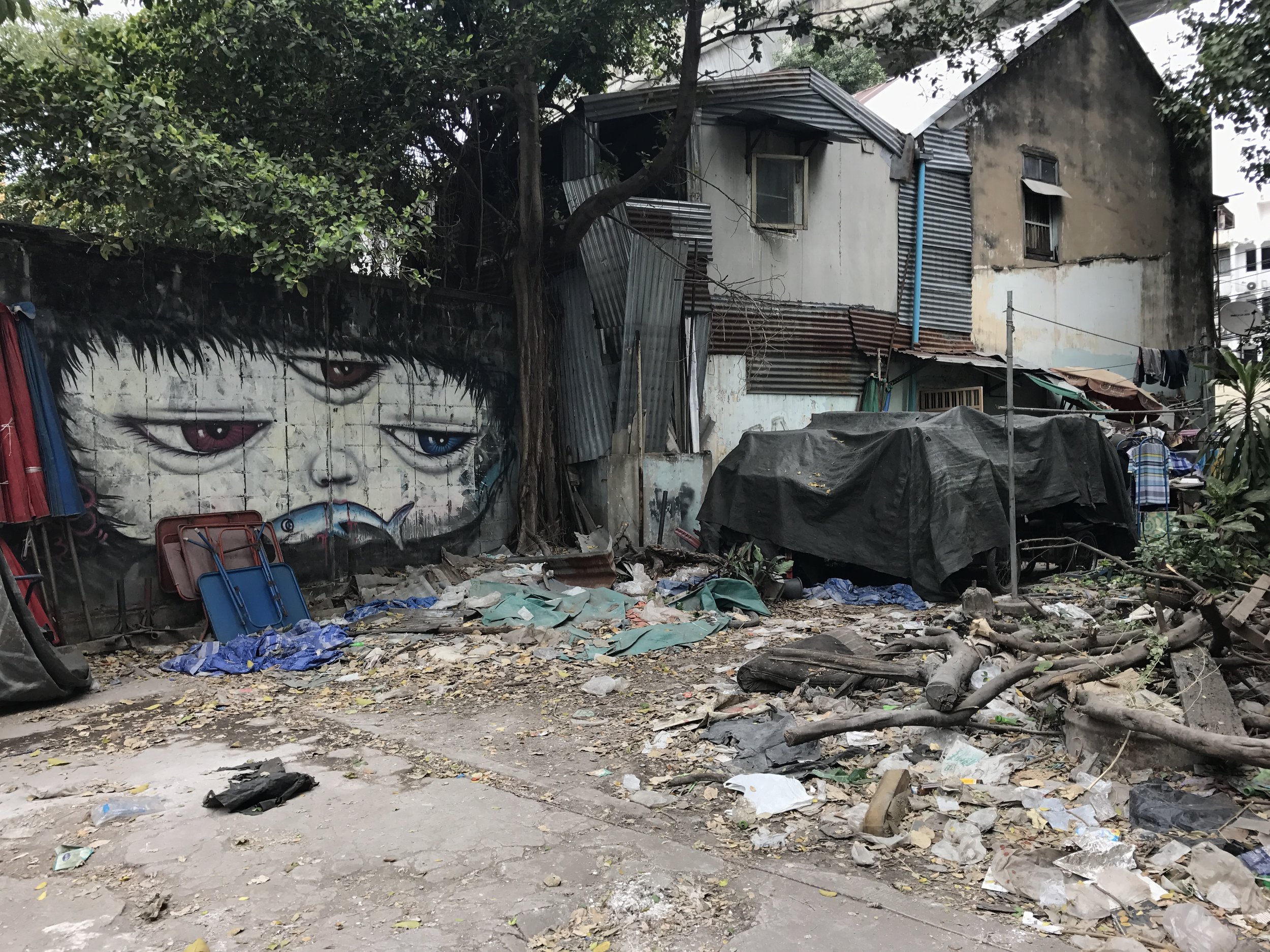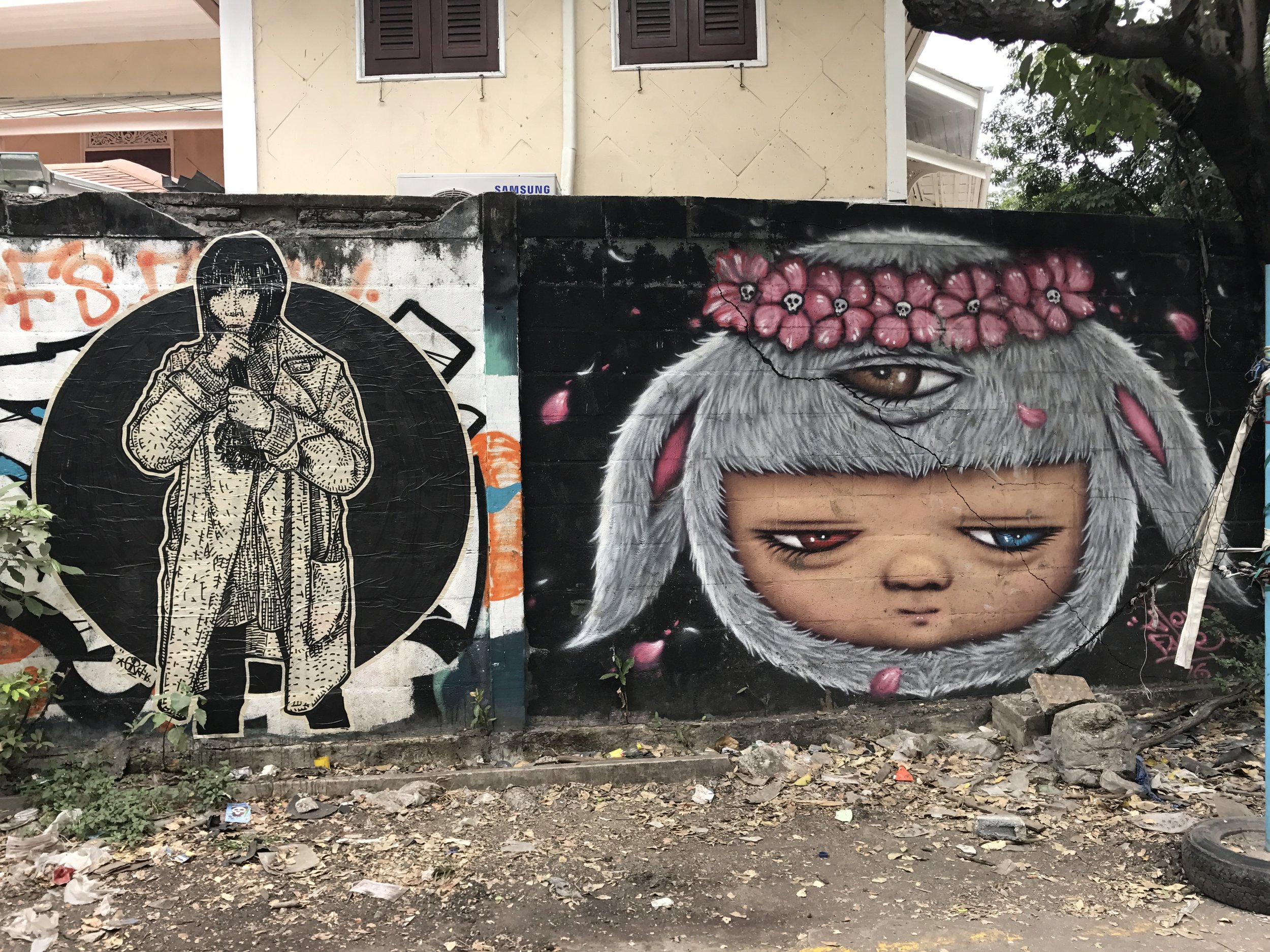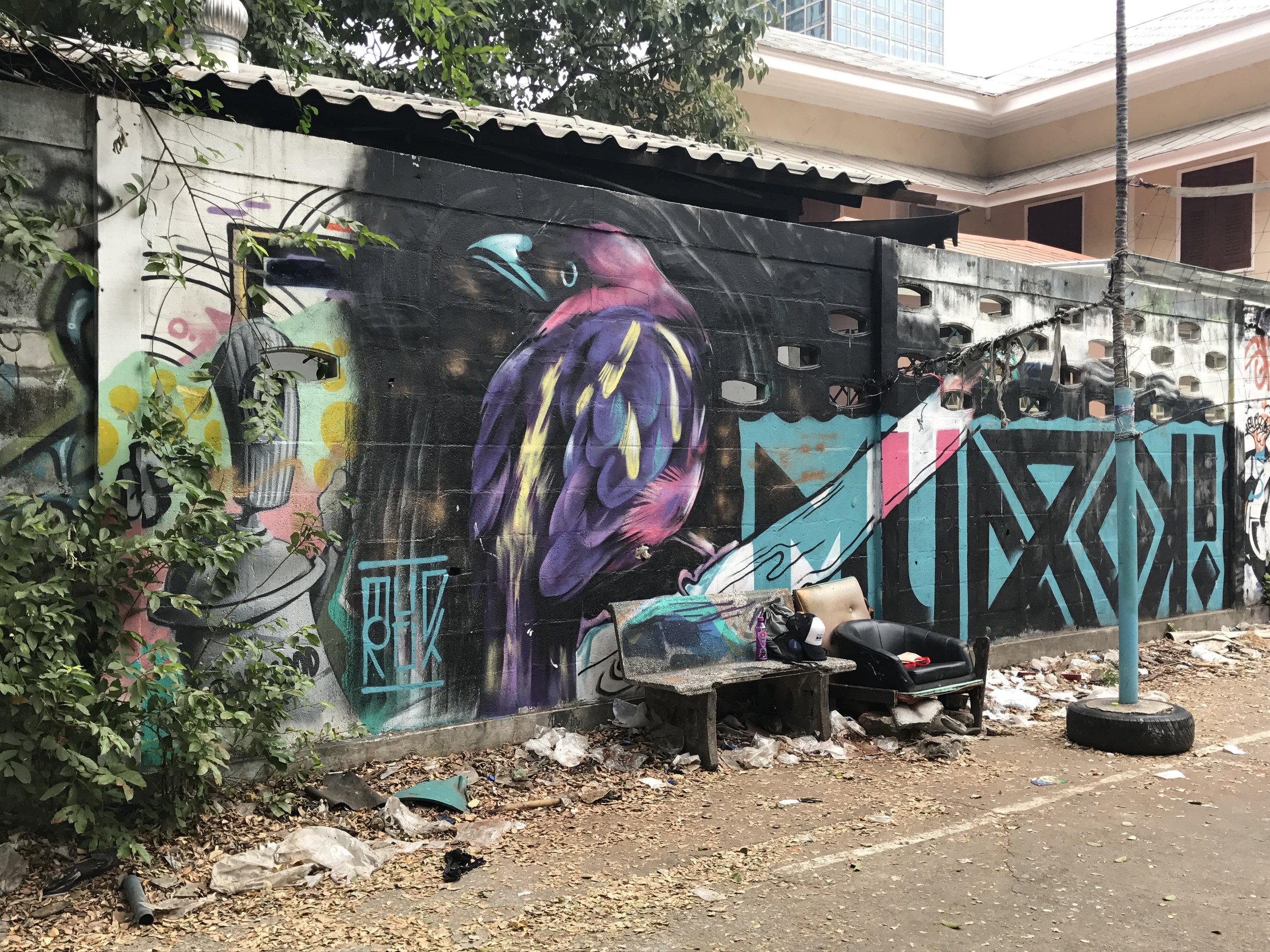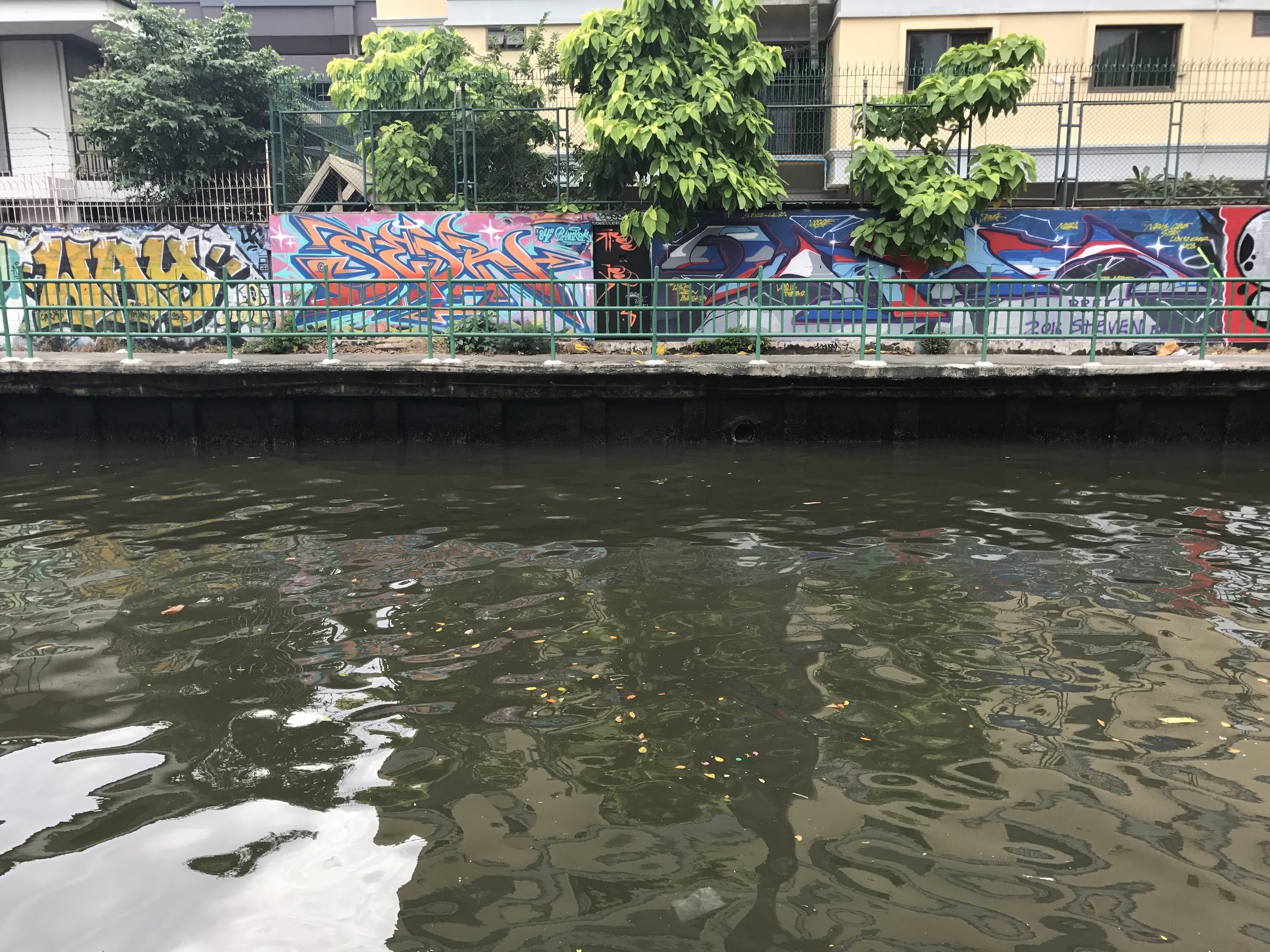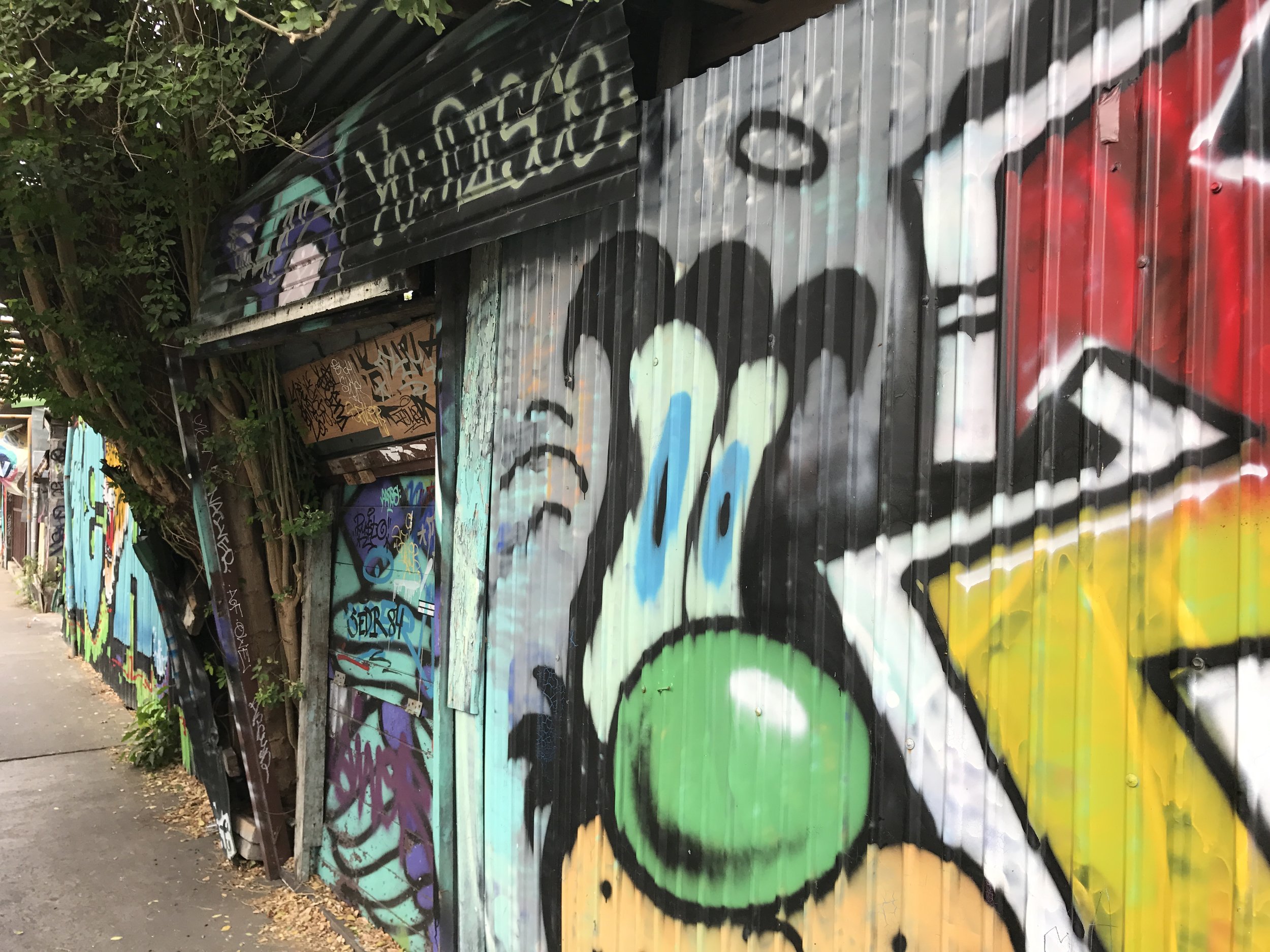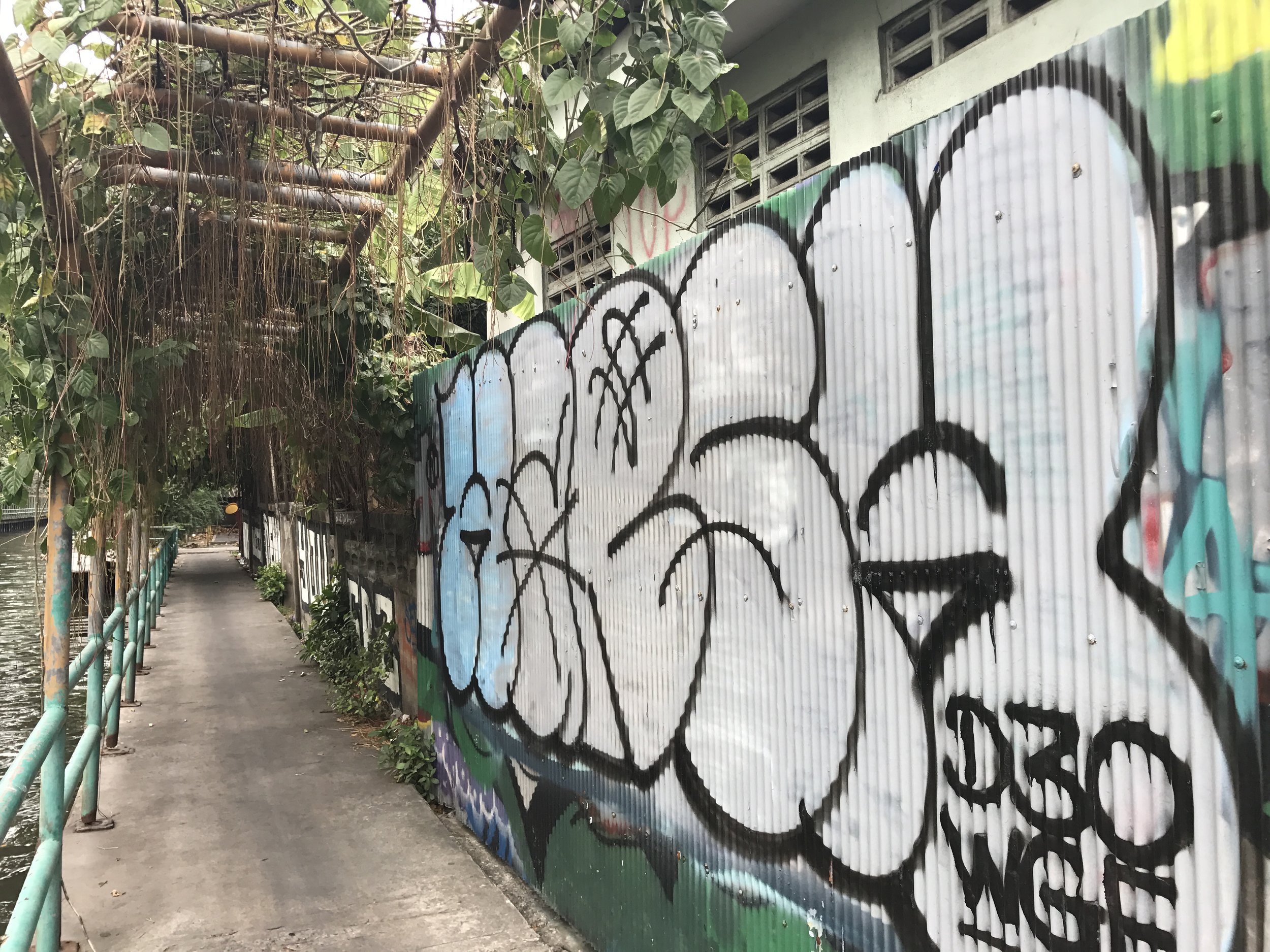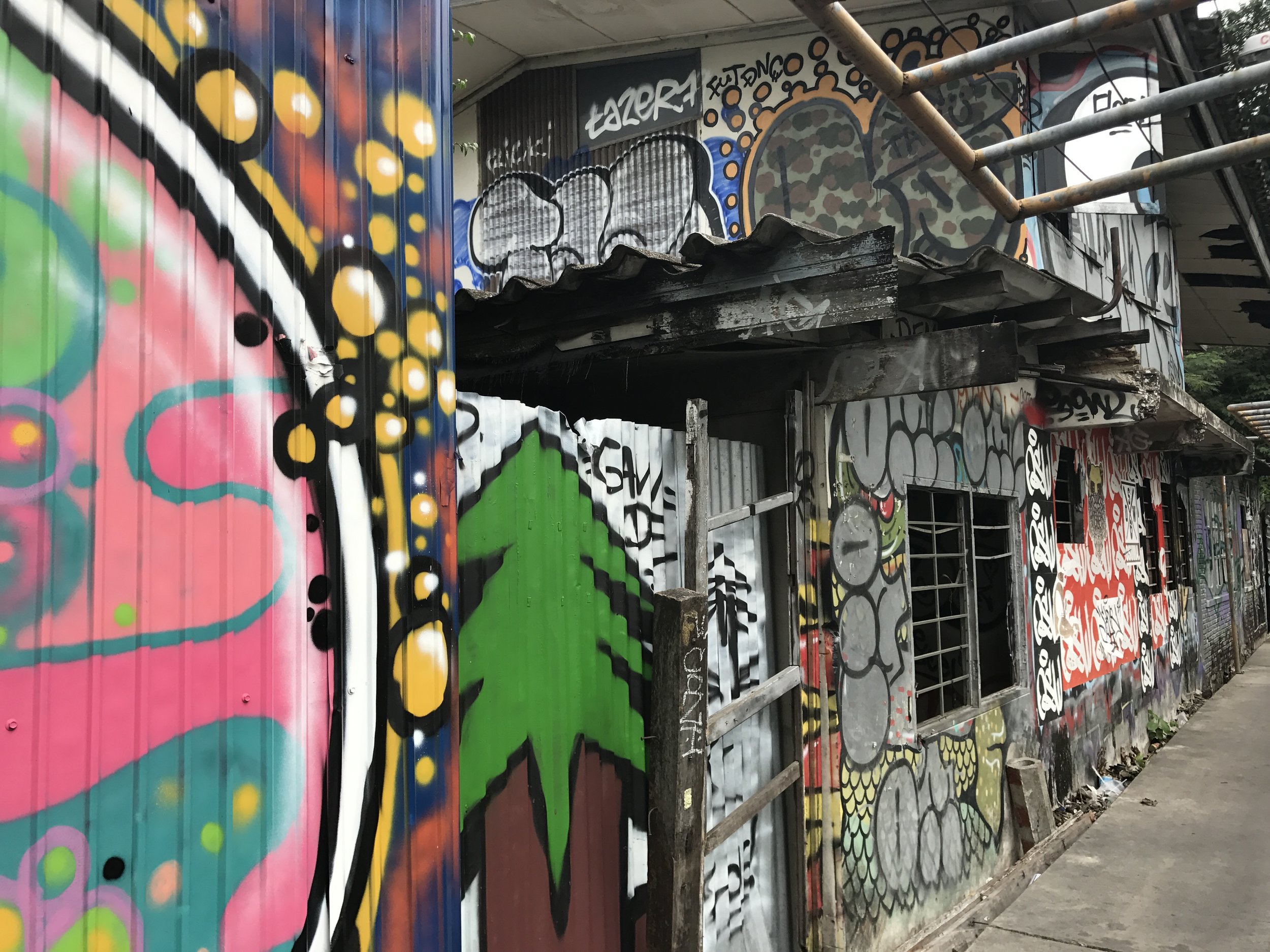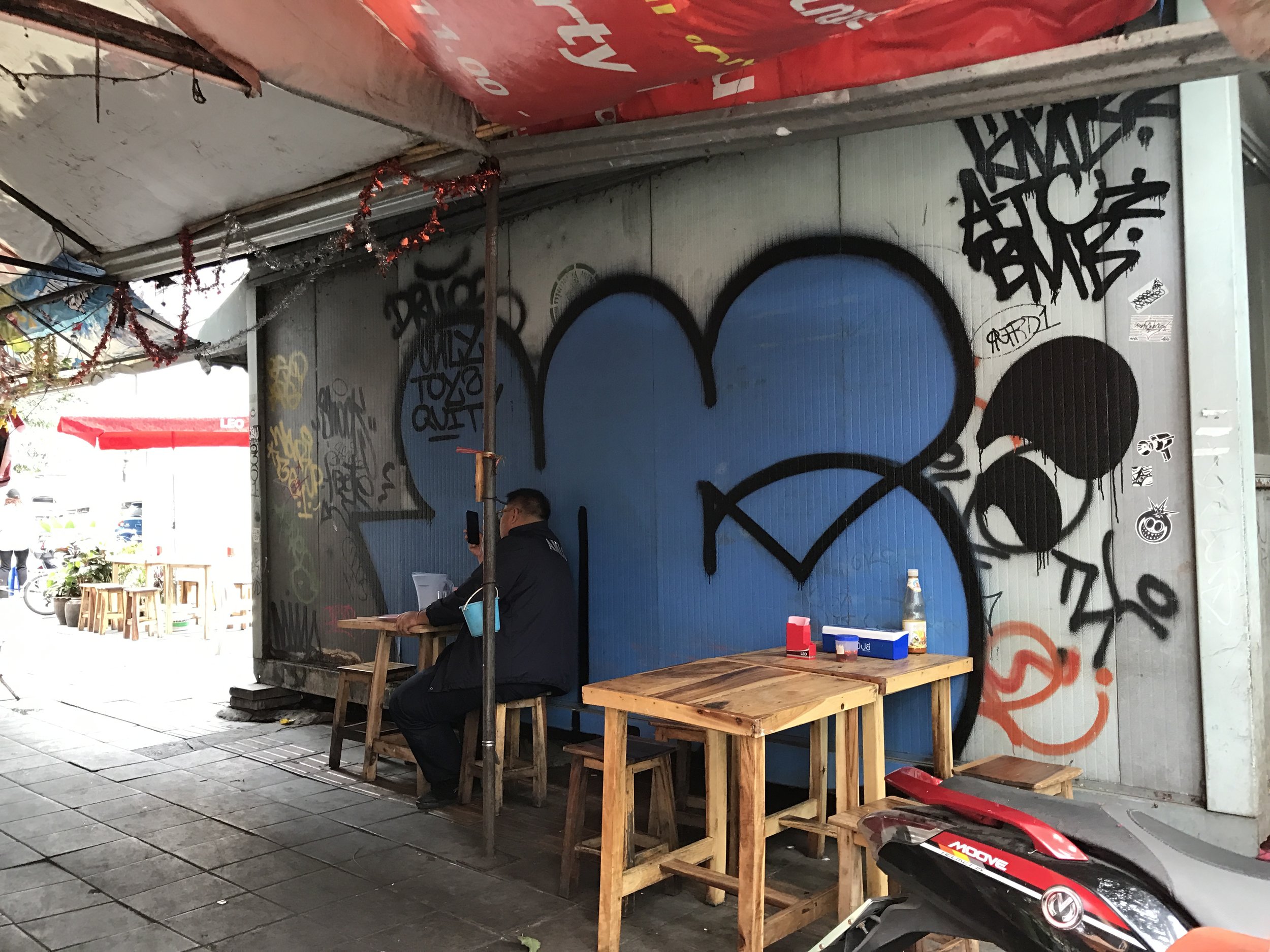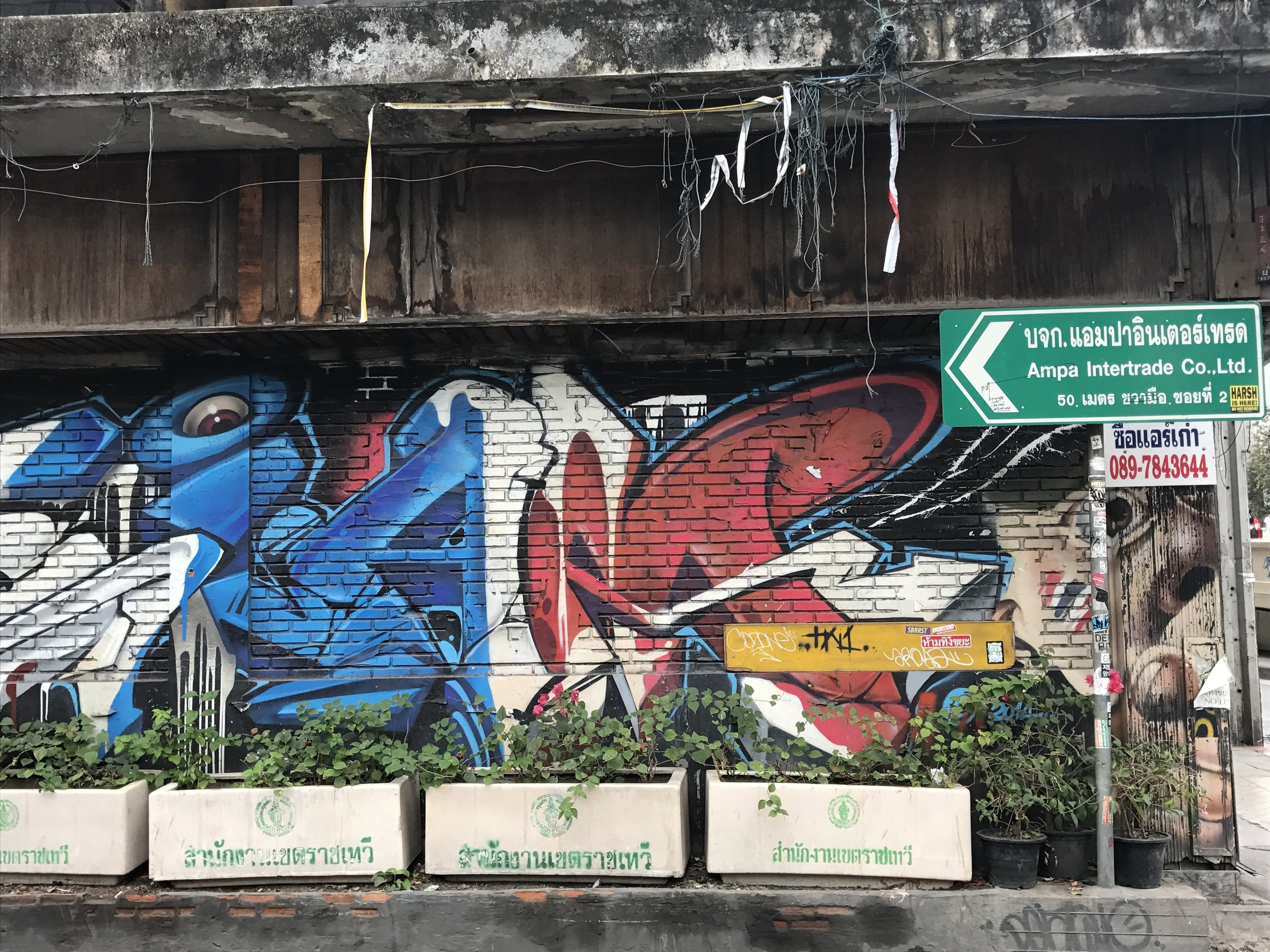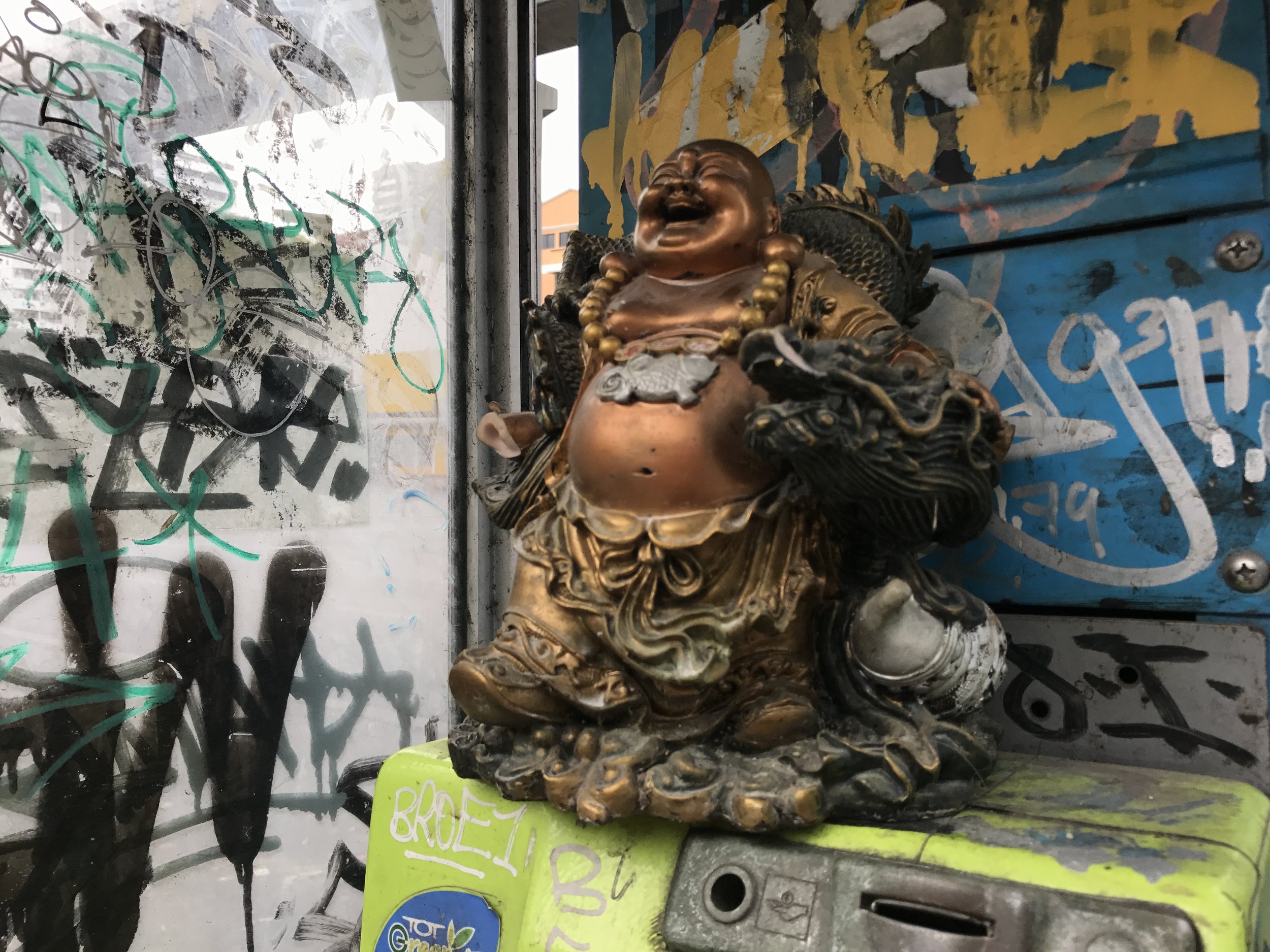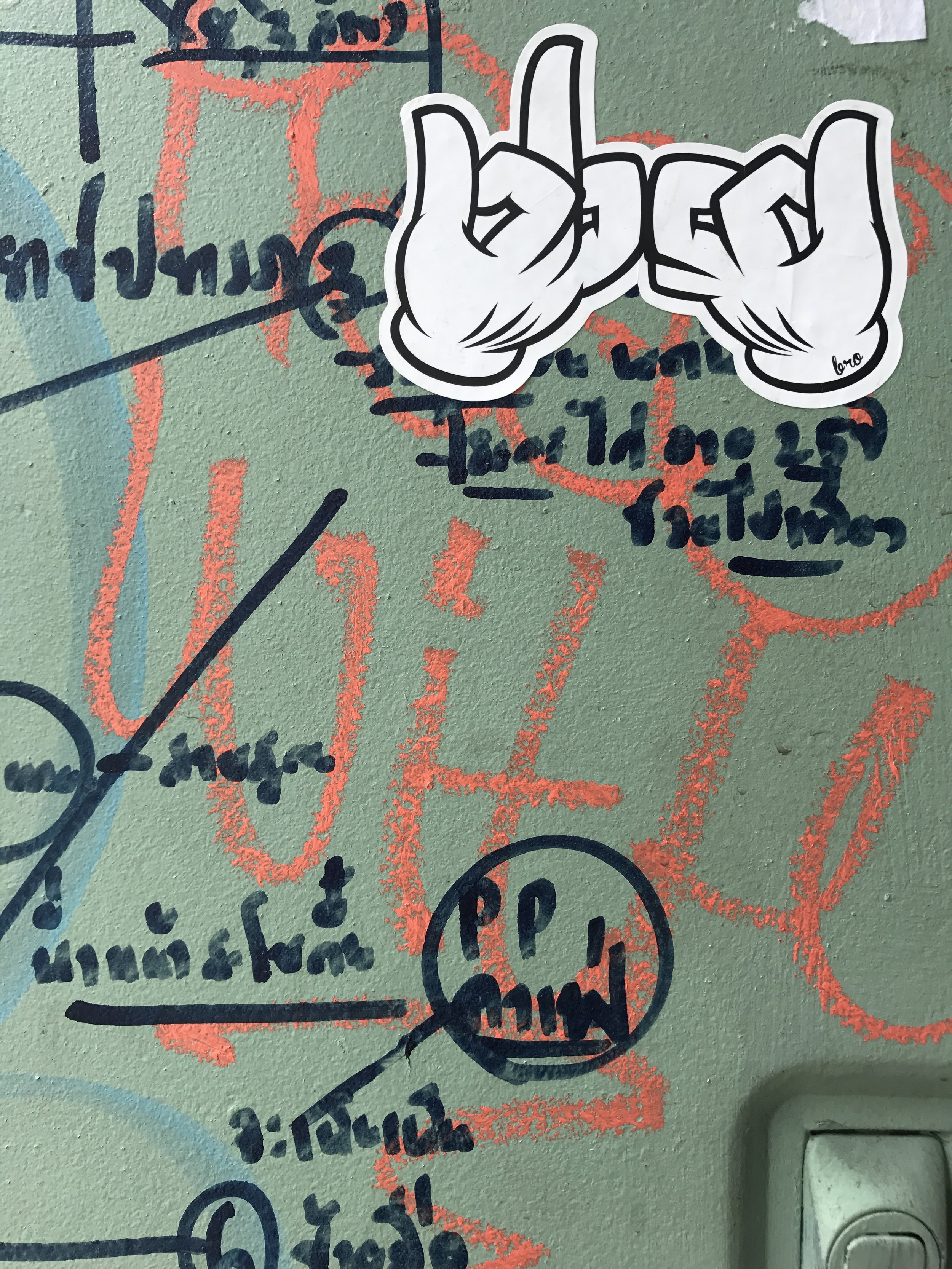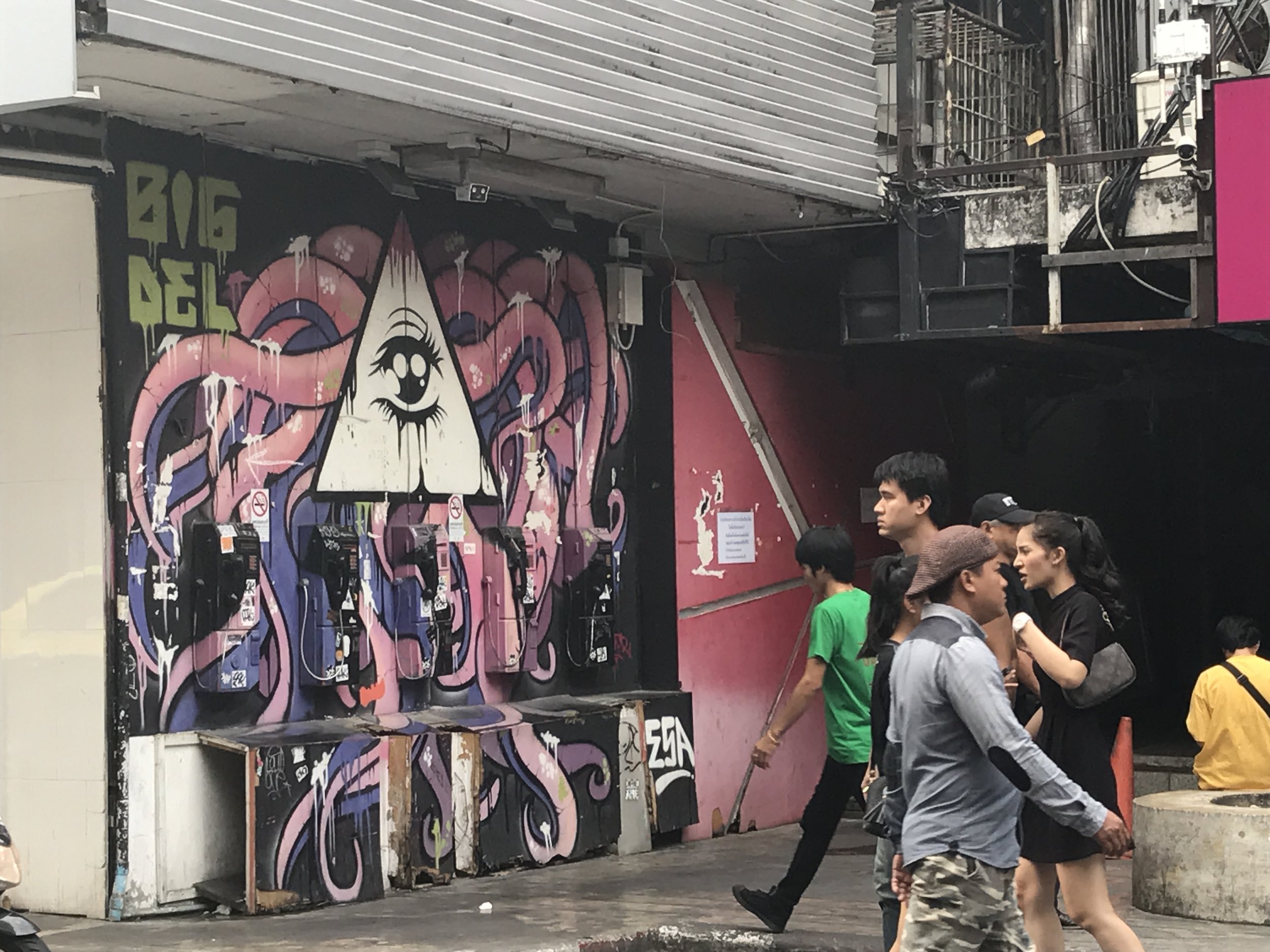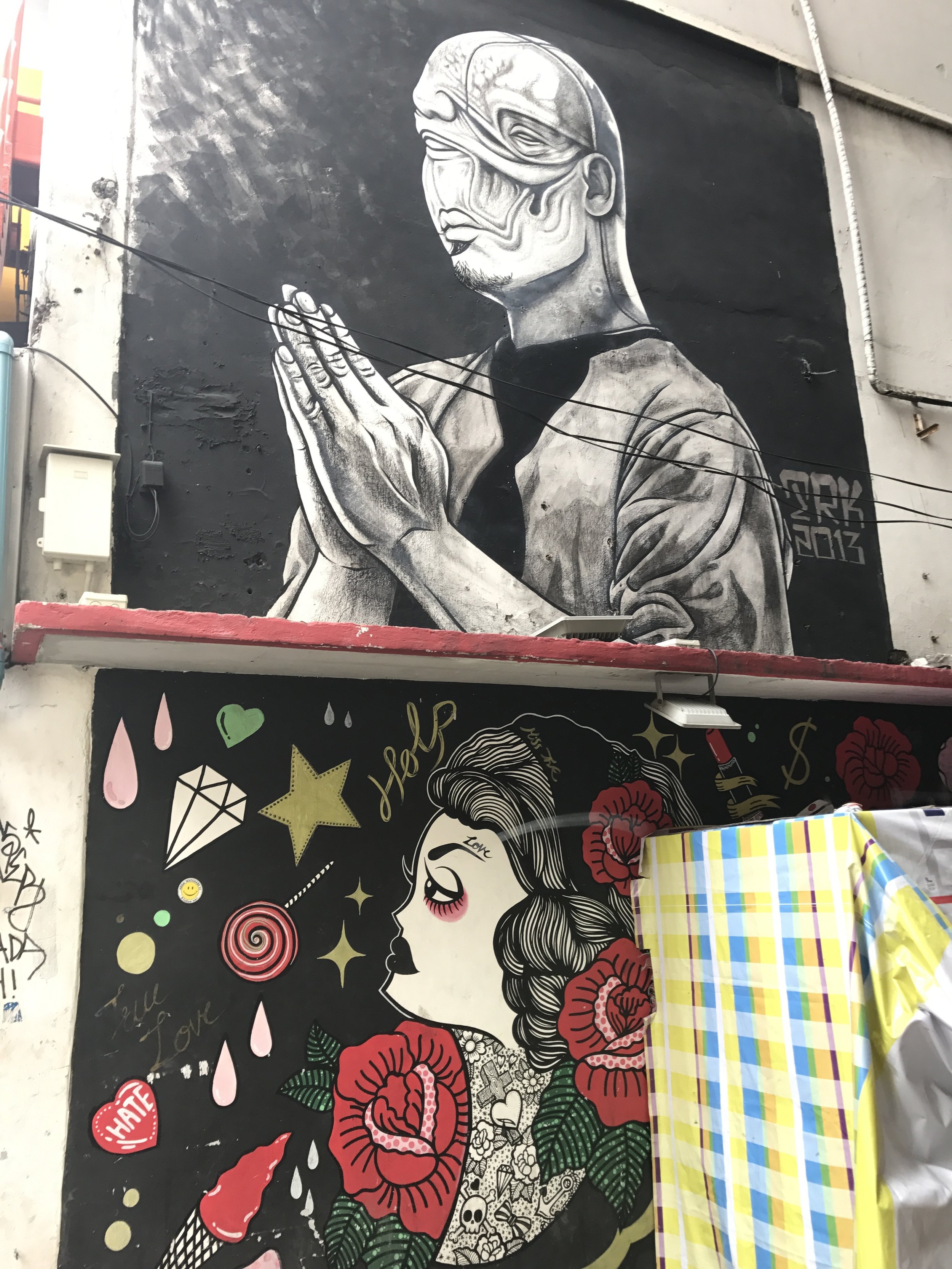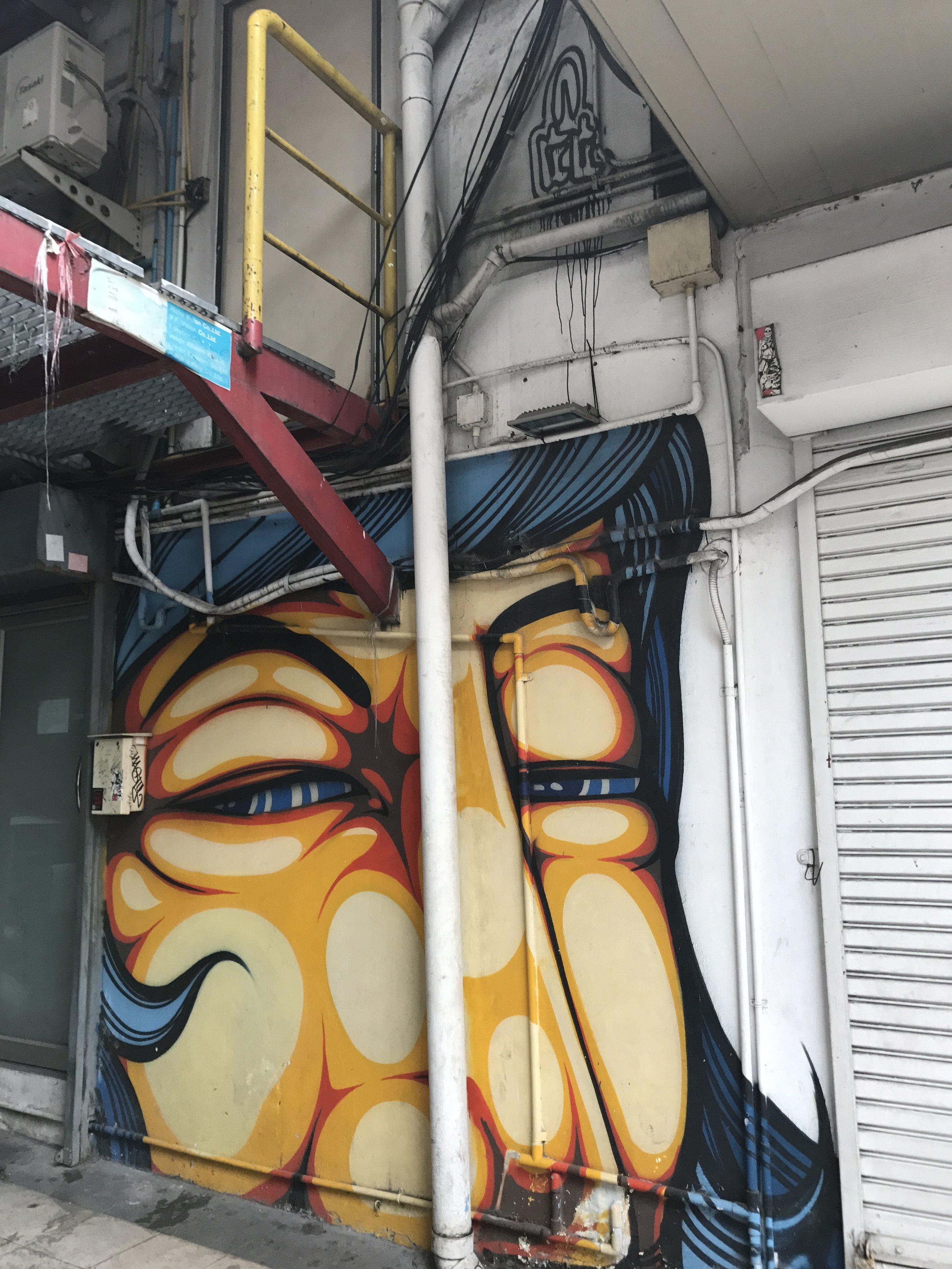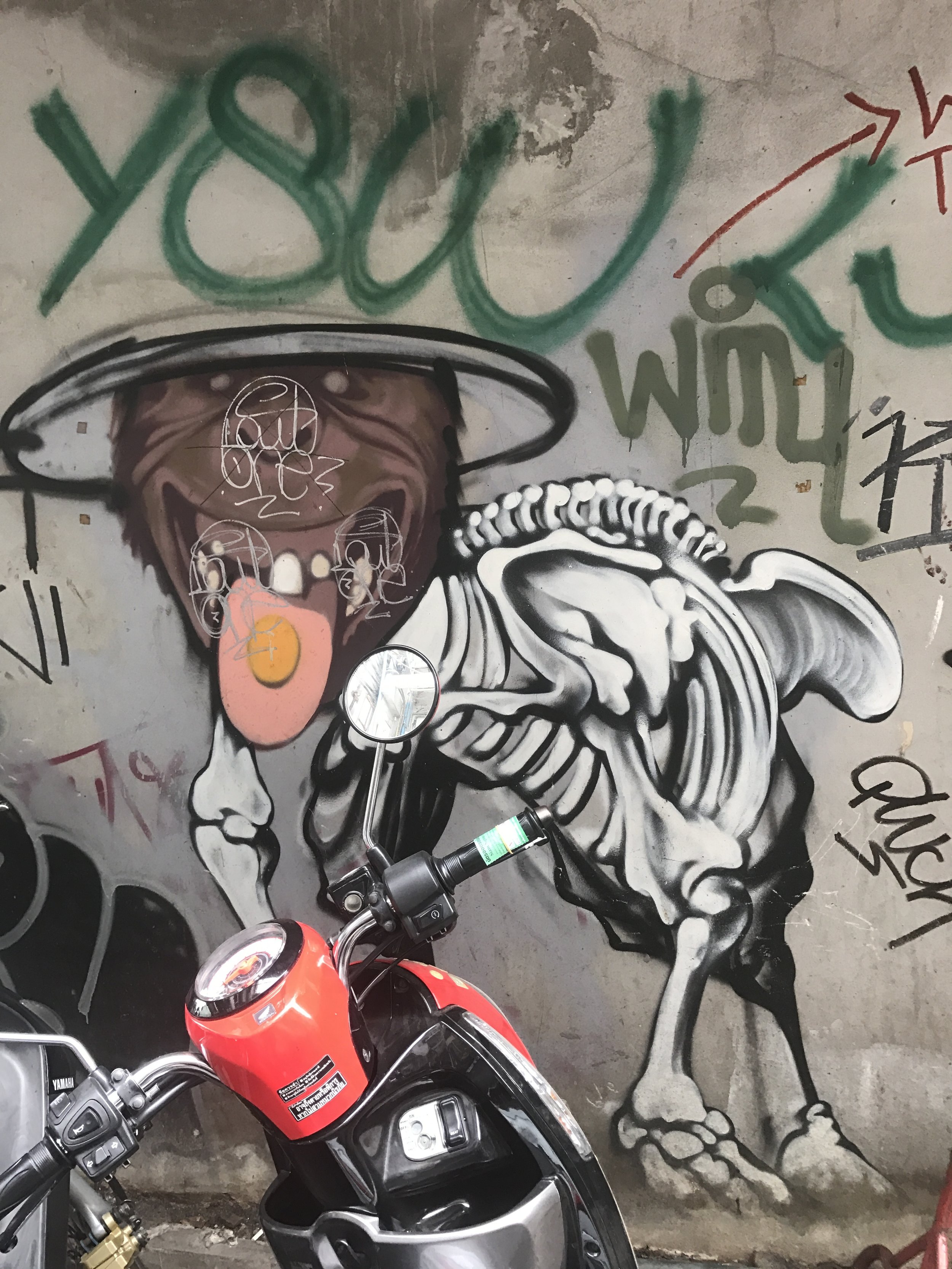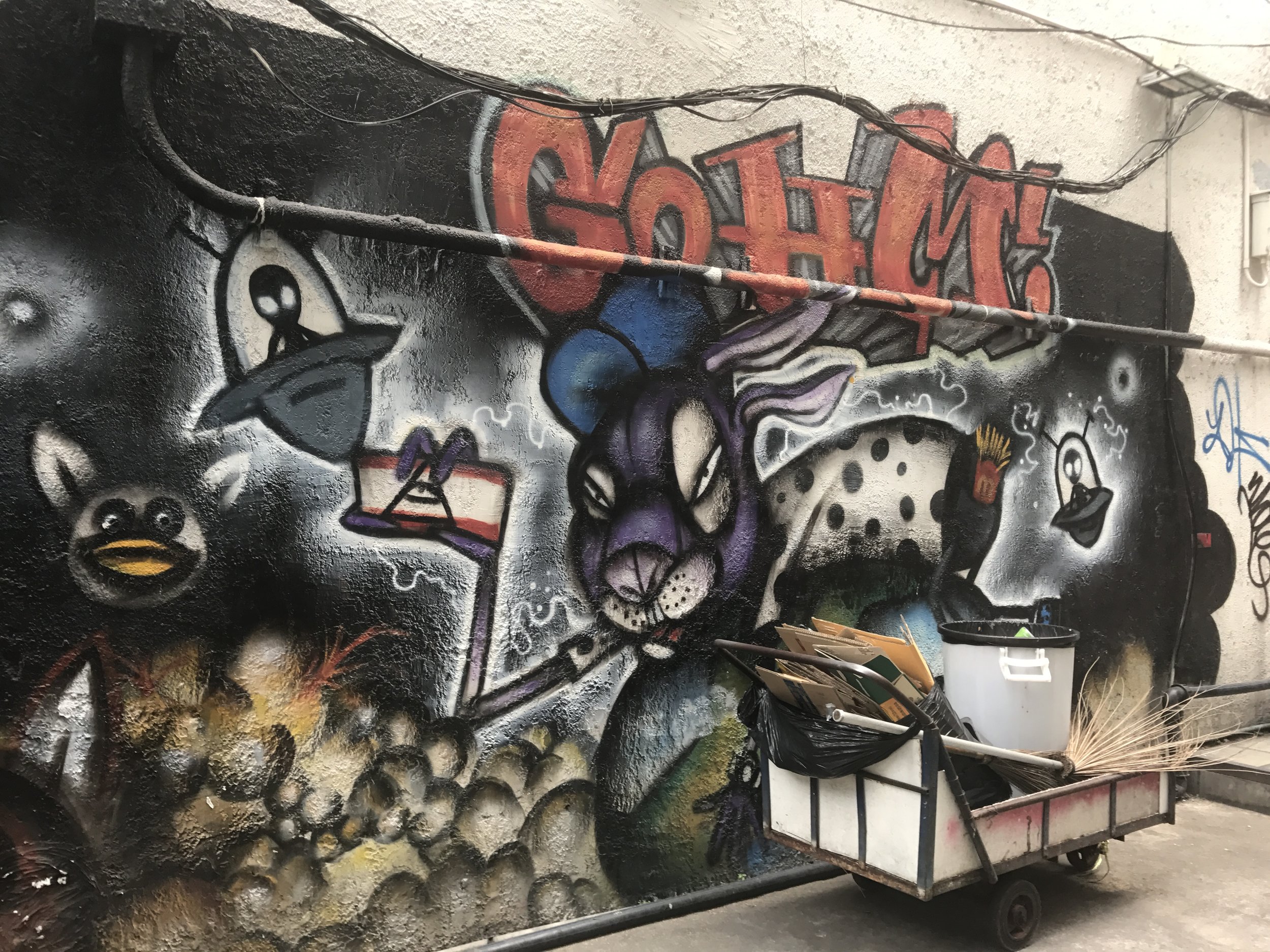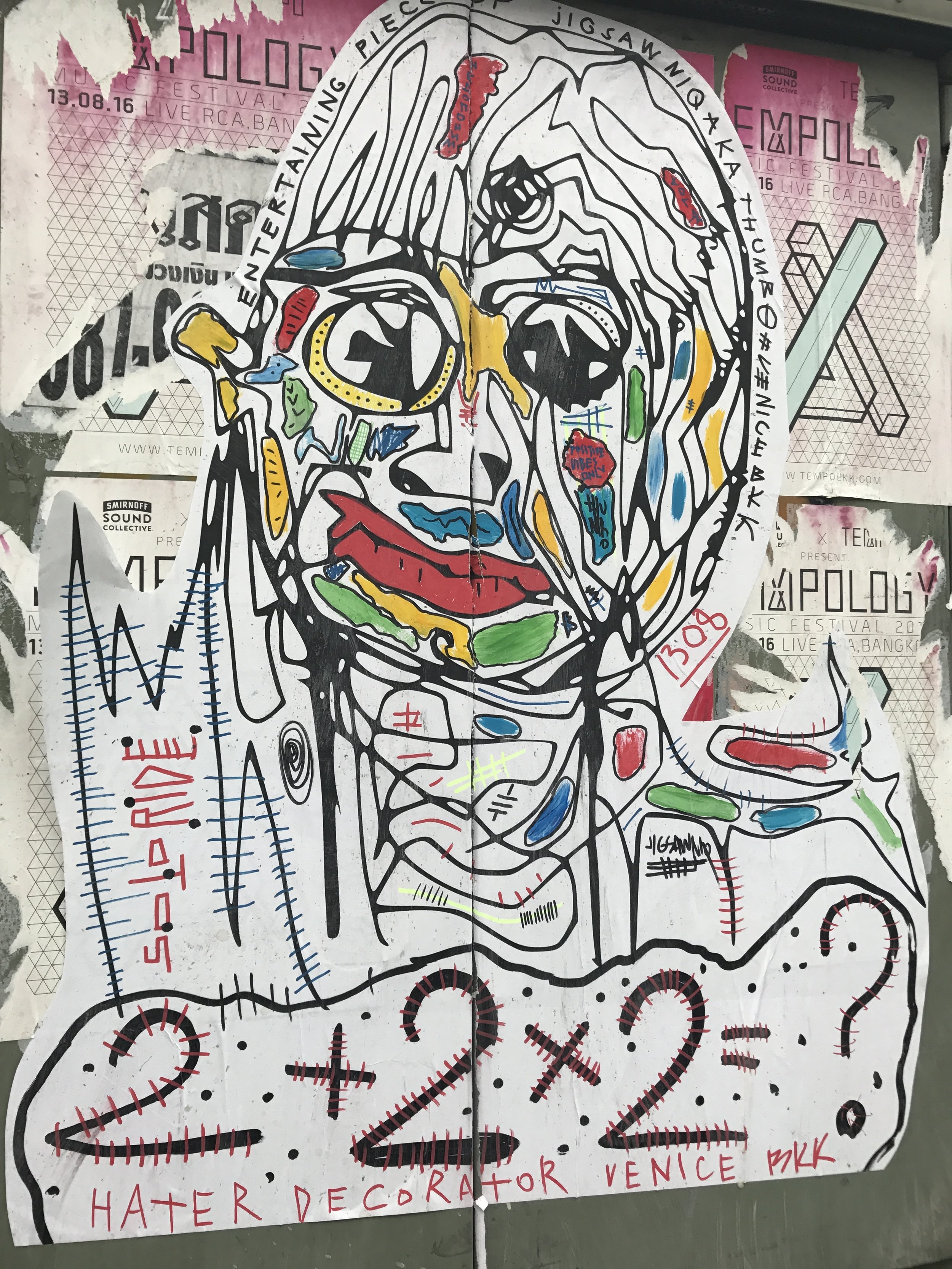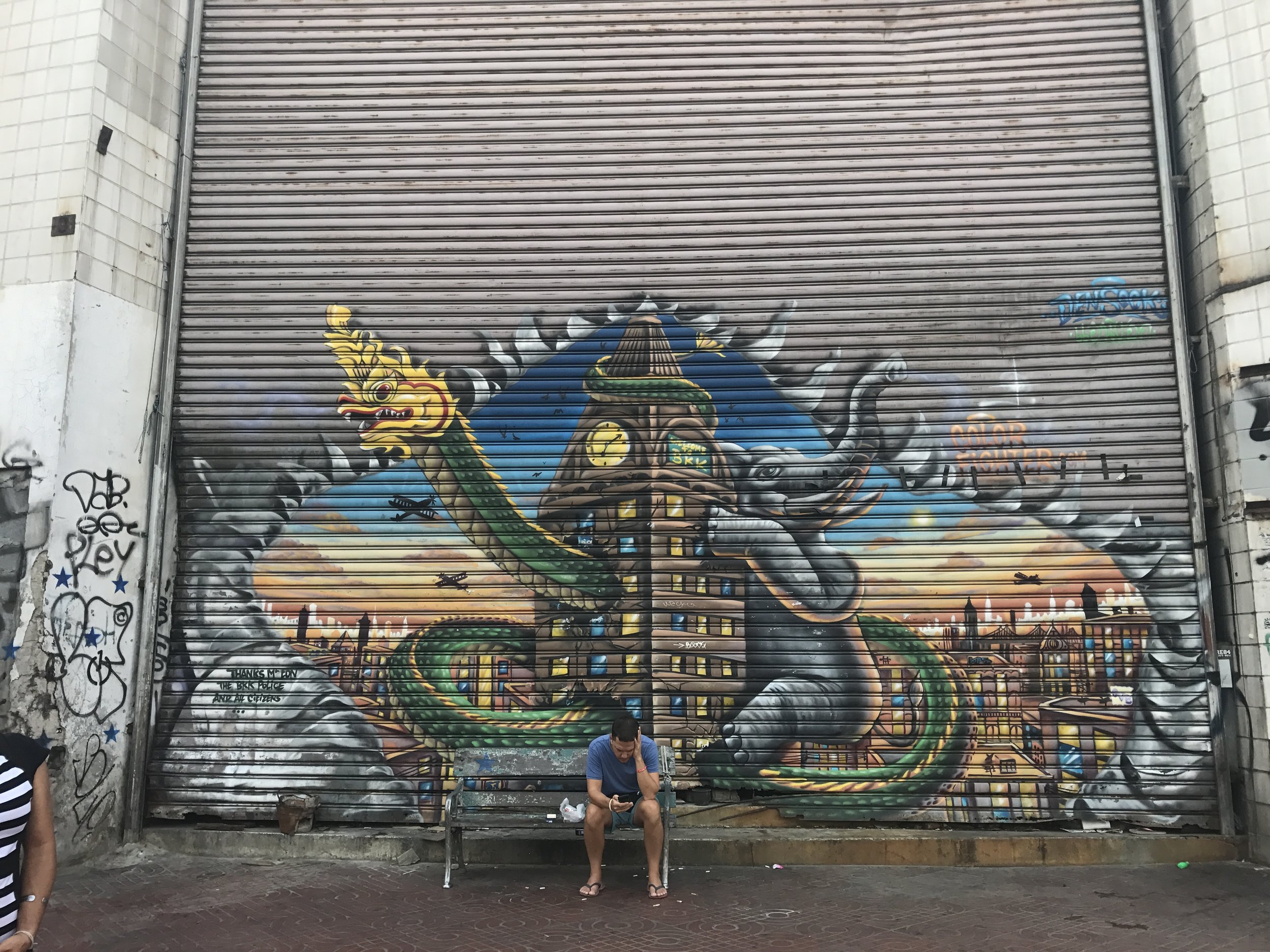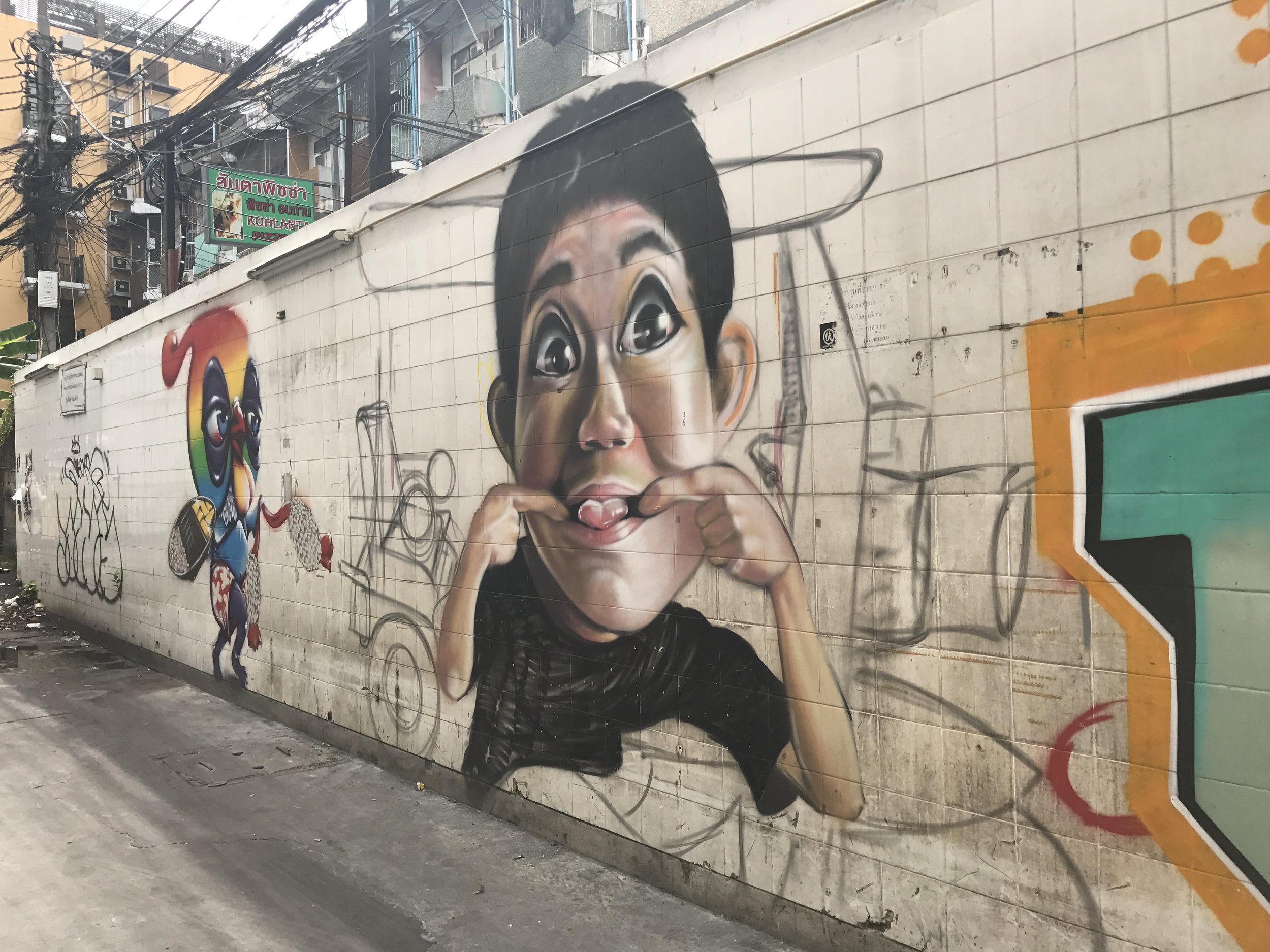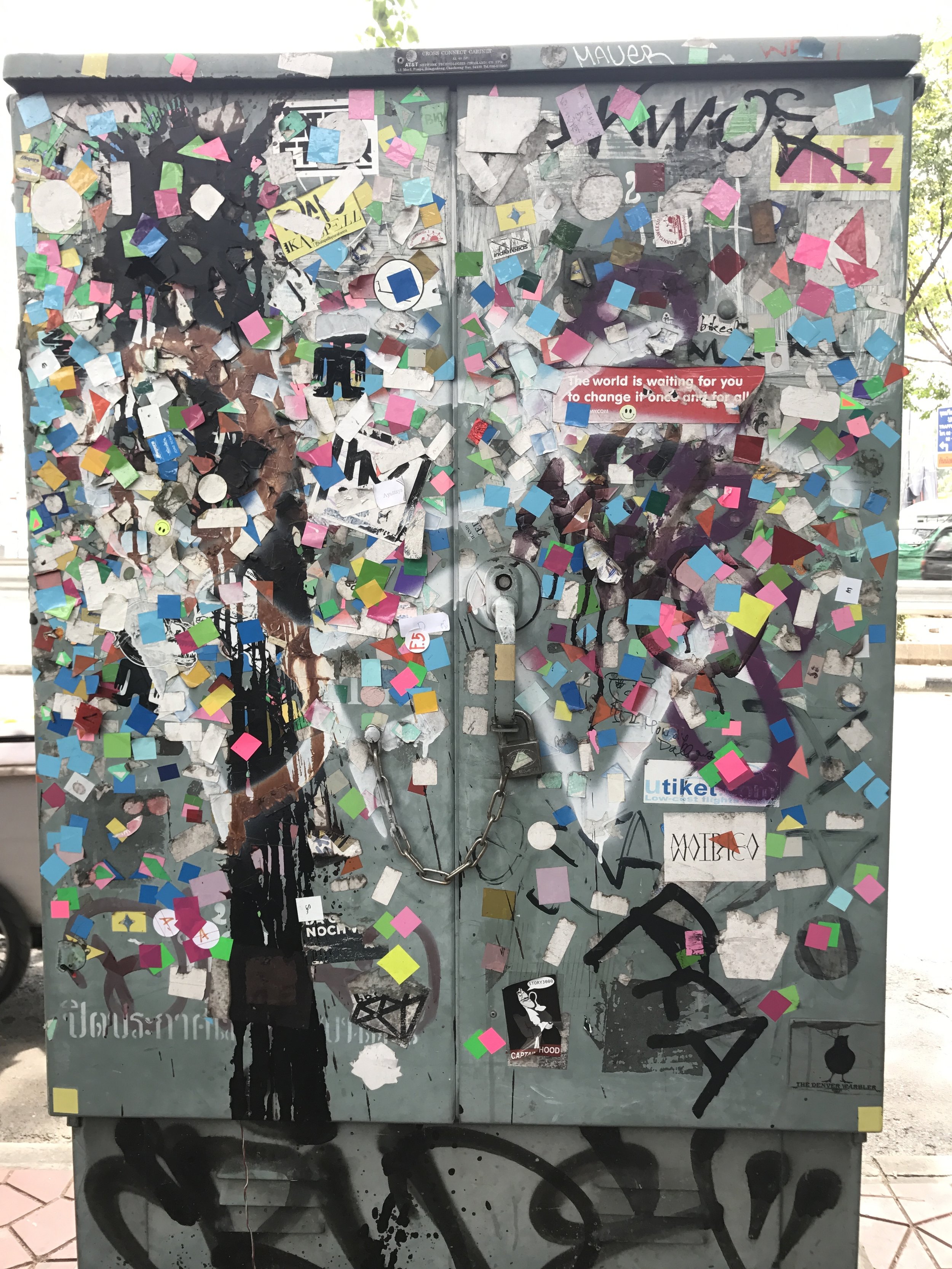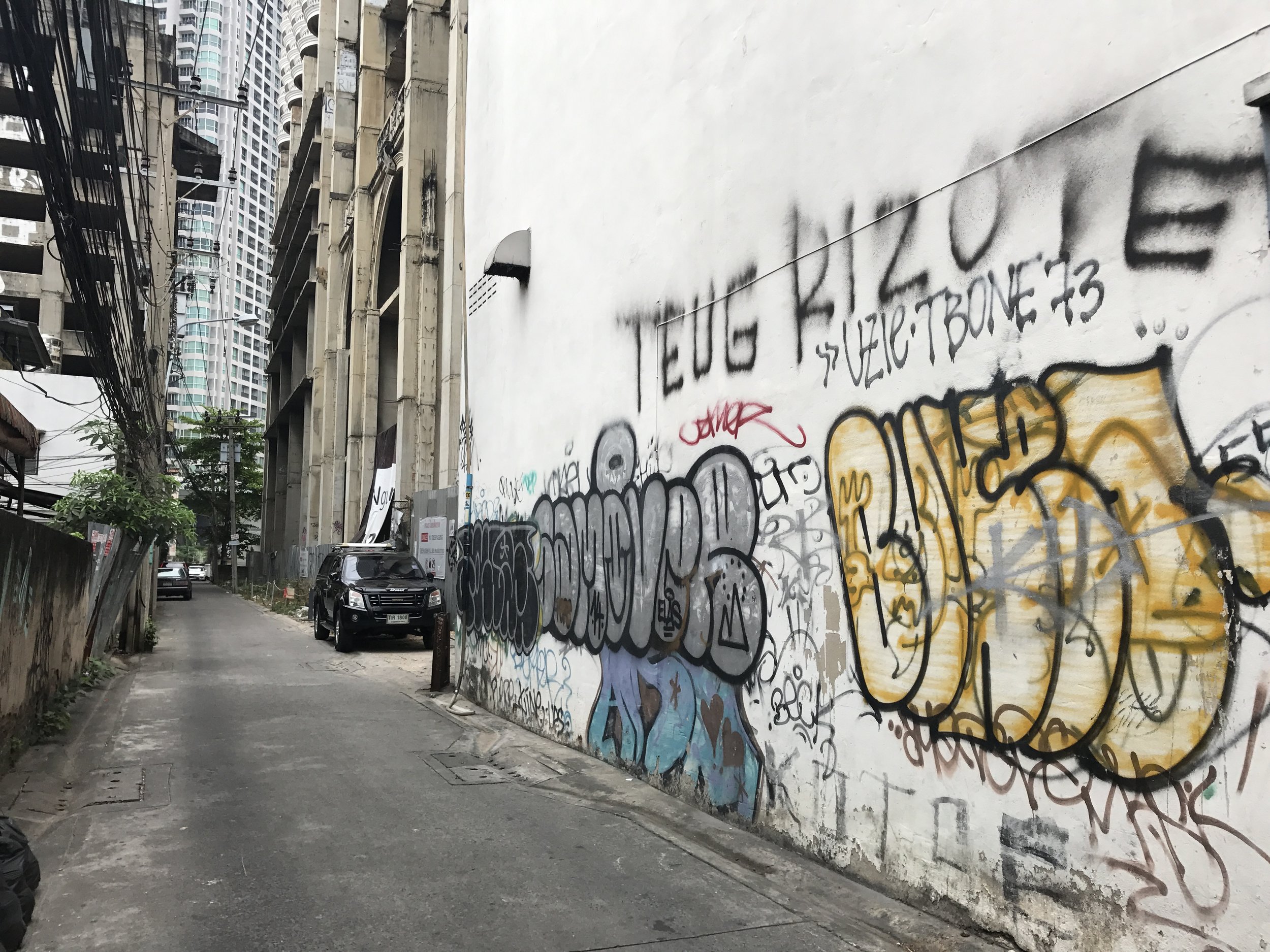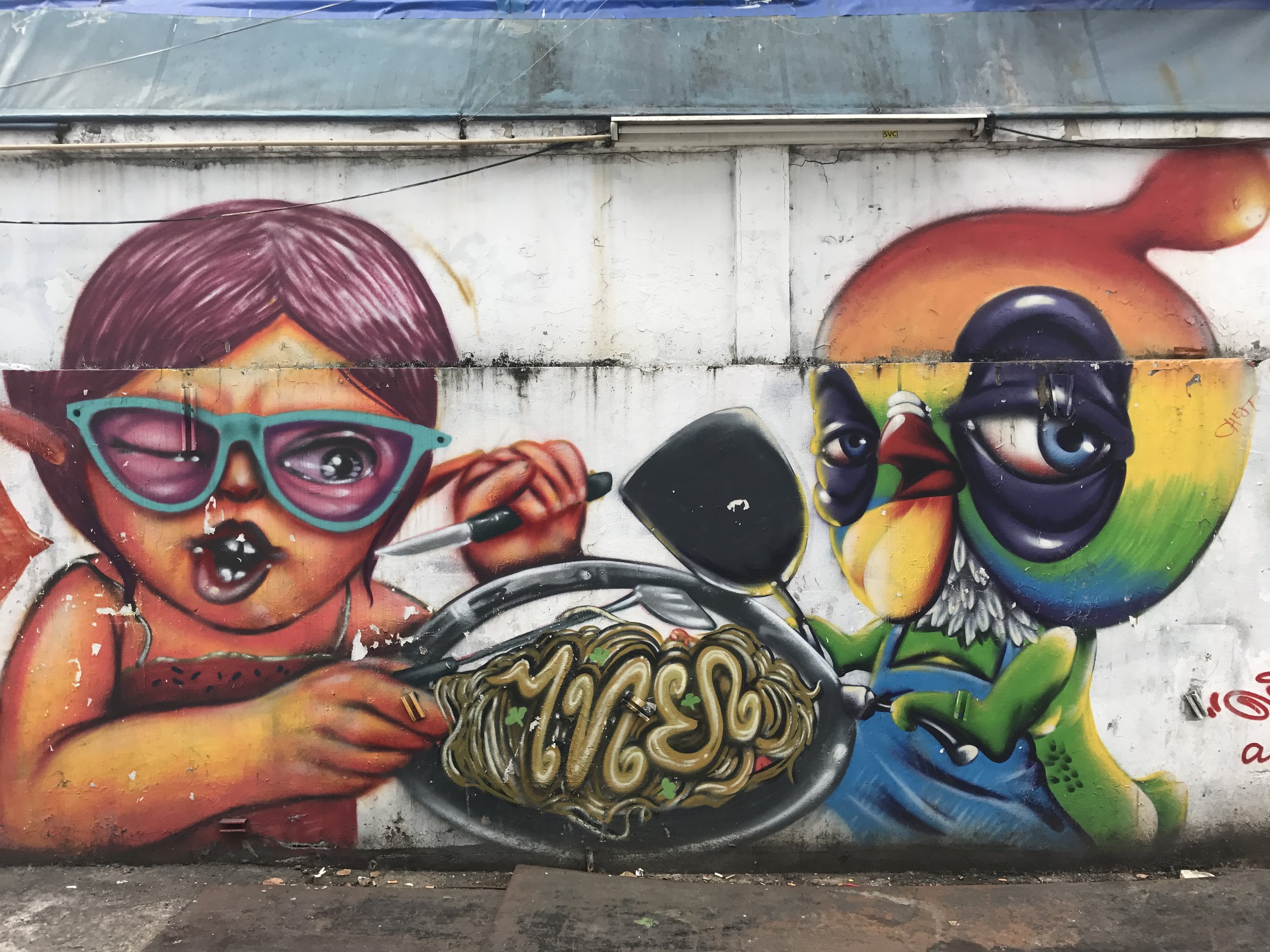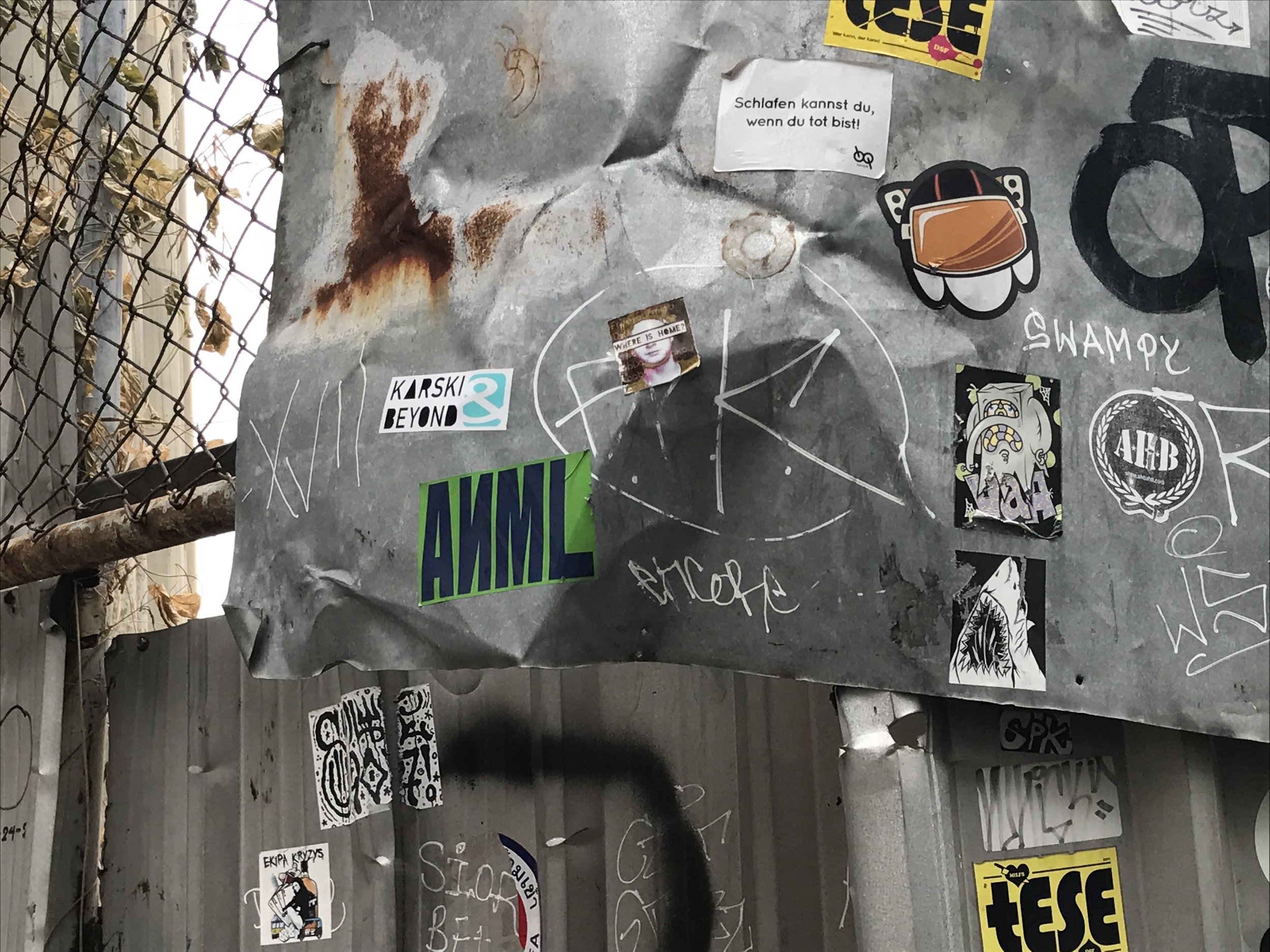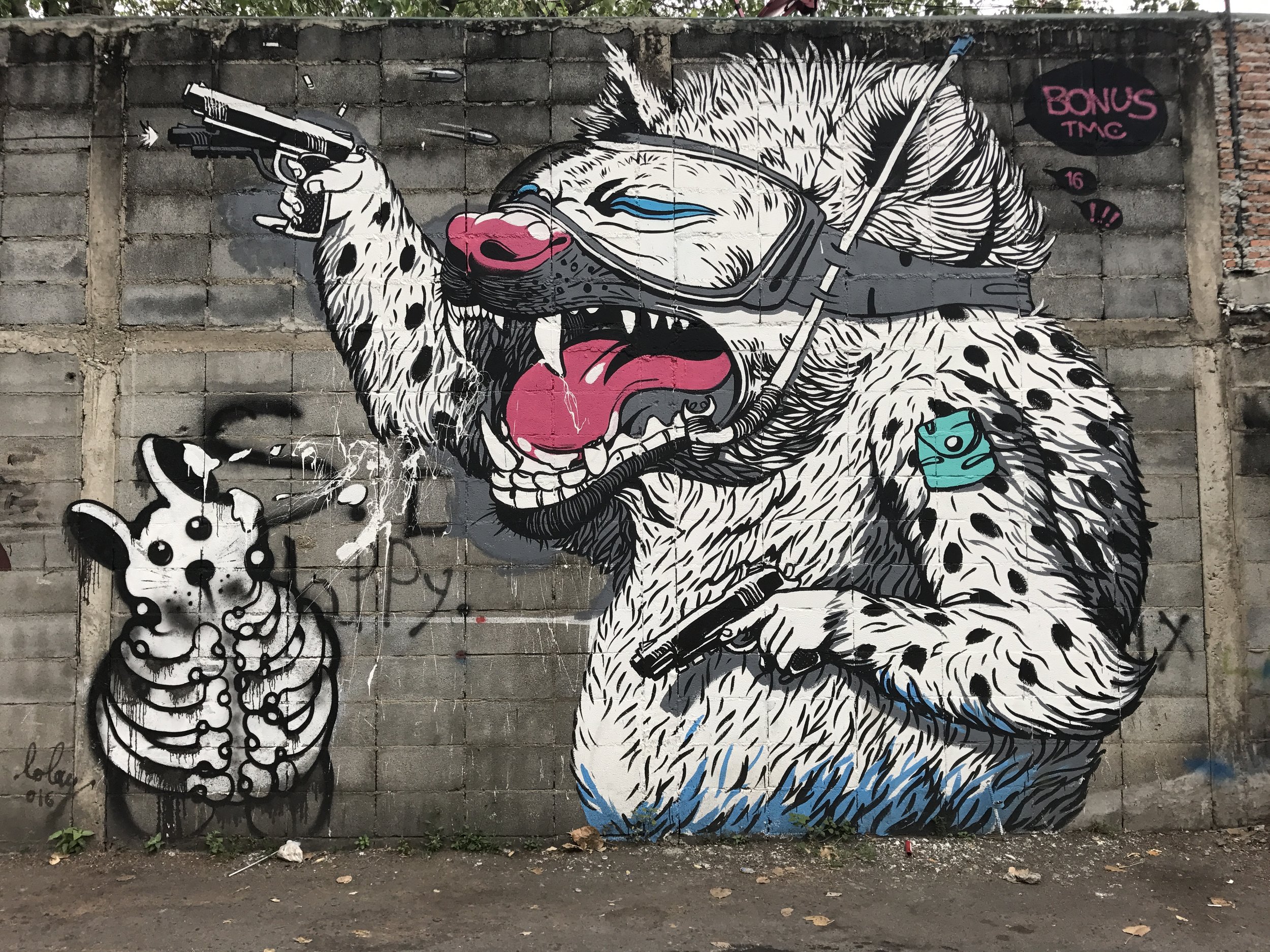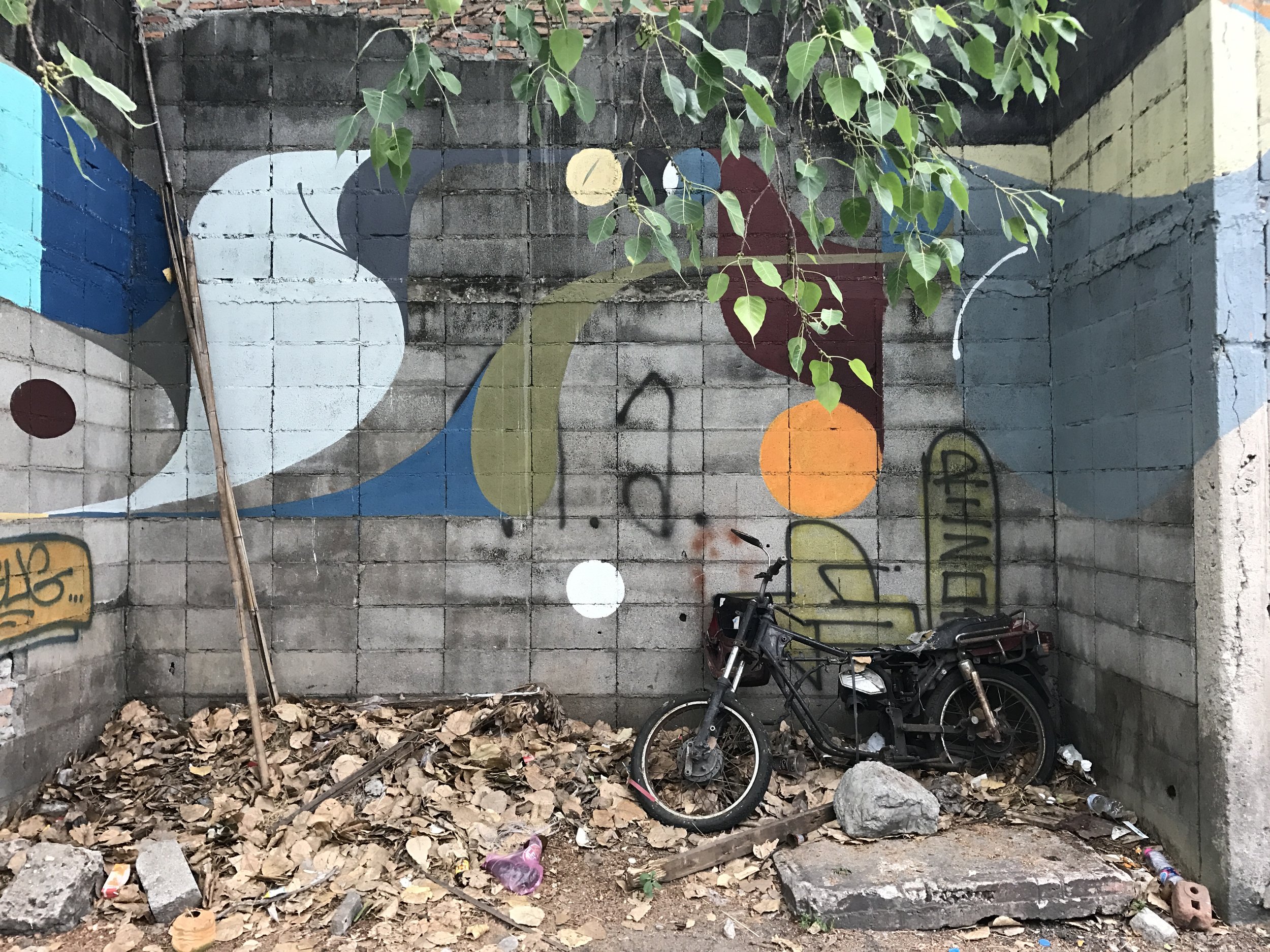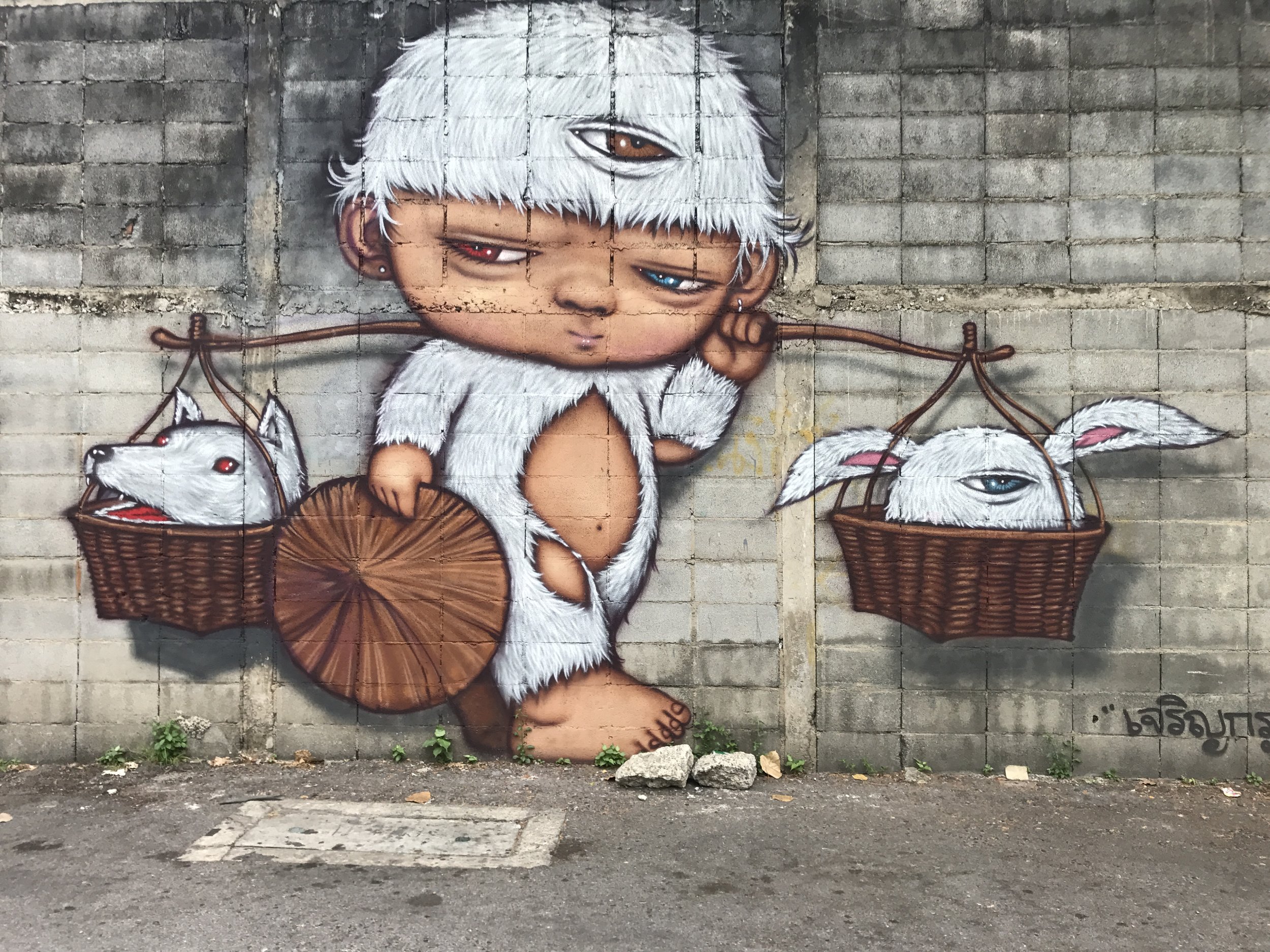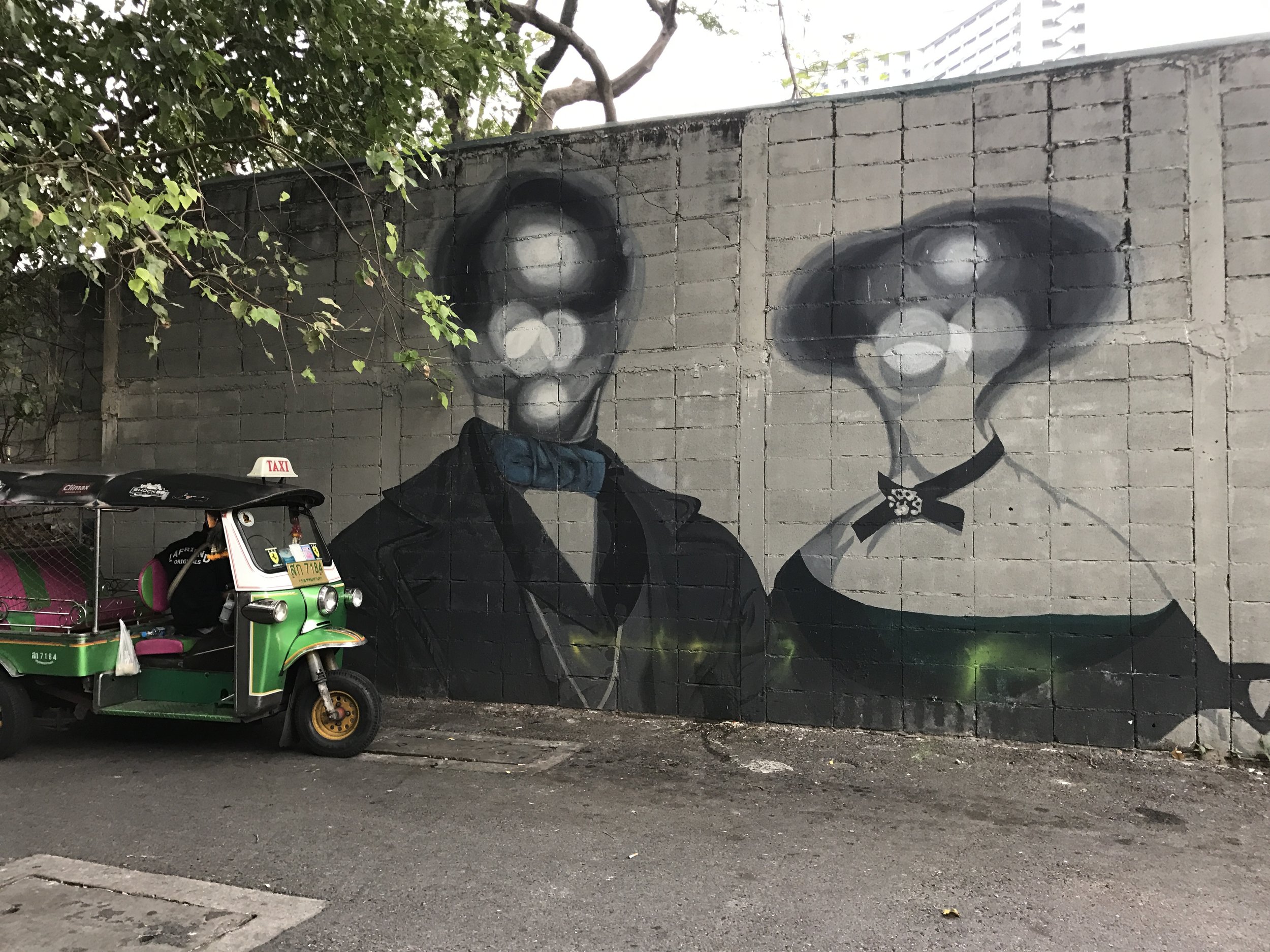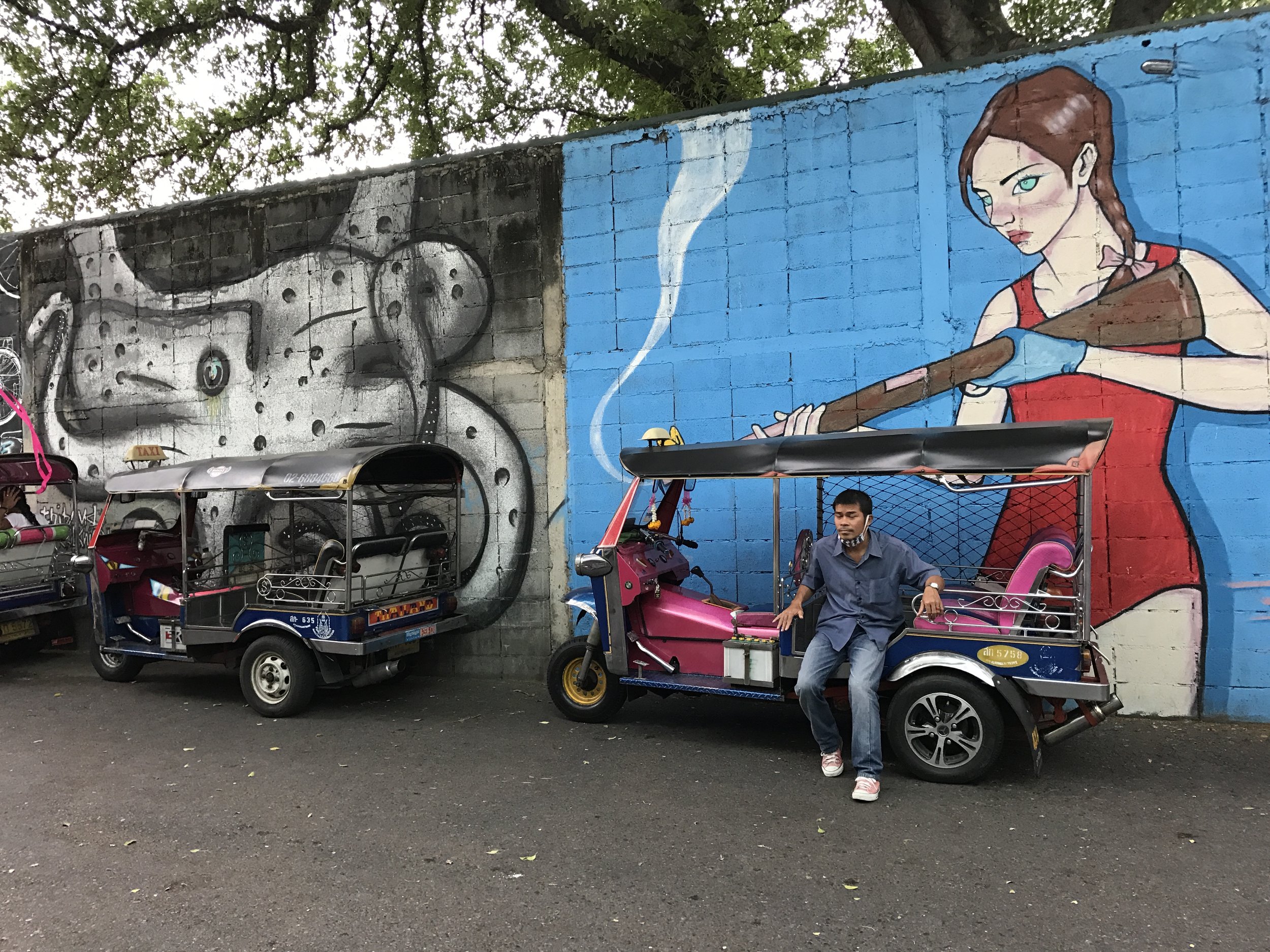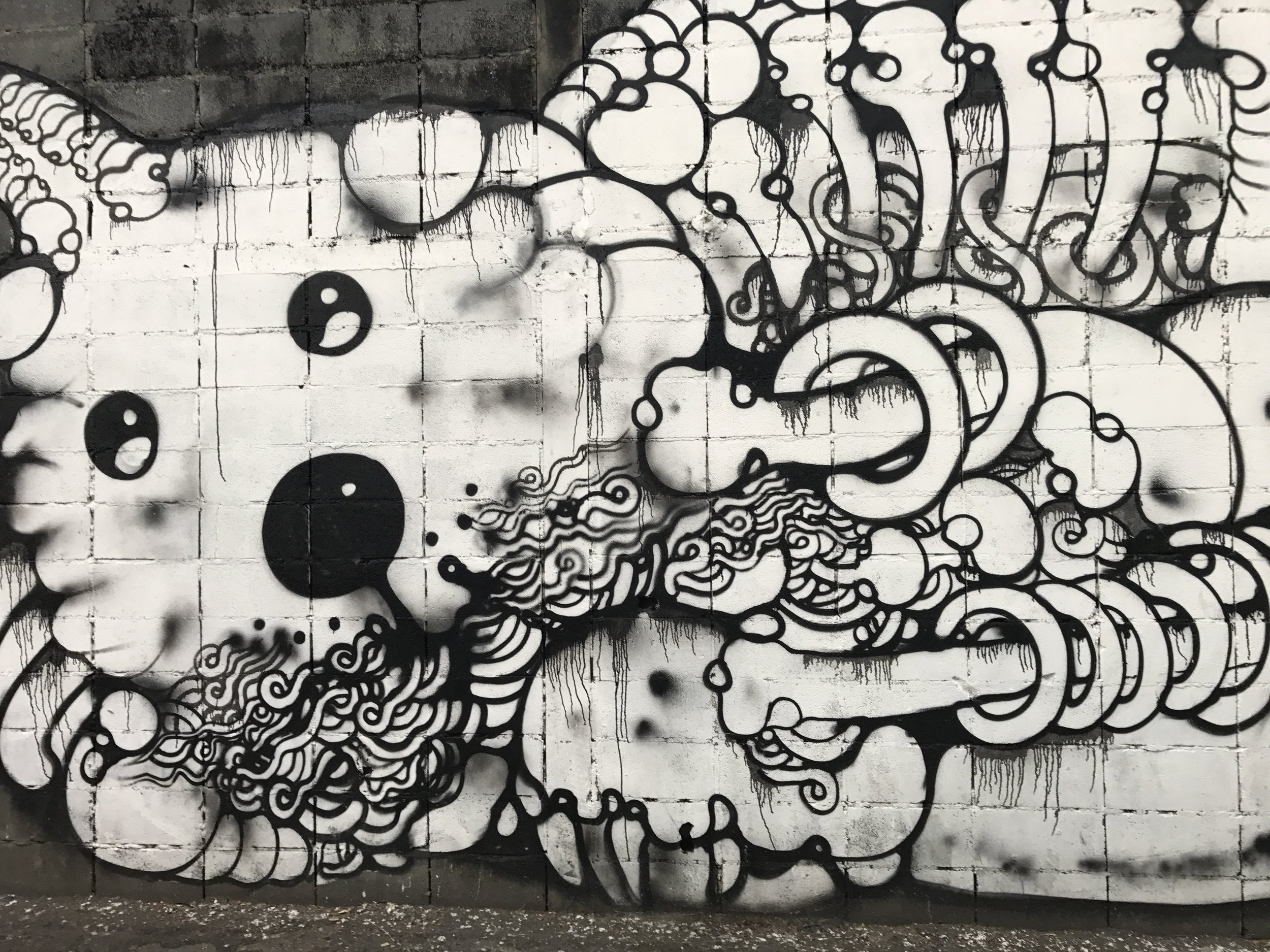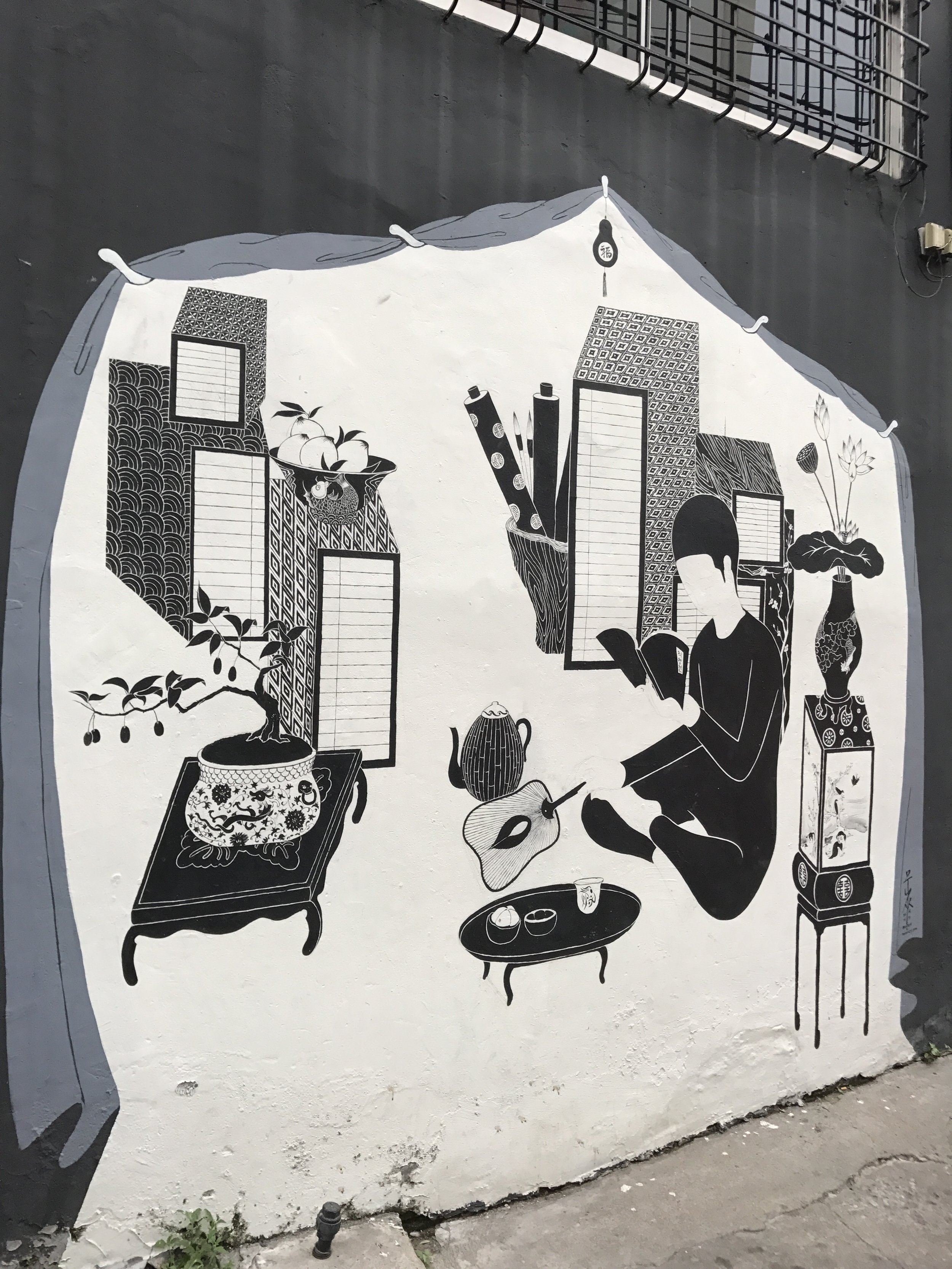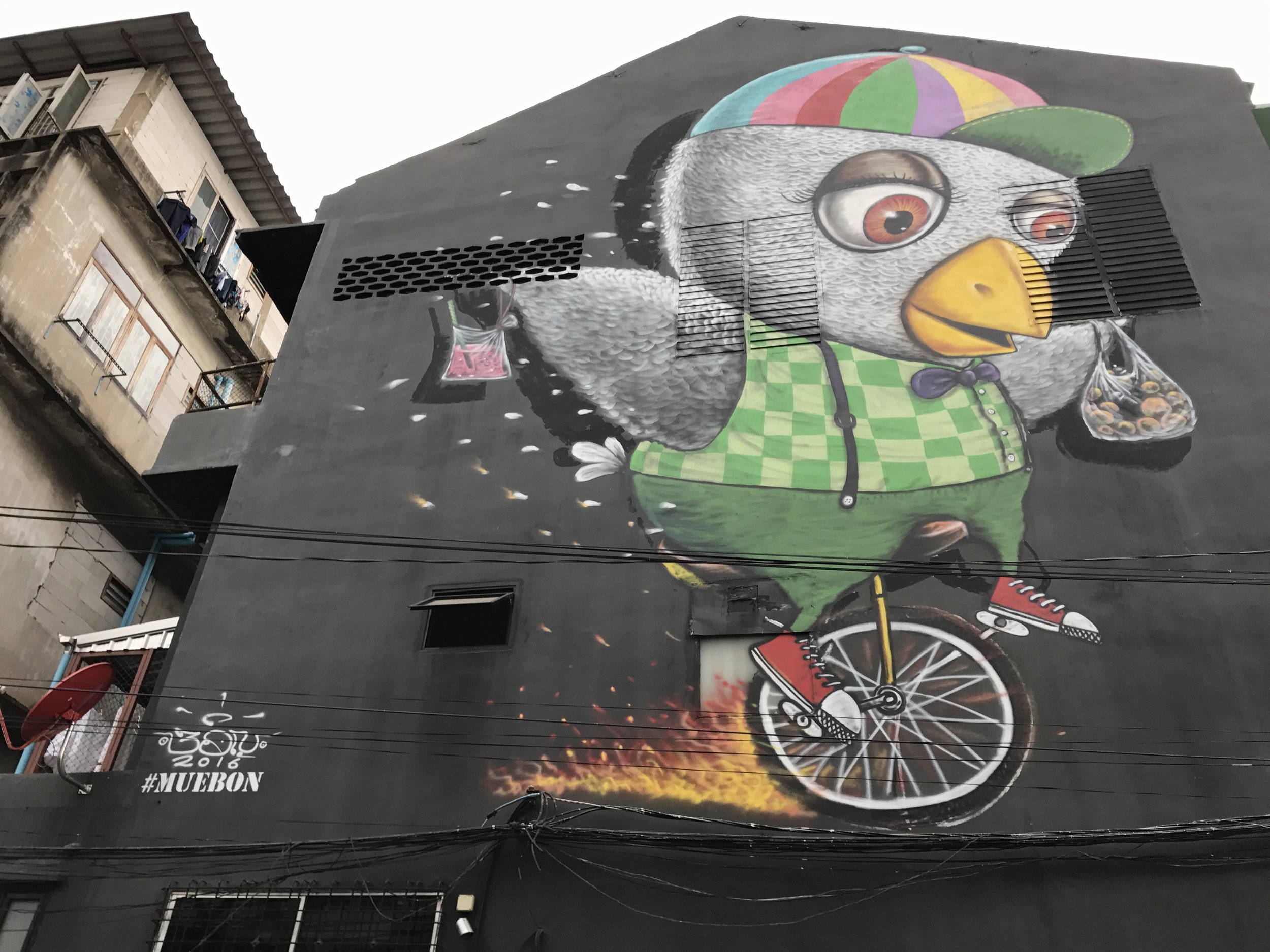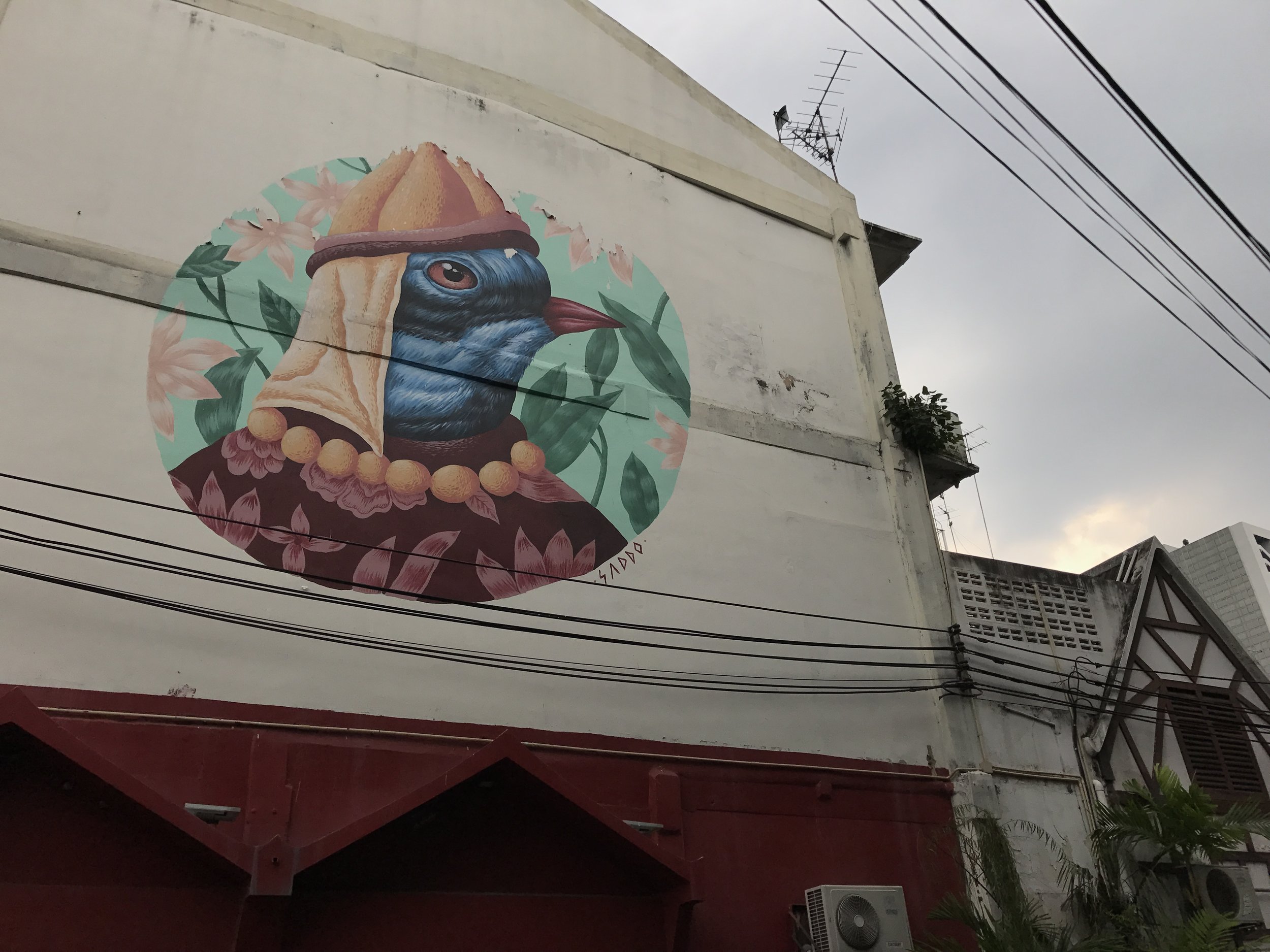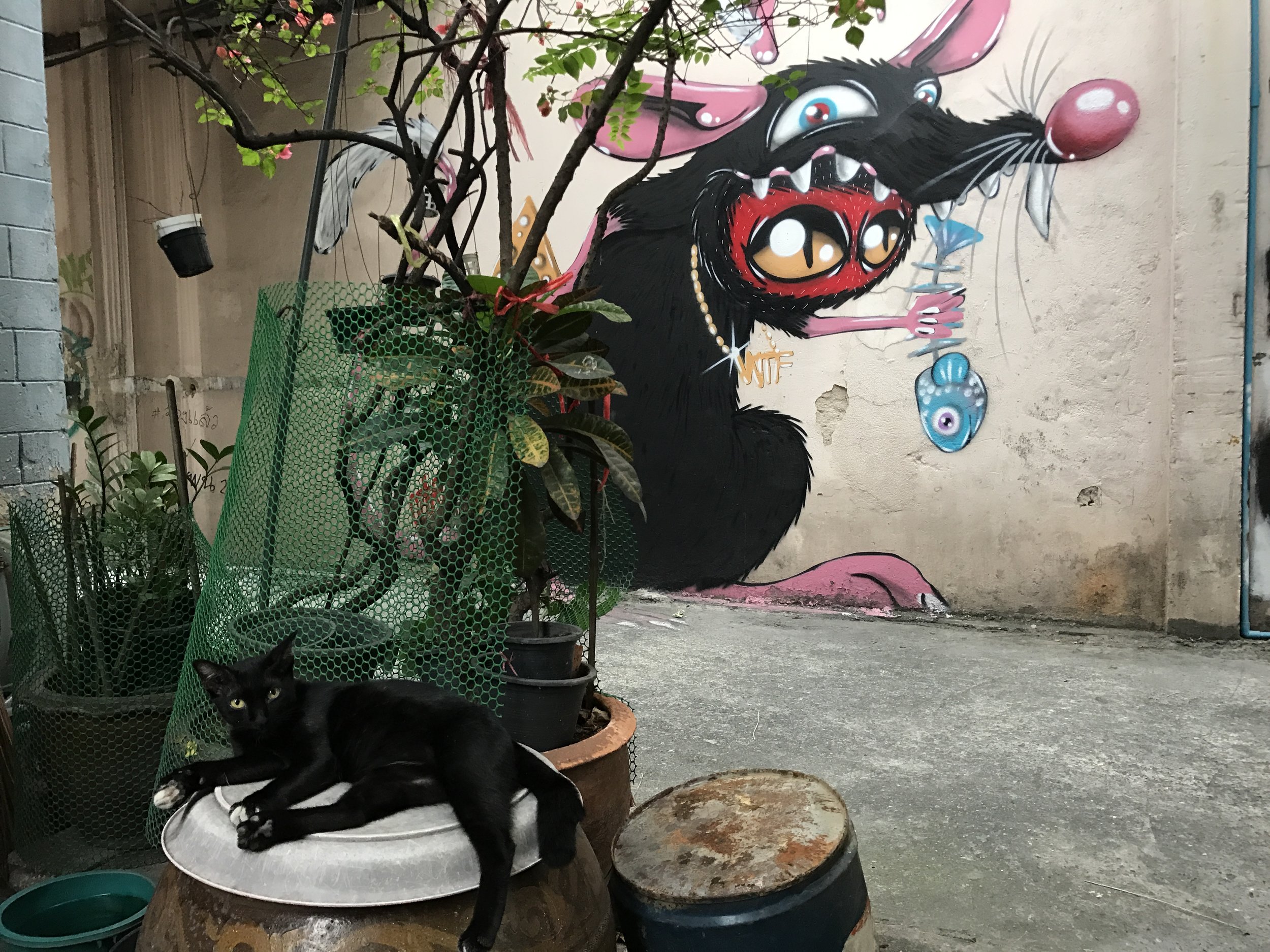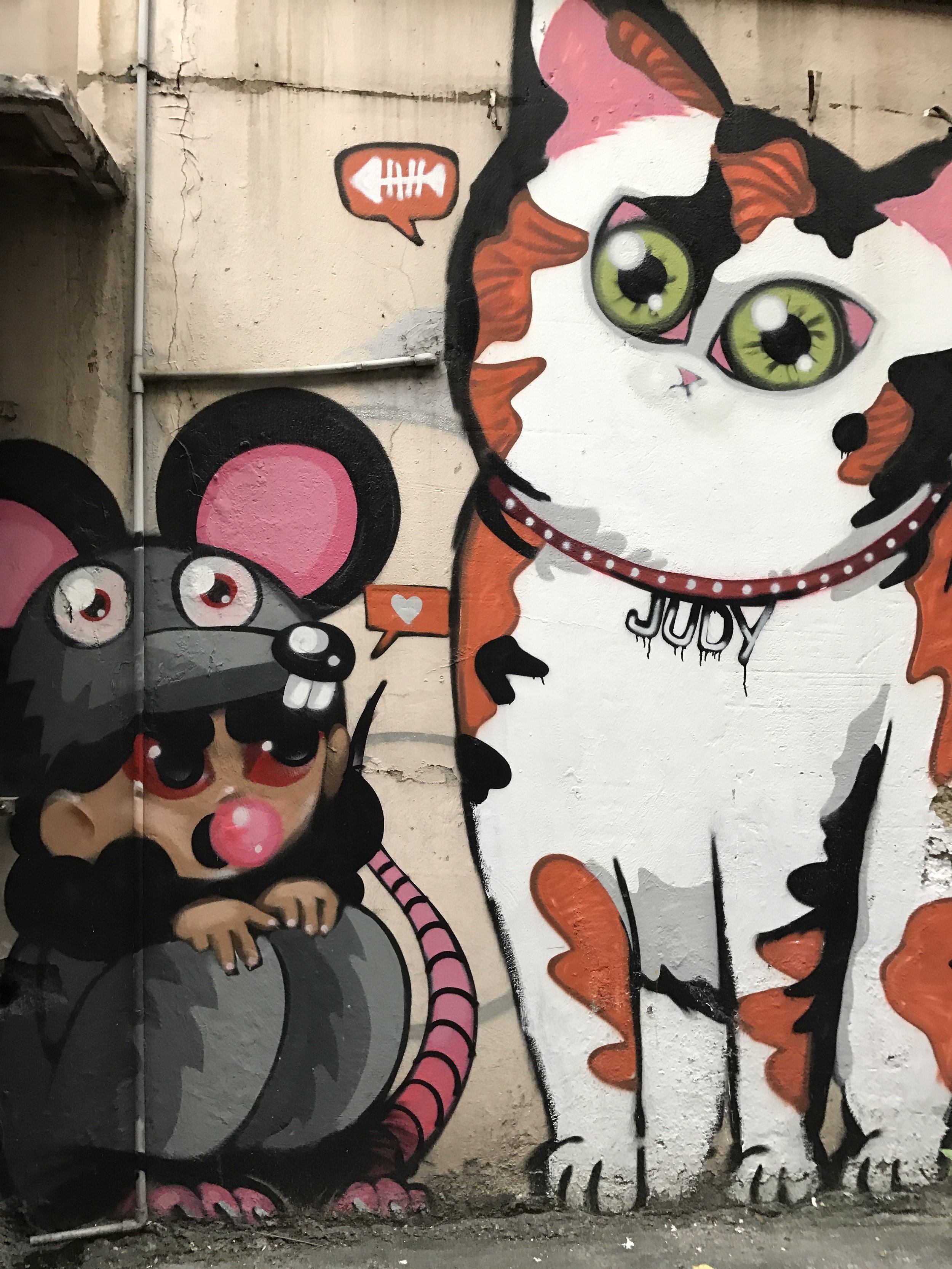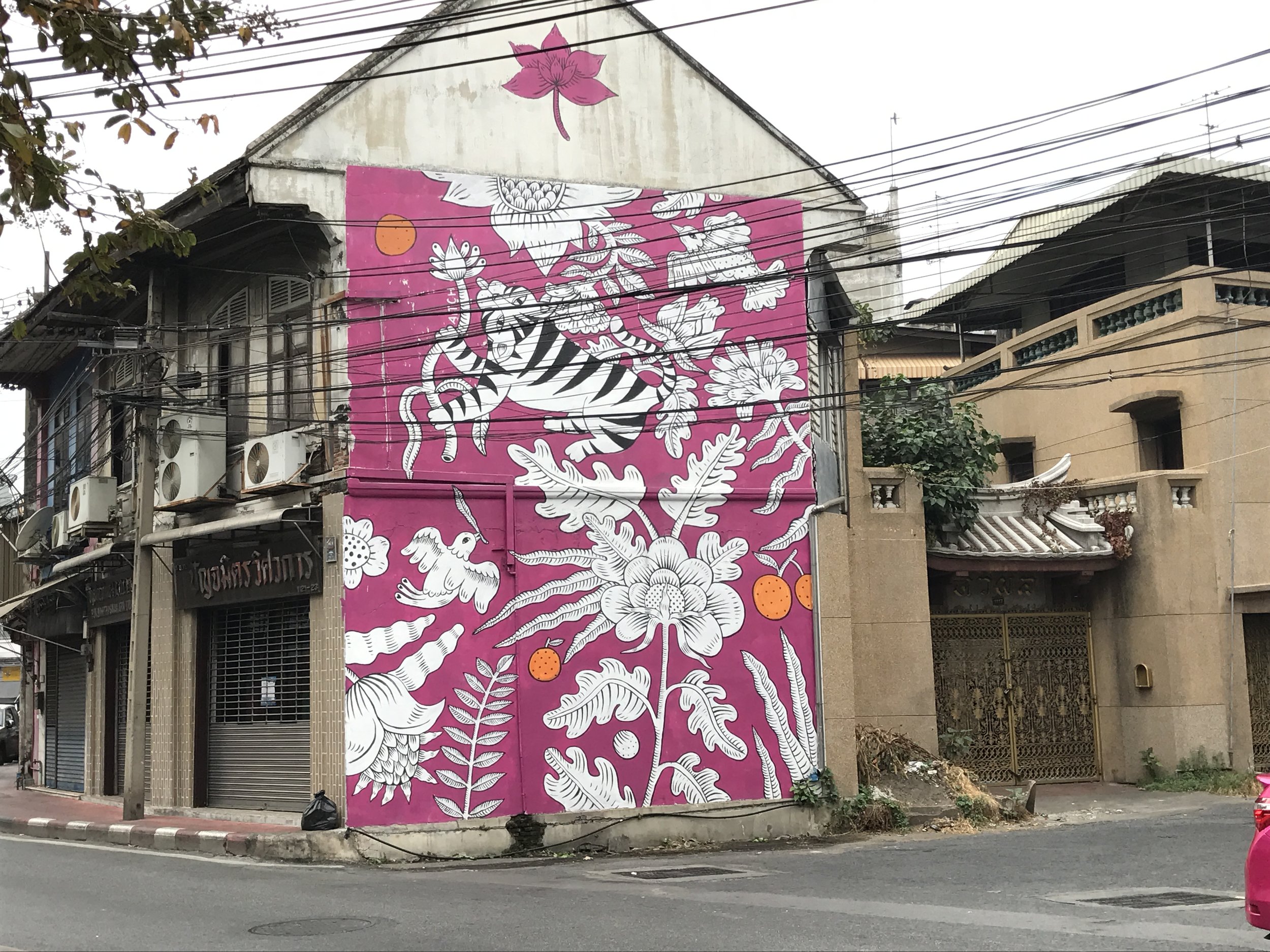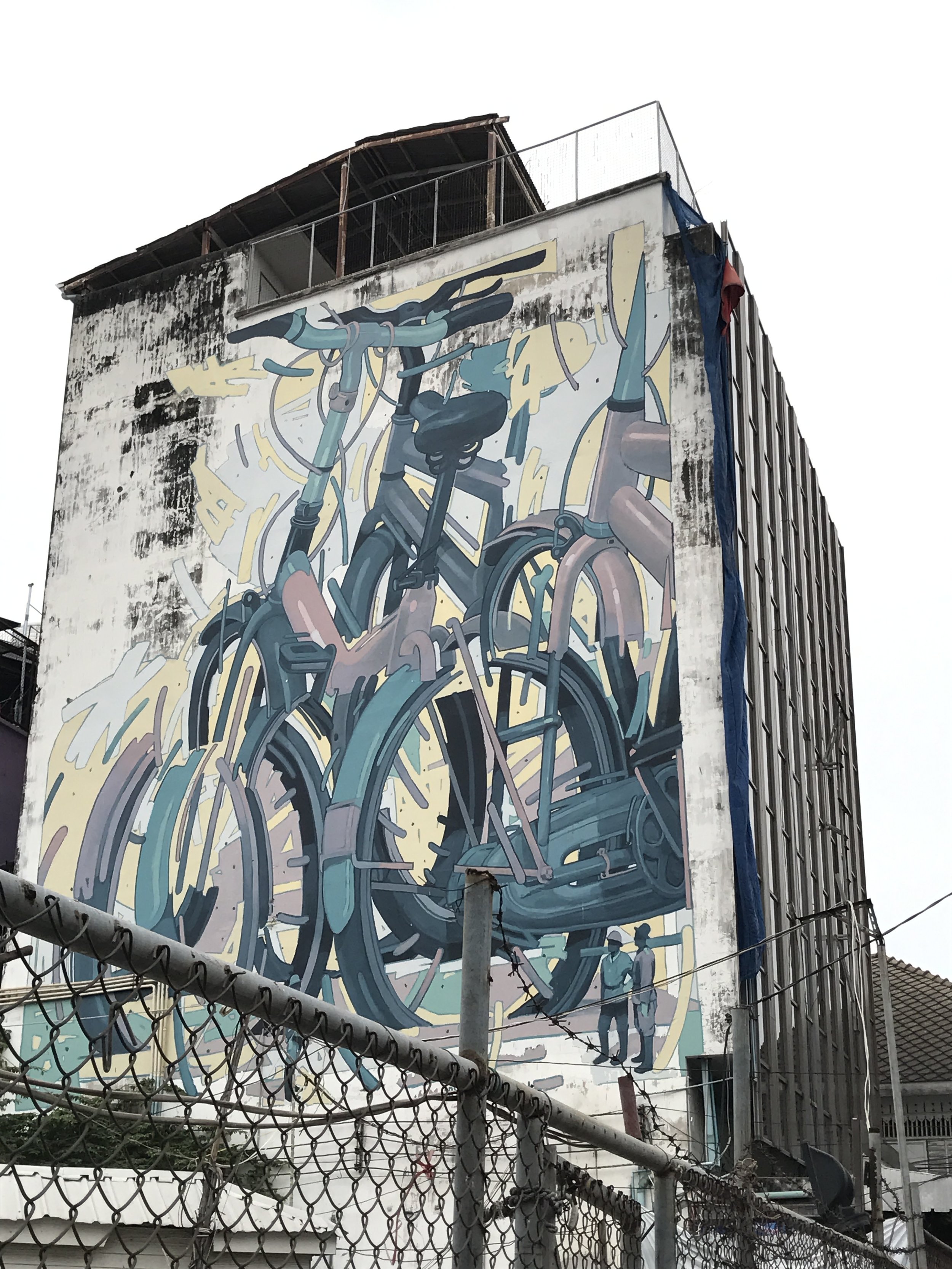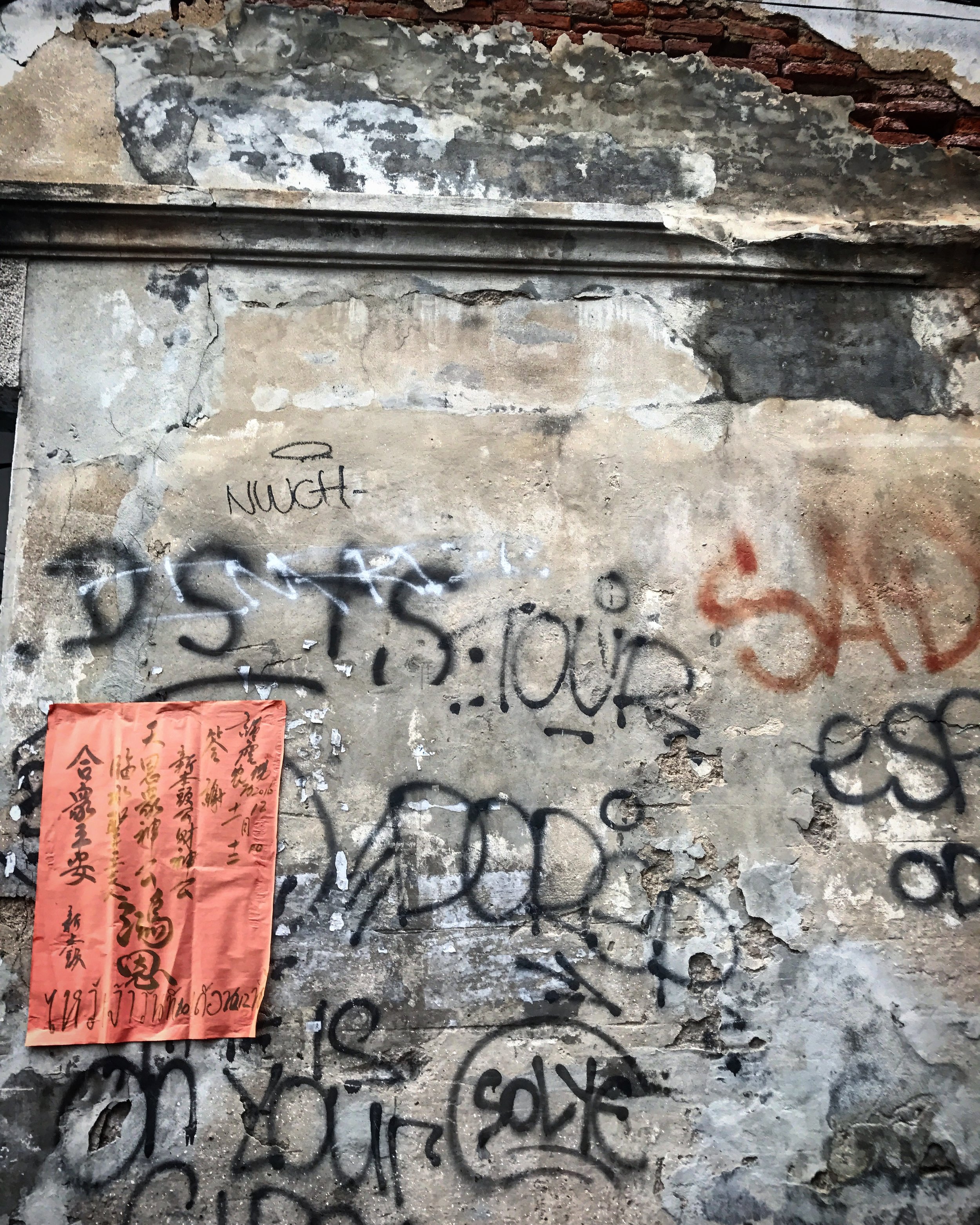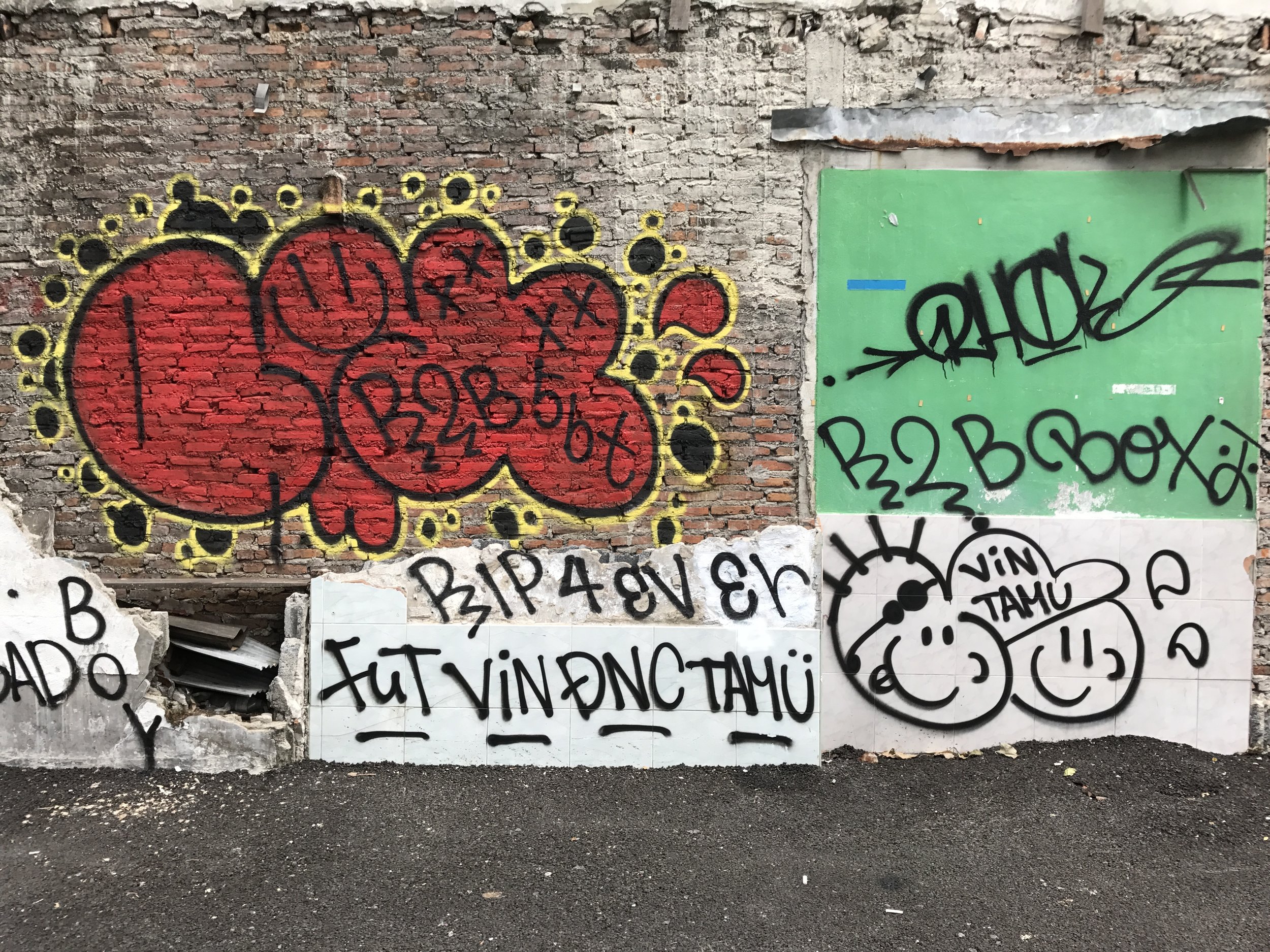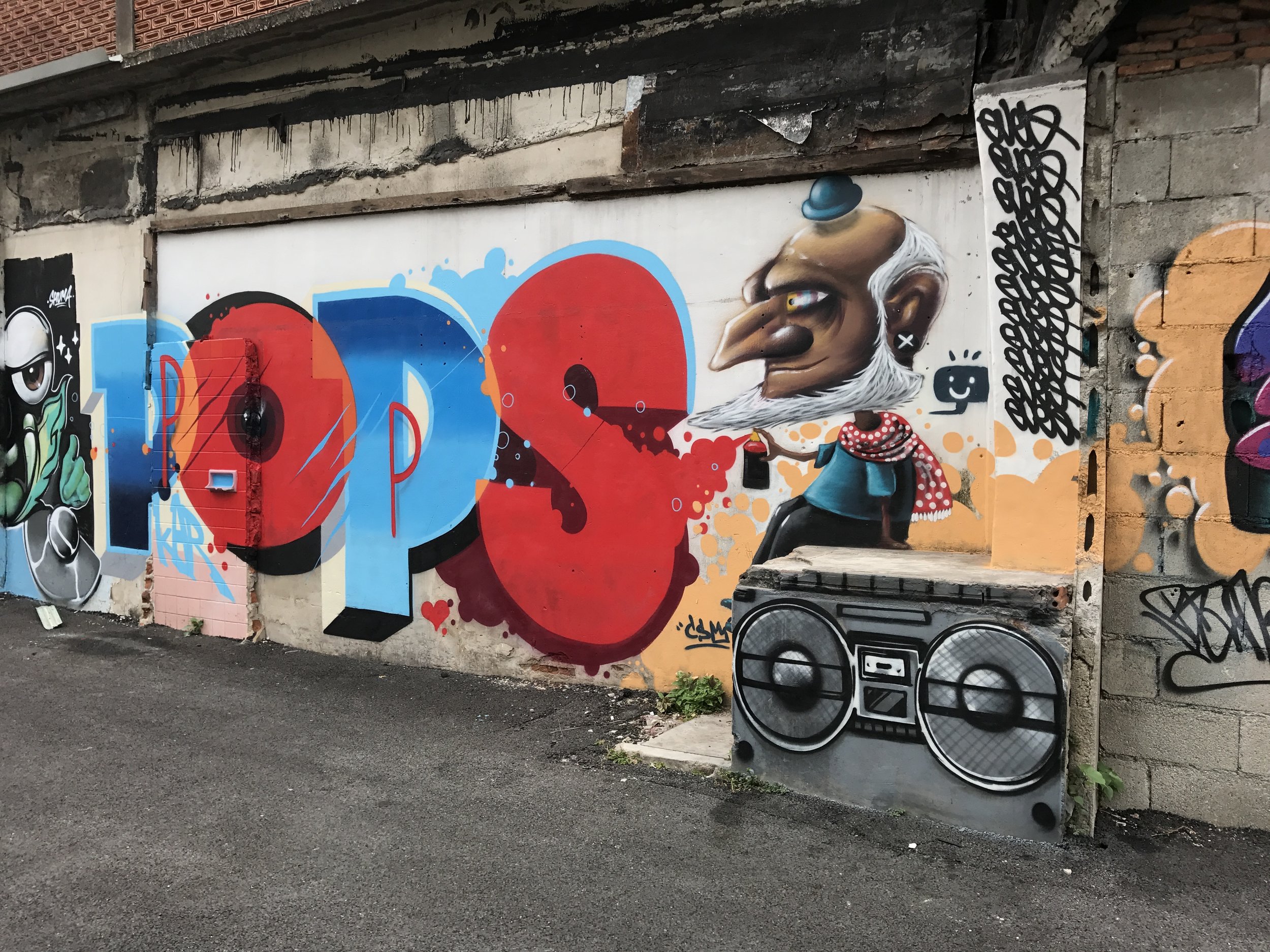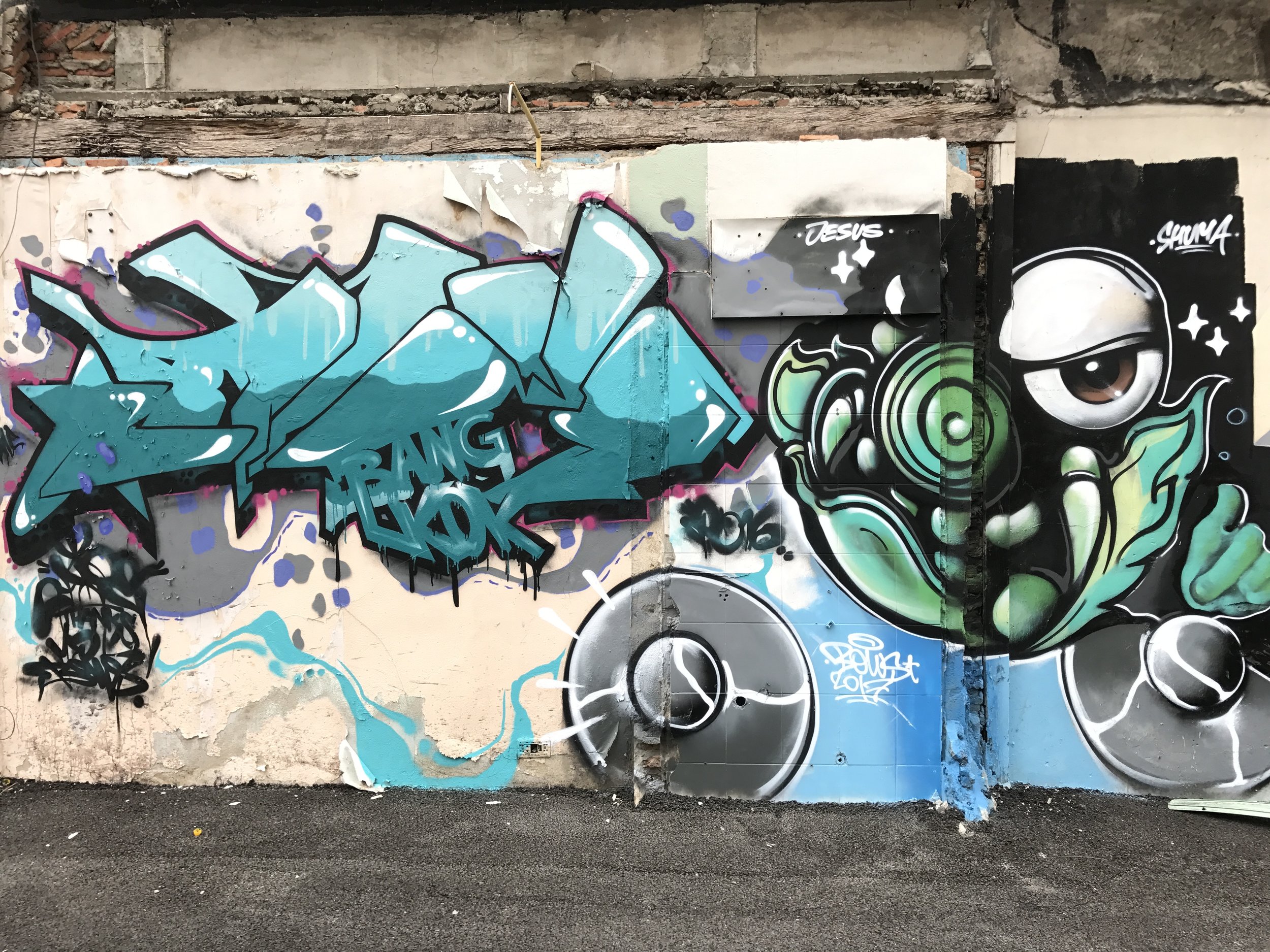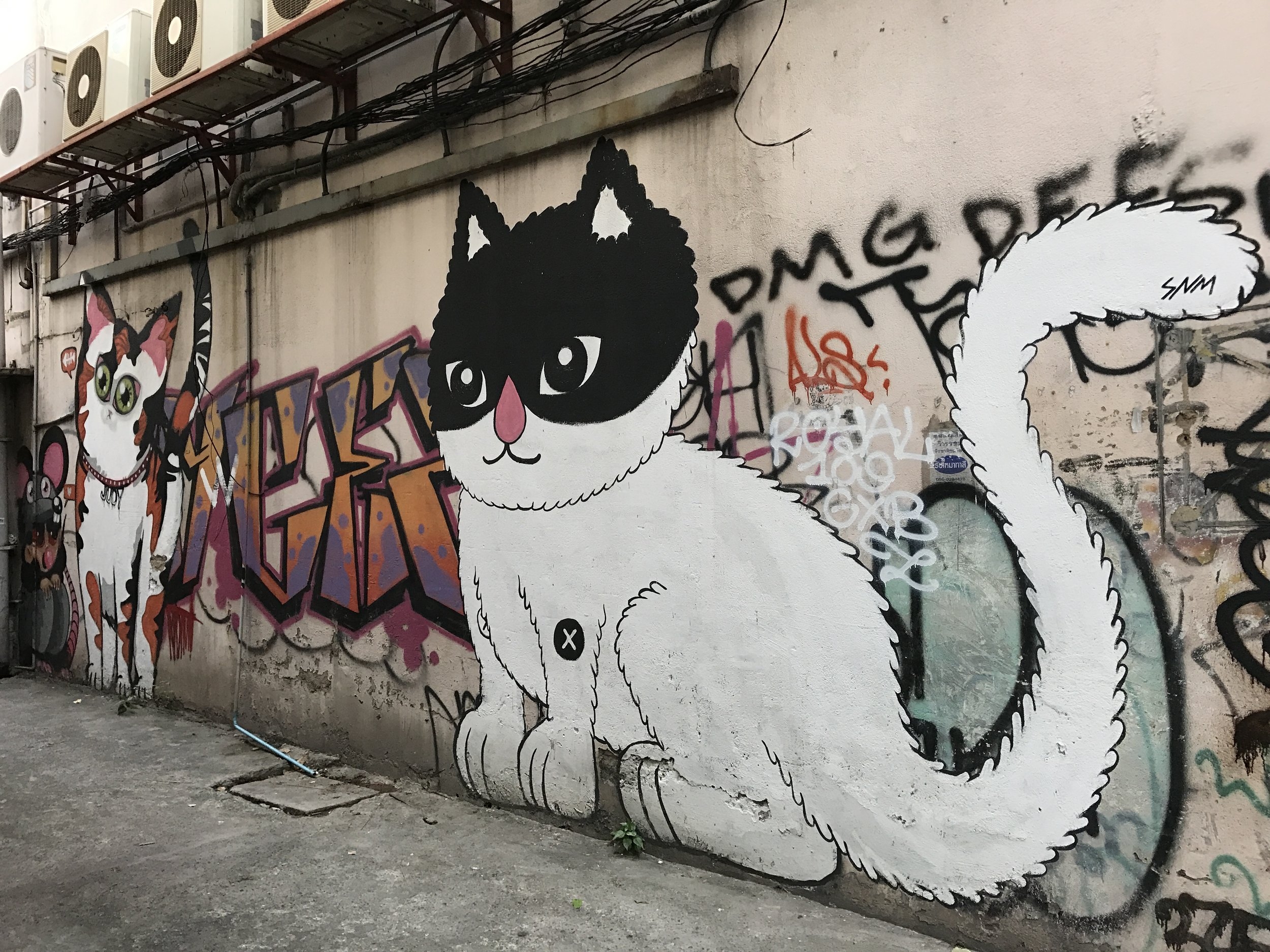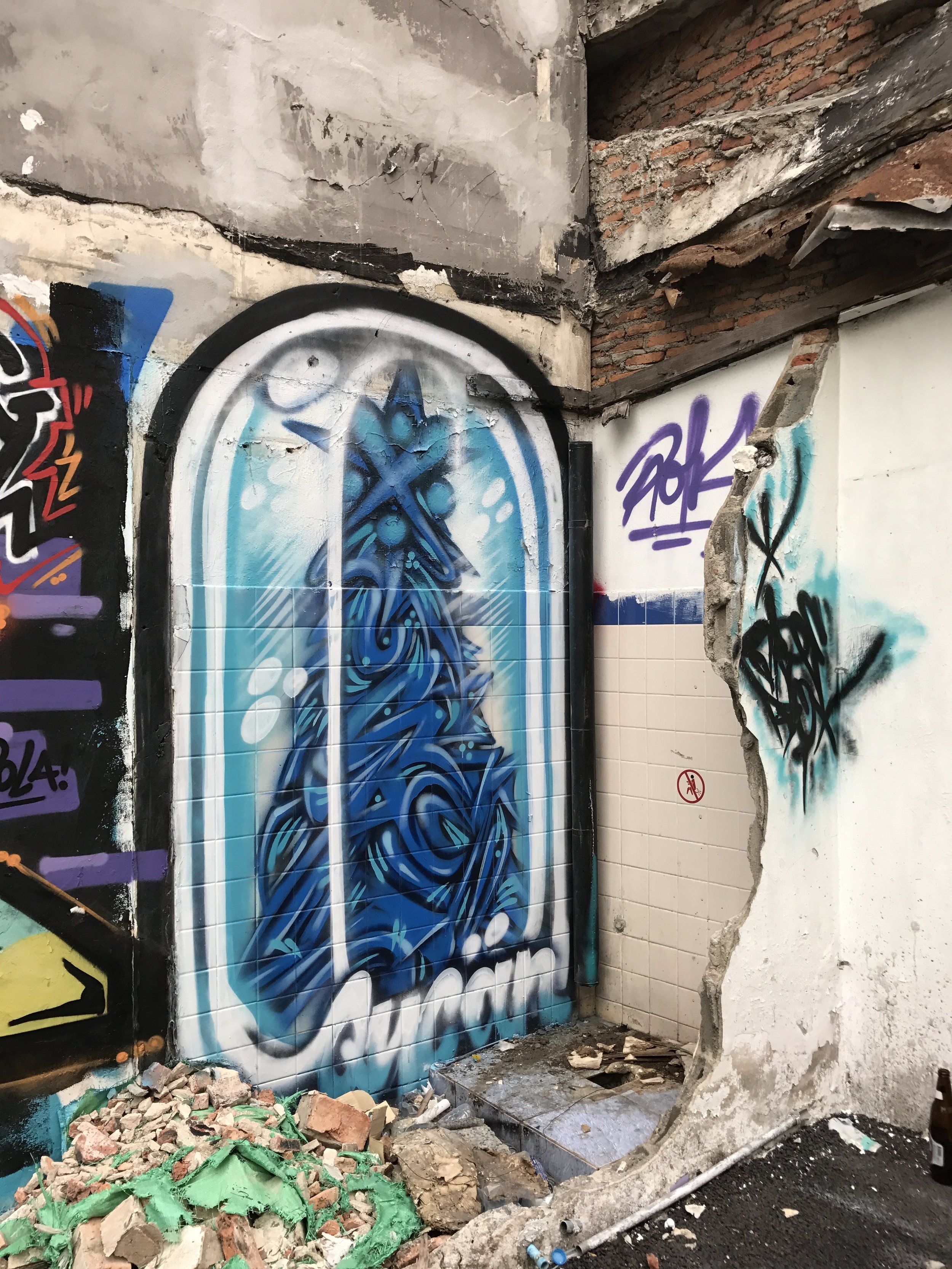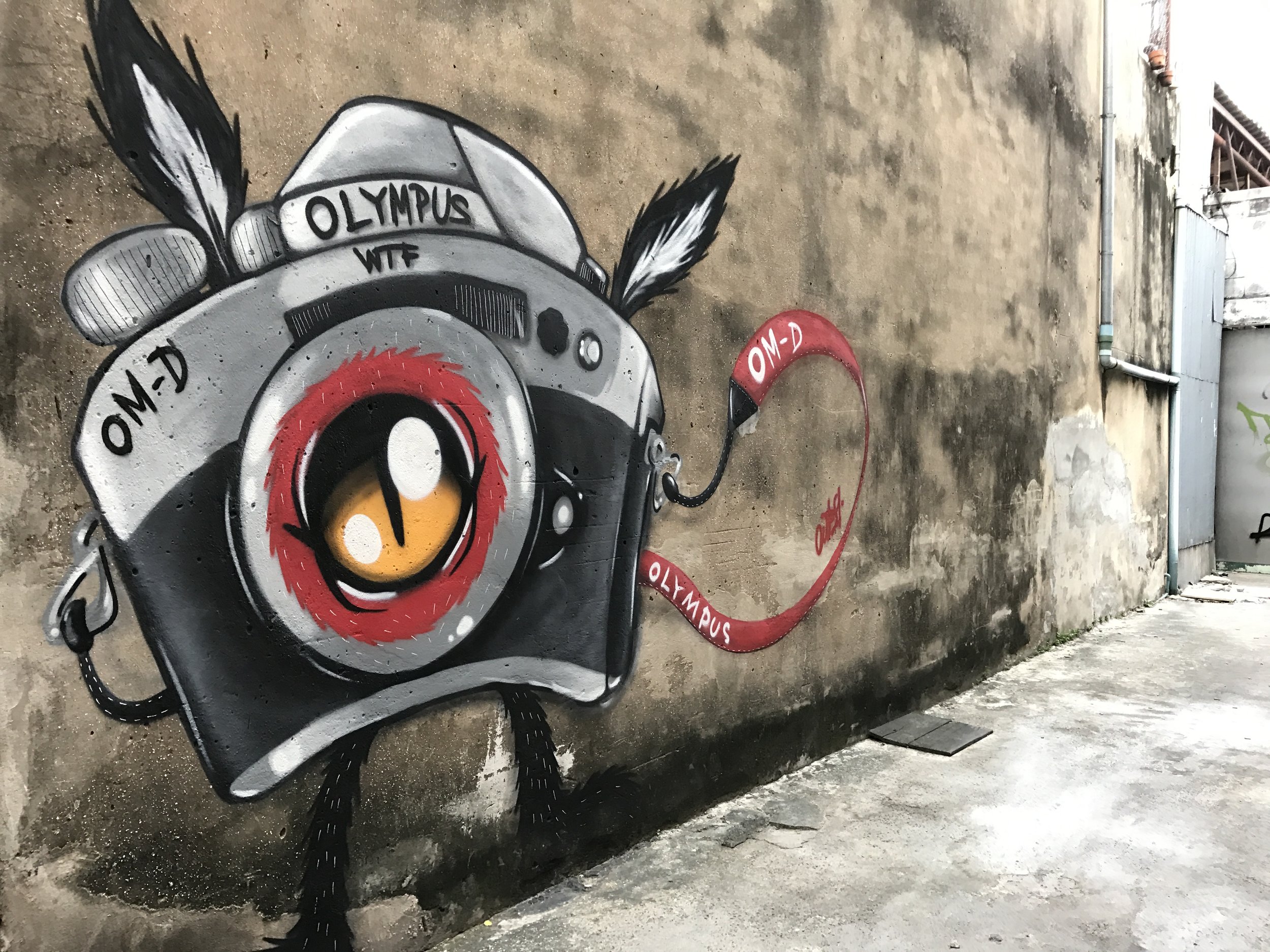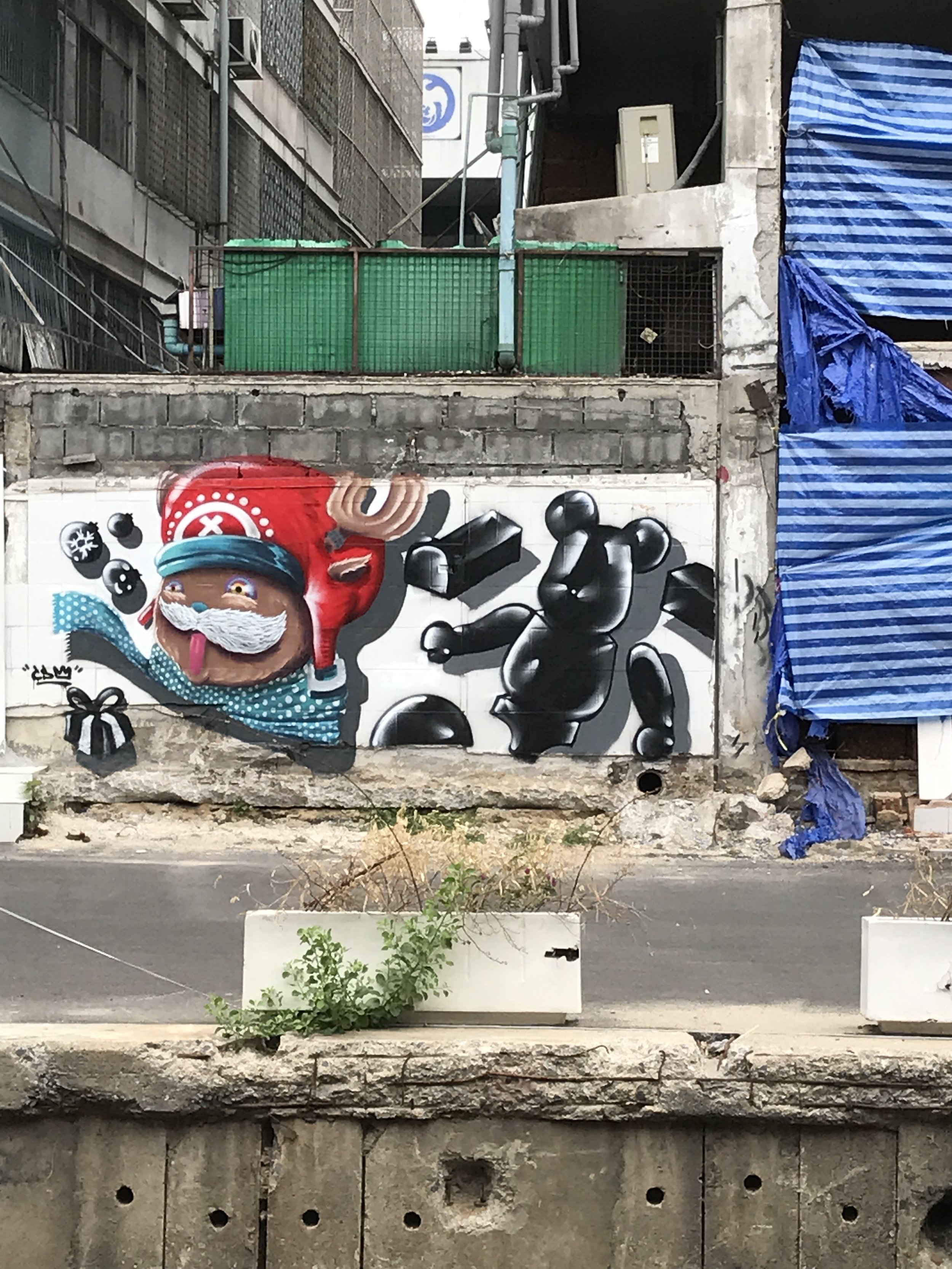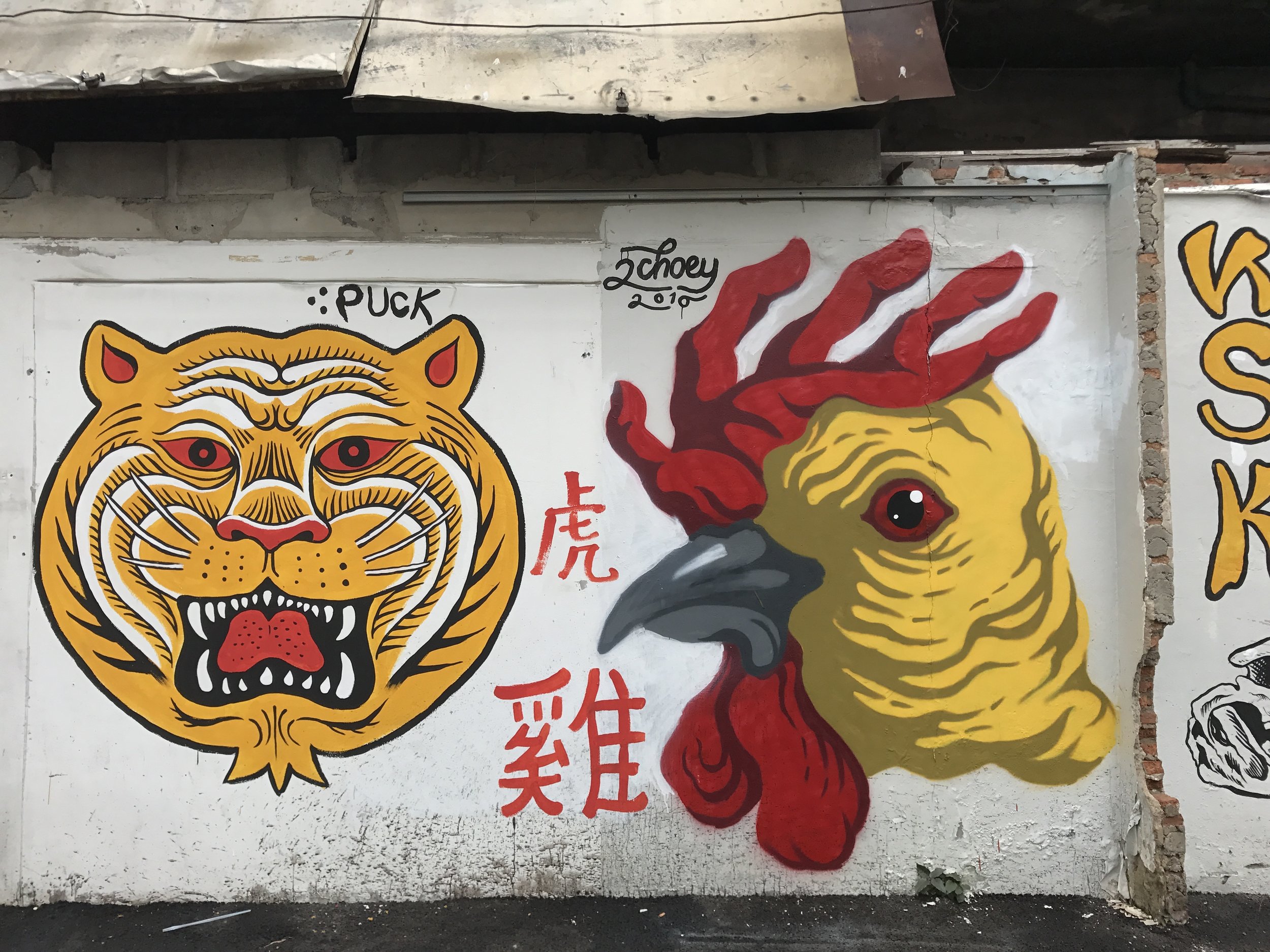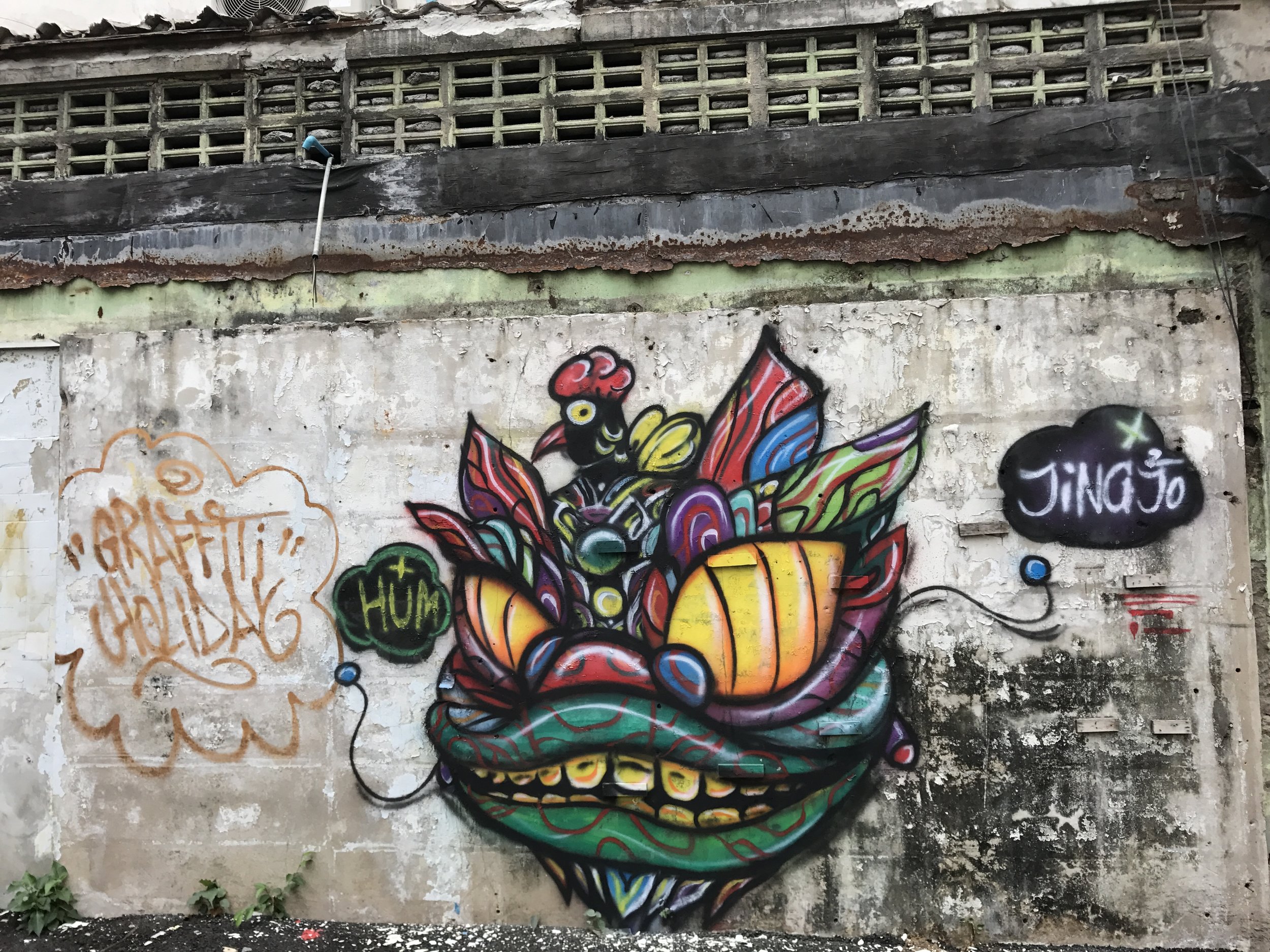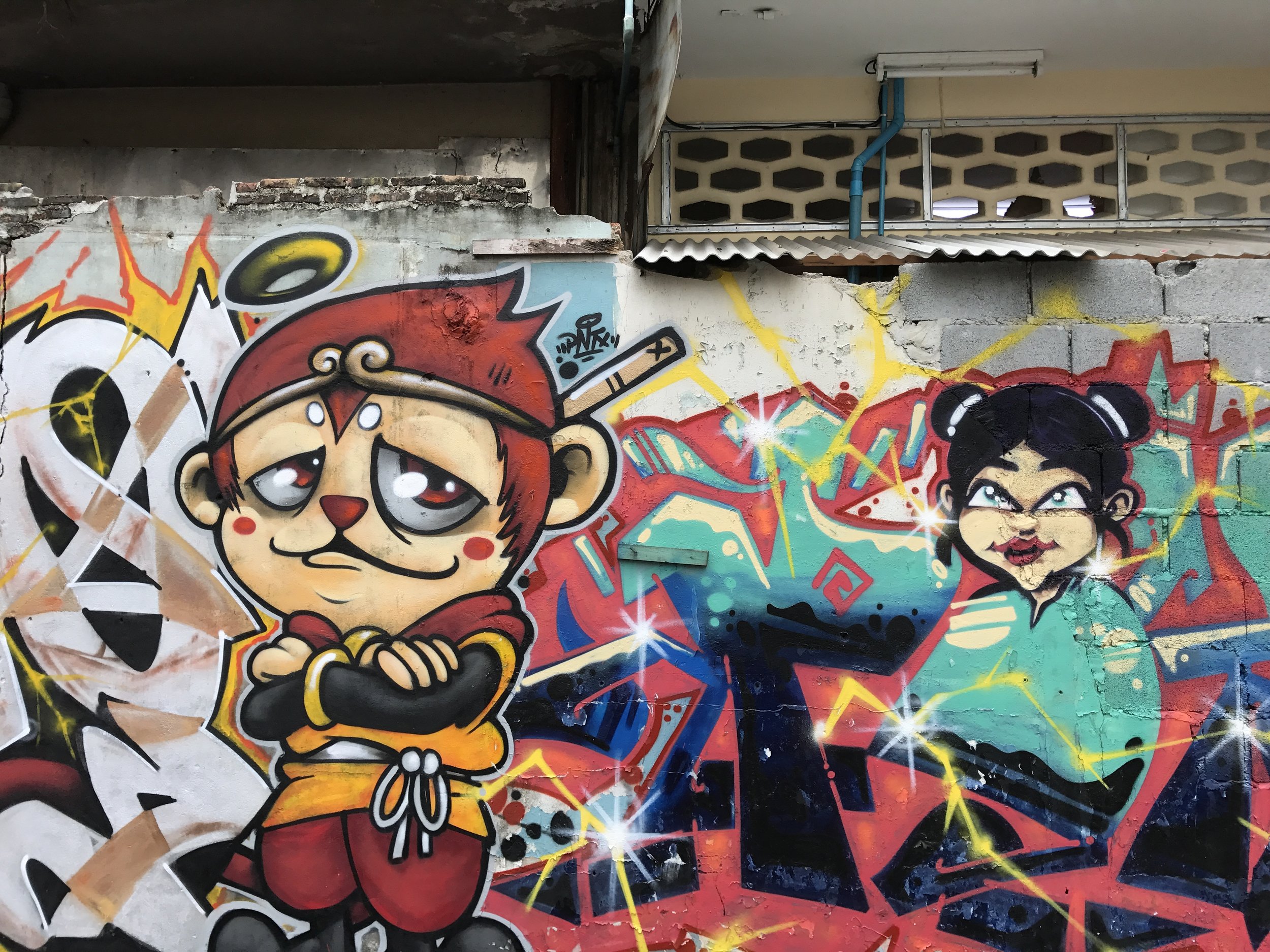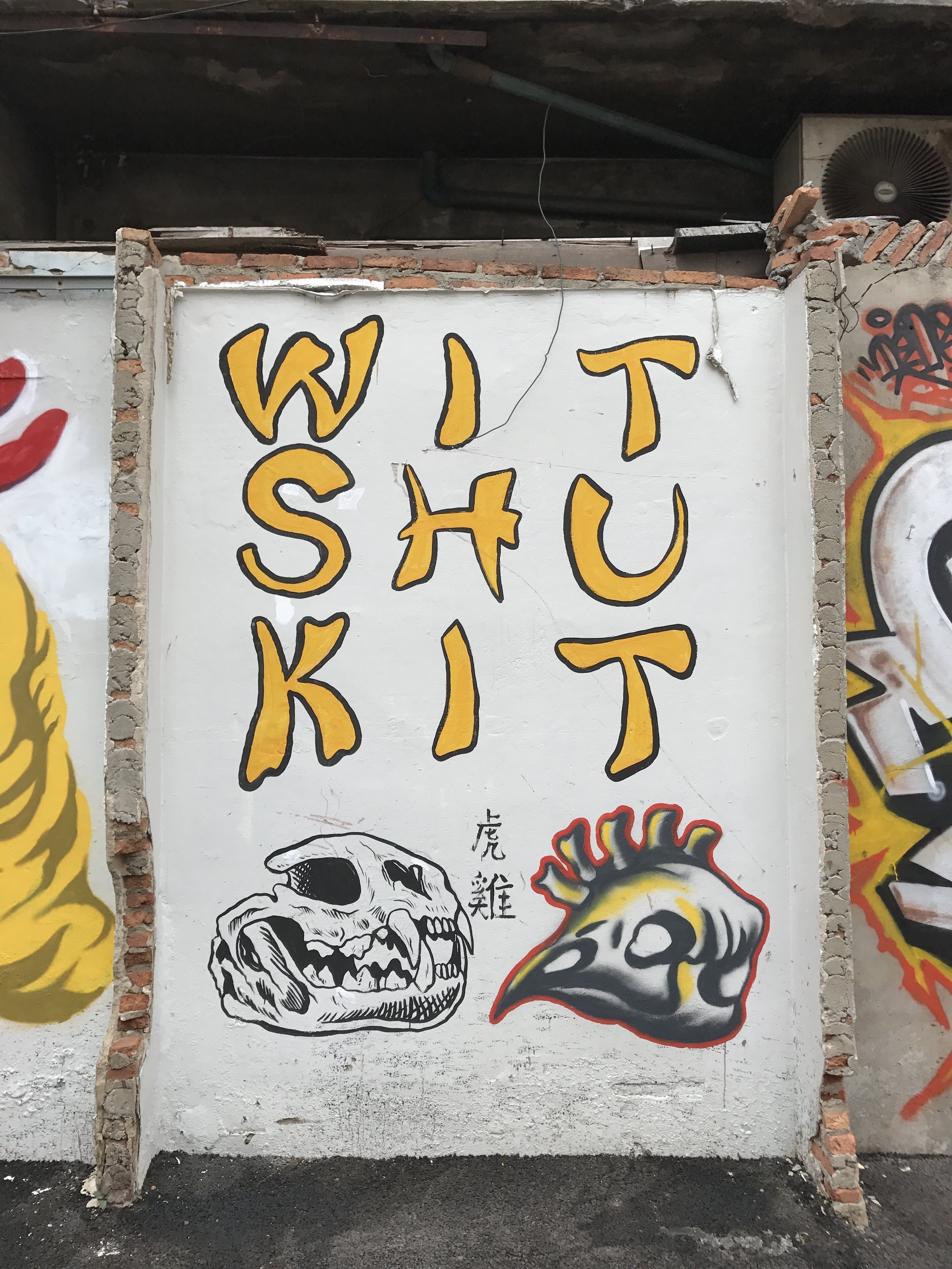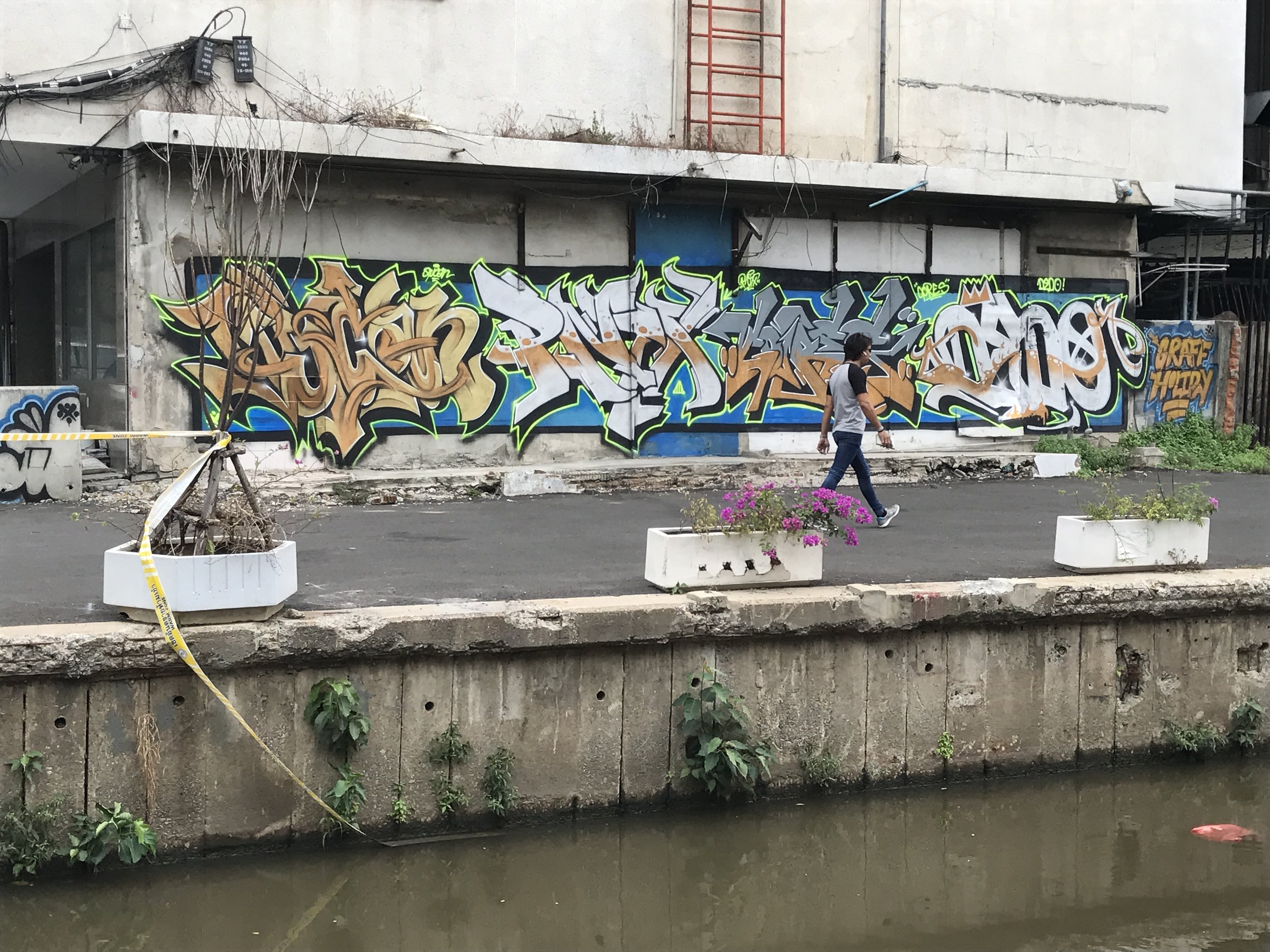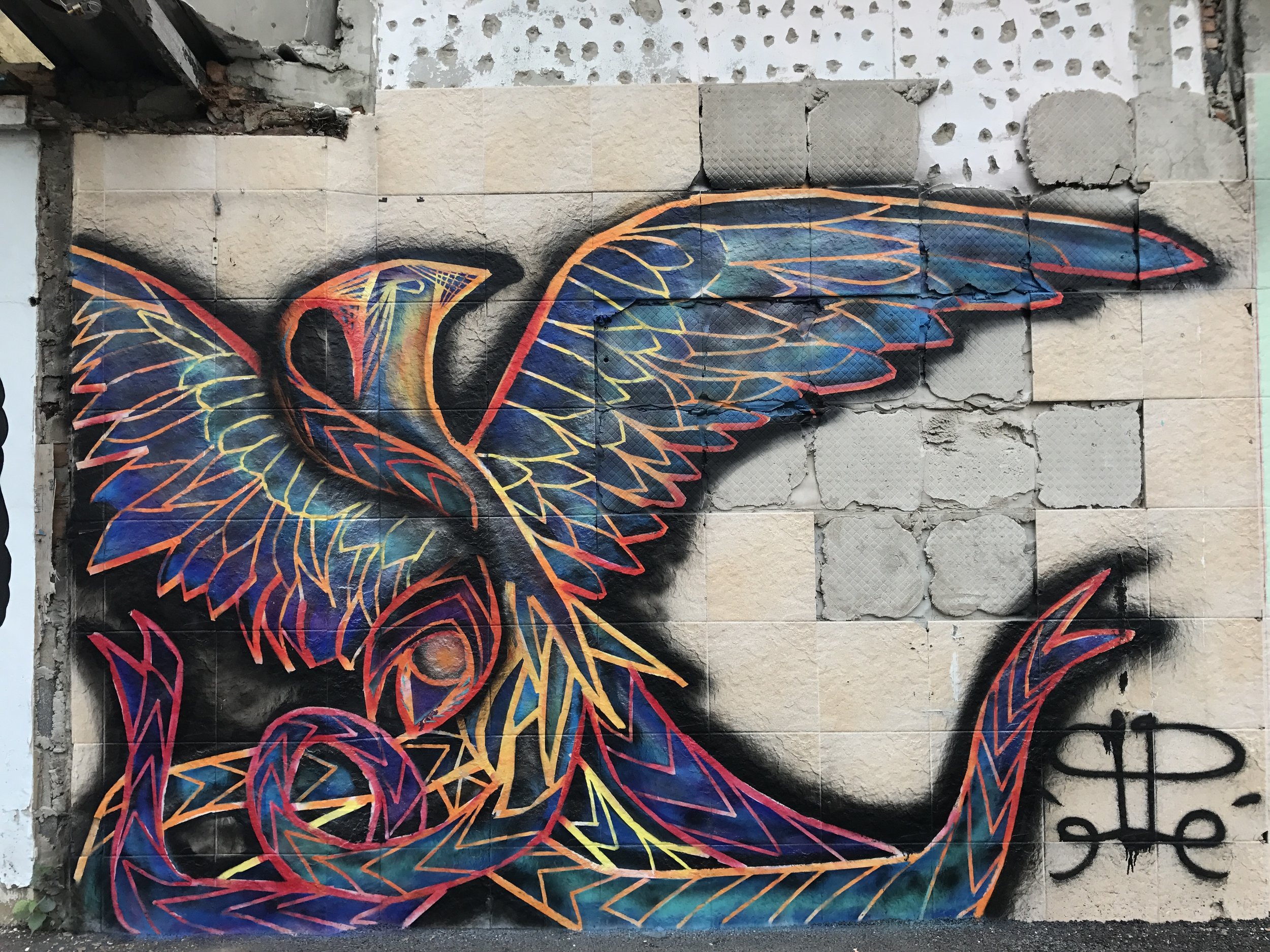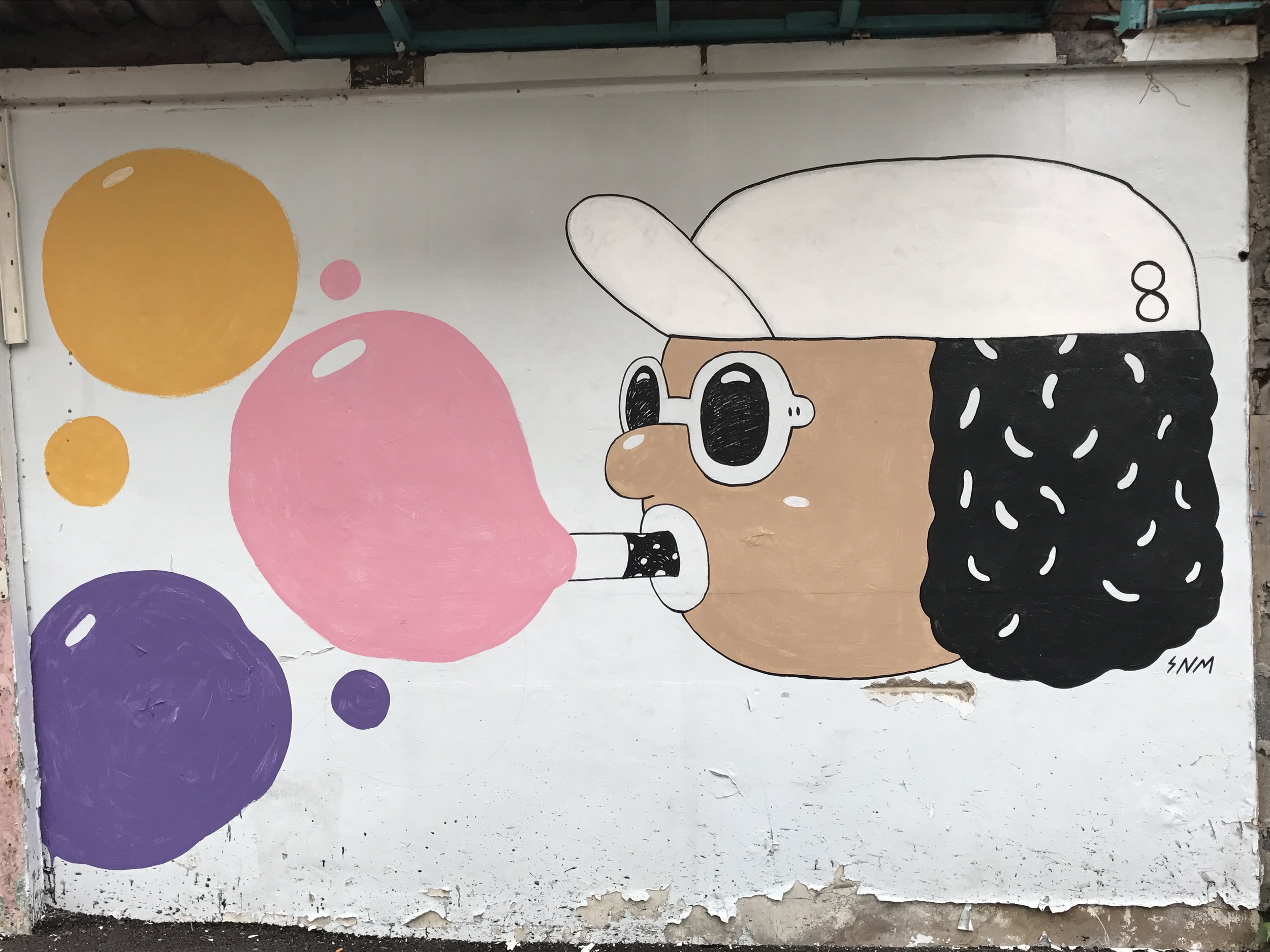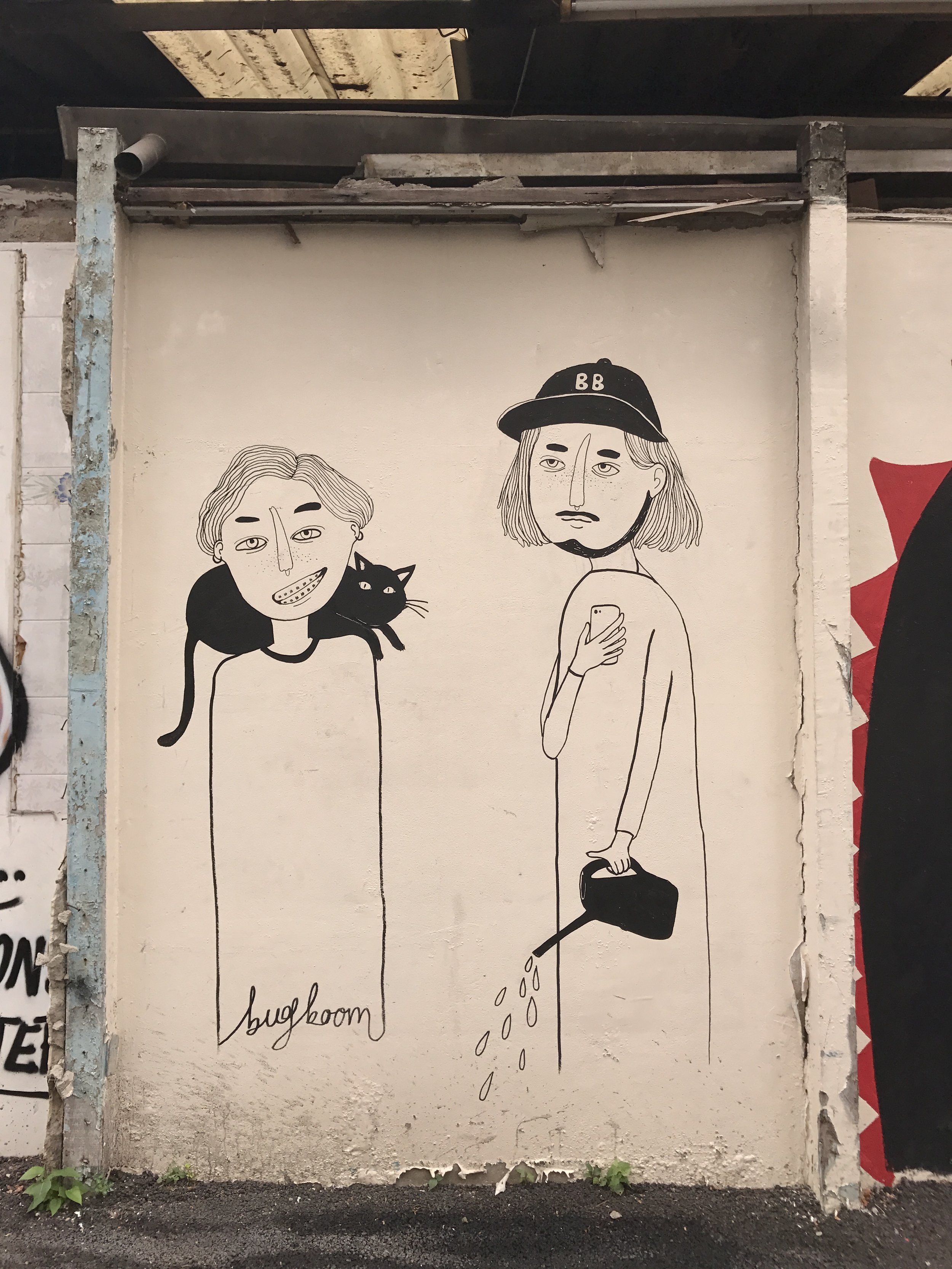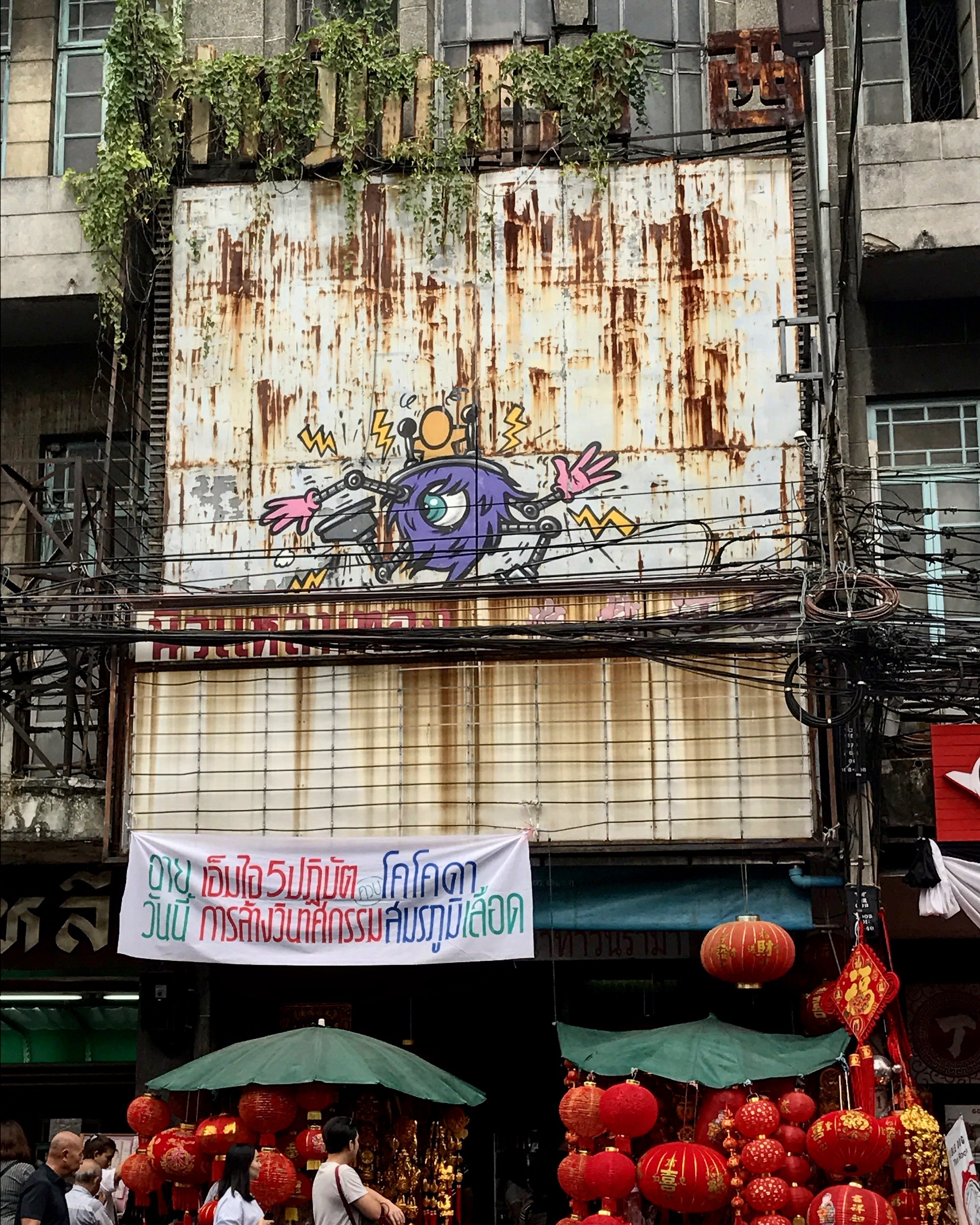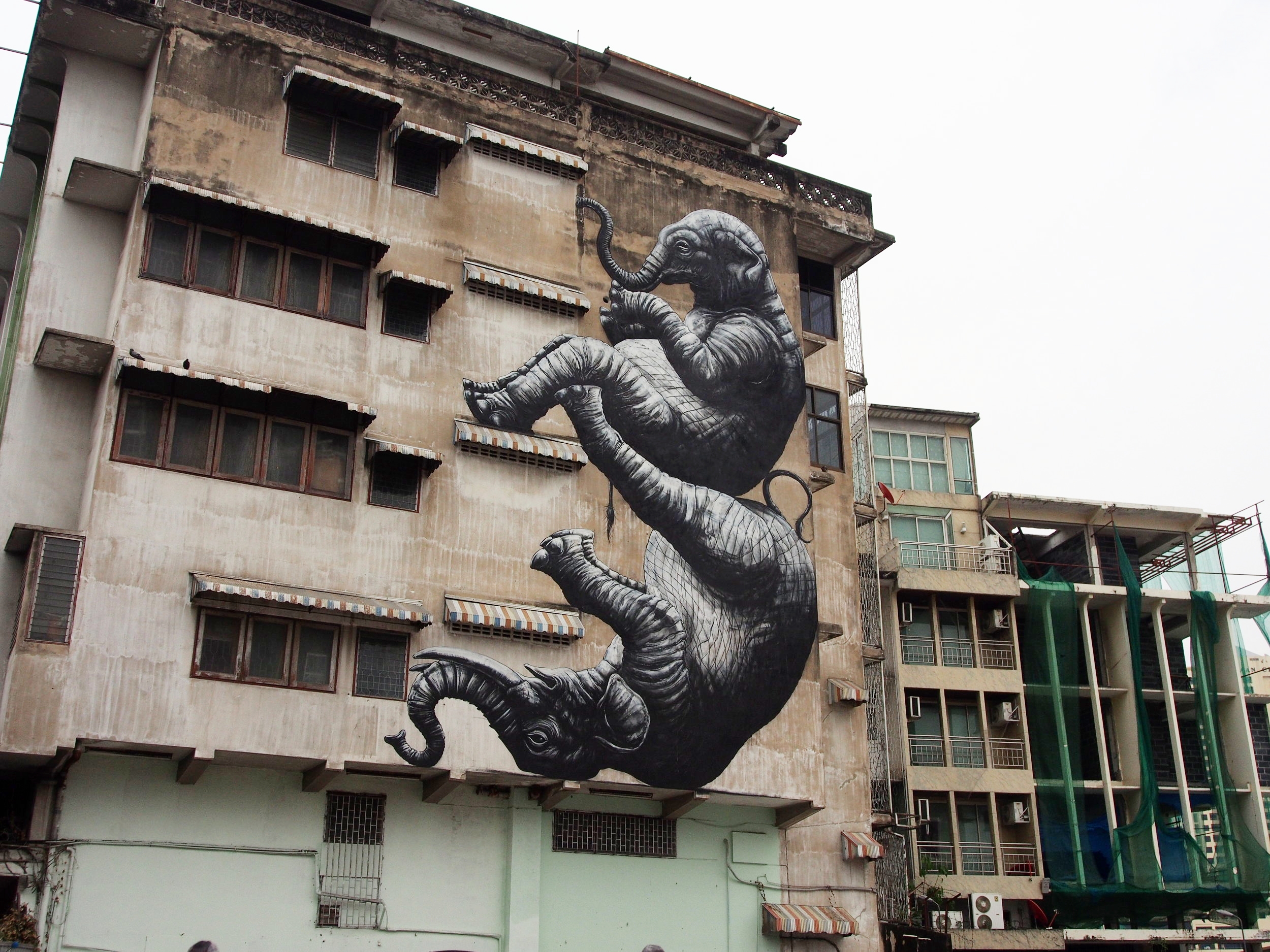The palest ink is better than the best memory. - Chinese proverb
Southeast Asian cultures have a long history of highly ornate and intricate craftsmanship and arts. From the glittering and colorful temples of Hong Kong and Bangkok, to the intricately carved ruins of the city of Angkor Wat, it is easy to see the long history and value artistic expression holds; it is intricately woven into everyday life, past and present. The following is a brief report back from a 3-week trip to SE Asia, documenting the street art and graffiti art found in Hong Kong China, Siem Reap Cambodia, Phuket, Phi Phi, and Bangkok Thailand.
Hong Kong
Few other cities in the world compare to Hong Kong on its sheer size, beauty, and economic vibrancy. Classified as a “mega city,” Hong Kong currently has a population of over 7 million. It is a vertical and dense city, constrained by a natural urban growth boundary, surrounded by the sea and mountains. Its public transportation is world-class, whizzing you around from place to place, with wait times mostly less than 2 minutes.
In 1997, sovereignty of Hong Kong was transferred to the China, ending over one and a half centuries of British rule. Hong Kong became a Special Administrative Region of China with a high degree of autonomy in all matters except foreign affairs and defense. In 2014, a student-led series of sit-in street protests, often called the Umbrella Revolution rocked the streets of Hong Kong and produced an impressive array of street art and graffiti campaigns. The protests began after the People's Congress issued a decision regarding proposed reforms to the Hong Kong electoral system. The decision was widely seen to be highly restrictive, and equivalent to the Chinese Communist Party's pre-screening of the candidates for the leader of Hong Kong.
Searching online, in social media, and on the city streets of many of the central city neighborhoods, it is quickly apparent that the street art and graffiti art is mainly concentrated in one neighborhood, Sheung Wan. Sheung Wan is known for its famous Hollywood Road, the second road to be built and the first to be completed when the colony of Hong Kong was founded. Hollywood is lined with exquisite Asian antique dealers, galleries, and flea markets, this area also showcases a variety of public expression on its alleyway walls.
HKWalls
The group HKwalls organized many of Hong Kong’s prominent murals throughout the city. Founded in 2014, HK Wall is a non-profit organization that aims to create opportunities for local and international artists to showcase their talent through street art and culture. HKwalls hold an annual street art festival during Hong Kong’s art month in March, as well as year-round programming that focuses on artist career building and arts awareness. The festival partners include Vans and Montana and have featured big-name street artists like Vhils, Peeta, Above, and Okuda.
The 2016 festival focused on the Kowloon neighborhood or Sham Shui Po and included 40 artists from 17 different countries, painting 40 murals. An impressive 42 workshops were also provided in March by HKwalls and House of Vans.
There is also a strong stencil scene with several artists seemingly at work. Unlike other cities, there doesn’t seem to be as much tagging occurring, and surprisingly little obvious evidence of buff. Perhaps this is due to the more conservative culture, or the fact that one neighborhood is concentrating the art, so people know that painting there will likely produce more lasting pieces.
Siem Reap, Cambodia
Siem Reap is Cambodia’s second largest city with a population a little over 200 thousand. It is the gateway “resort town” for visitors seeking to explore the ancient ruins of Angkor Wat. Angkor Wat is the largest religious monument in the world, with the site measuring over 400 acres. It was originally constructed as a Hindu temple of god Vishnu for the Khmer Empire, and gradually transformed into a Buddhist temple toward the end of the 12th century. Siem Reap is an emerging economy based mainly on tourism and has a large number of NGOs and other not-for profits organizations. Torn apart by war, famine, and still plagued with the horrific situation of landmines, Cambodia is a diamond in the rough, a city home to some of the kindness and strongest people.
Siem Reap did not have what you would traditional call street art or murals, but it did have a moderate amount of random graffiti, some of which was done by visitors. The worldwide graffiti culture has seemingly not reached Siem Reap yet. With no evidence of buffing, the existing graffiti appeared in alleyways off main streets, easily spotted by the prominent mode of transportation, a Tuk Tuk or motorbike.
Surprisingly at least two bars embraced a graffiti art theme, one of which even had a full half-pipe on the roof, proudly proclaiming “Cambodia” in bold wildstyle graffiti lettering. This bar is certainly a hotspot for both locals and visitors alike with 50-cent beers, live music, skateboarding, and pool tables.
Phuket, Thailand
The islands of Phuket and Phi Phi are home to some of the most pristine and exotic natural landscapes on the planet. Phuket is the hub, often just a stopping off place for island hopping, but if you stay a few days and visit the older parts of town, it is clear that it is home to a vibrant creative scene. The beautiful old Sino-Portuguese architecture in Phuket’s Old Town is burst with exquisite island colors. Phuket has several art galleries, local craft fairs, including a weekend Indy Market featuring local artisan goods, resale clothes, a variety of food and beer vendors, and live music, a cultural hot spot for island youth and tourists.
Phuket is not that big, so you can pretty easy wander around and find a lot of great street art fairly easily. General roads to transverse are Phang Nga, Thalang, and Ranong. A great guide and map can be found on this blog.
F.A.T. Phuket Mural Project
The city also has an urban arts initiative called F.A.T. Phuket (Food Art Old Town), that has organized 12 large-scale mural paintings, based on local food, culture and customs. Started in mid-2016, this initiative was between a well-known property developer and a local artist. Local artists and some of Thailand’s most famous street artists quite literally canvassed the streets and murals started popping up all over the place. To see murals of this size and quality in a town the size of Phuket is a delightful surprise. Rising above its busting markets and perfectly playing with its textured walls, bold street art has certainly made its mark on this city.
While tourists’ flock to these sites to take photos, not everyone on the island appreciates the new style of art appearing on the walls. Some of So Phuket’s murals in the historic Old Town District have stirred up controversy amongst more traditional locals. Newspaper articles covered the situation, even conducting a public opinion polls to find out what people felt about and wanted to see happen with the new art. One mural by famed Bangkok artist AlexFace was eventually buffed based the public survey.
Ko Phi Phi, Thailand
On the small island of Phi Phi off the coast of Phuket, the central part of the island is notorious for its backpacking and party scene. Here you will find an impressive sticker art display on many of the poles and pathways. There are no cars or motorbikes on the island, making it very pedestrian friendly and localized. Although there are not any large-scale murals here, graffiti can be found in the alleyways (like at tattoo shops) and along popular tourist hiking pathways.
Bangkok, Thailand
The sprawling metropolis of Bangkok is home to over 6 million people, with the official city limits covering over 600 square miles. Bangkok is an extreme example of a “primate city,” because its huge population significantly dwarfs Thailand's other urban centers. Stretching along the Chao Phraya River, this was a central port city, between the ancient eastern and western worlds. Bangkok’s urban development has allowed for many of the older buildings and sections of town to remain. Expanding over such distances, locals and tourists mainly rely on cars, taxis and tuk tuks to get around, as Bangkok’s public transit system is still in its infancy. Bangkok is famous for its food, with an amazing array of street vendors and restaurants serving up some of the most tantalizing and complex flavors; all with 5-star quality for ½-star price.
Bangkok had an impressive array of high-quality mural work, along with local street art and a very active graffiti scene. Walking over 50 miles in 3 days, finding street art in Bangkok proved to be a bit more than in some cities. Impressive pockets of graffiti art can often be found along the cities many canals. While graffiti art is spread throughout the city, the Saen Saep Canal, Charoen Krung Road, Bang Rak, and Klong San were particular hot spots in 2017.
Folk Art in the Trok San Chao Rong Kueak Alleyway
In the quiet residential enclave of Talad Noi, Trok San Chao Rong Kueak alleyway is known for its historic folk art. In the meandering alleys and passageways, you will find interesting examples of local art, amongst these well used communal public spaces.
Bangkok Art & Culture Centre
The Bangkok Art & Culture Centre (BACC) is a contemporary arts facility in mid-town. BACC aims to create a meeting place for artists, to provide cultural programs for the community, giving importance to cultural continuity from past to contemporary. It aims to open new grounds for cultural dialogue, networking, and create new cultural resources from both the public and the private sectors. To do this they provide programs for art, music, theatre, film, design, and cultural/educational. What is particularly unique about BACC, is that the facility also houses multiple museums, local pop-up stores (think Tender Loving Empire), artist studios, spray-paint distributors, coffee shops, restaurants, art bookstores and public libraries. BACC provides an amazing hub for artists and the larger community.
BUKRUK Urban Art Festival
Founded in 2013, the BUKRUK Urban Art Festival has organized many of the larger scale murals on Bangkok’s walls, hosting art by international artists such as Nychos, Aryz, and ROA. The first edition gathered successfully 30 artists from Thailand and Europe, bringing artists from over 10 countries together to paint. This 10-day project features murals, art exhibits, artist talks, animations, music festivals, , mapping projections and workshops. Interestingly each year focus on partnerships with particular parts of the world. For example, in 2013 the festival focuses on Thai-Europe. In 2016, it boarded to Asia-Europe connections.
Chalermla Public Park
A notable place to view street art is in the Chalermla Public Park. The Bangkok Metropolitan Administration has revamped this overgrown, rubble-filed abandoned space over the course of 2 months in 2015. The walls surrounding the park host impressive large murals, local and regional art along with graffiti. Complete with guerilla gardening style plantings, this park with its edginess was an impressive example of adaptive reuse that neighborhood and local kids obviously loved. A city spokesperson said that “People mostly come to use the park in the mornings and evenings, jogging or having picnics. Small children run around.” When asked how they feel about graffiti they said, “We have no problem with that graffiti. I actually kind of like it. It makes the park more colorful and cheerful. Graffiti artists can come to paint here freely. The only thing that I ask is that they don’t damage my grass! It’s hard to grow and maintain.”
While cities in places like the United States would likely never fully embrace a rough park like this as an official city park, it does offer an excellent example of DIY style tactical urbanism and the intrinsic power of allowing for art to create vibrant cultural spaces that everyone with an open-mind and common-sense can safely enjoy.
